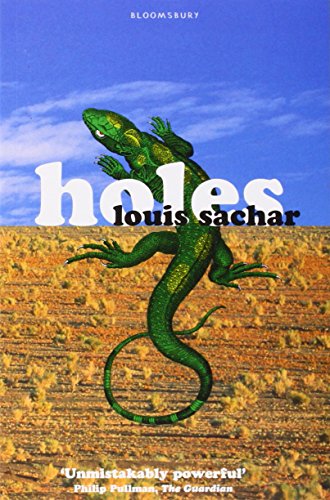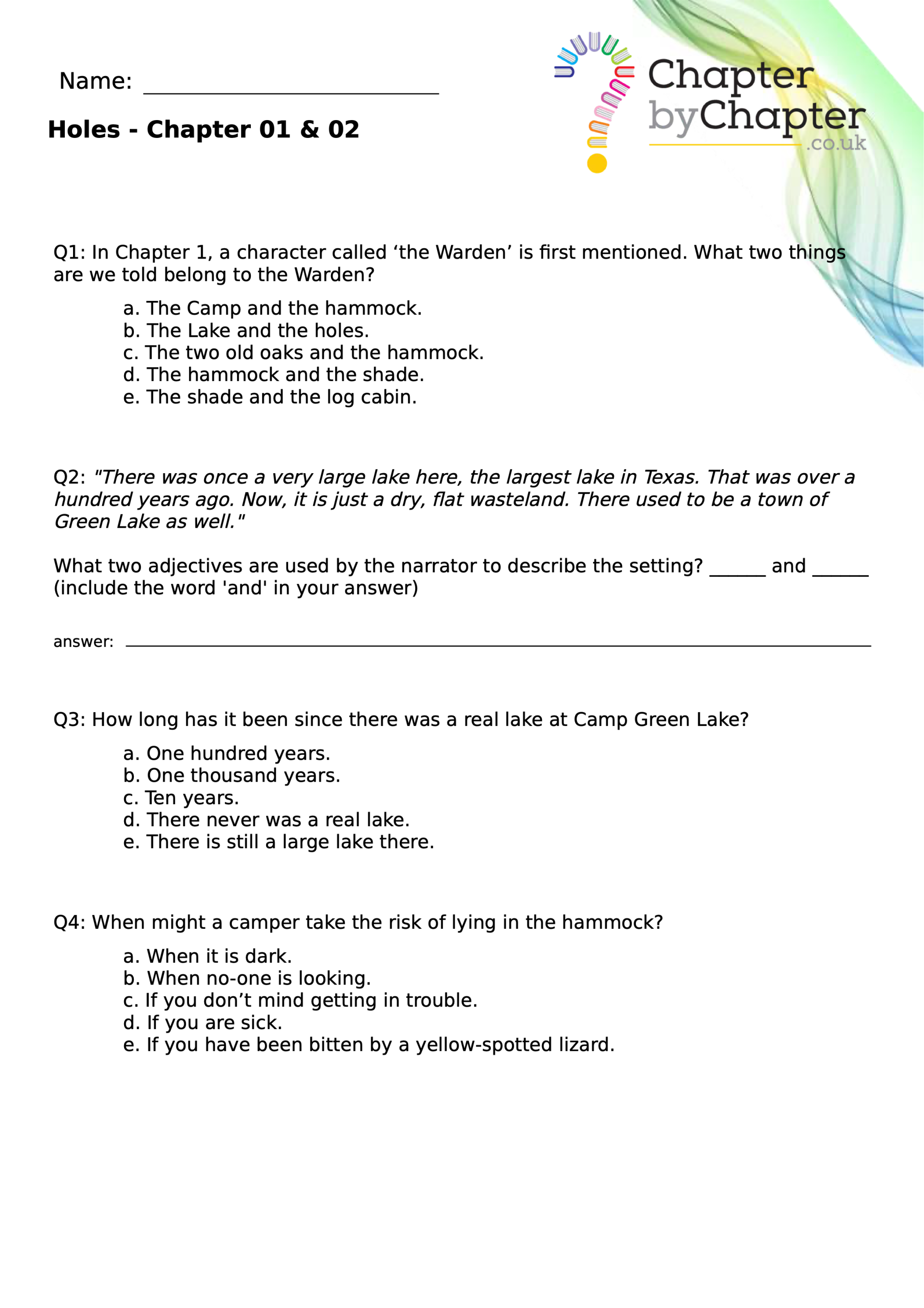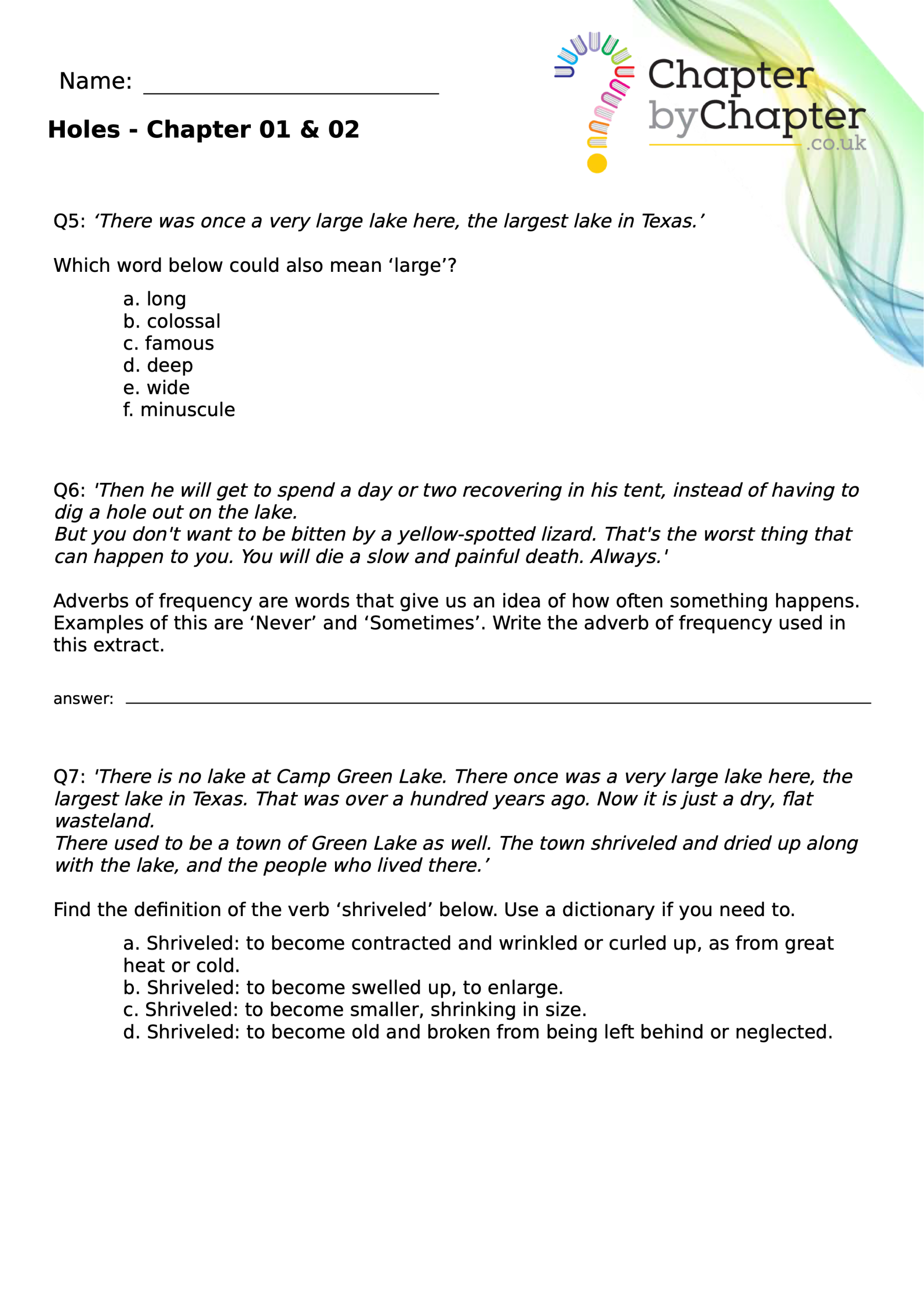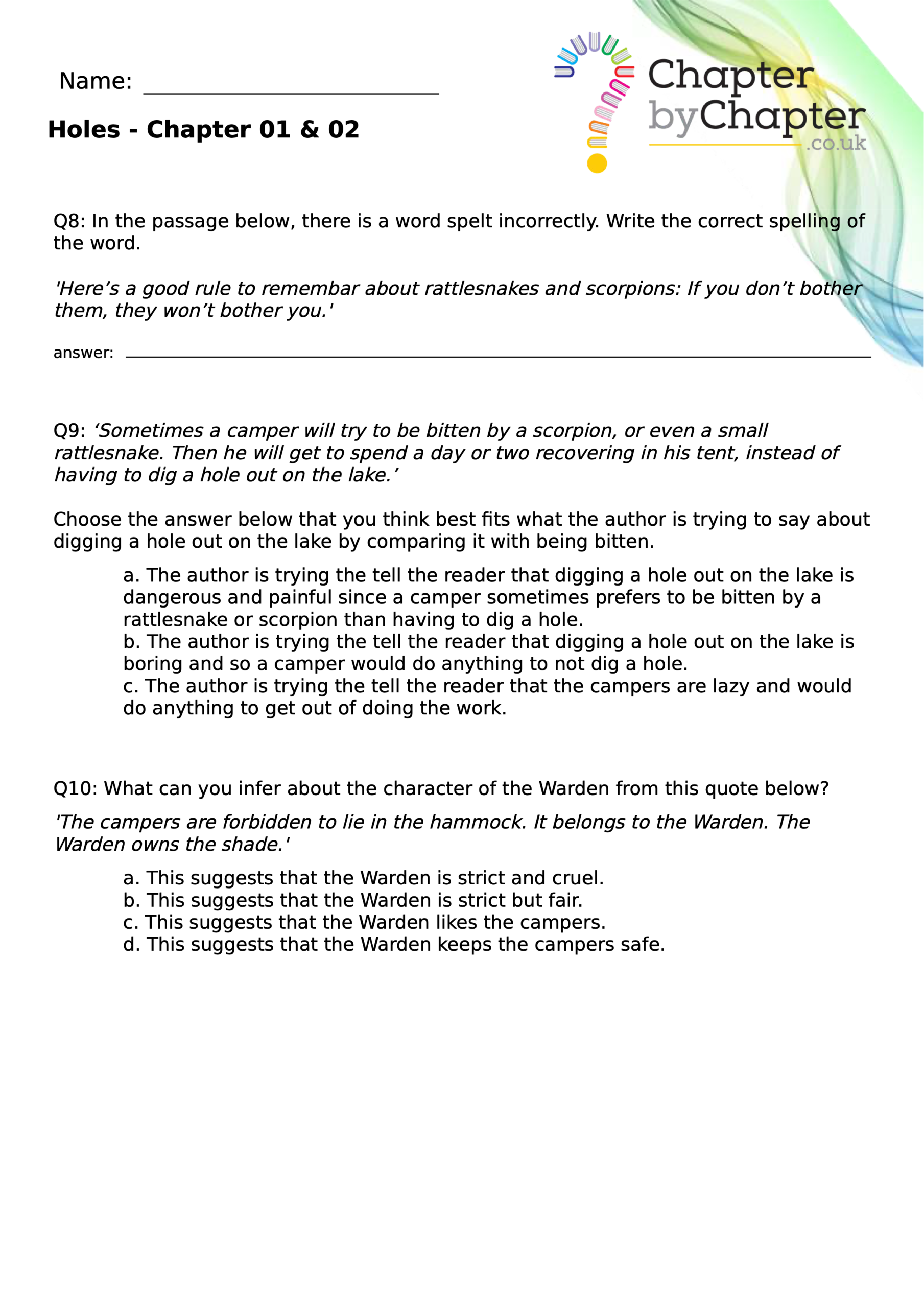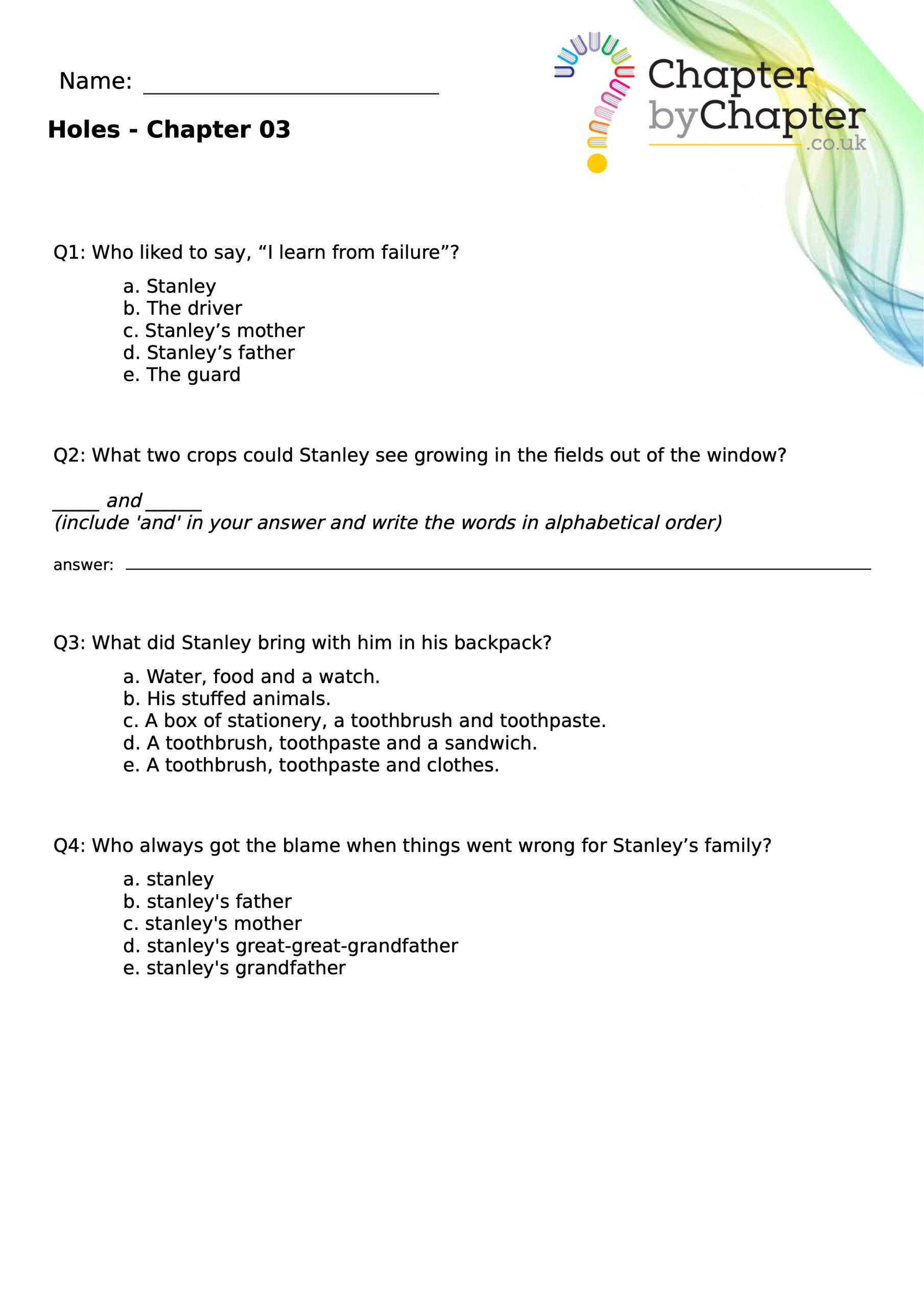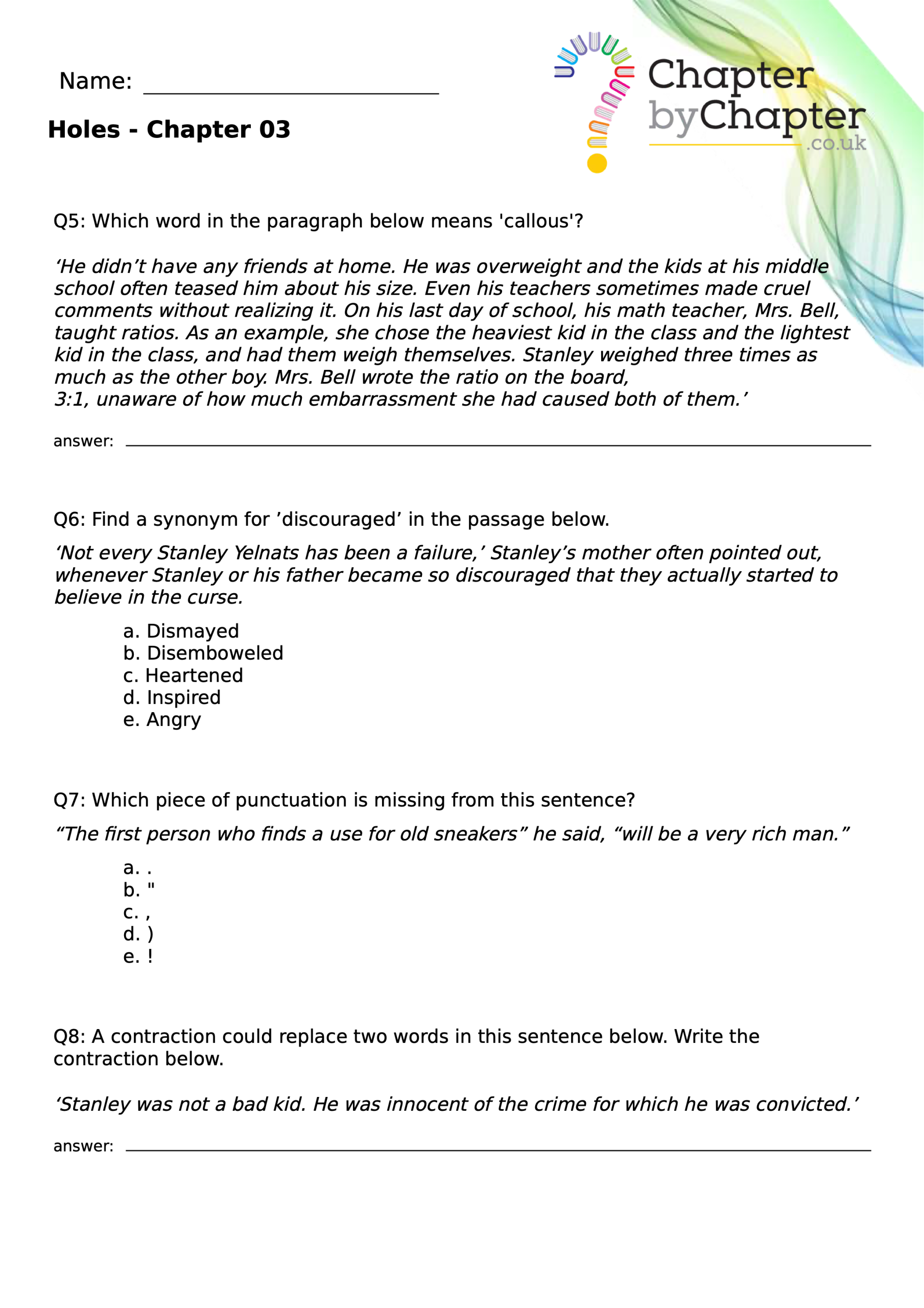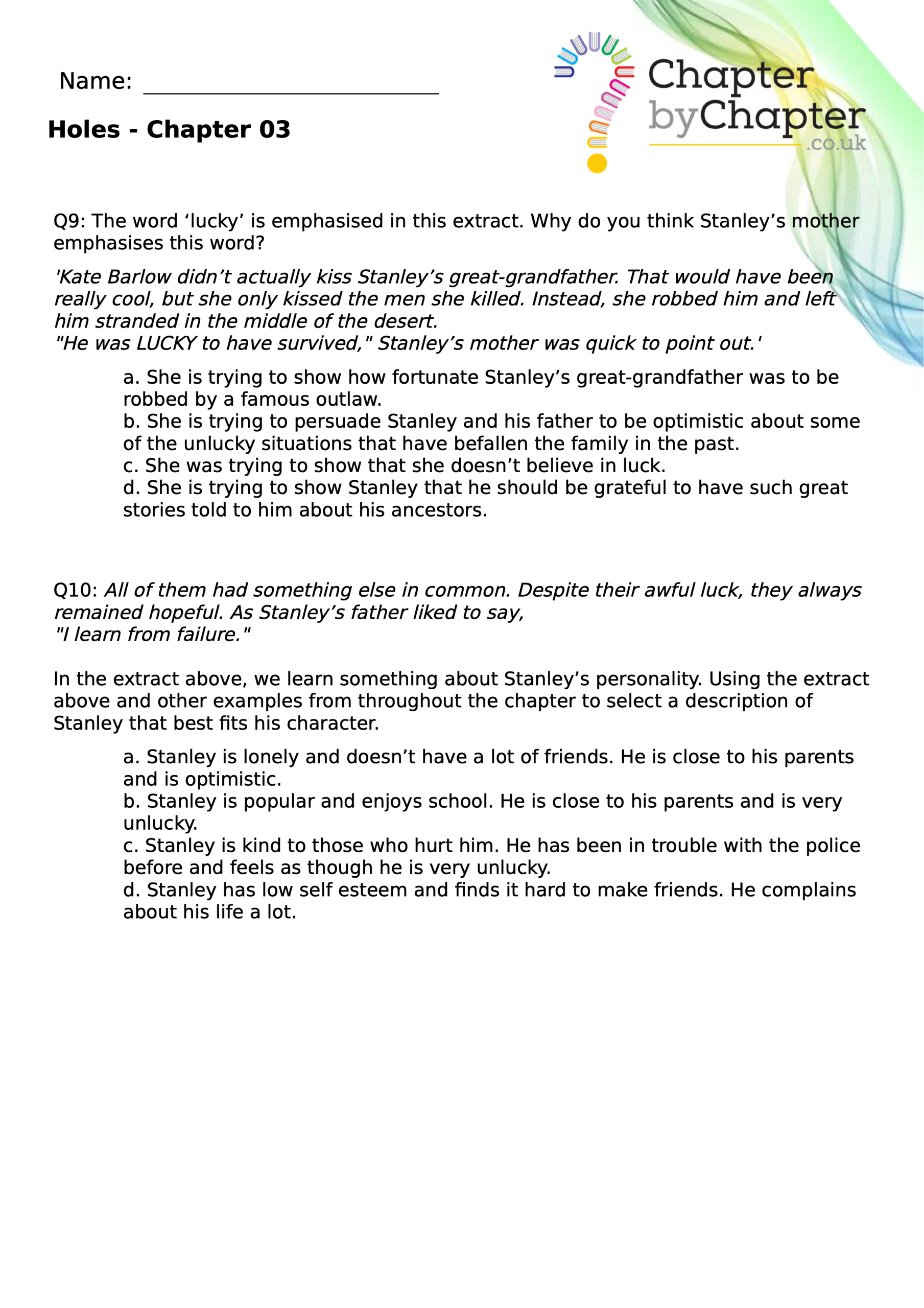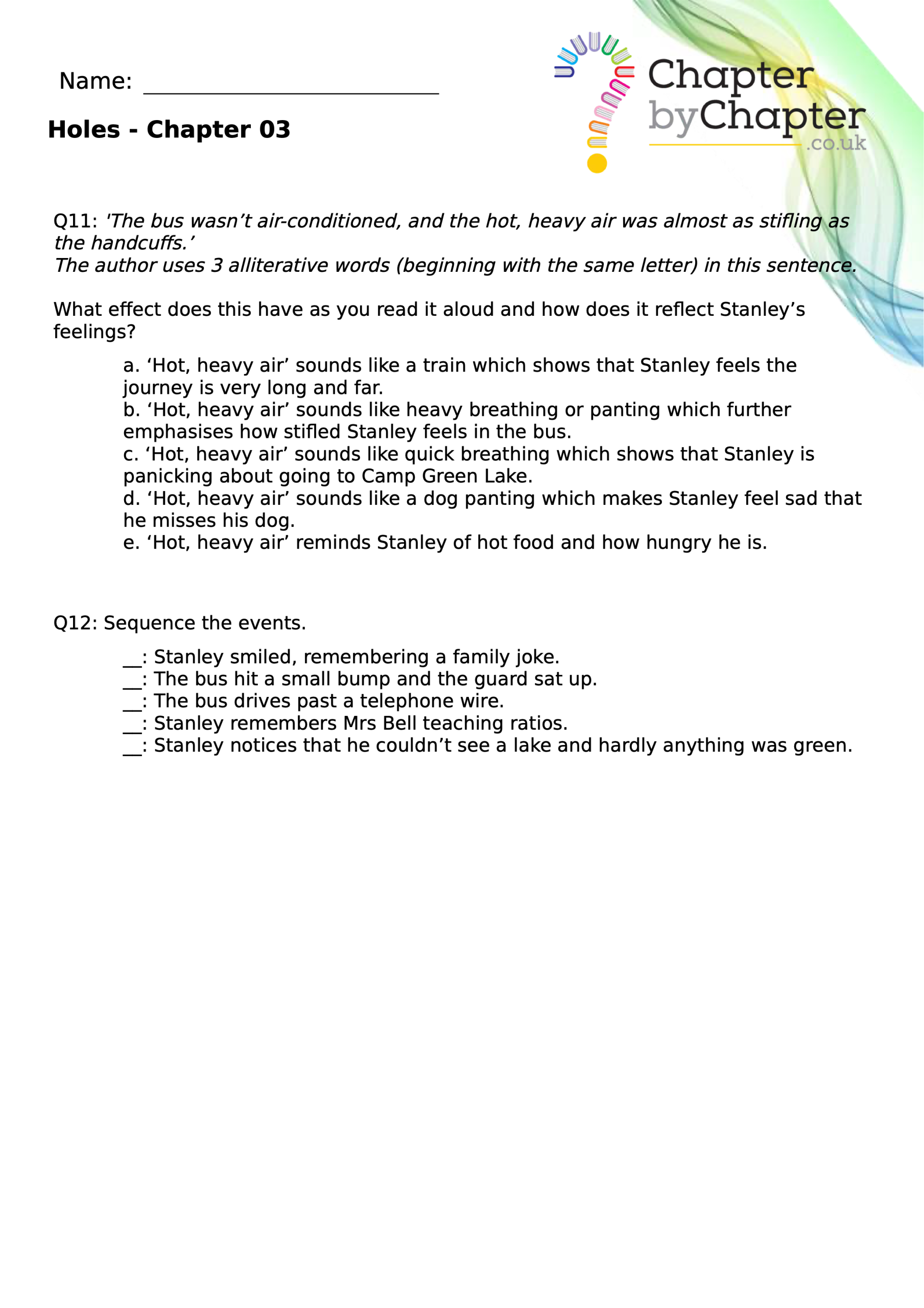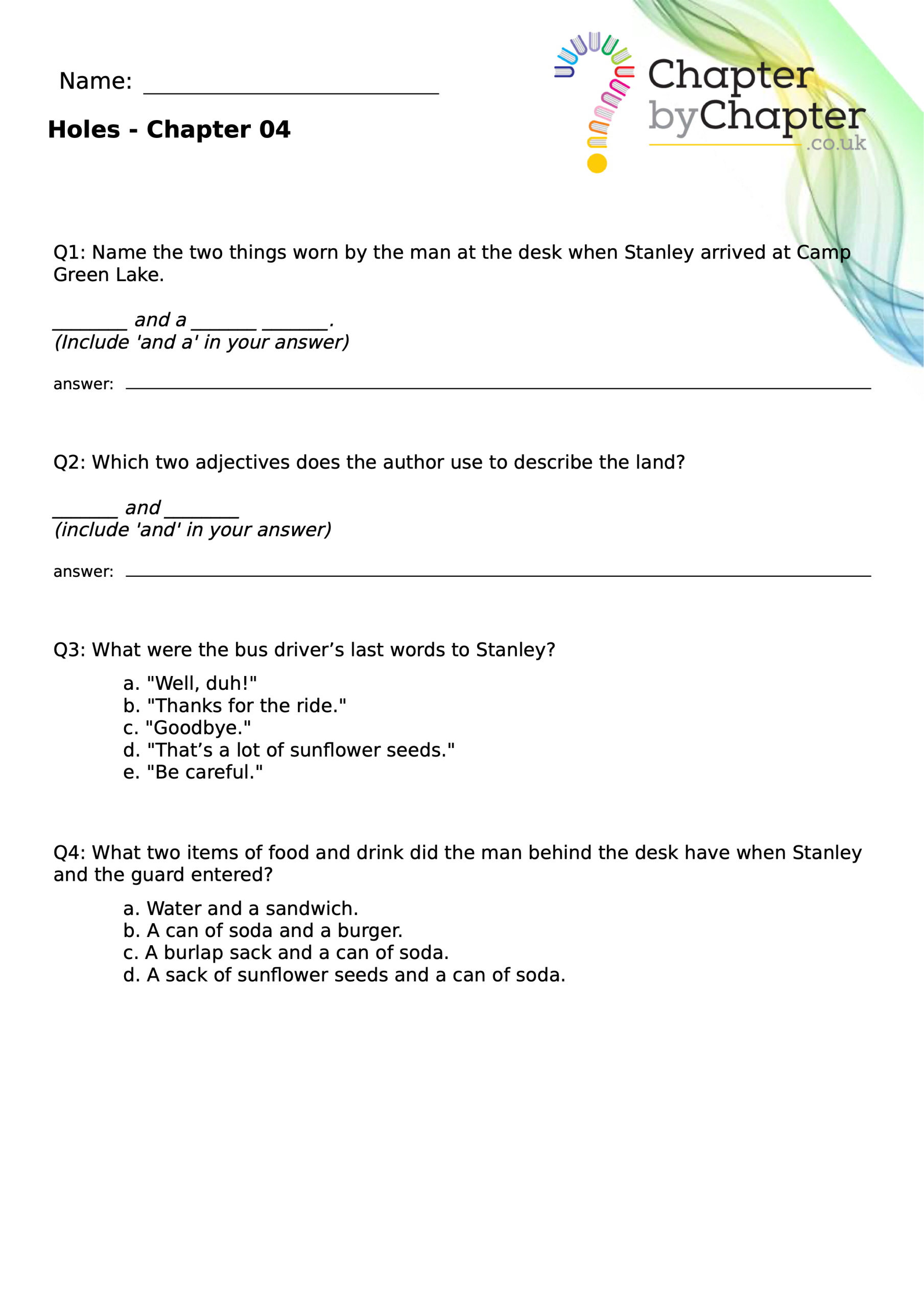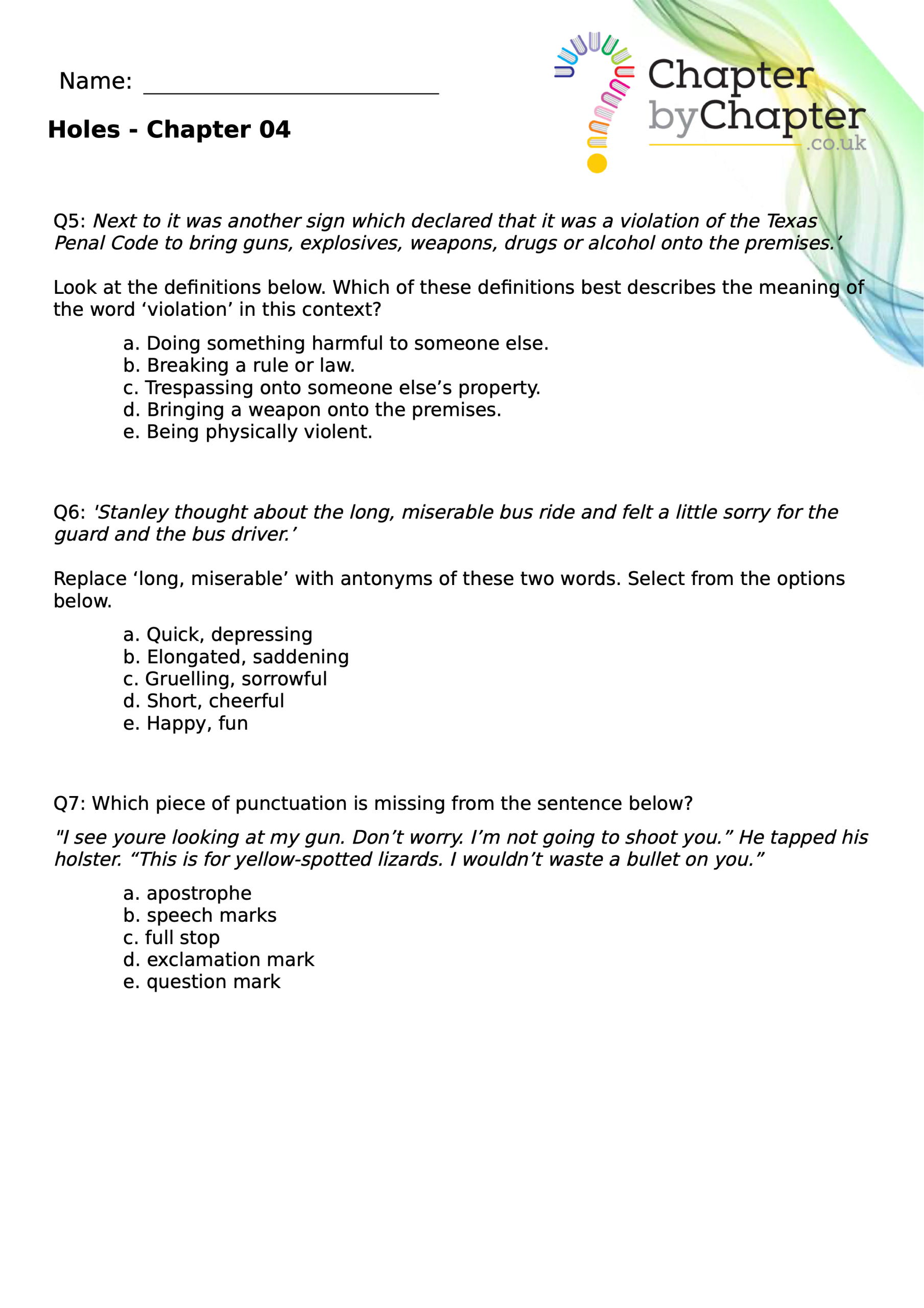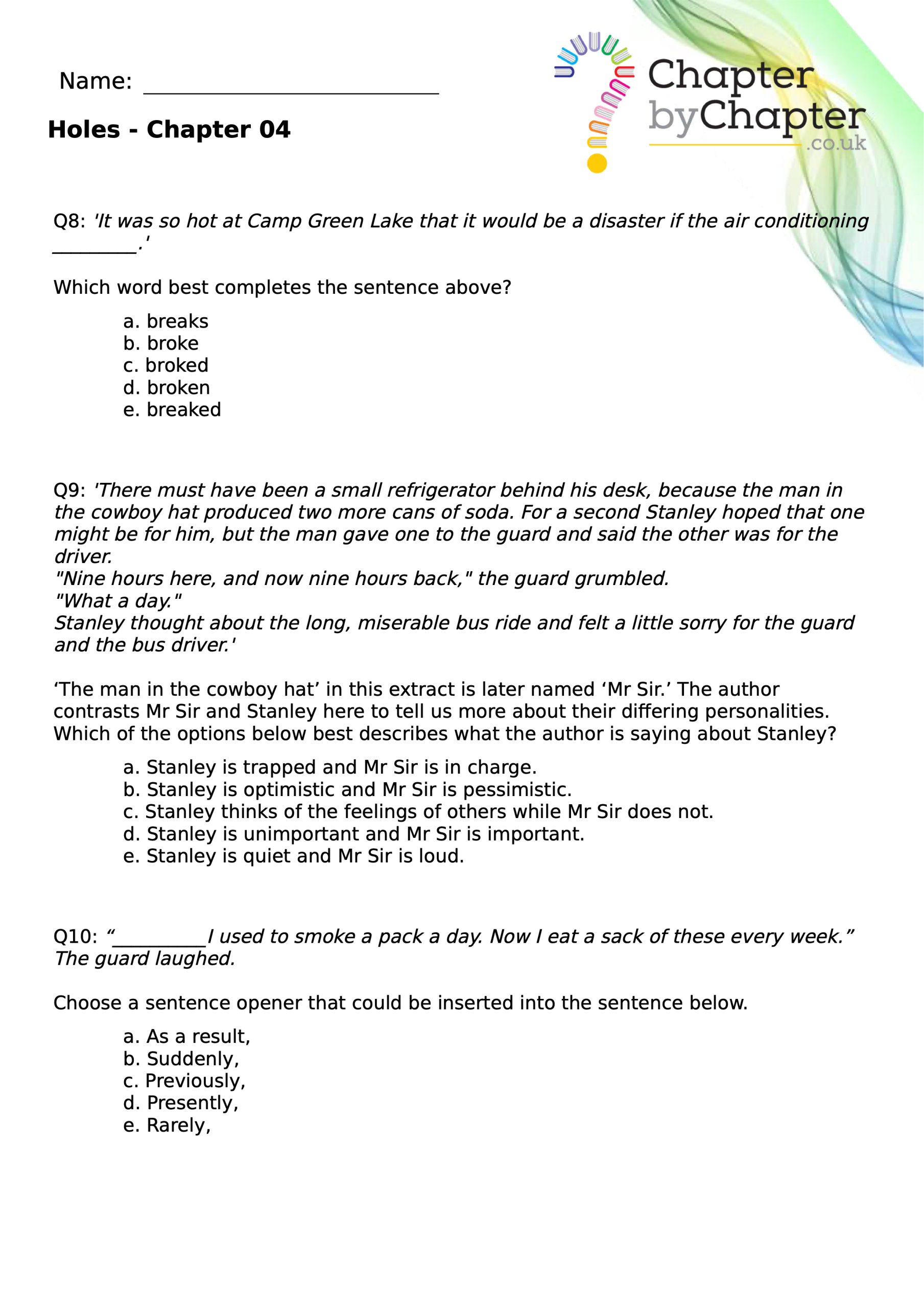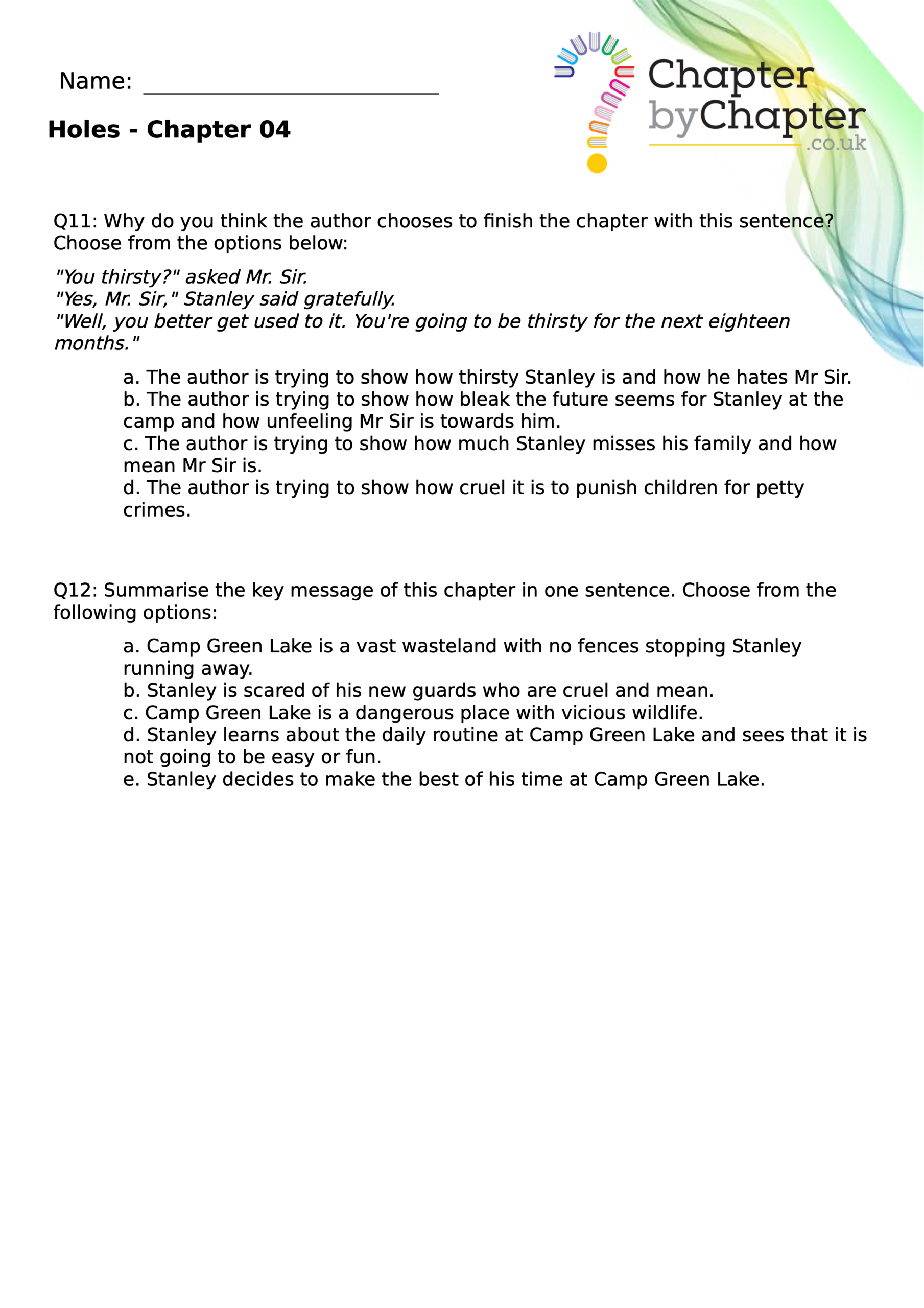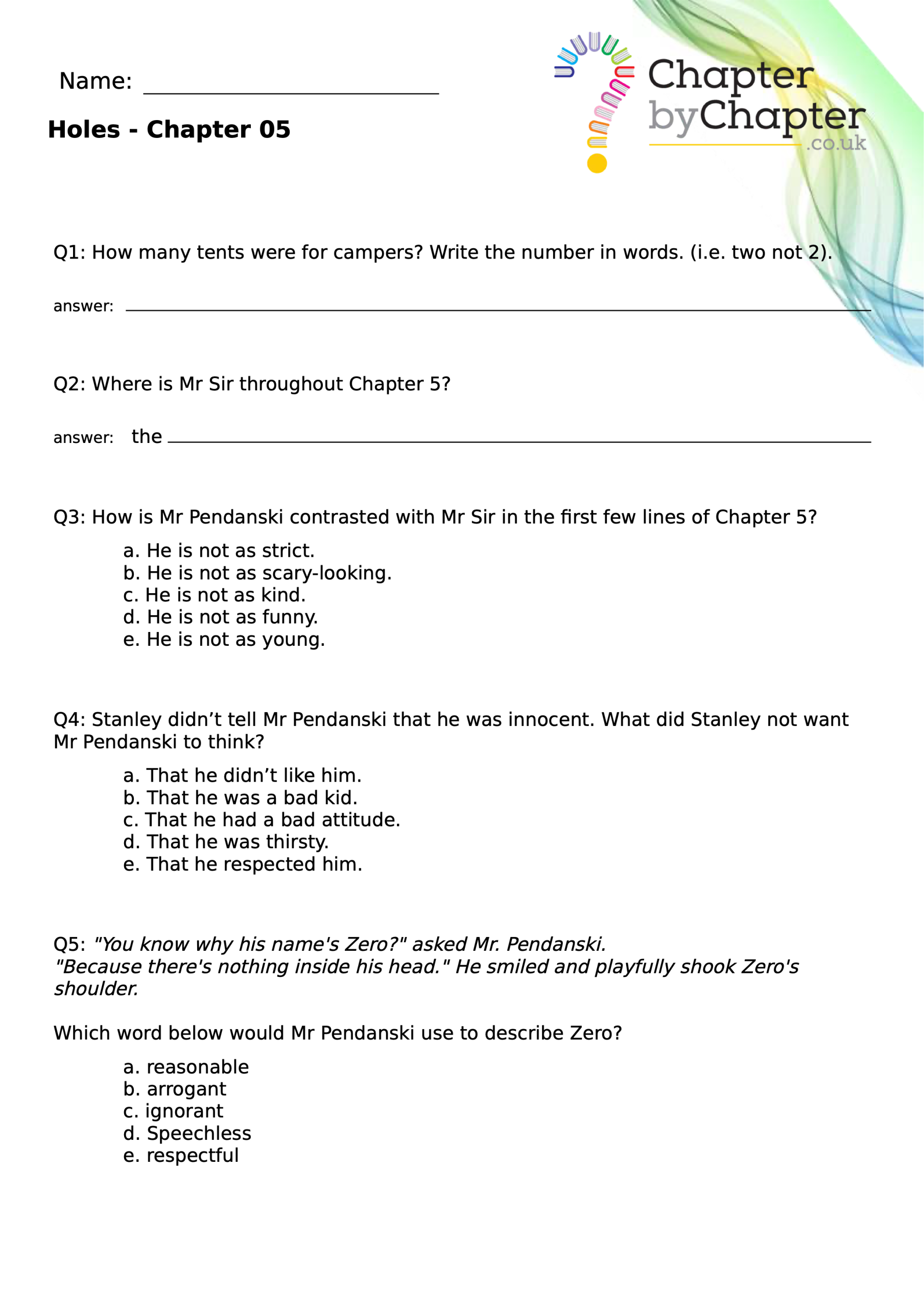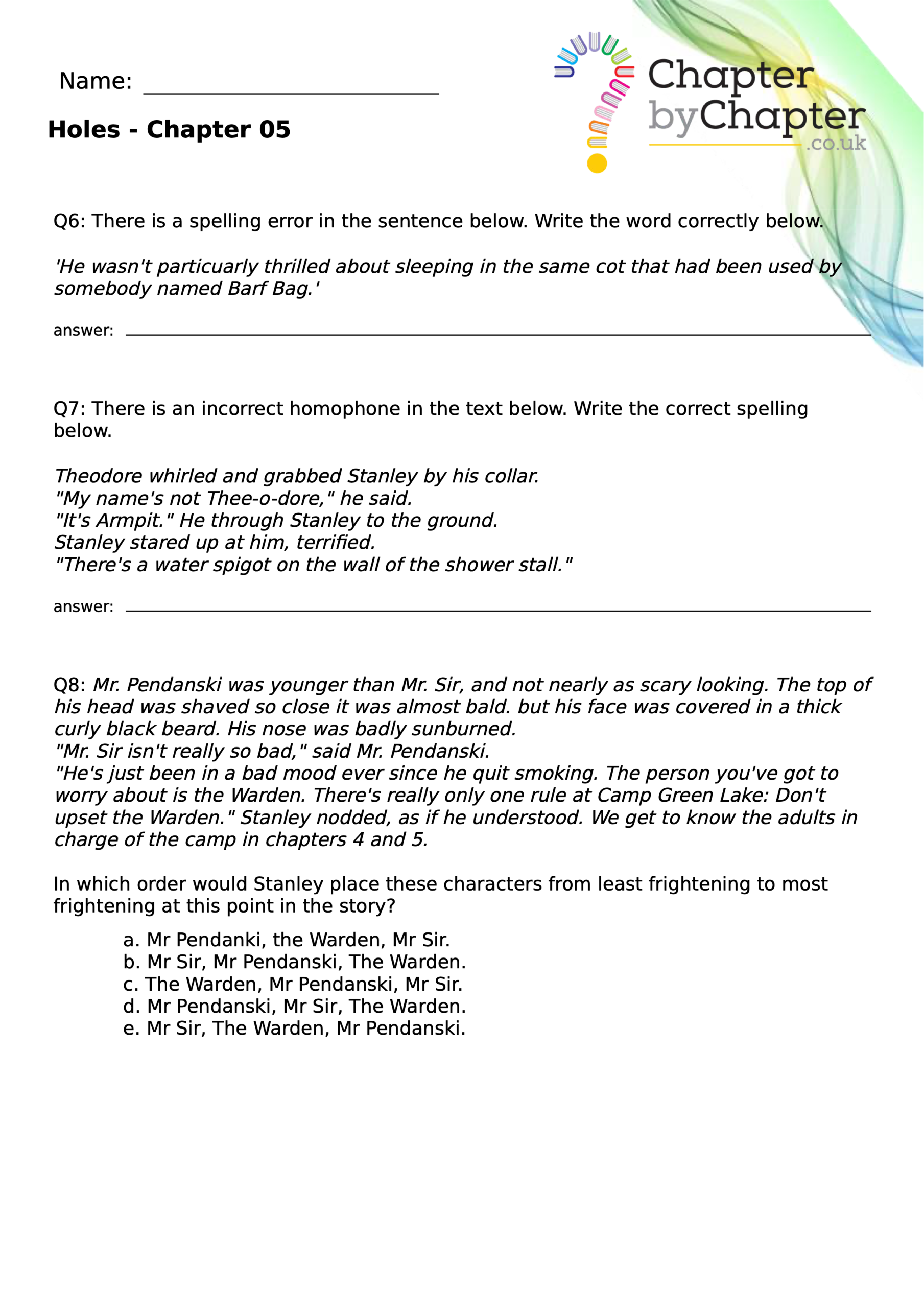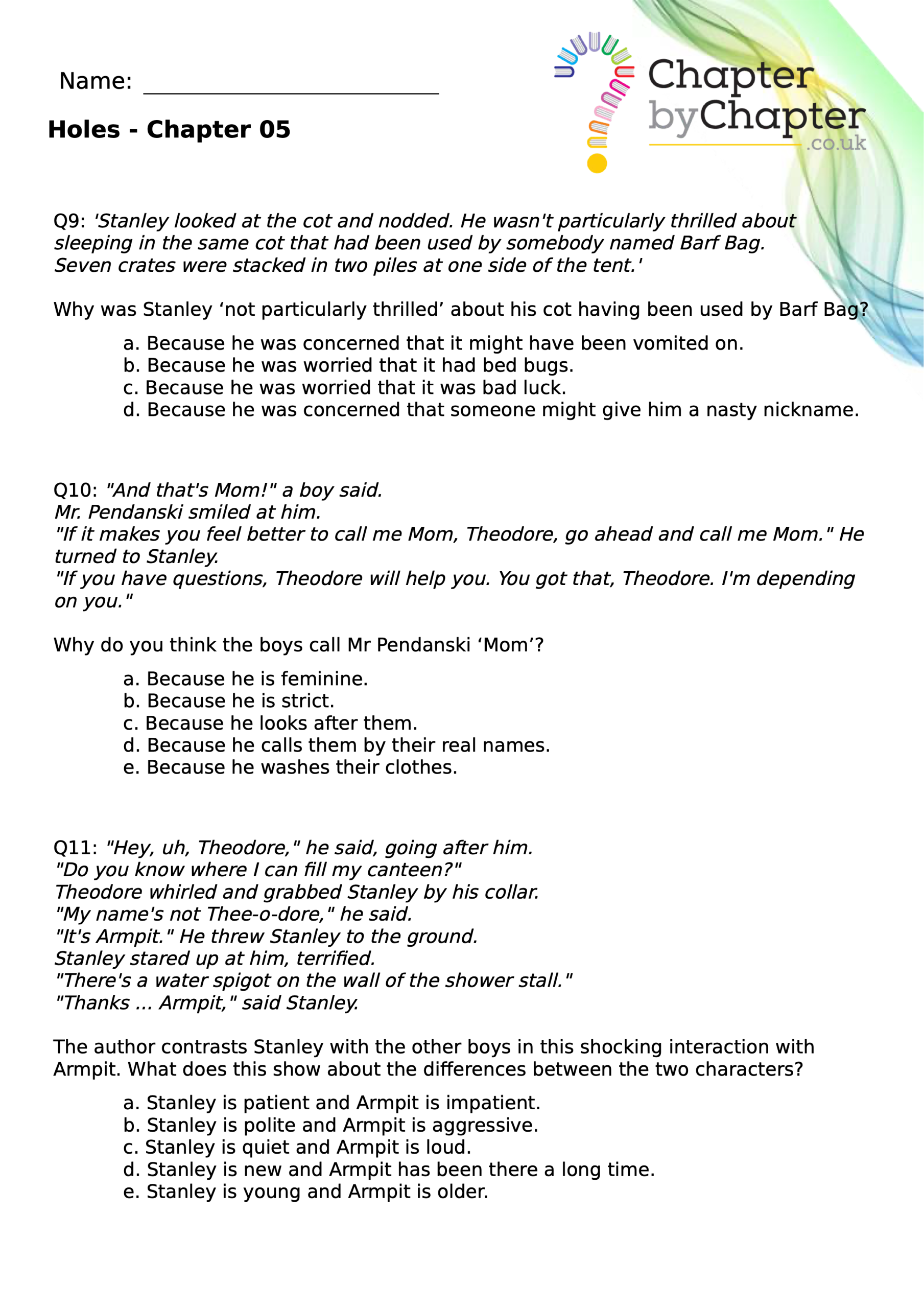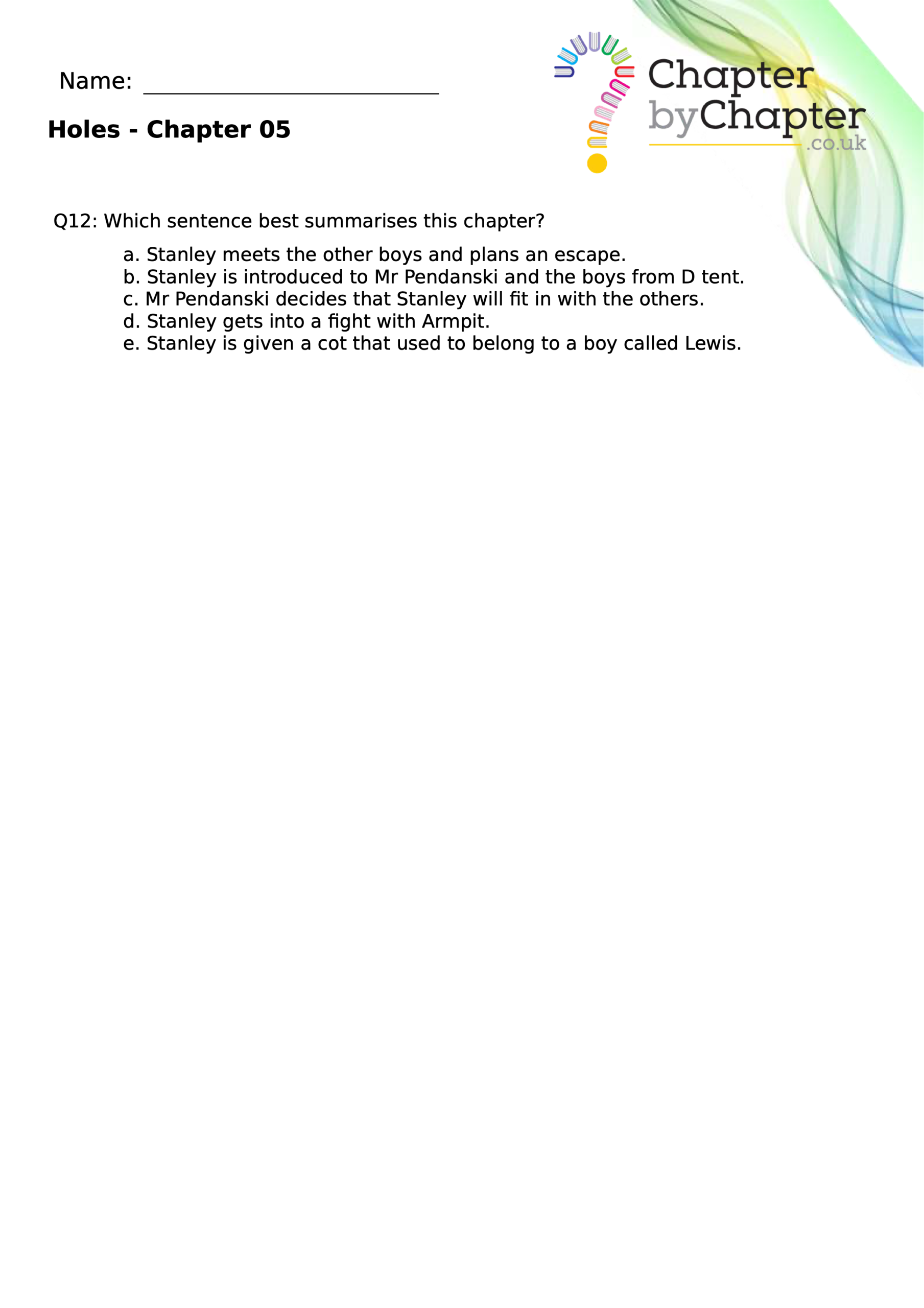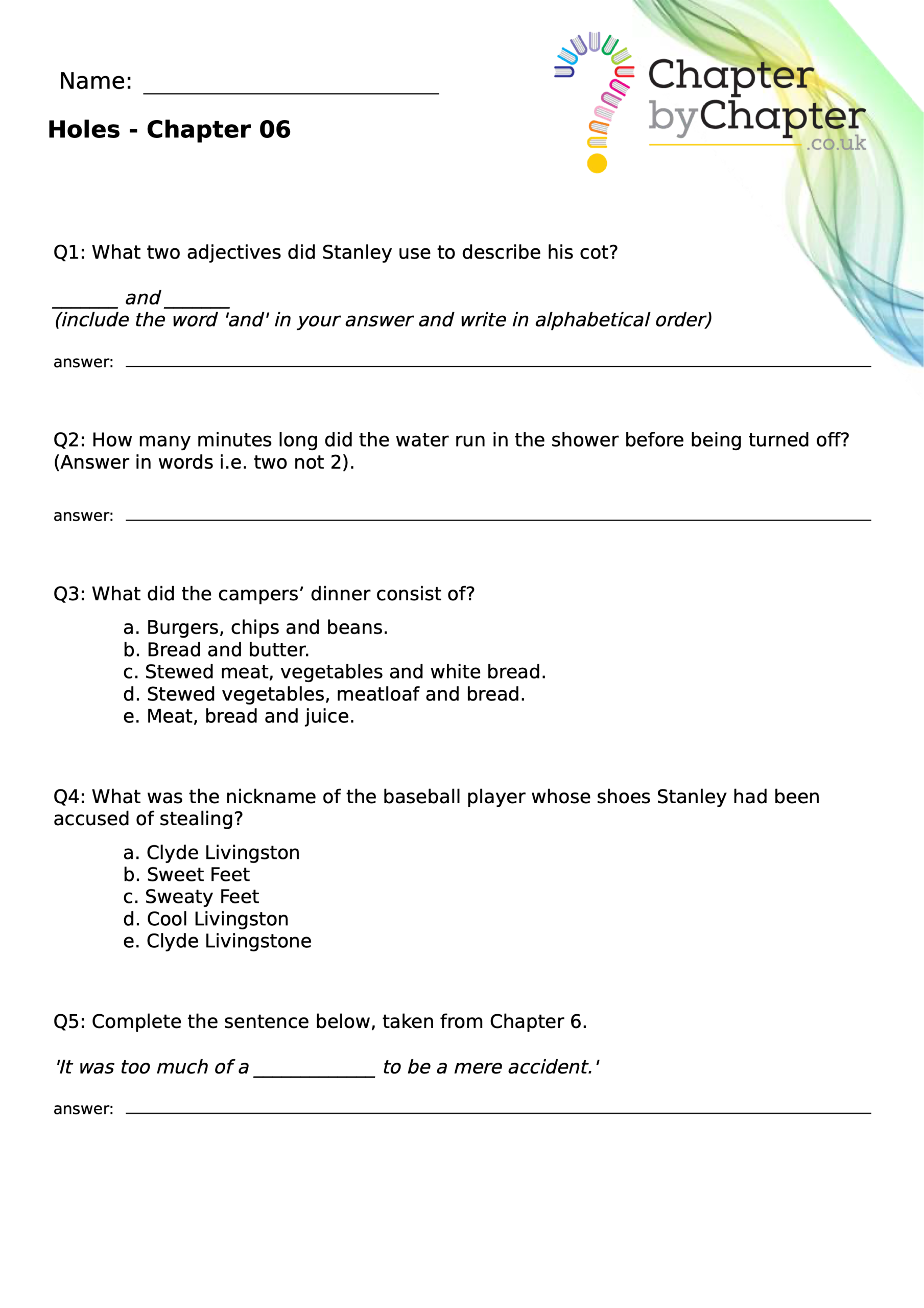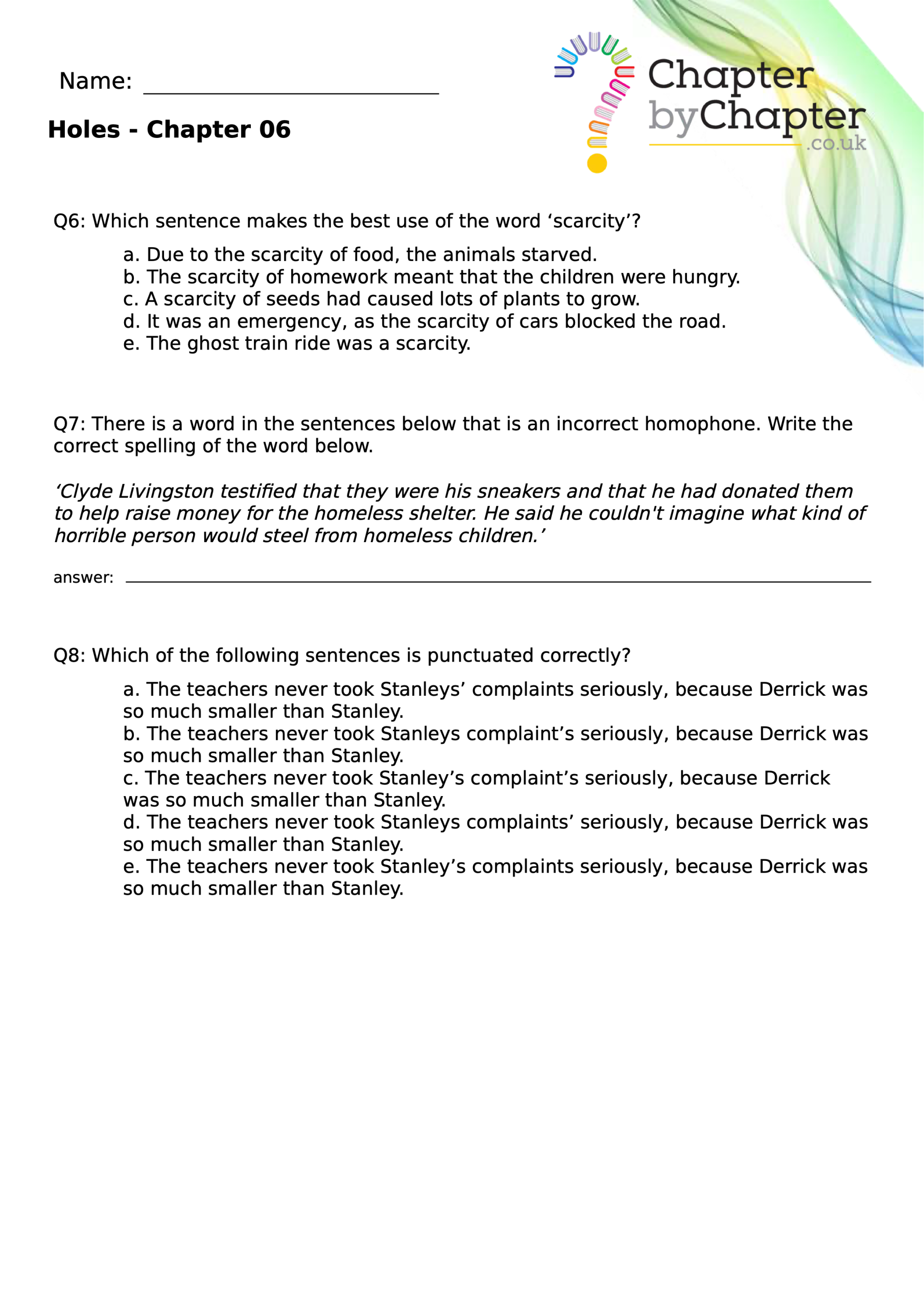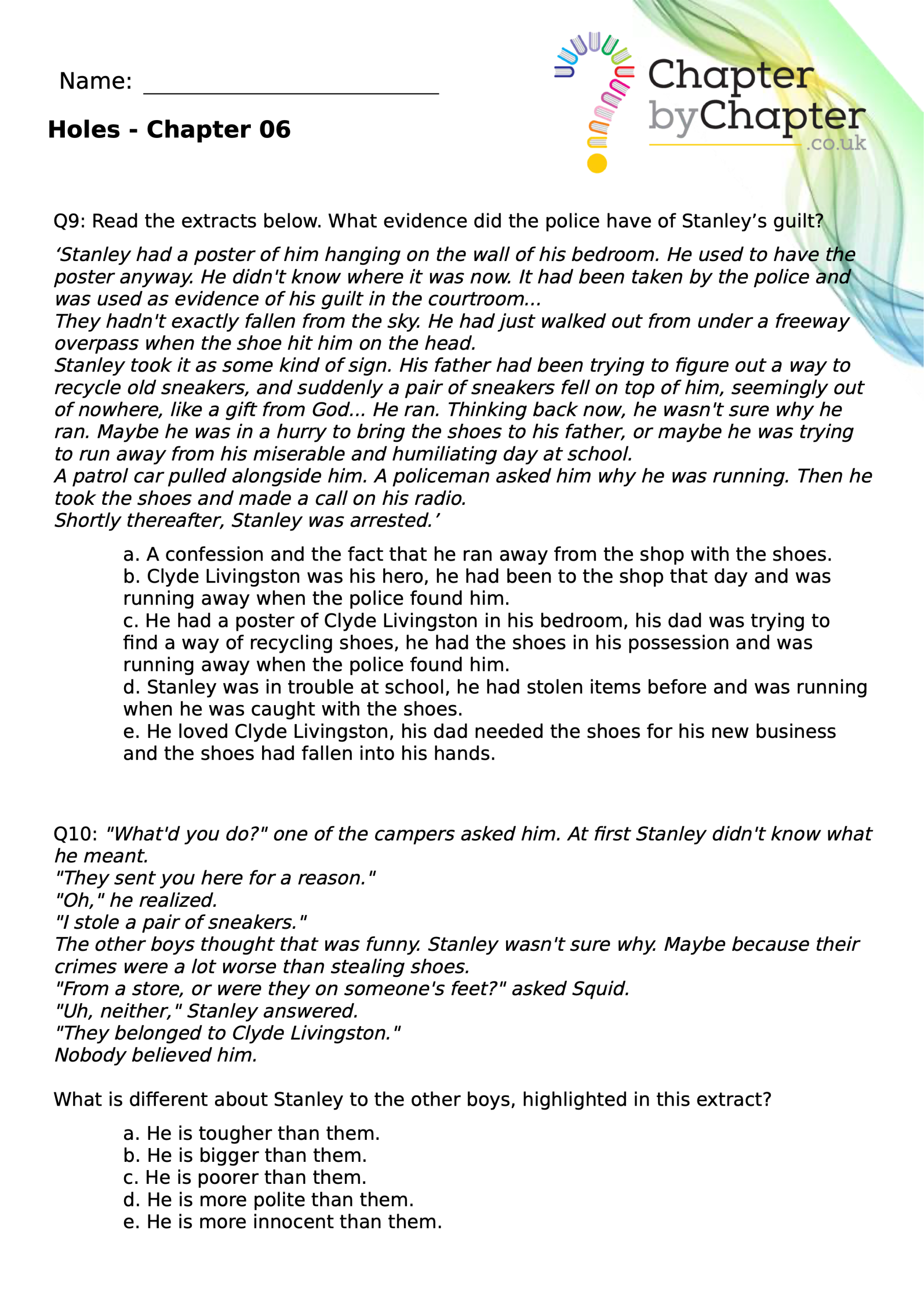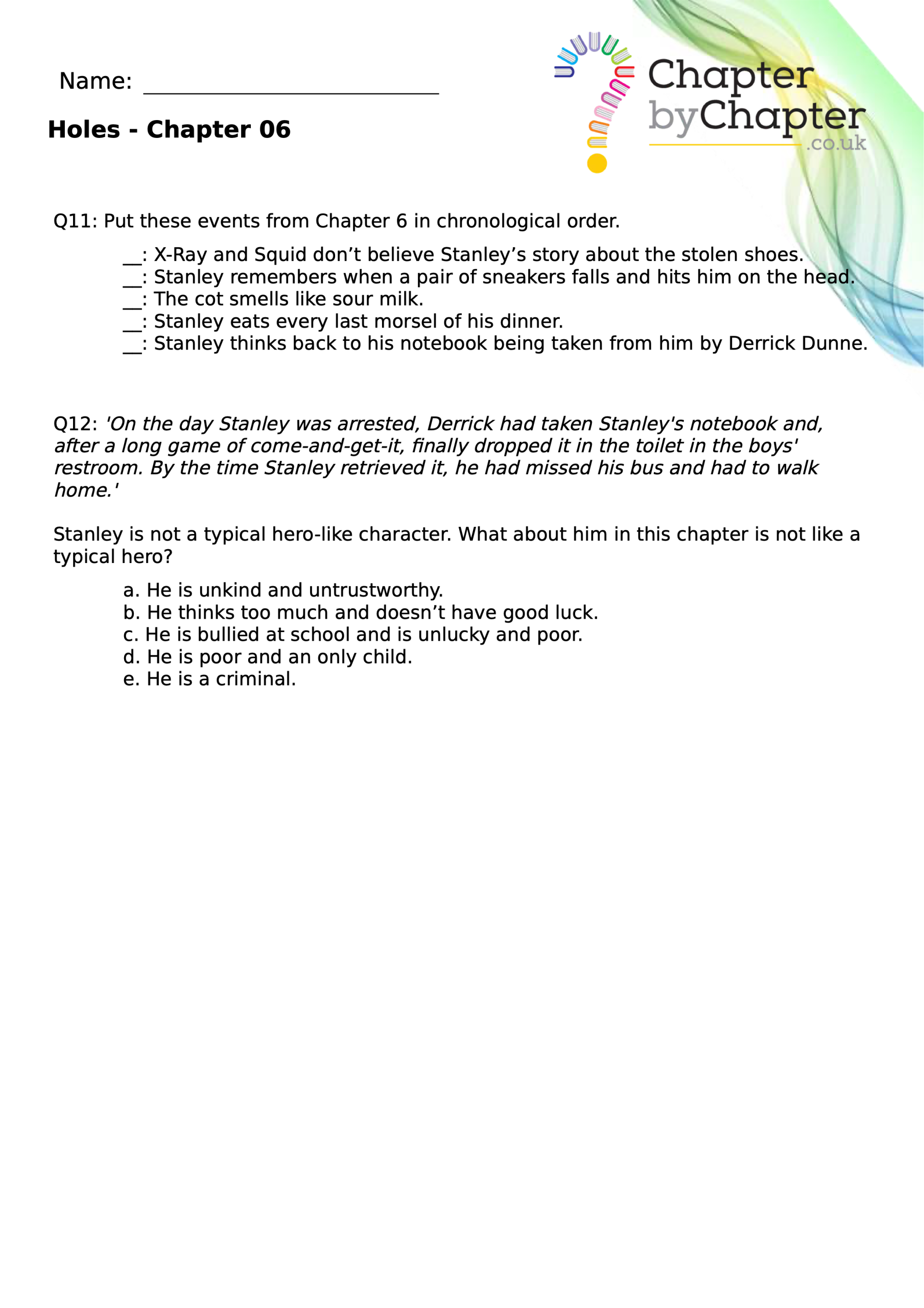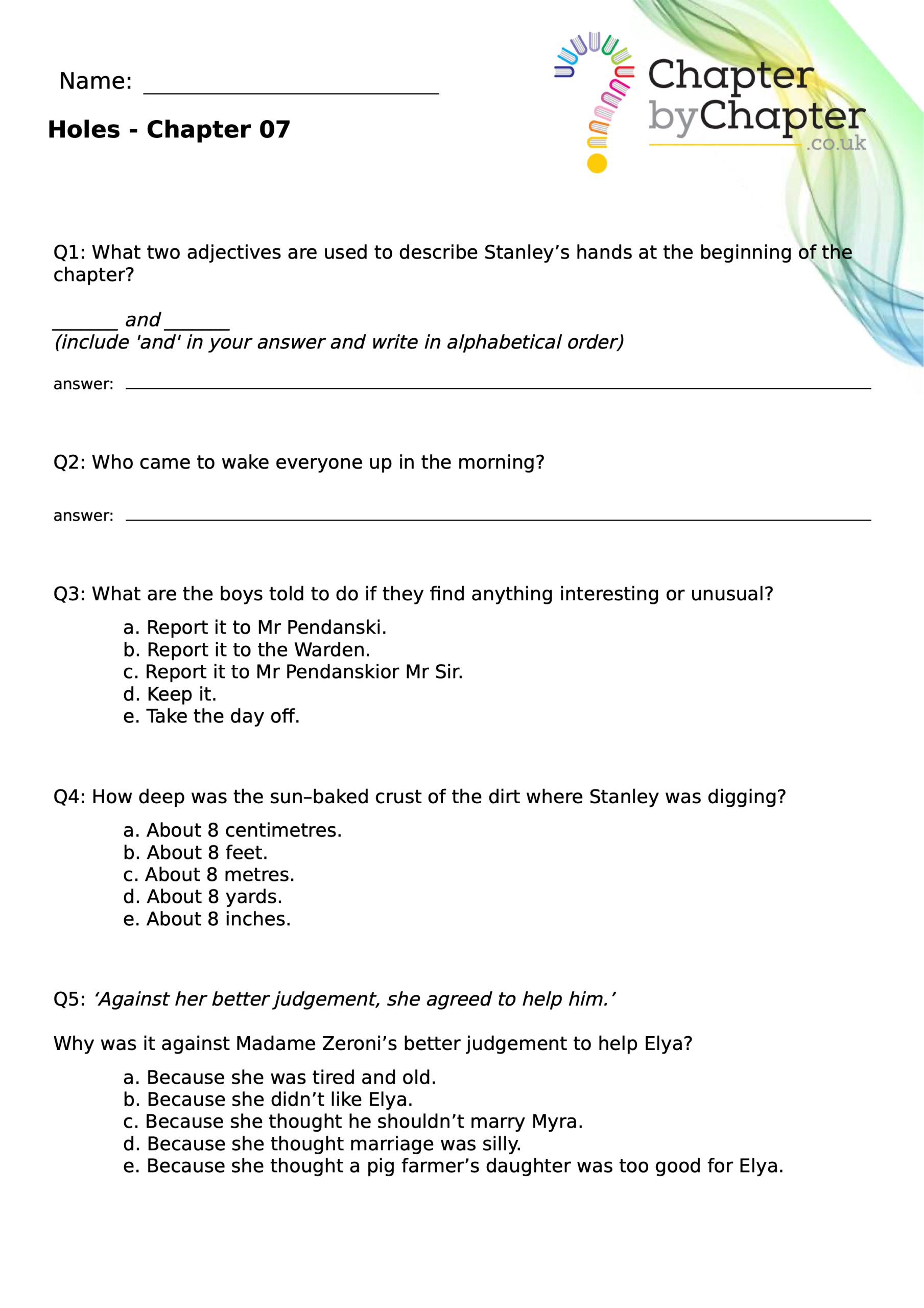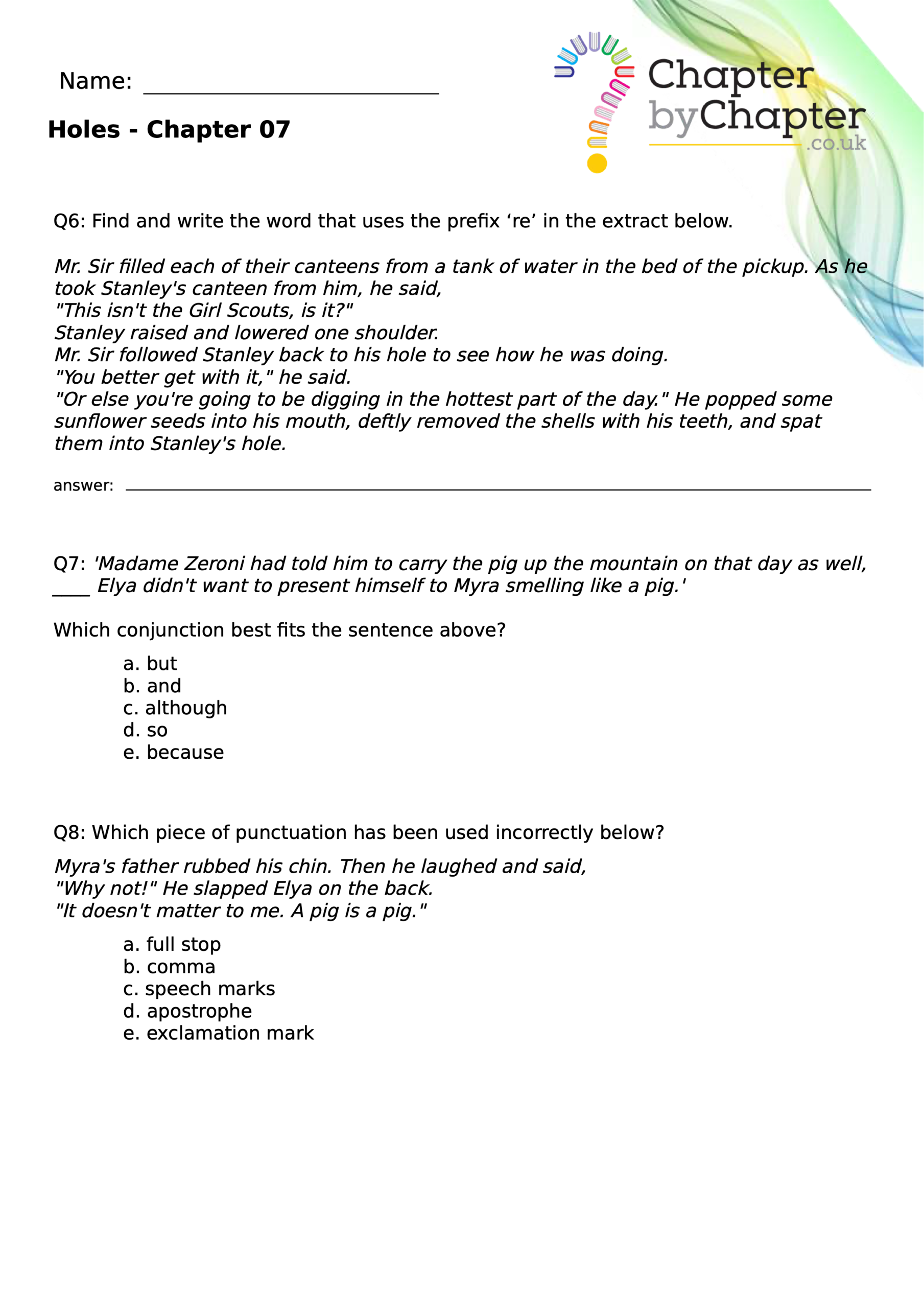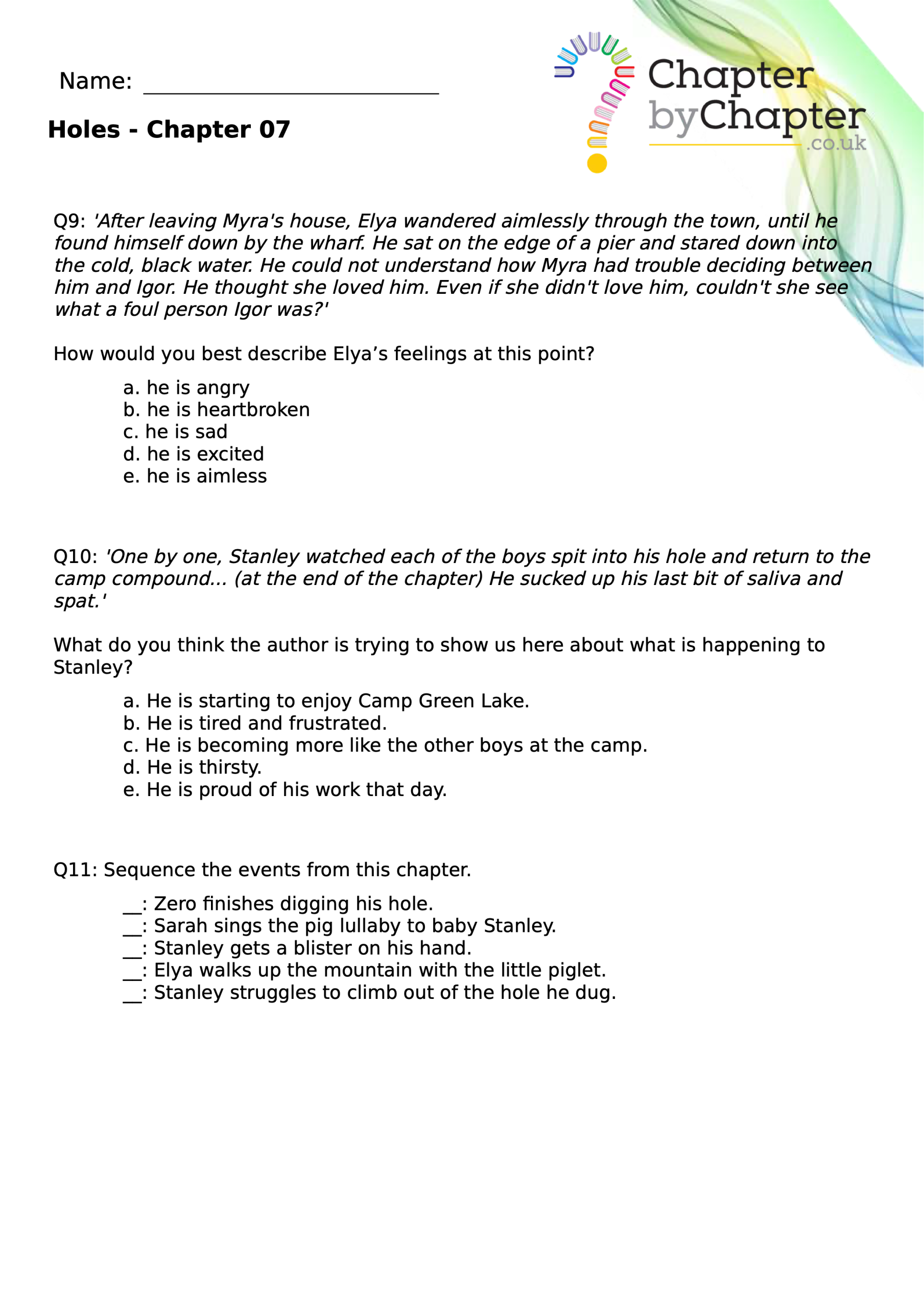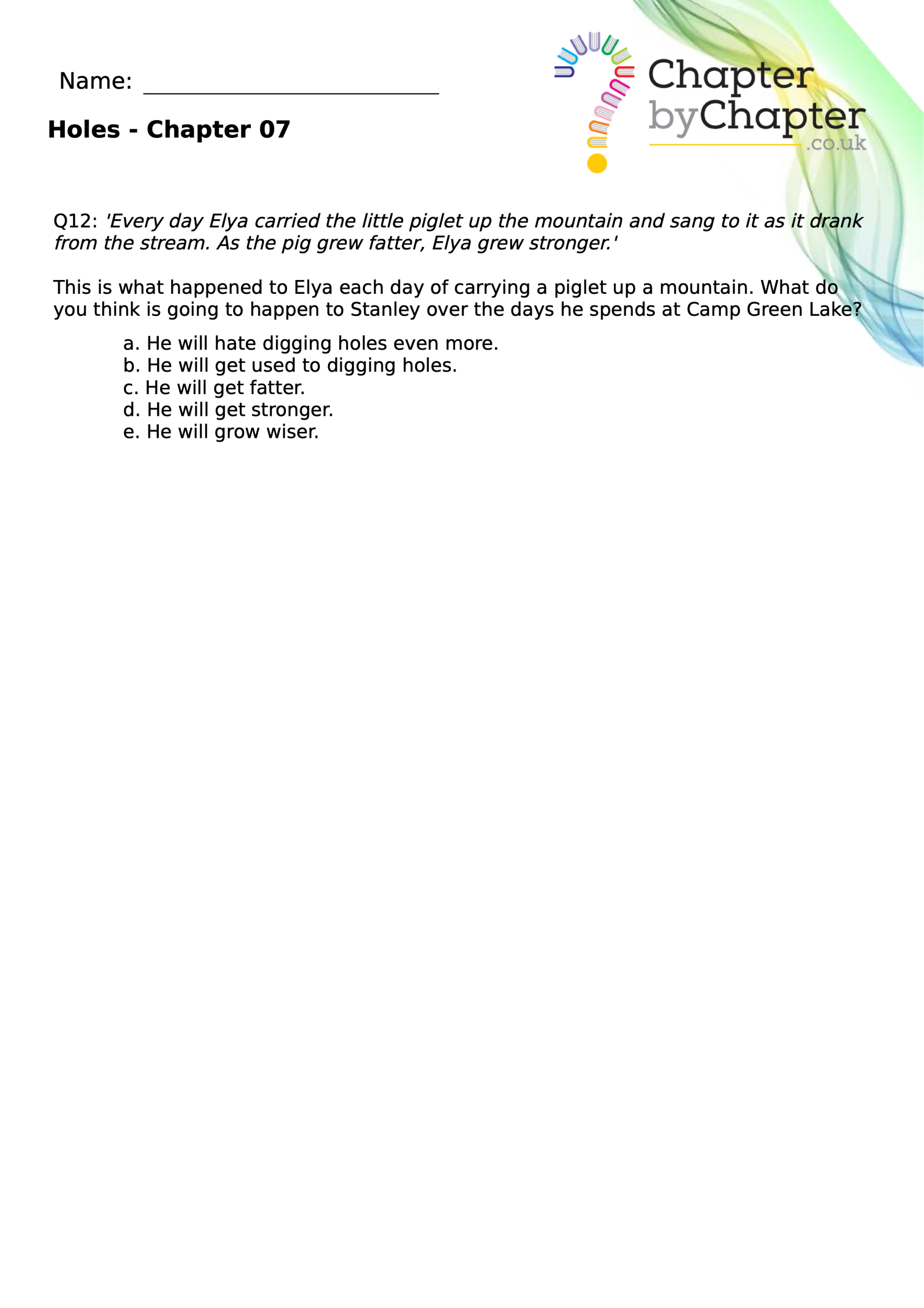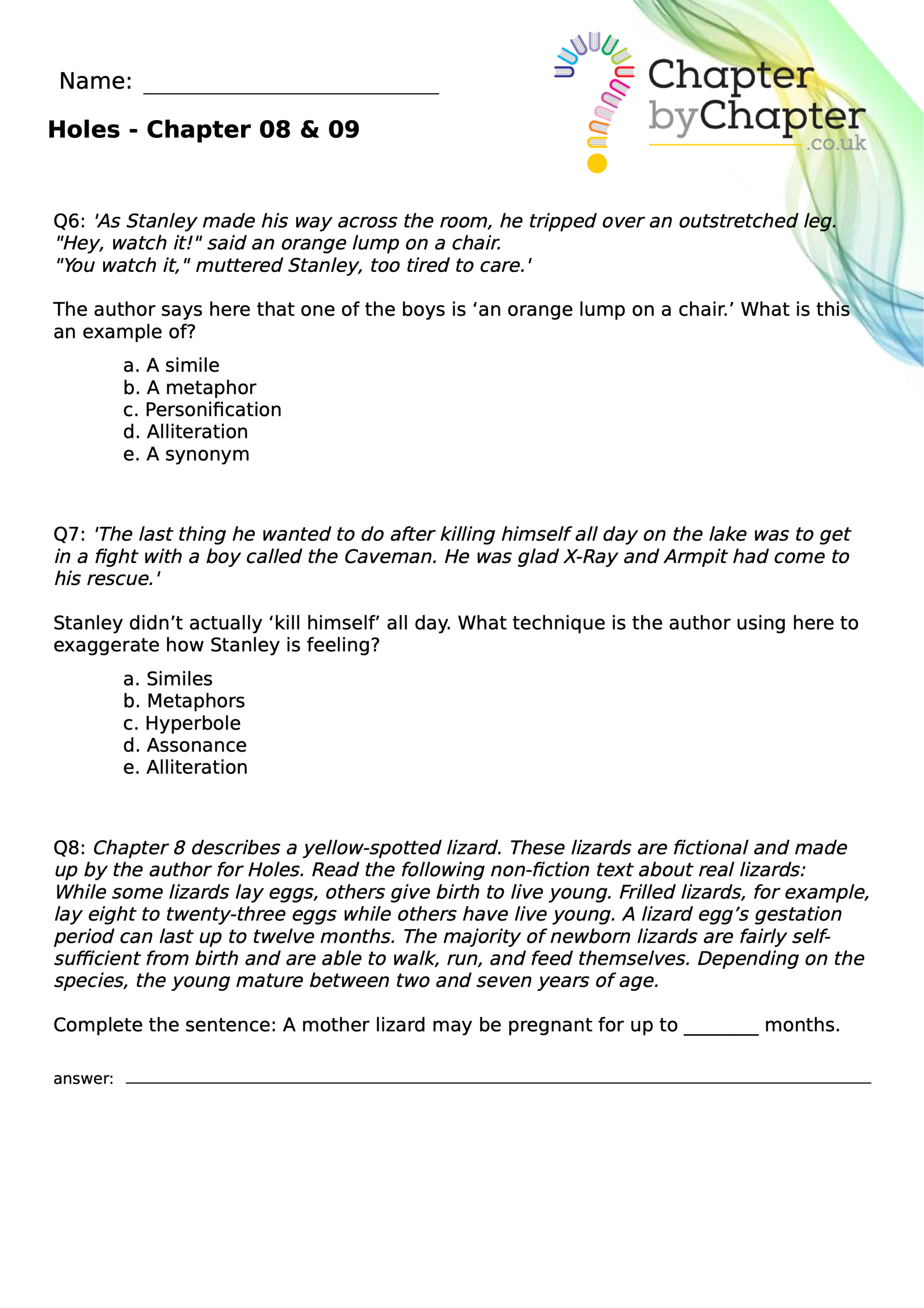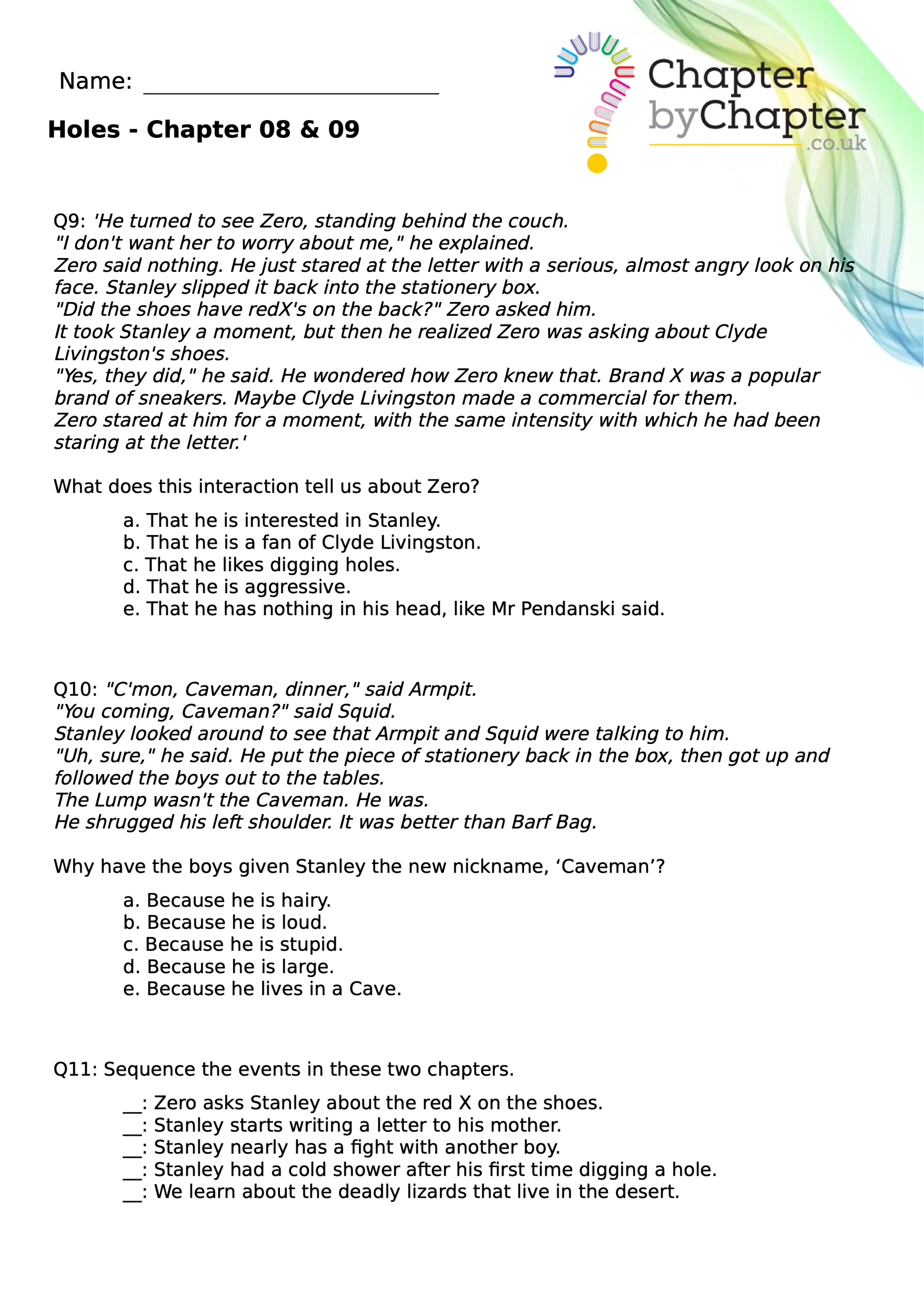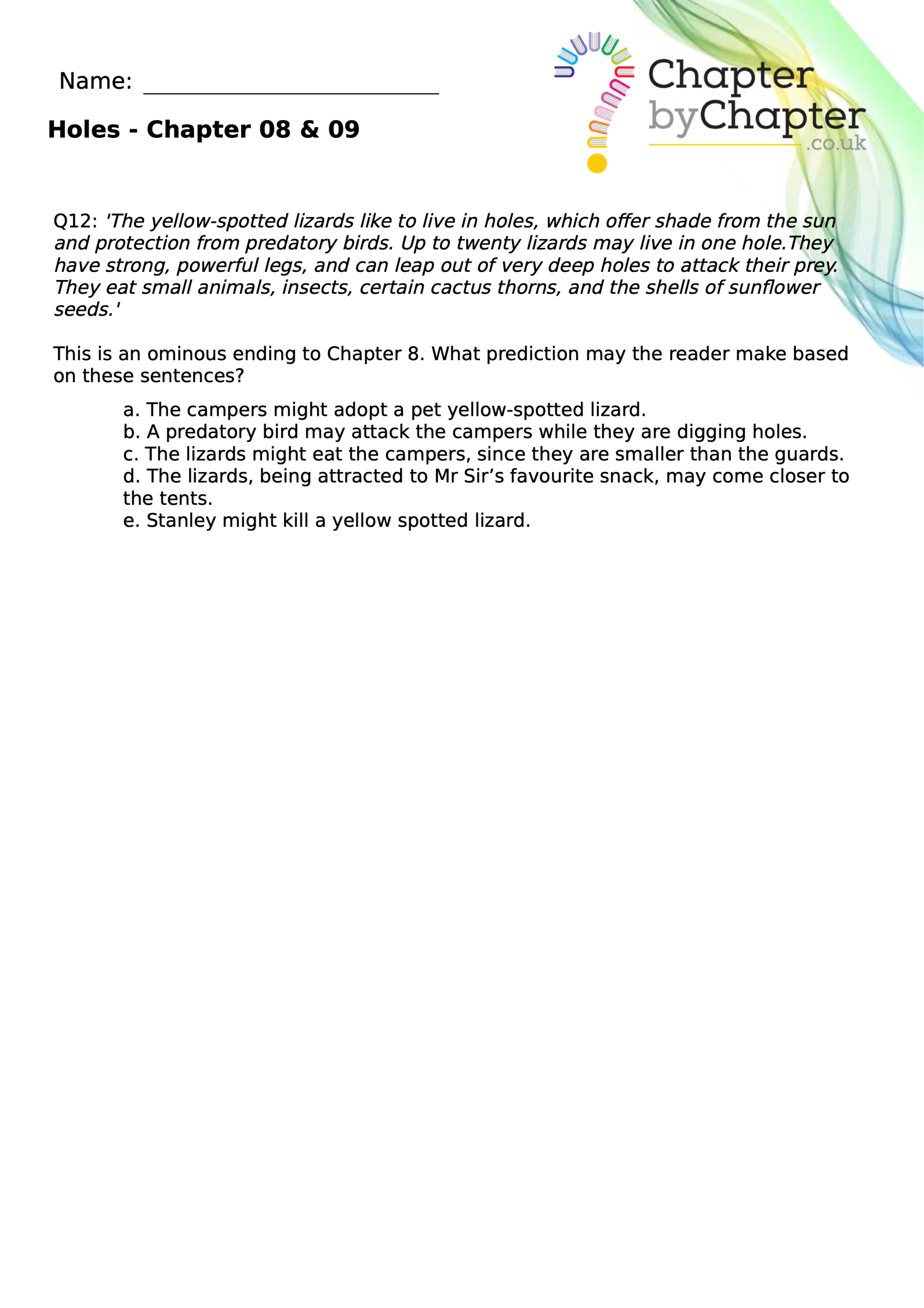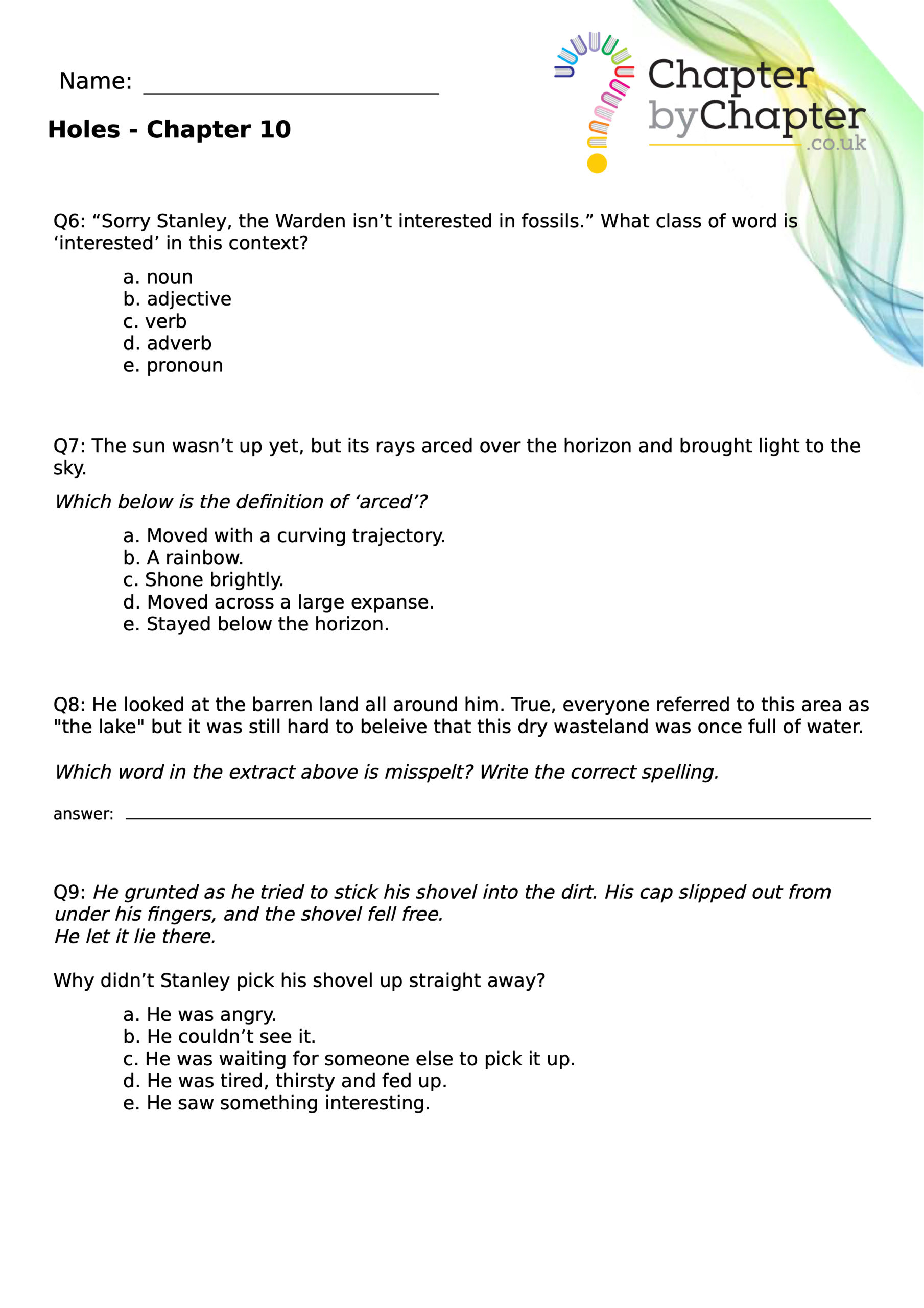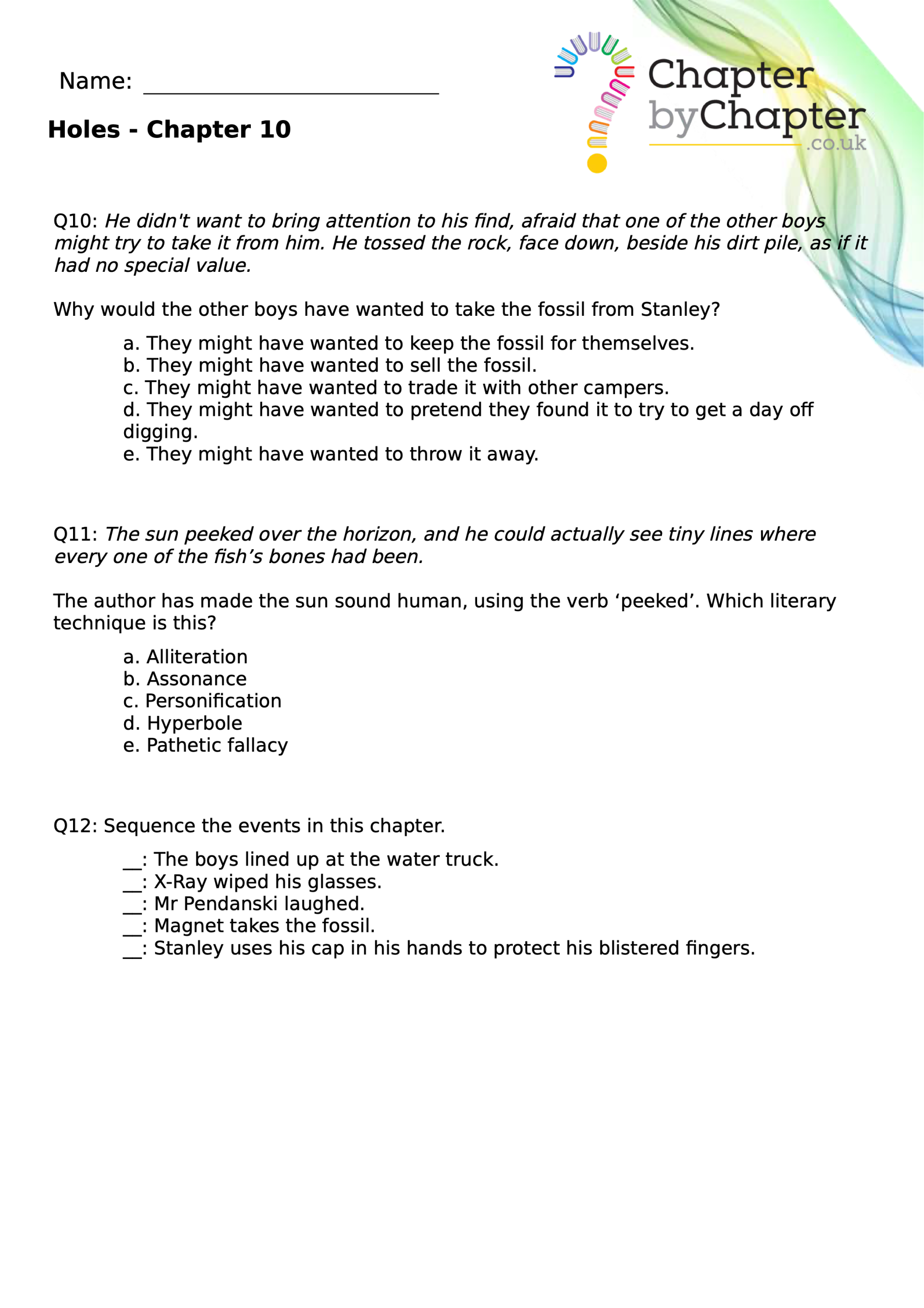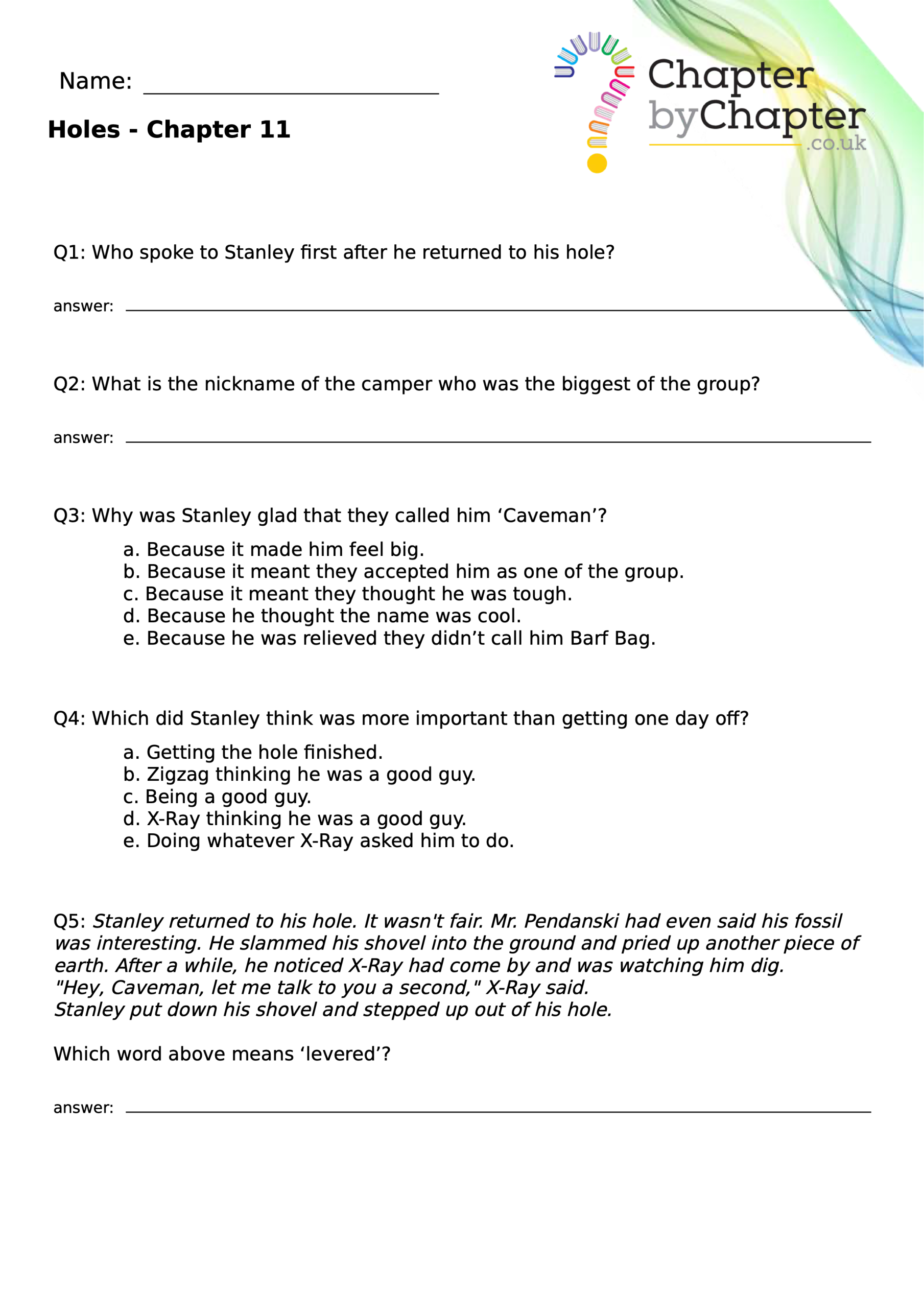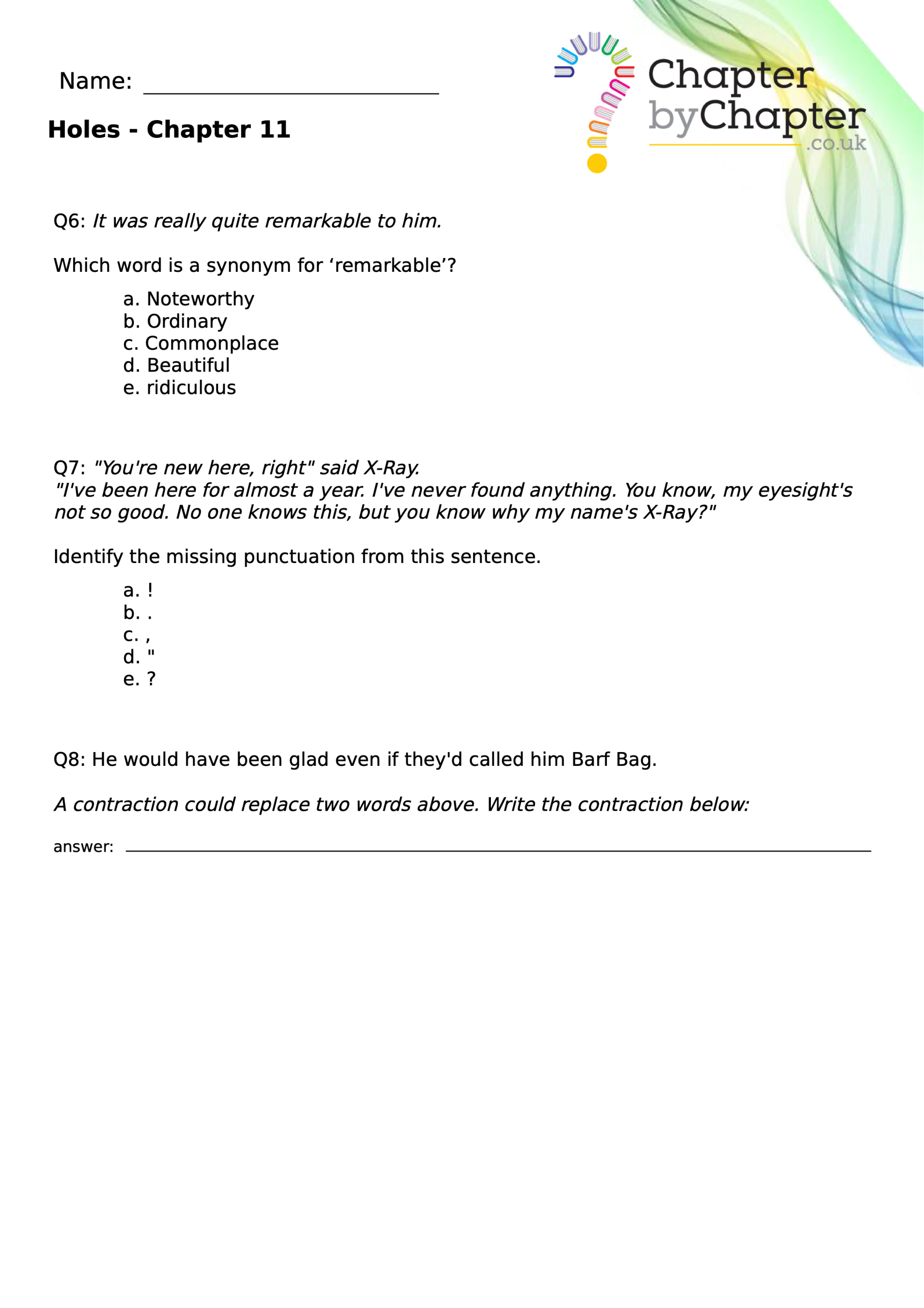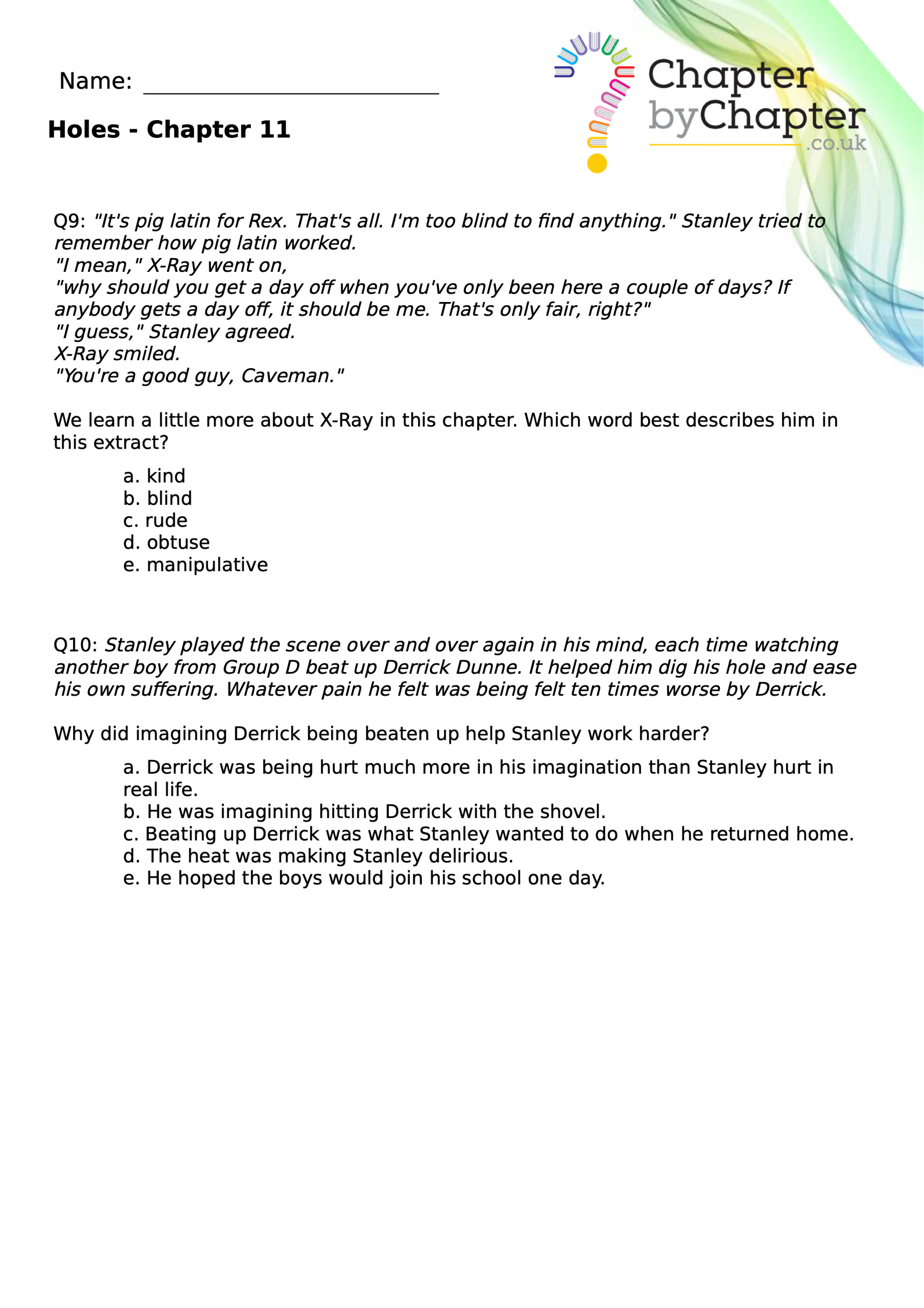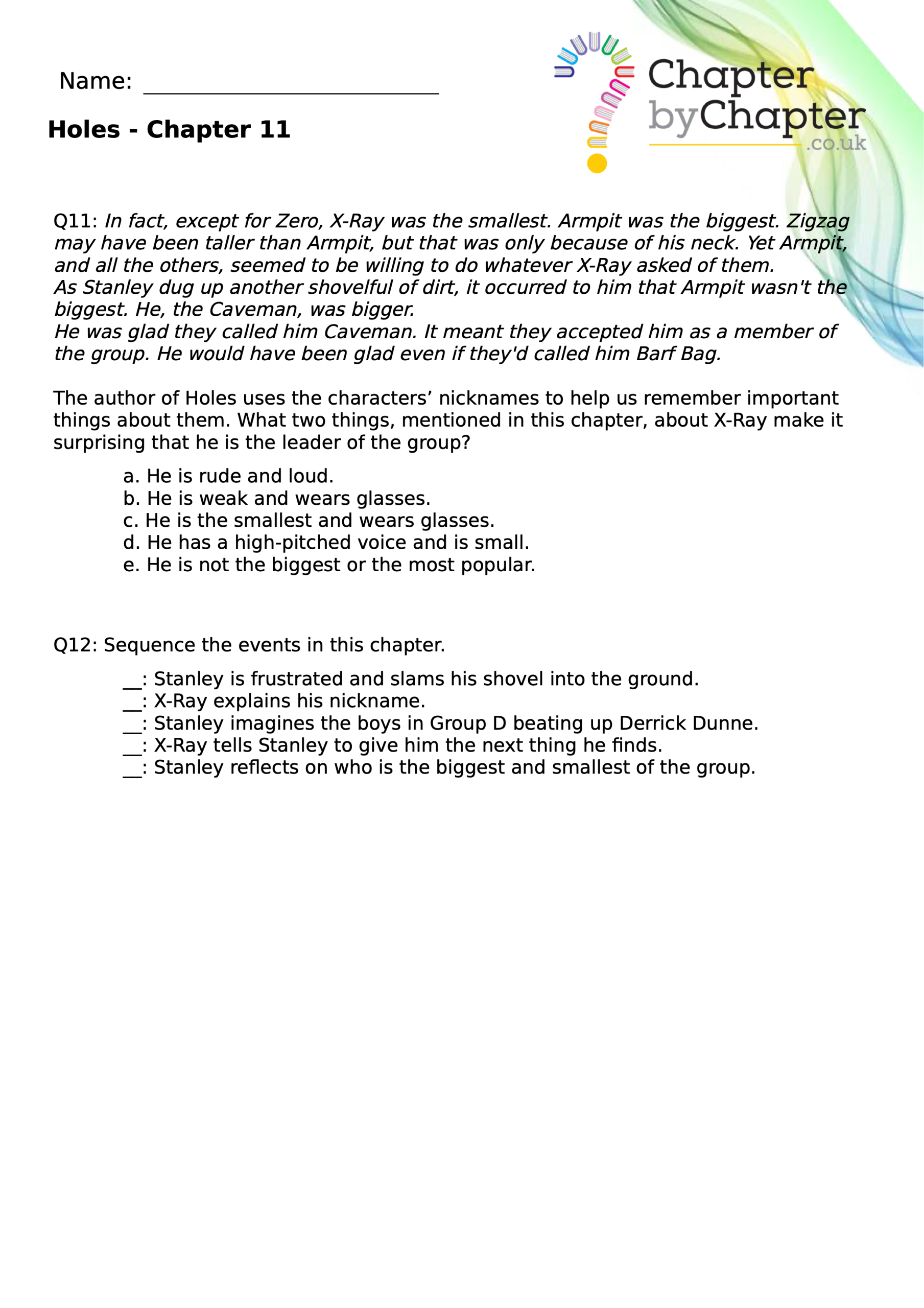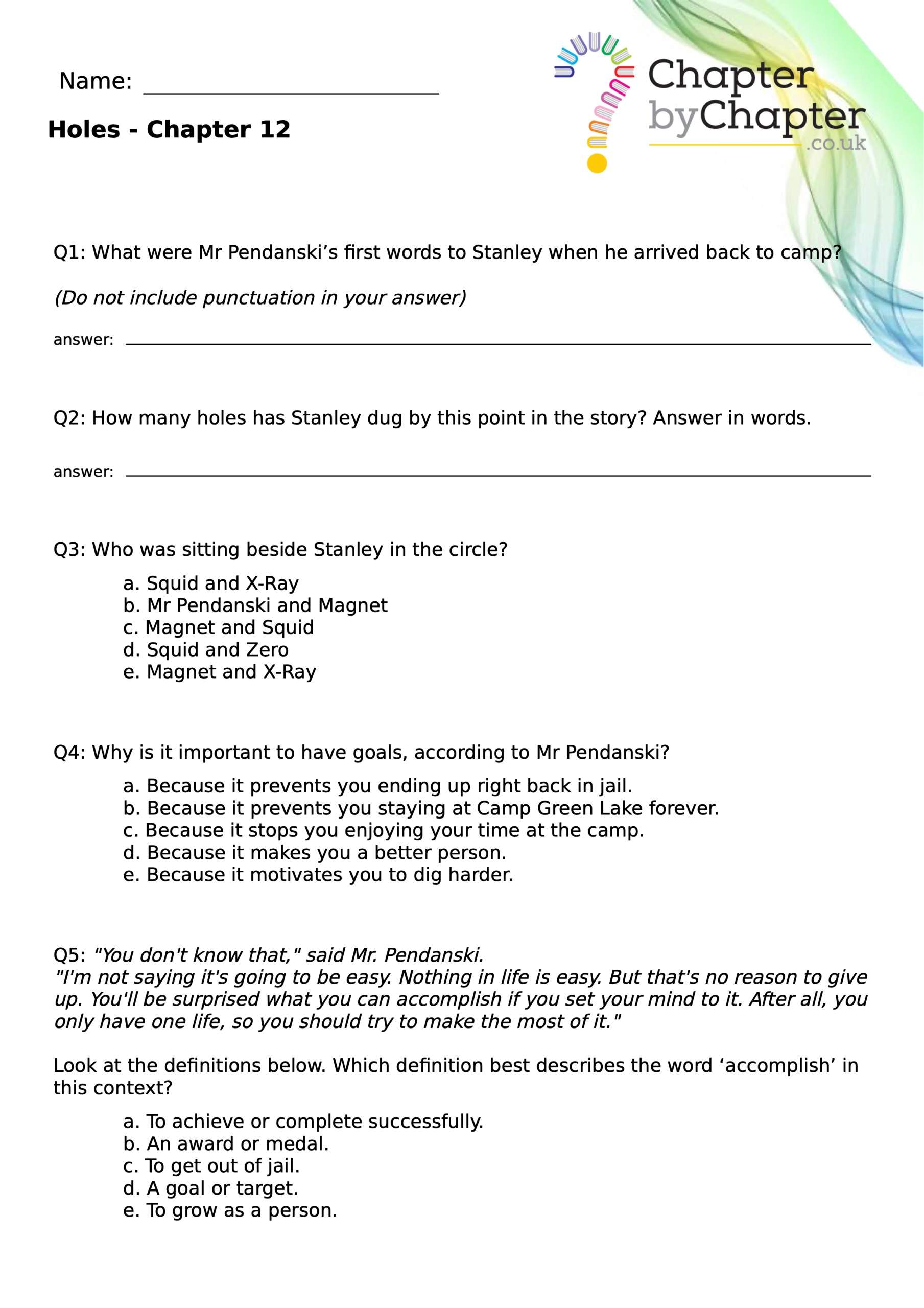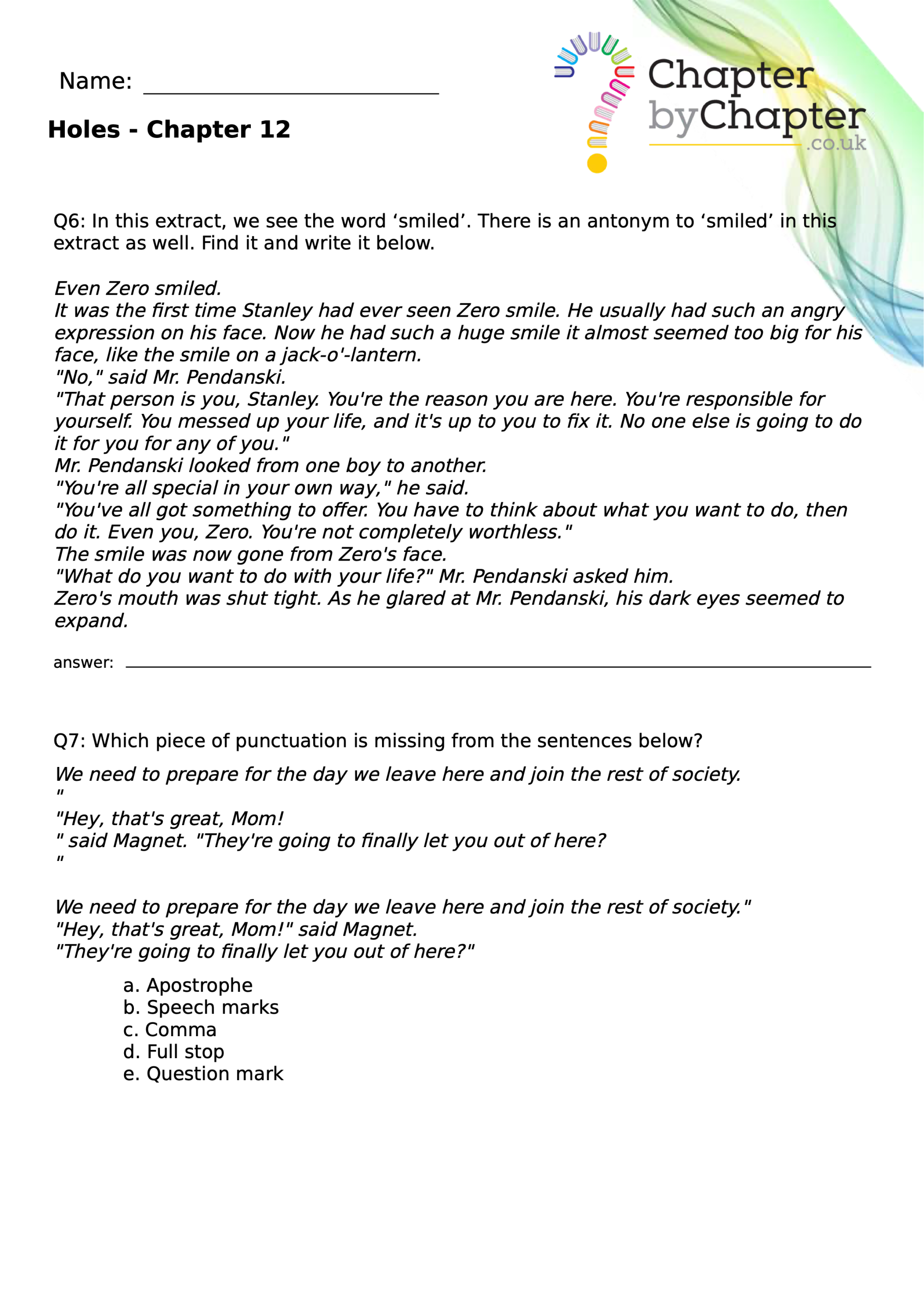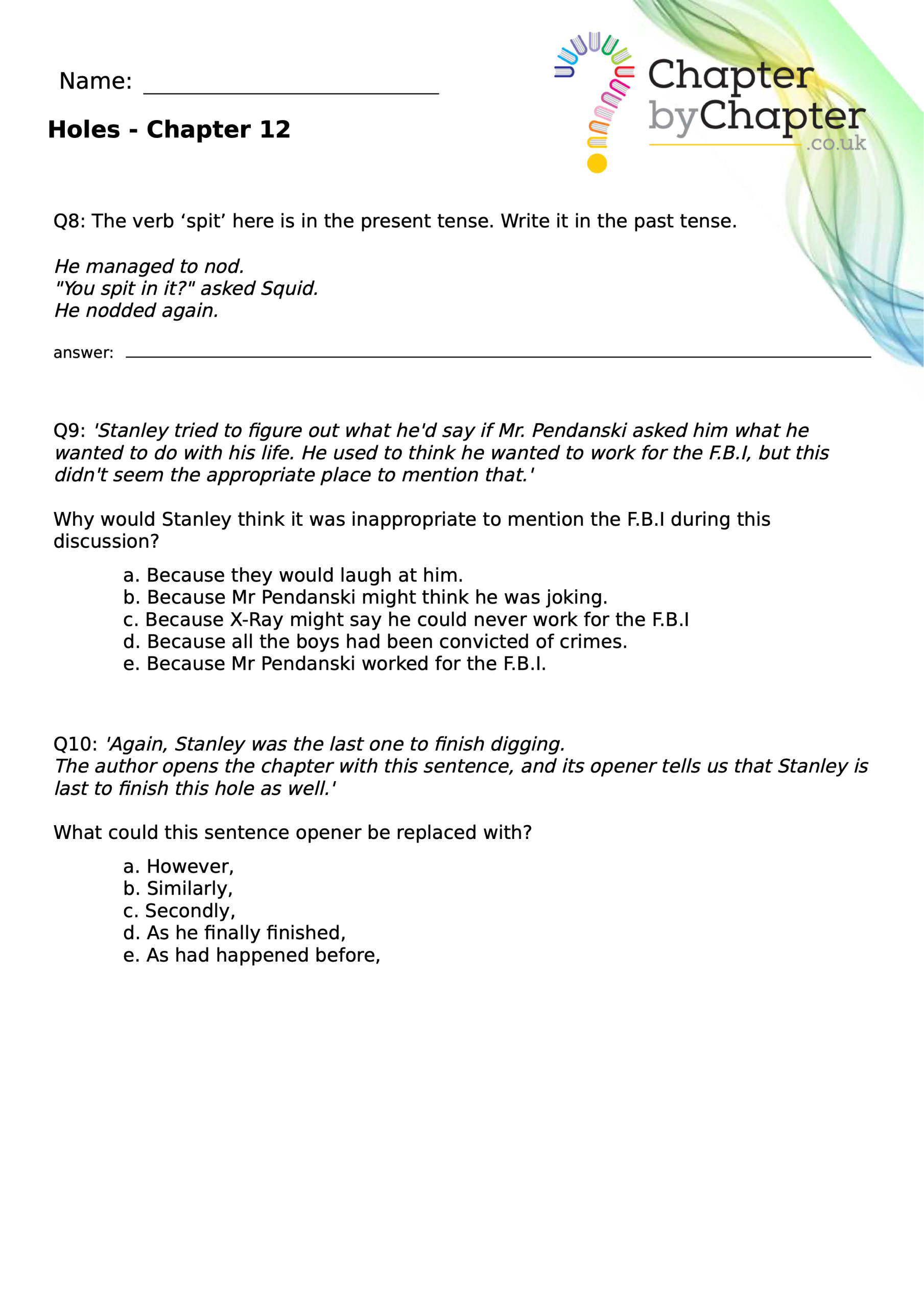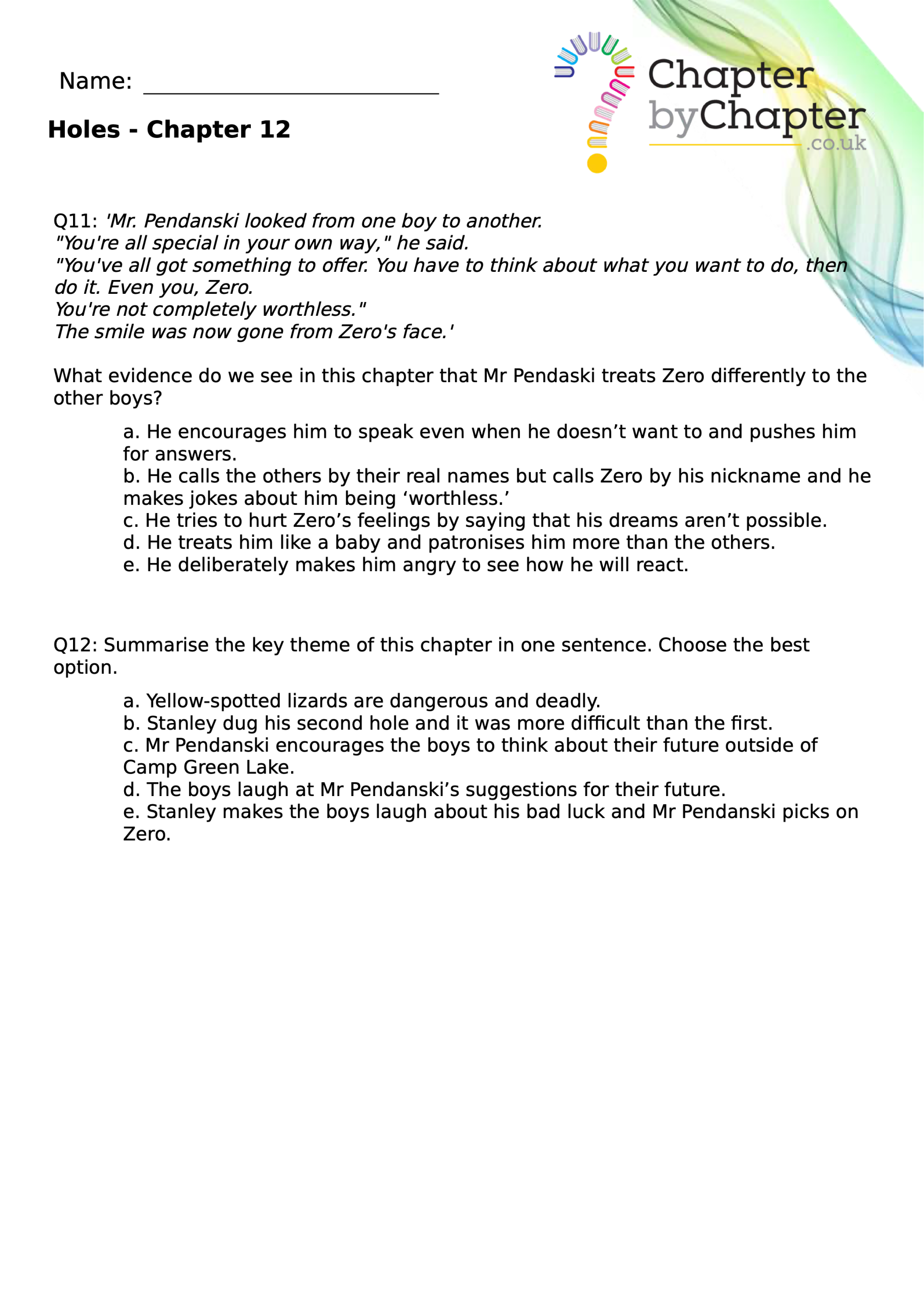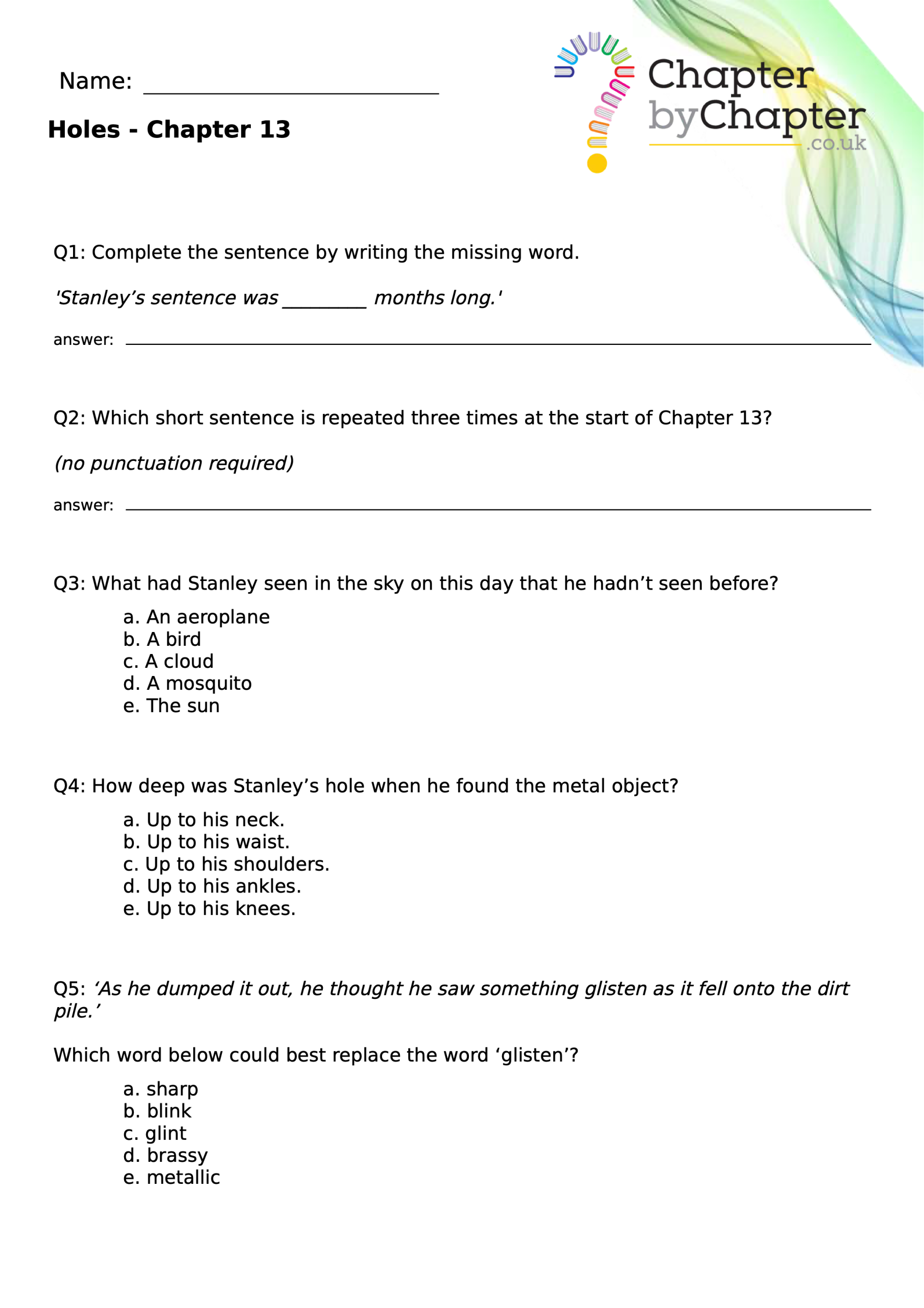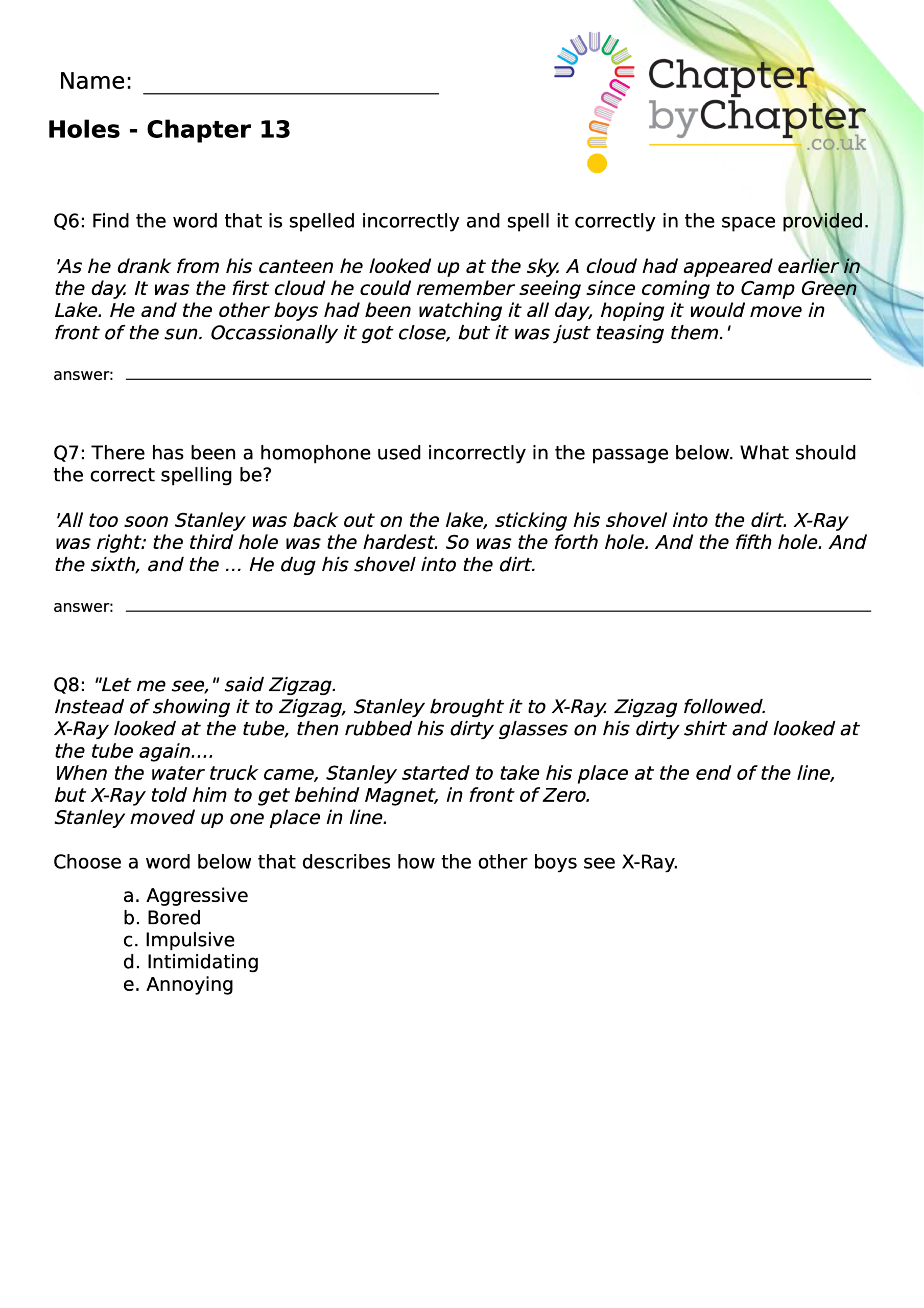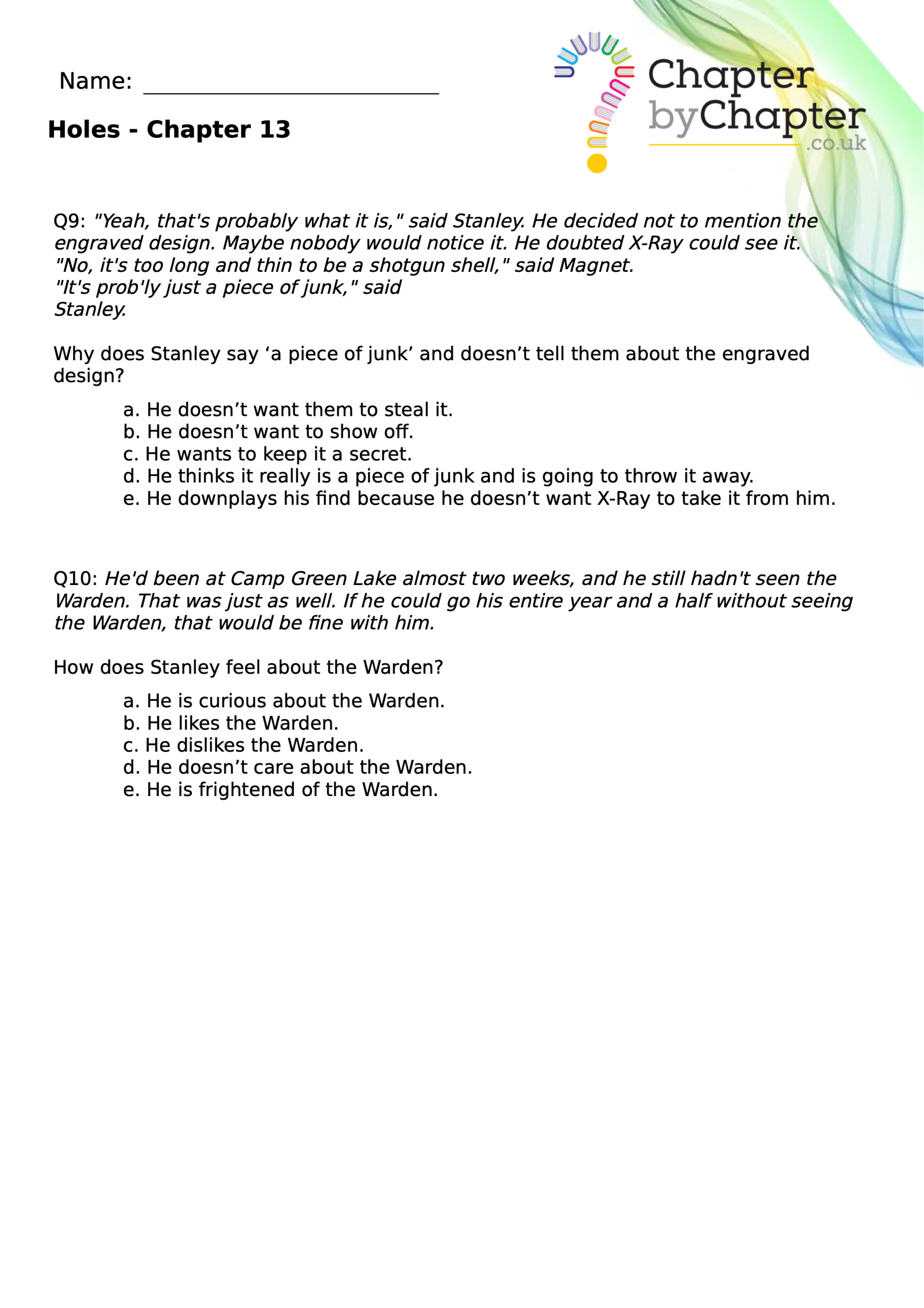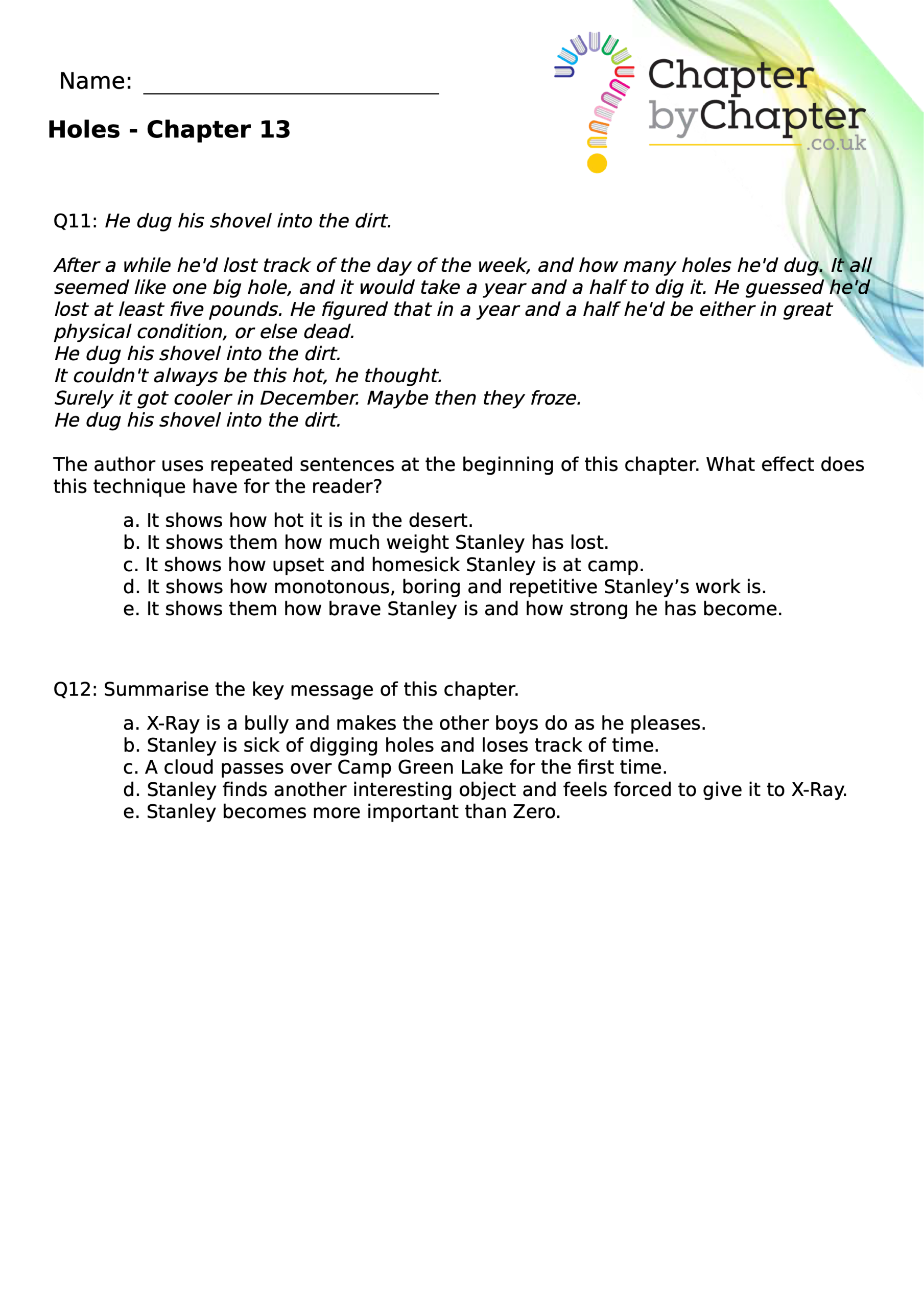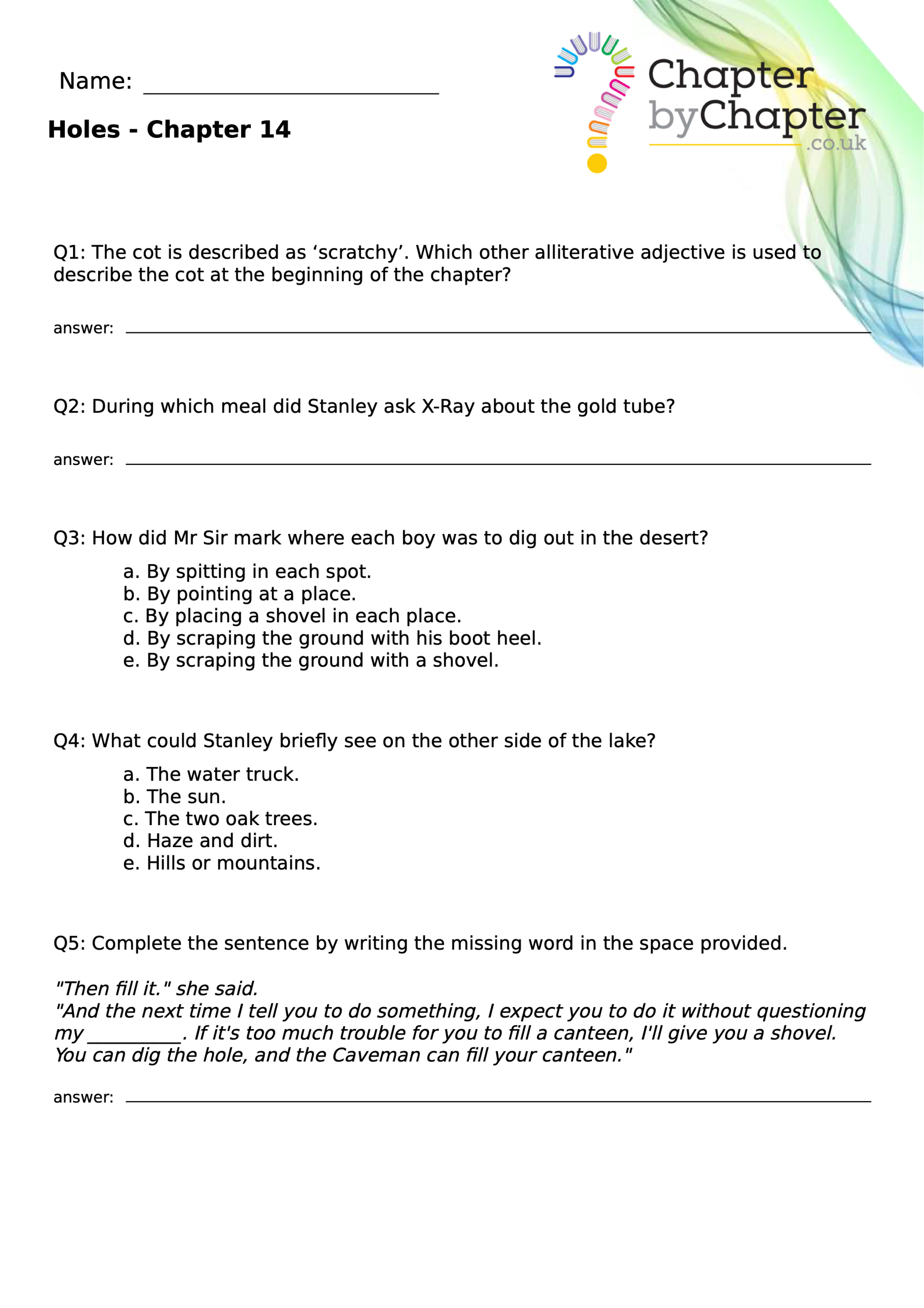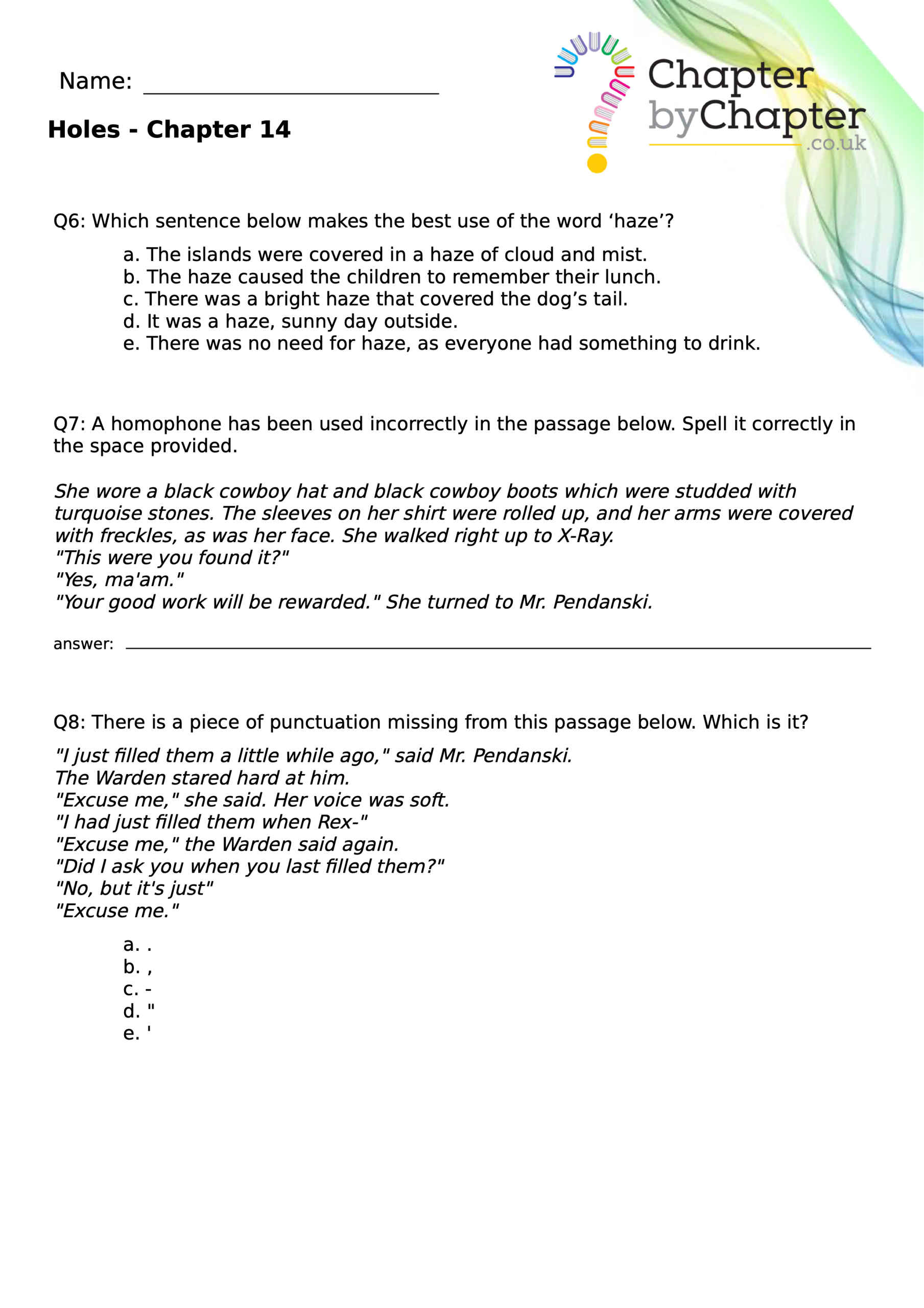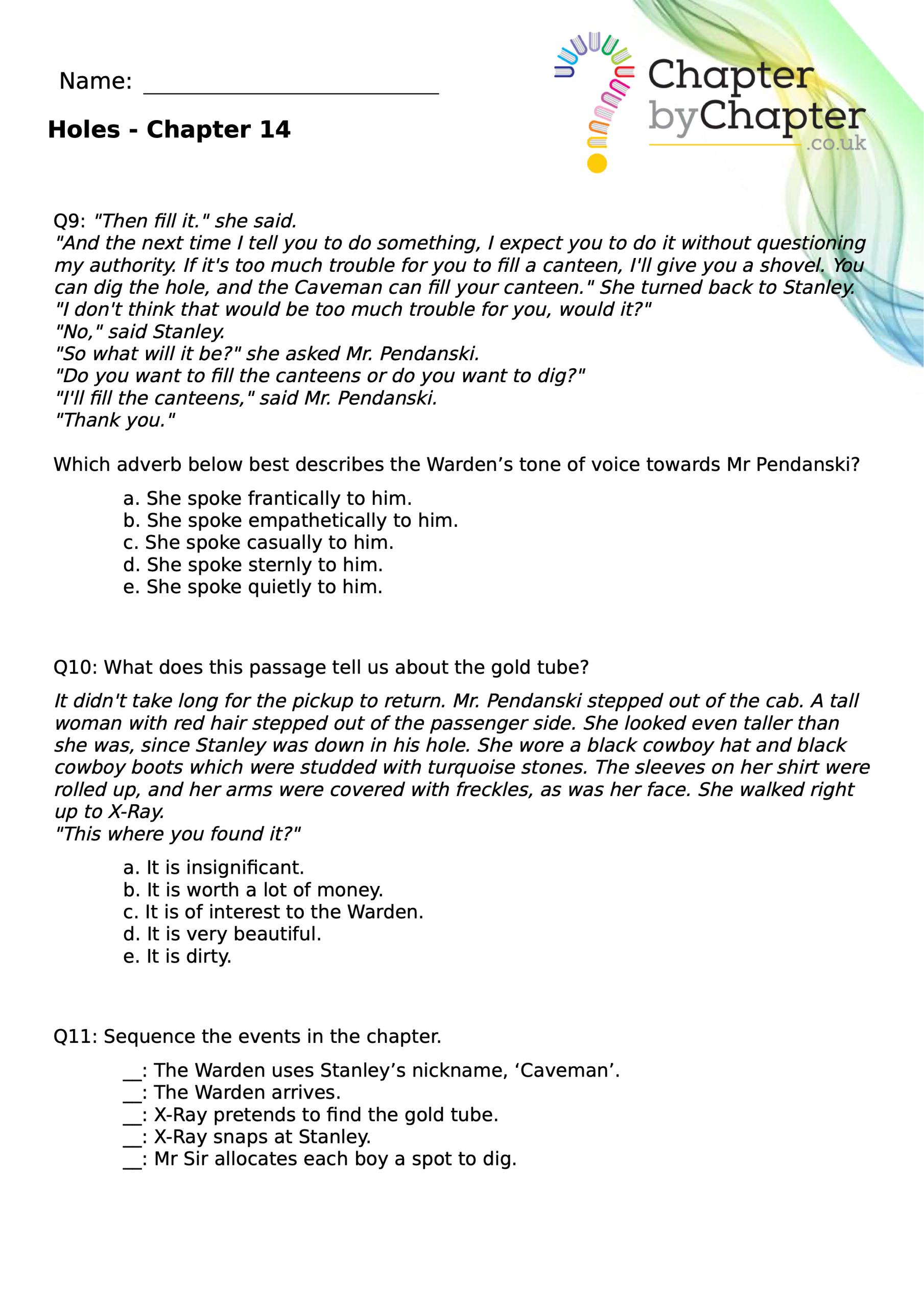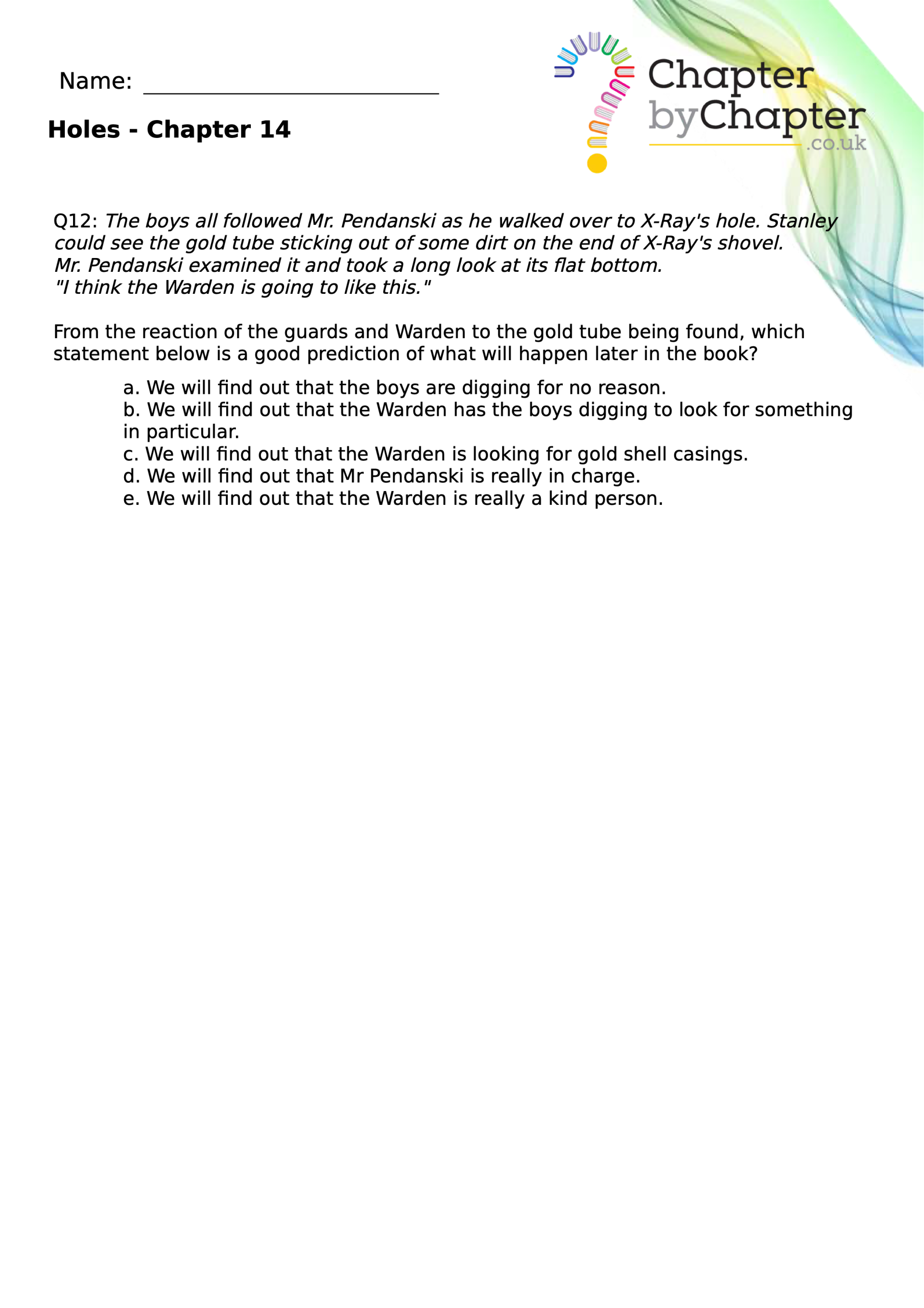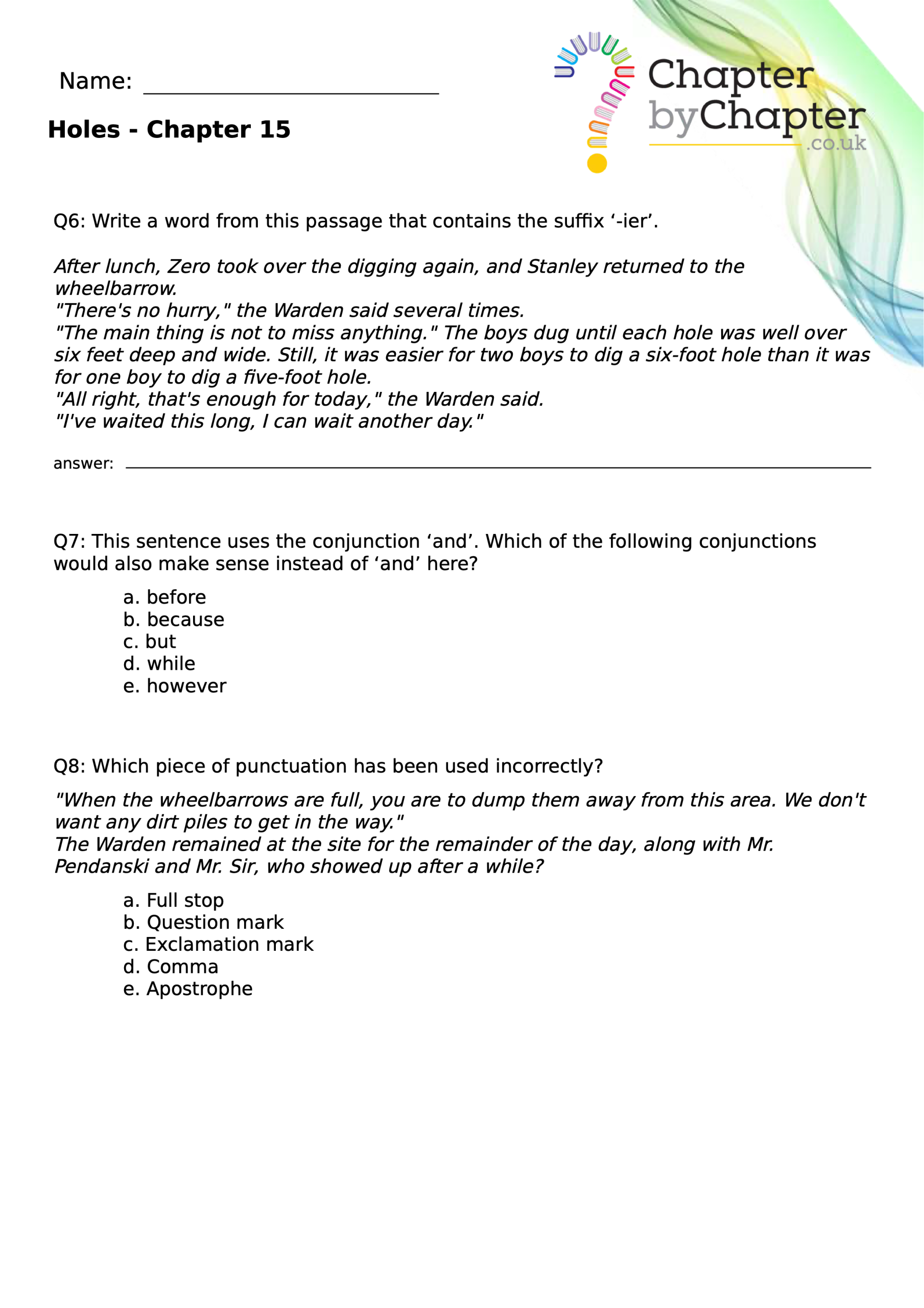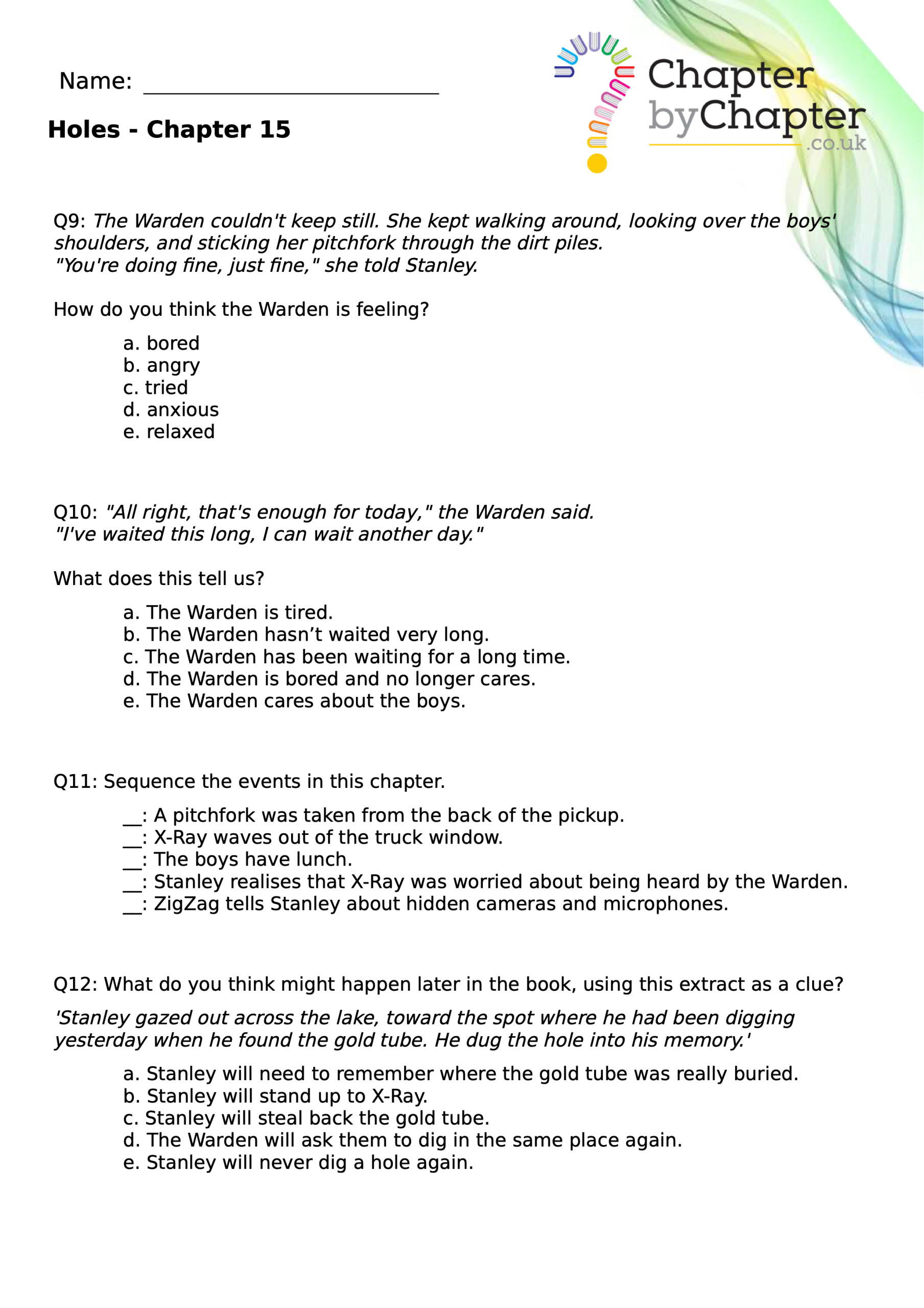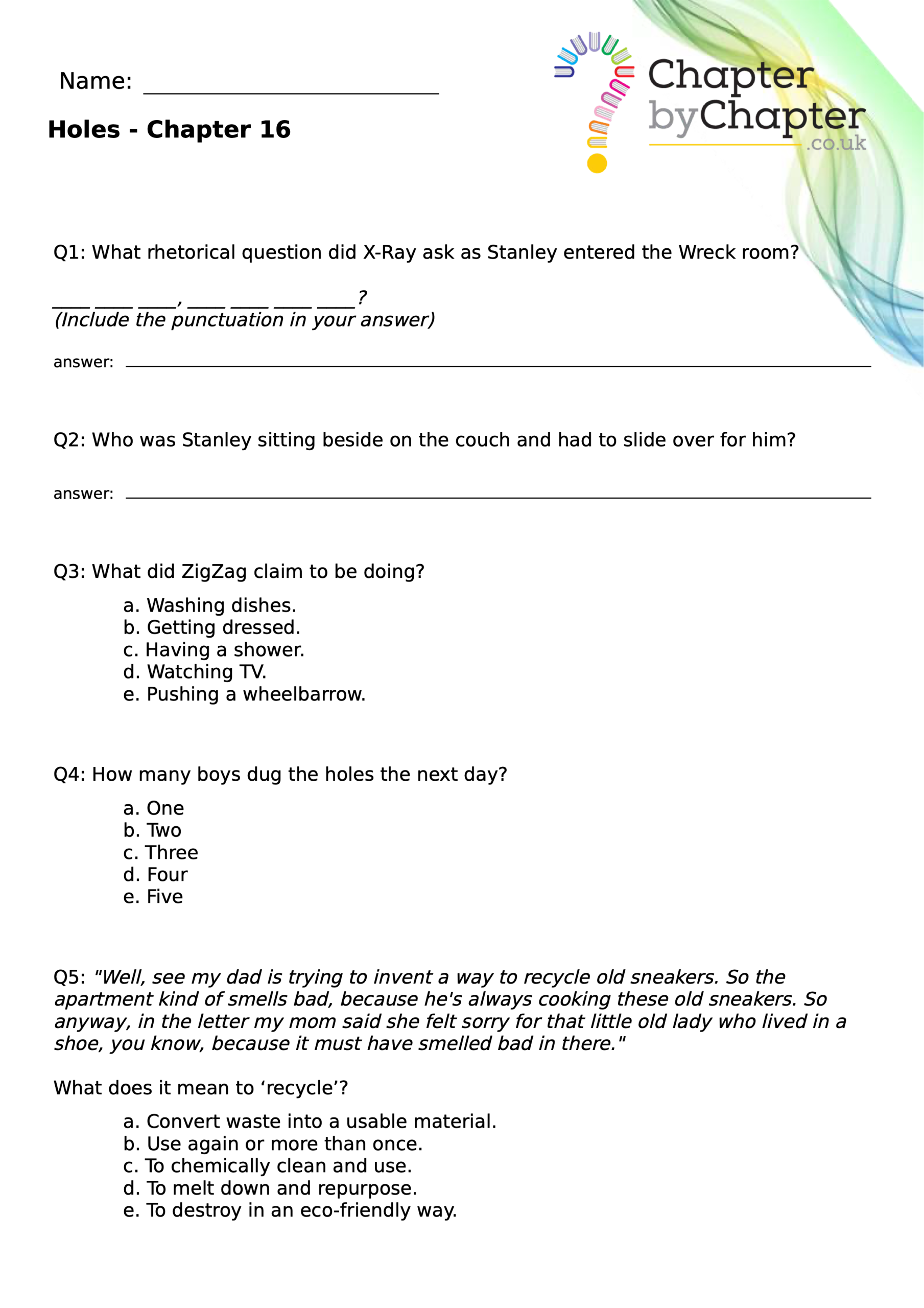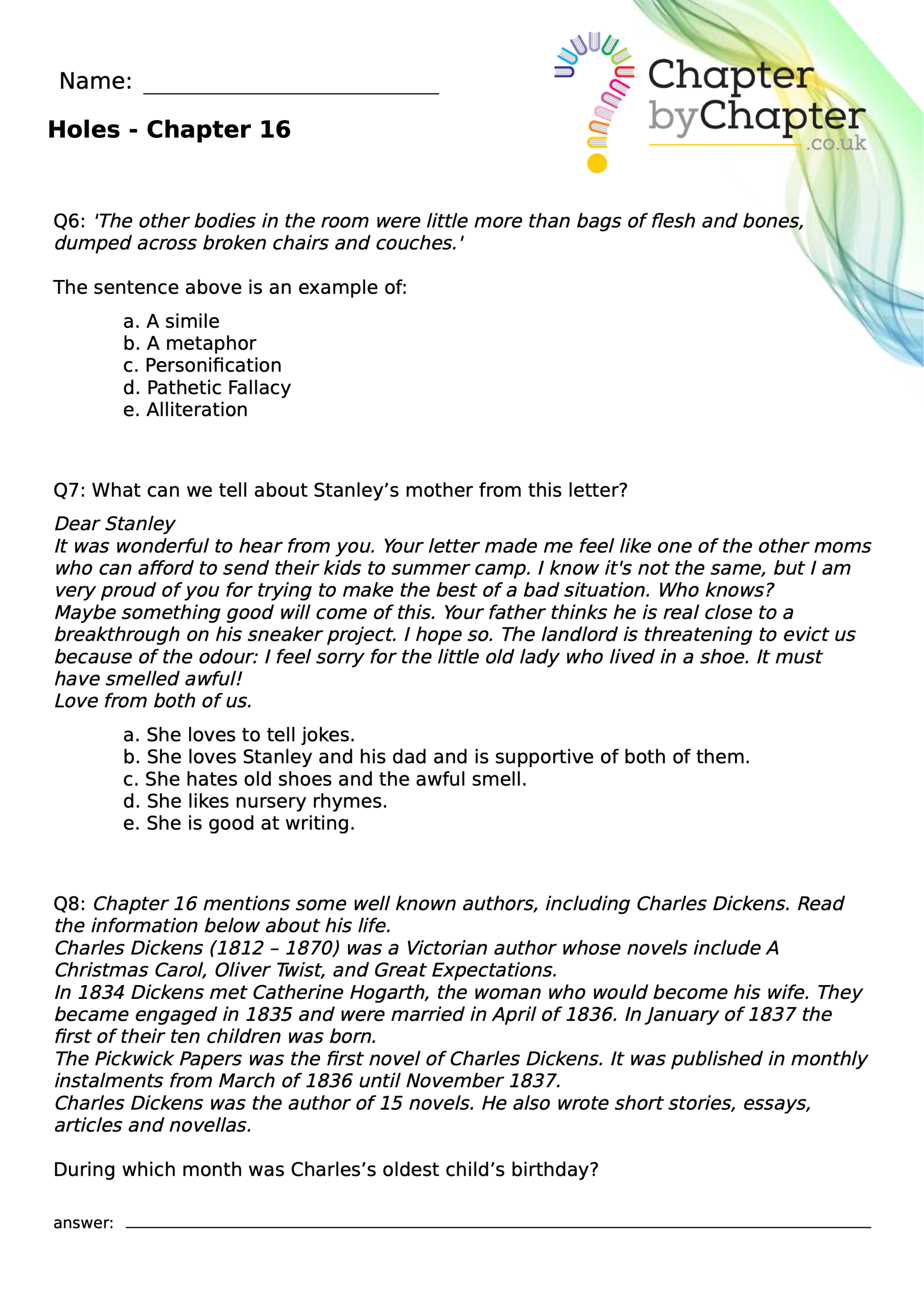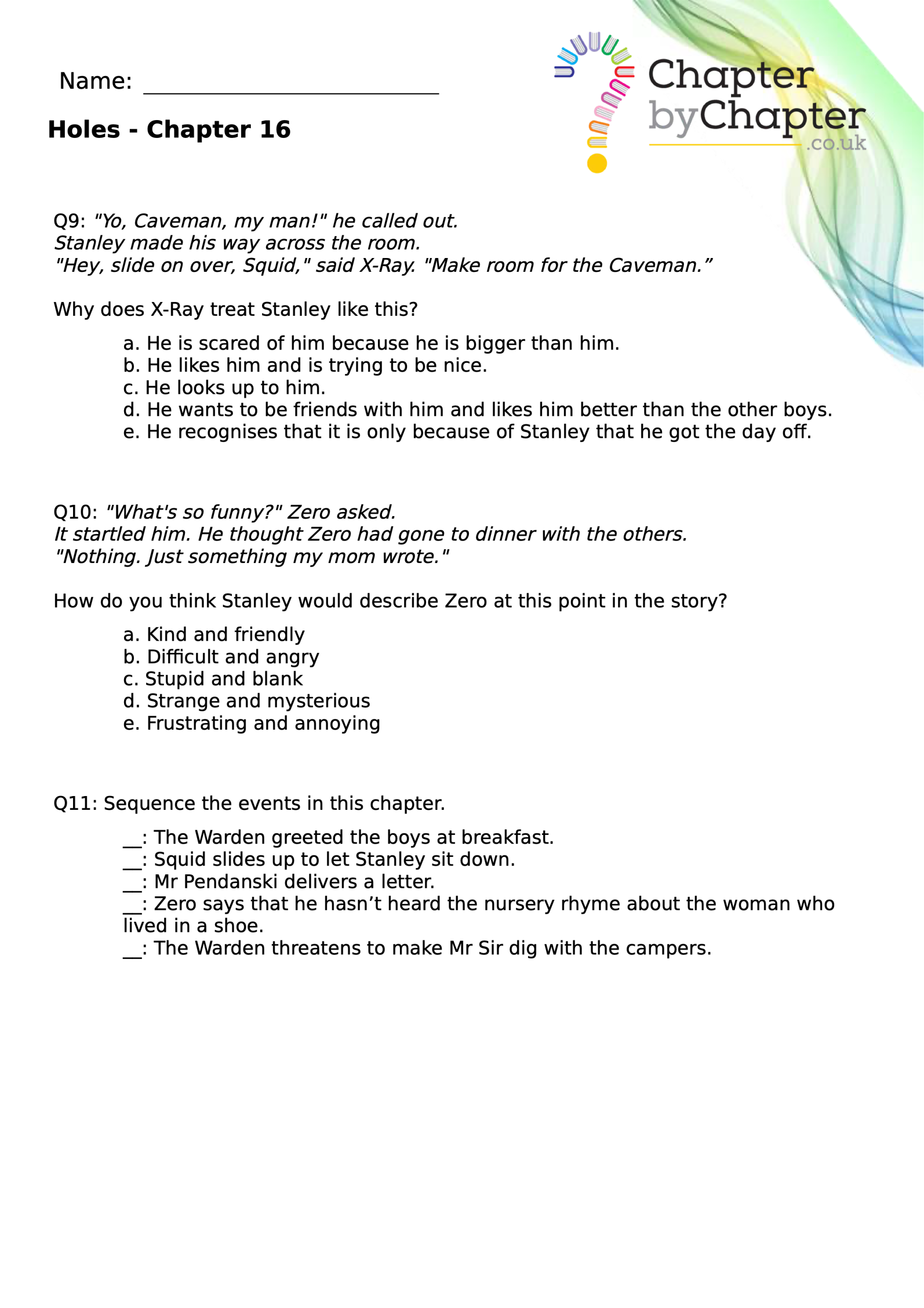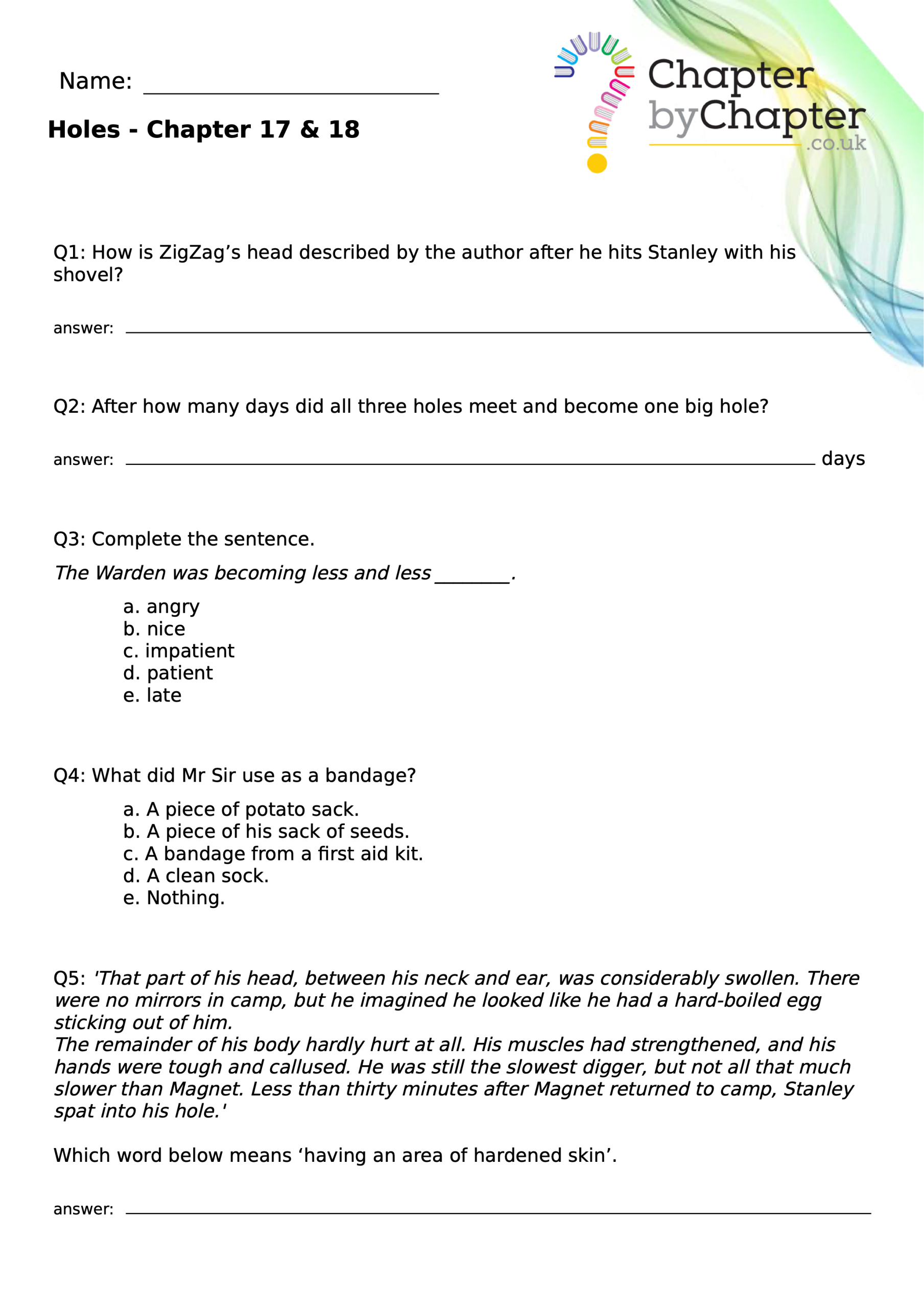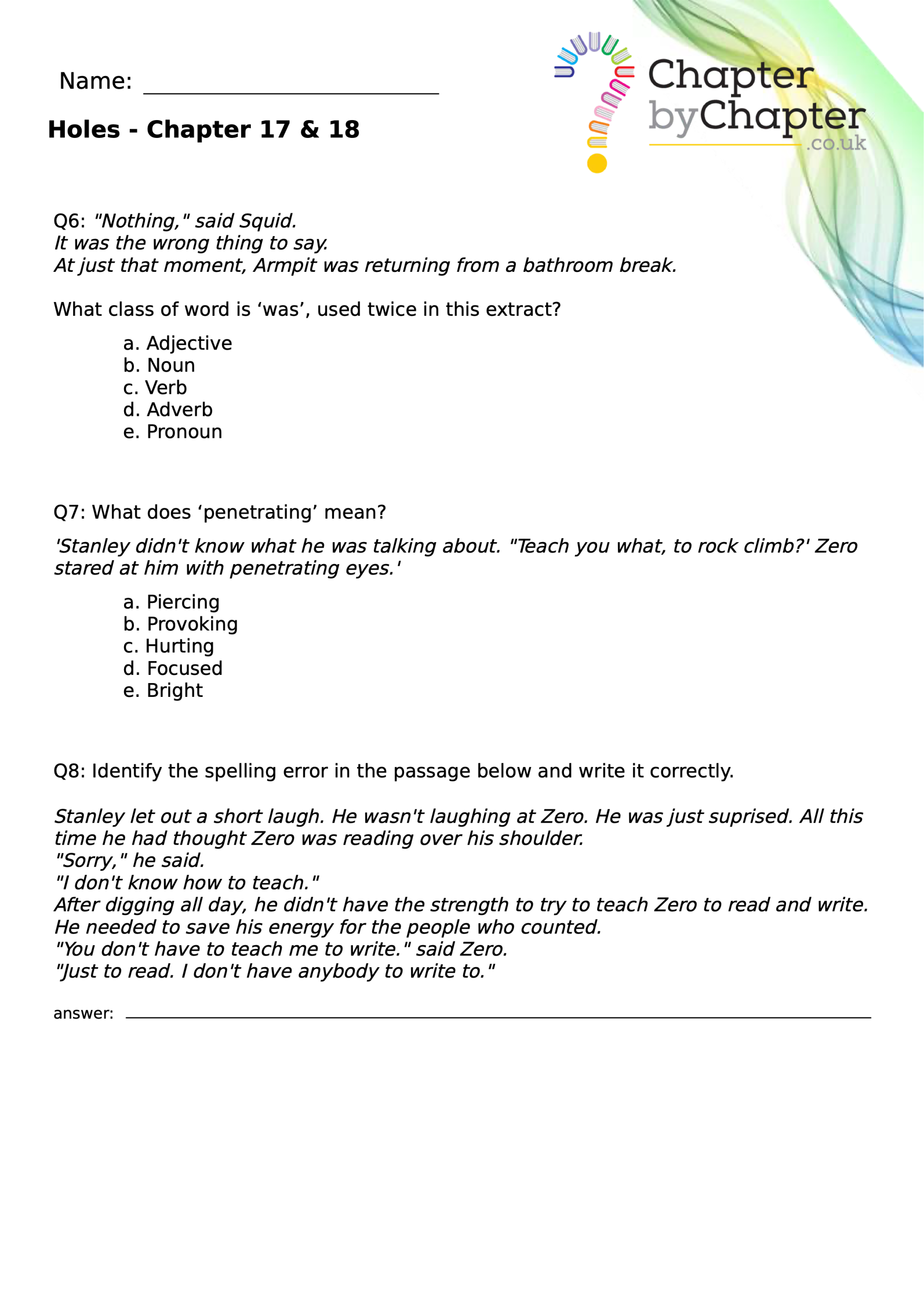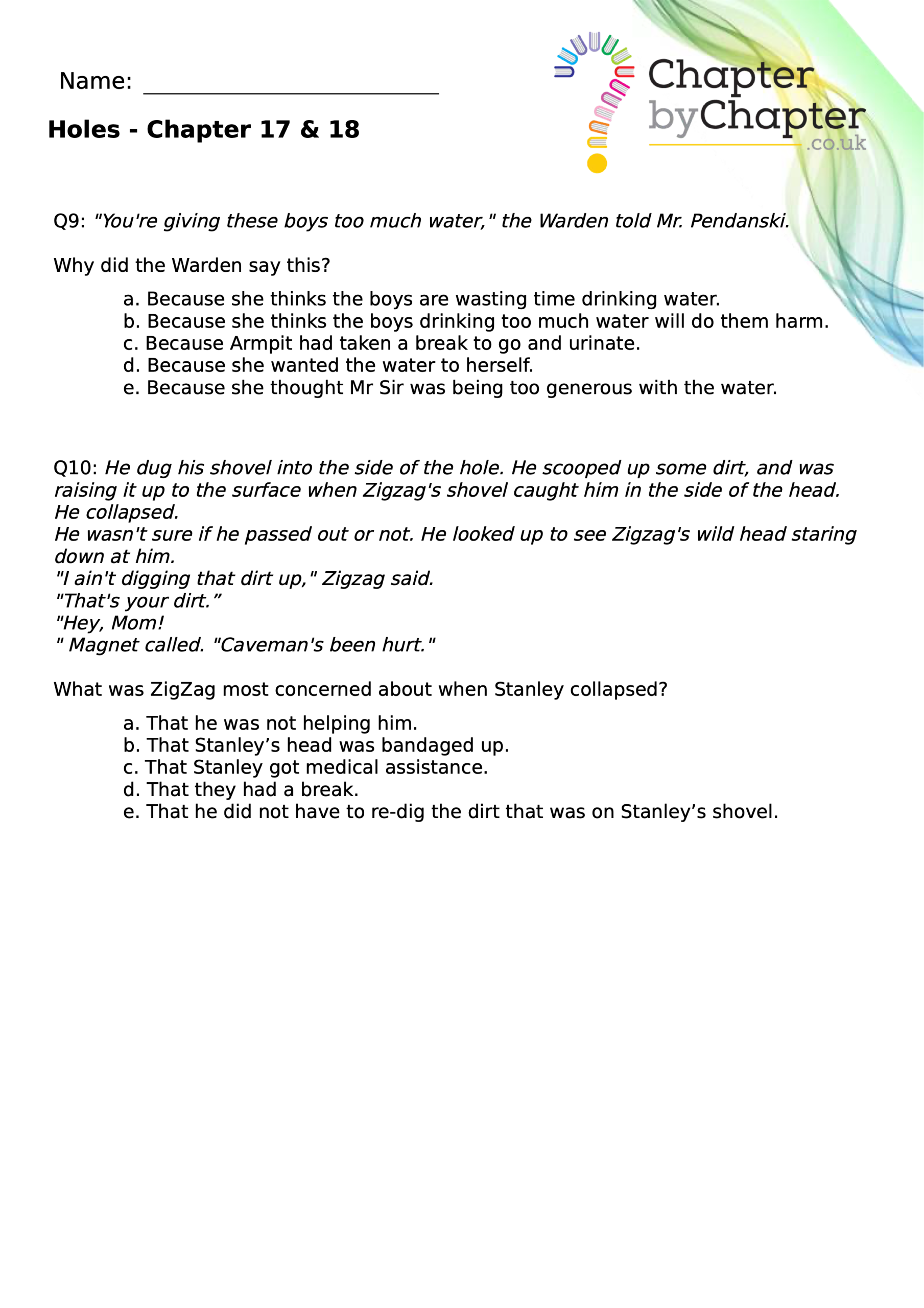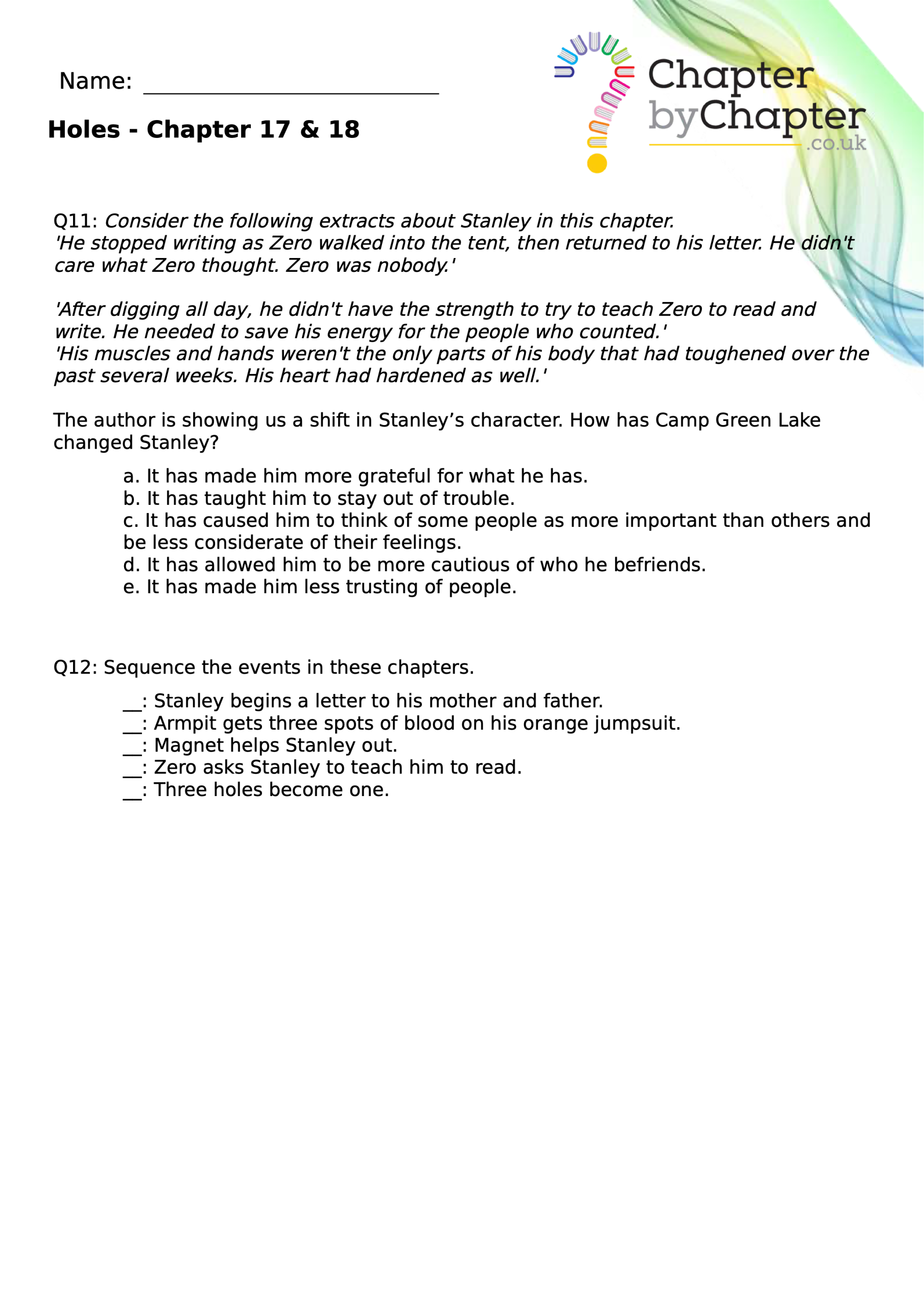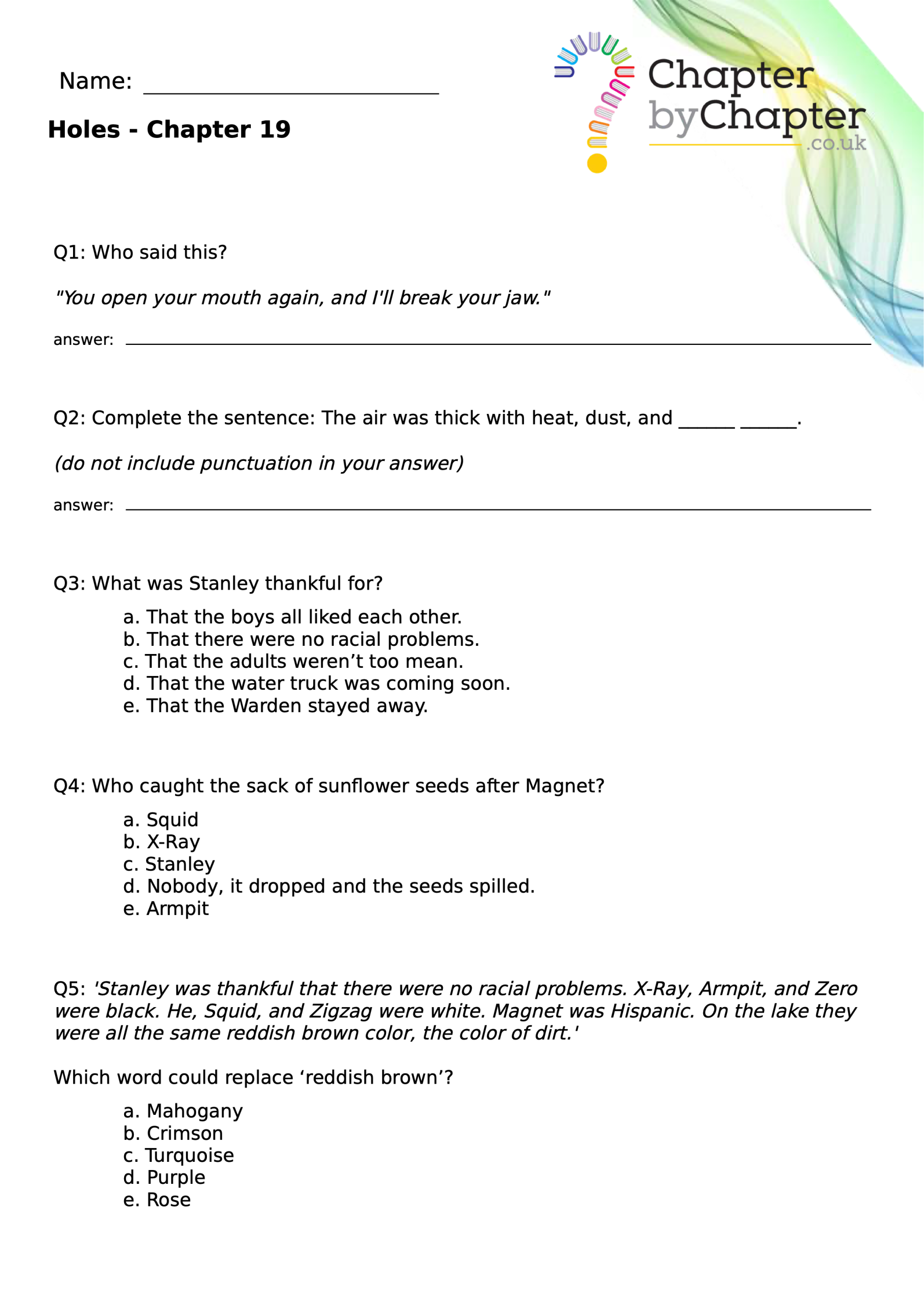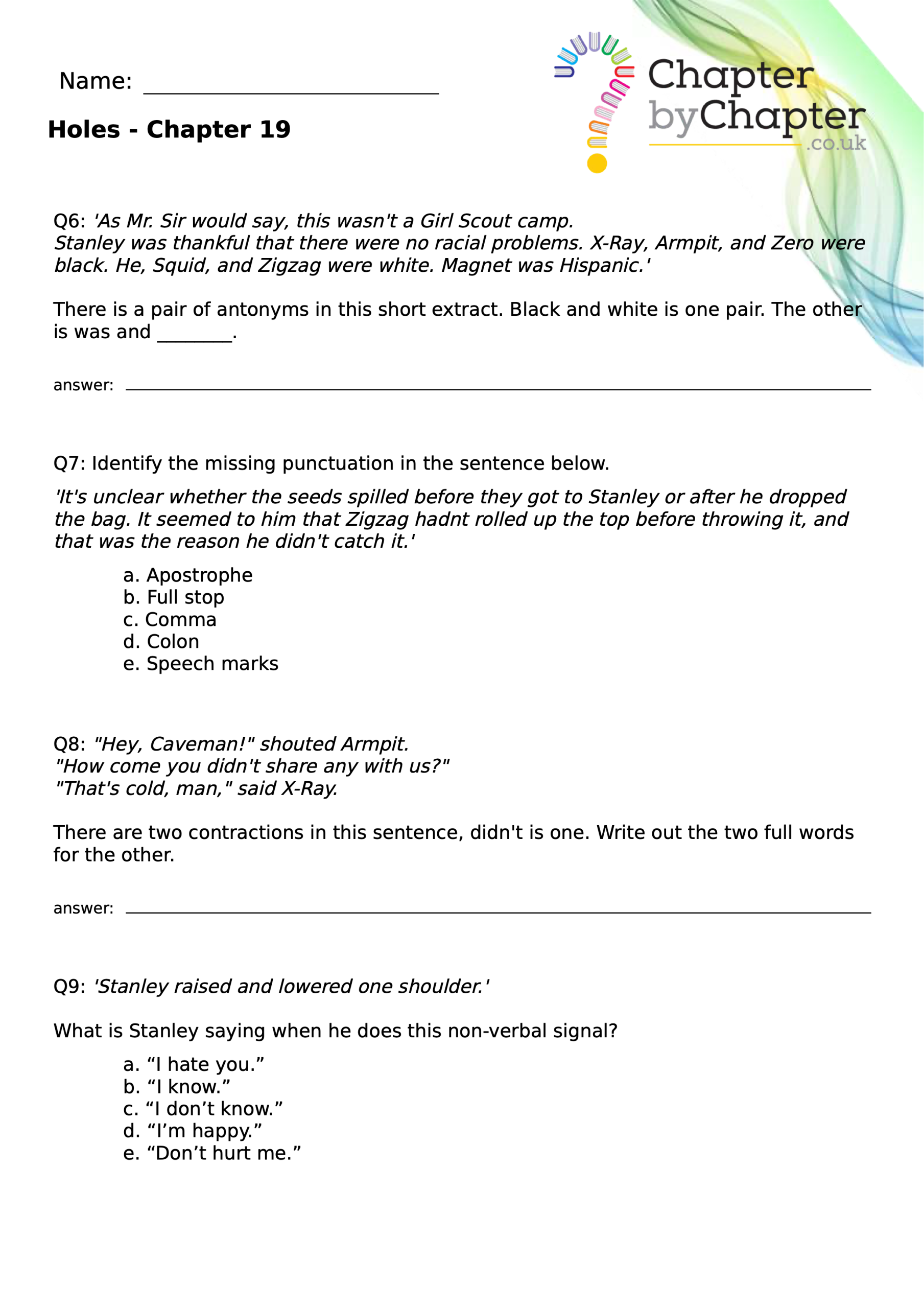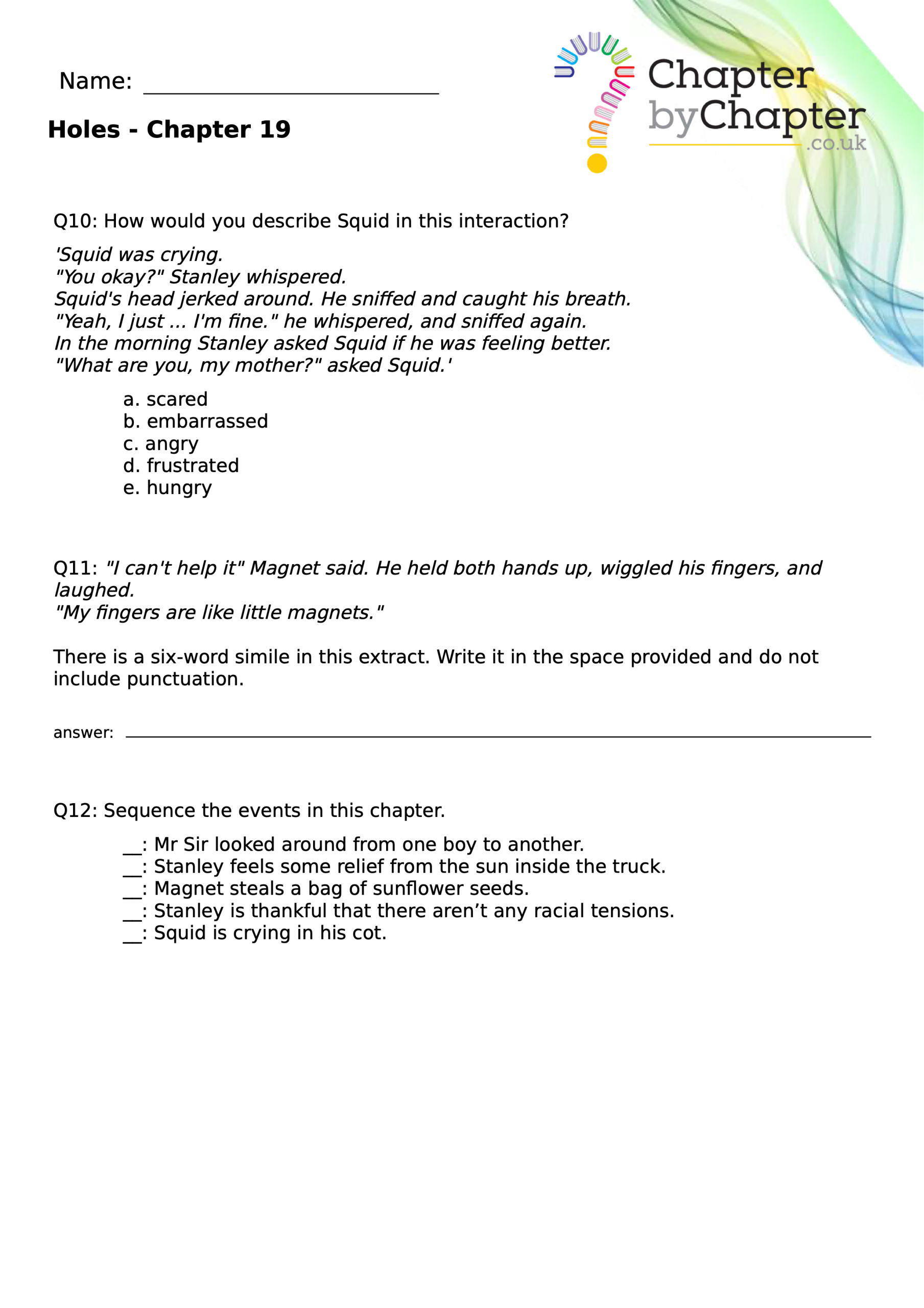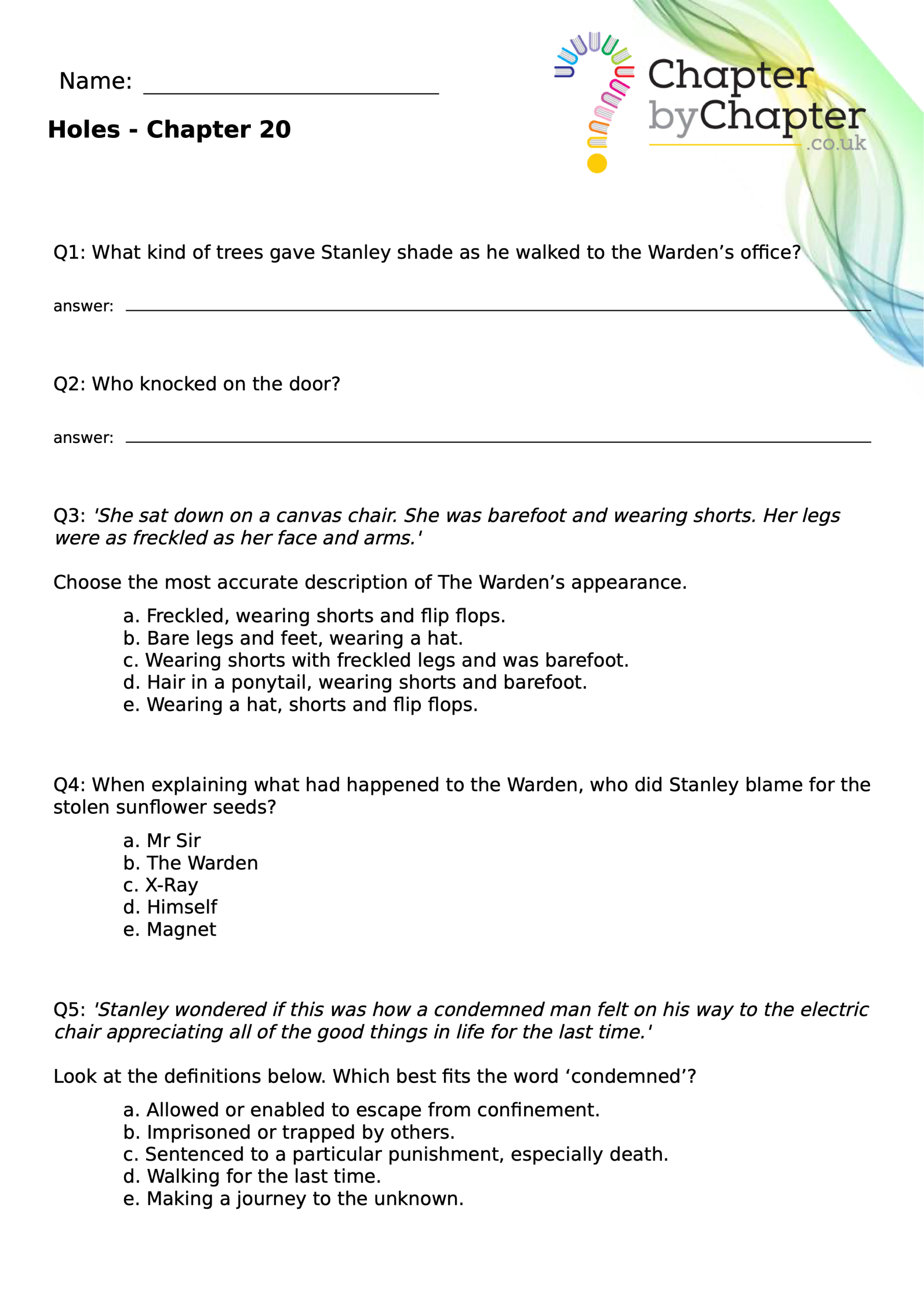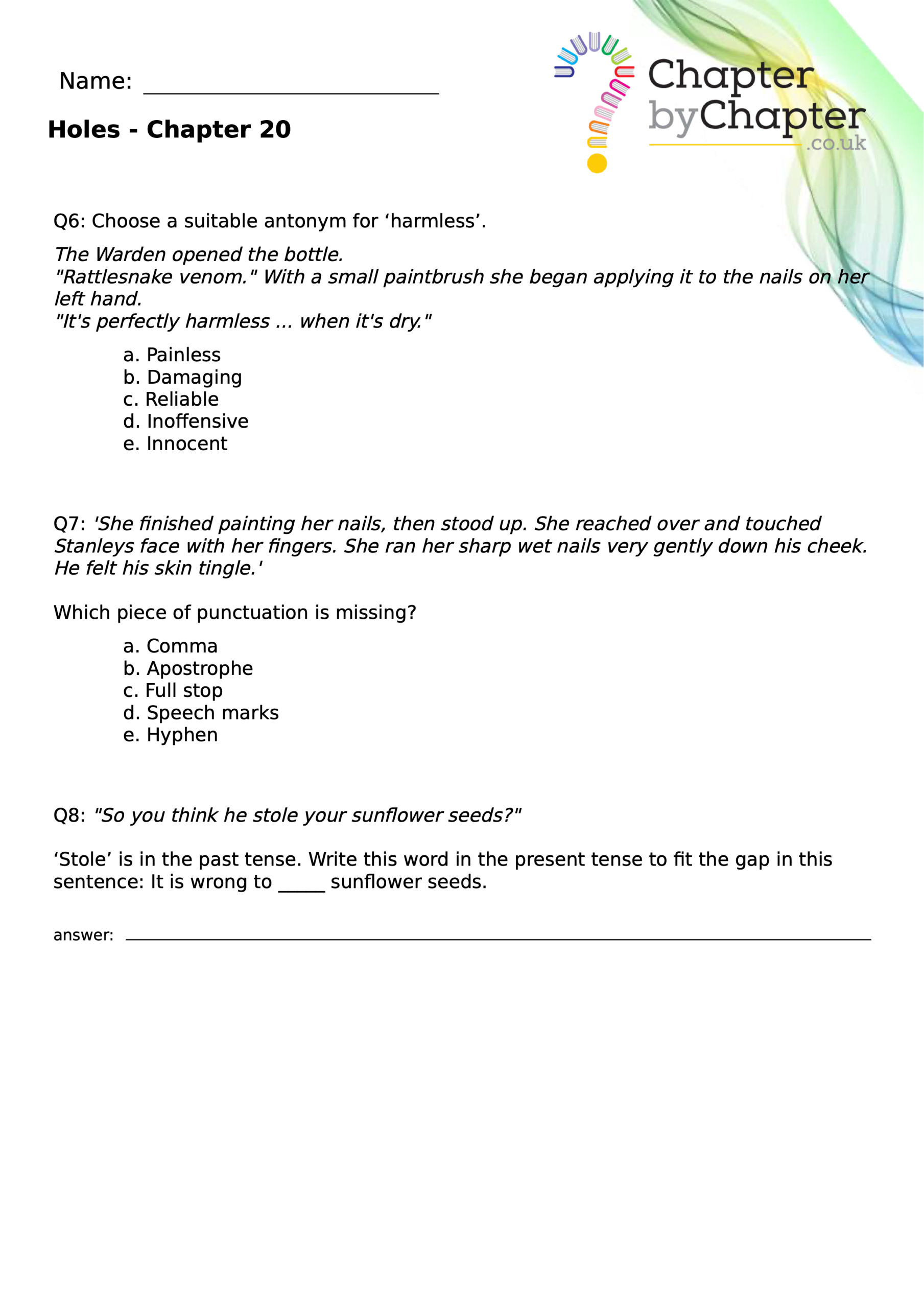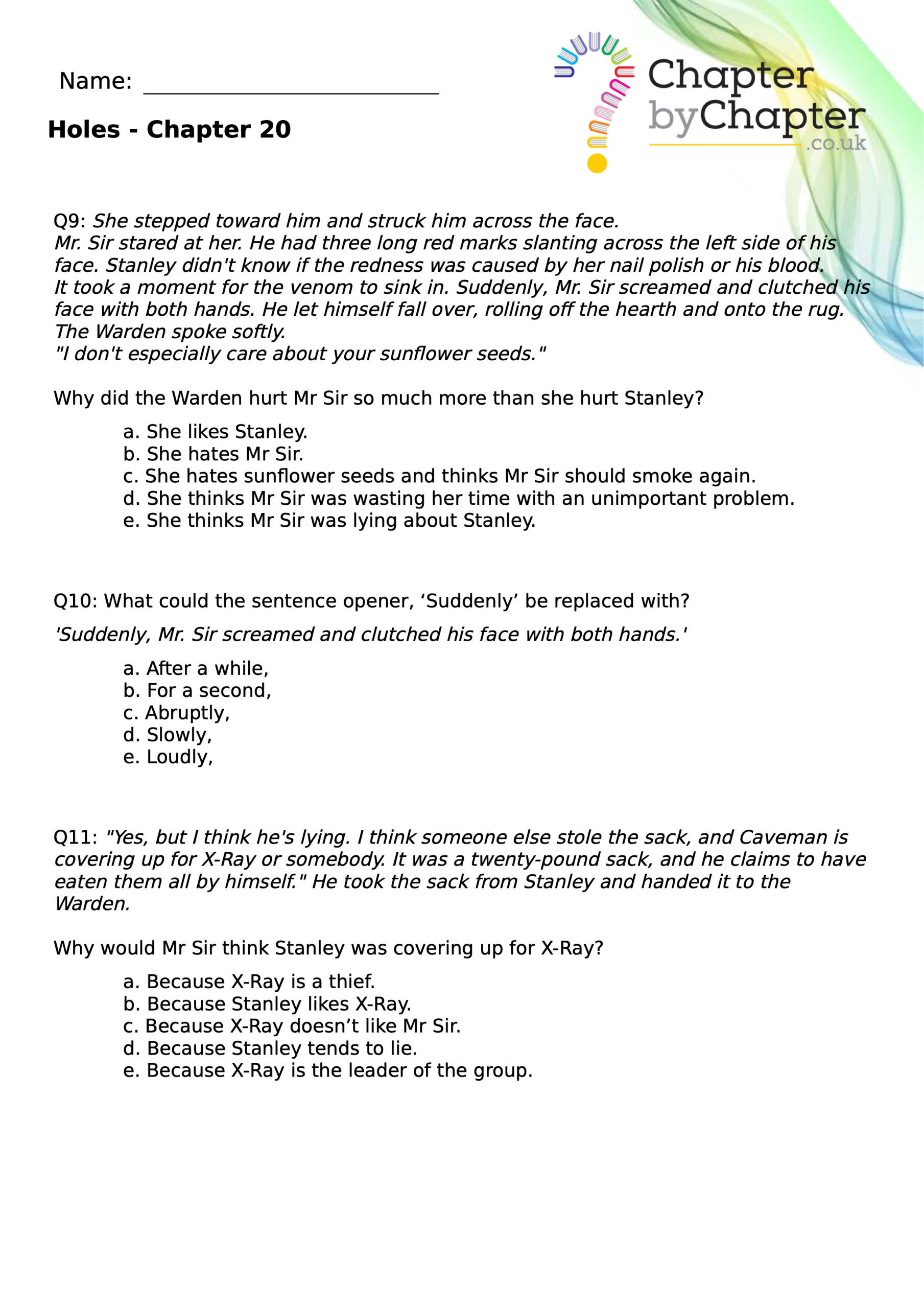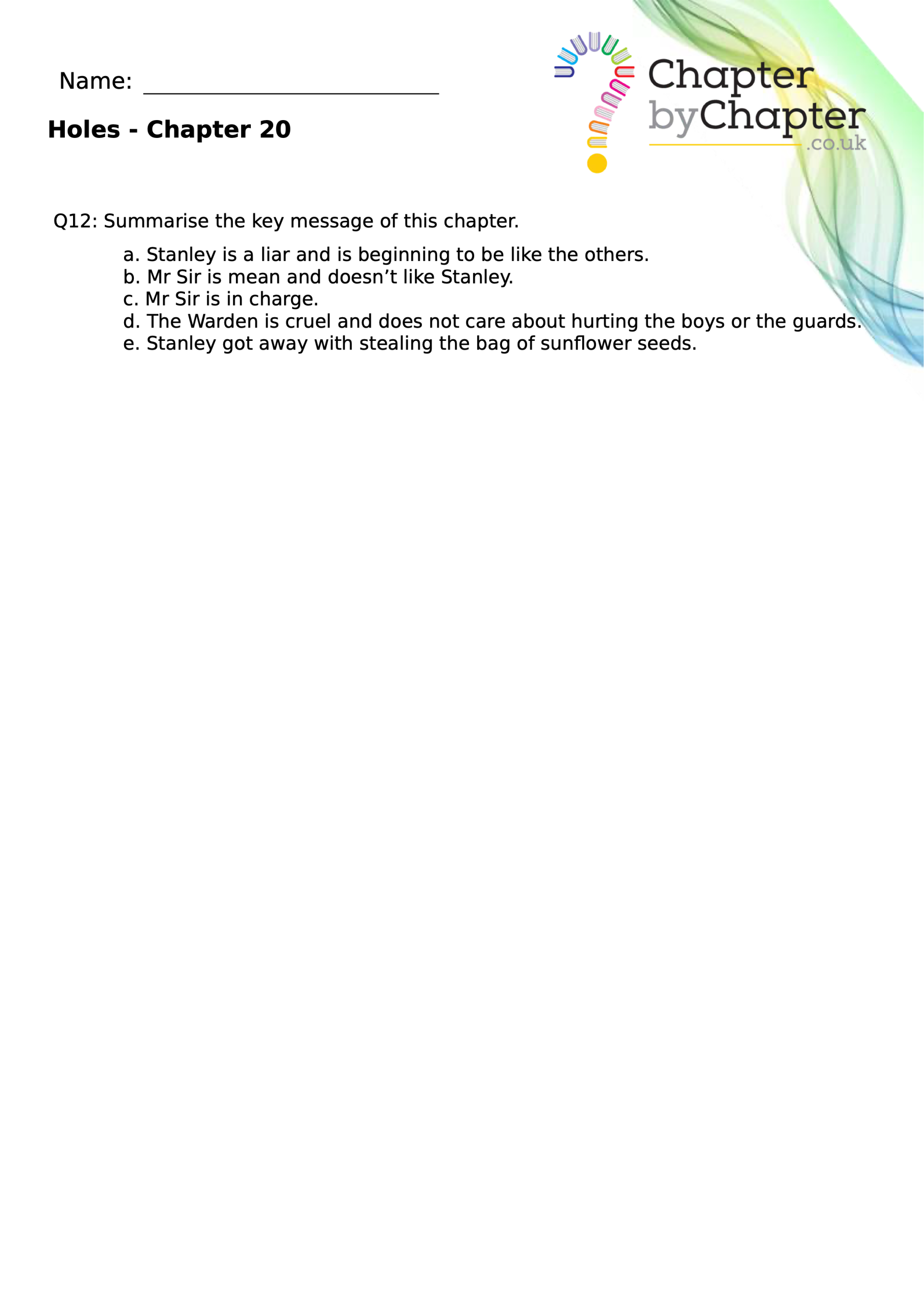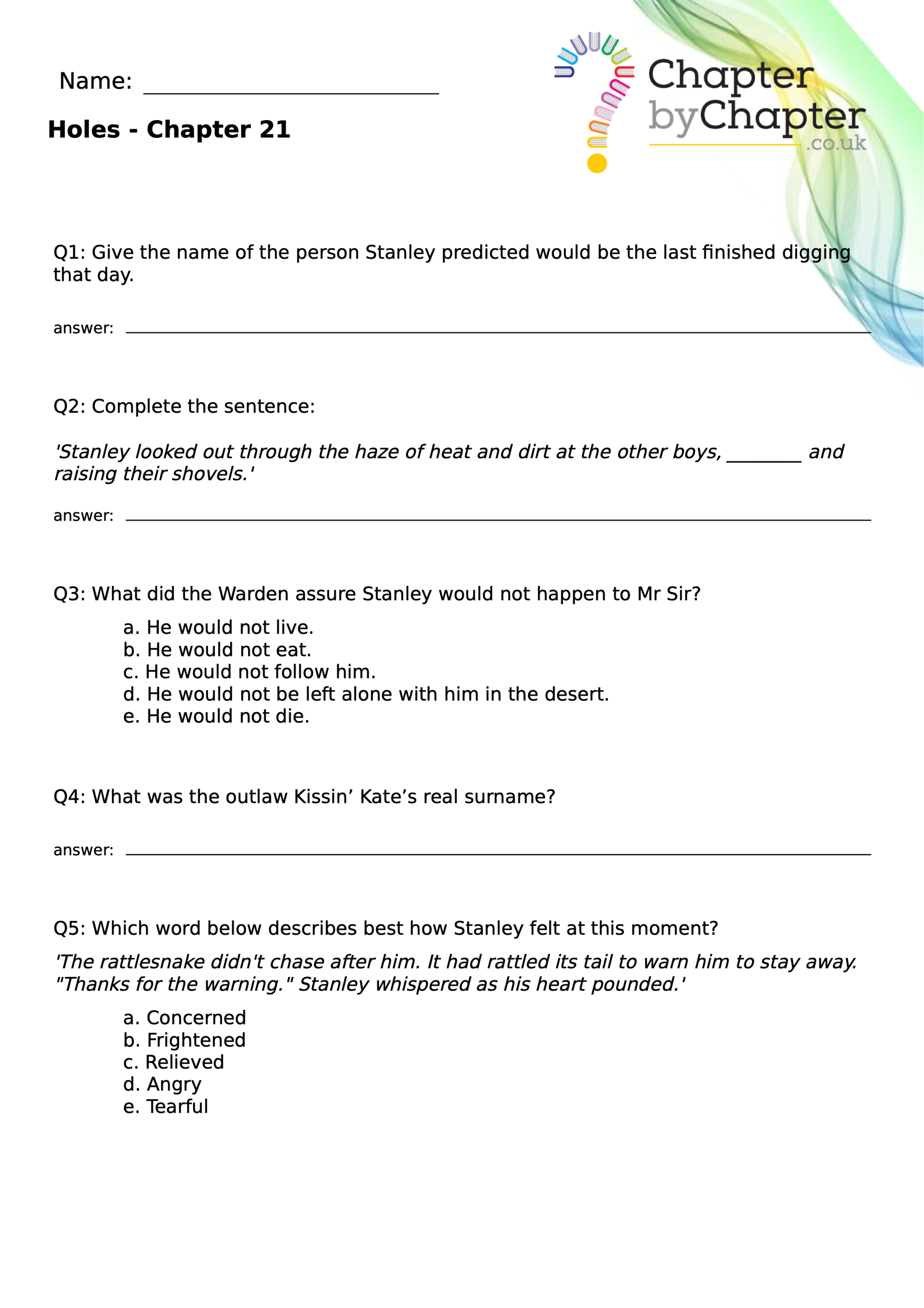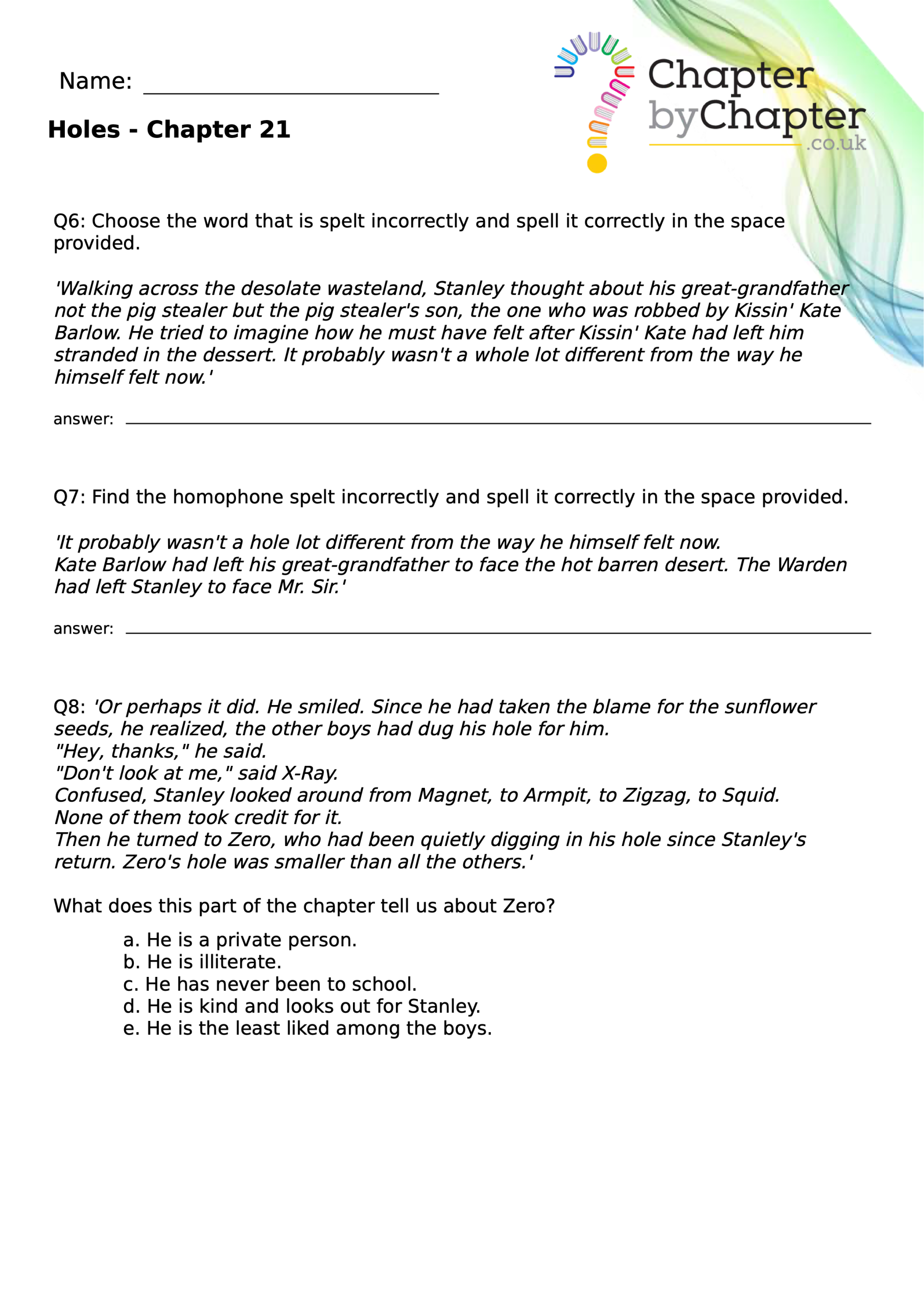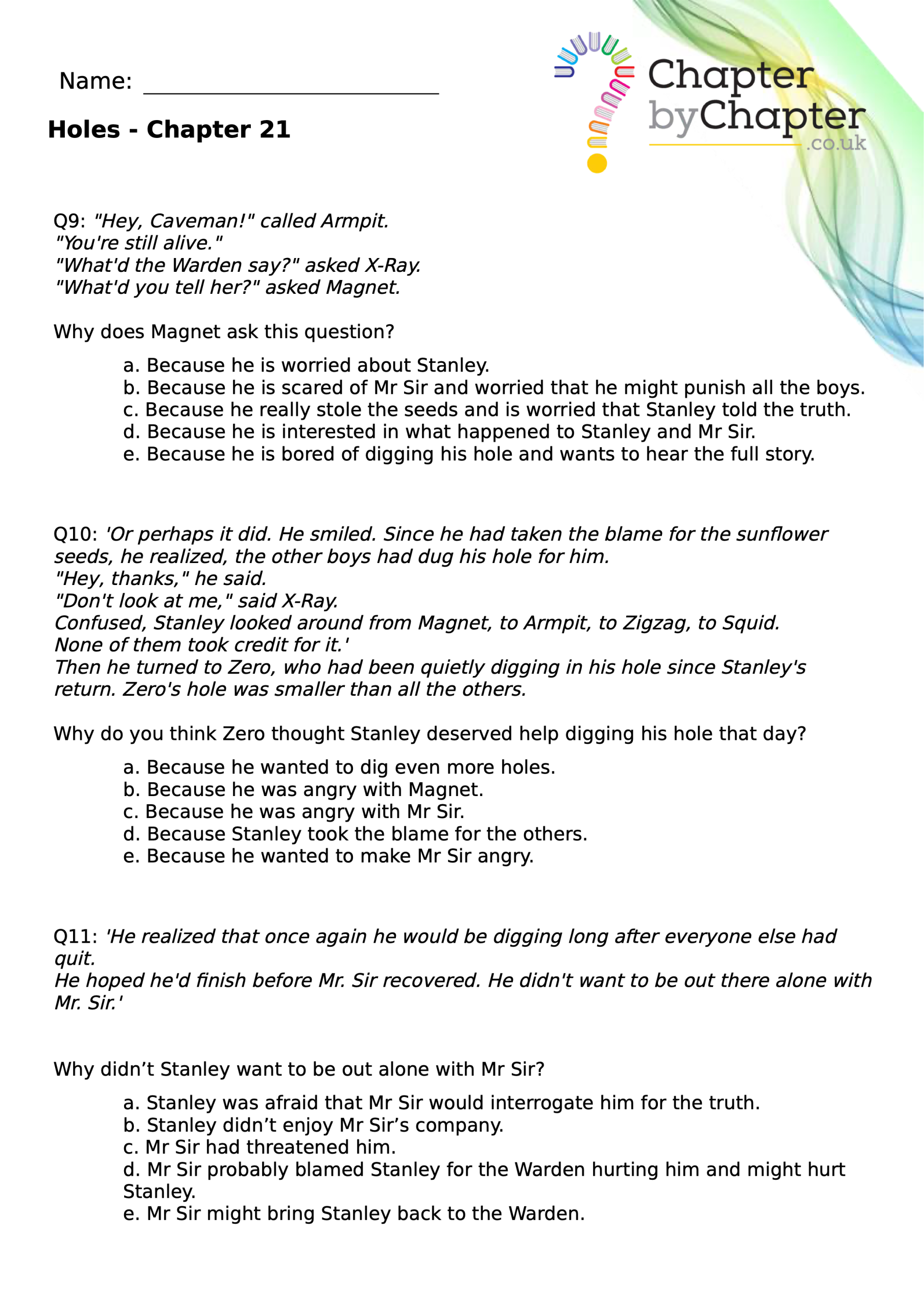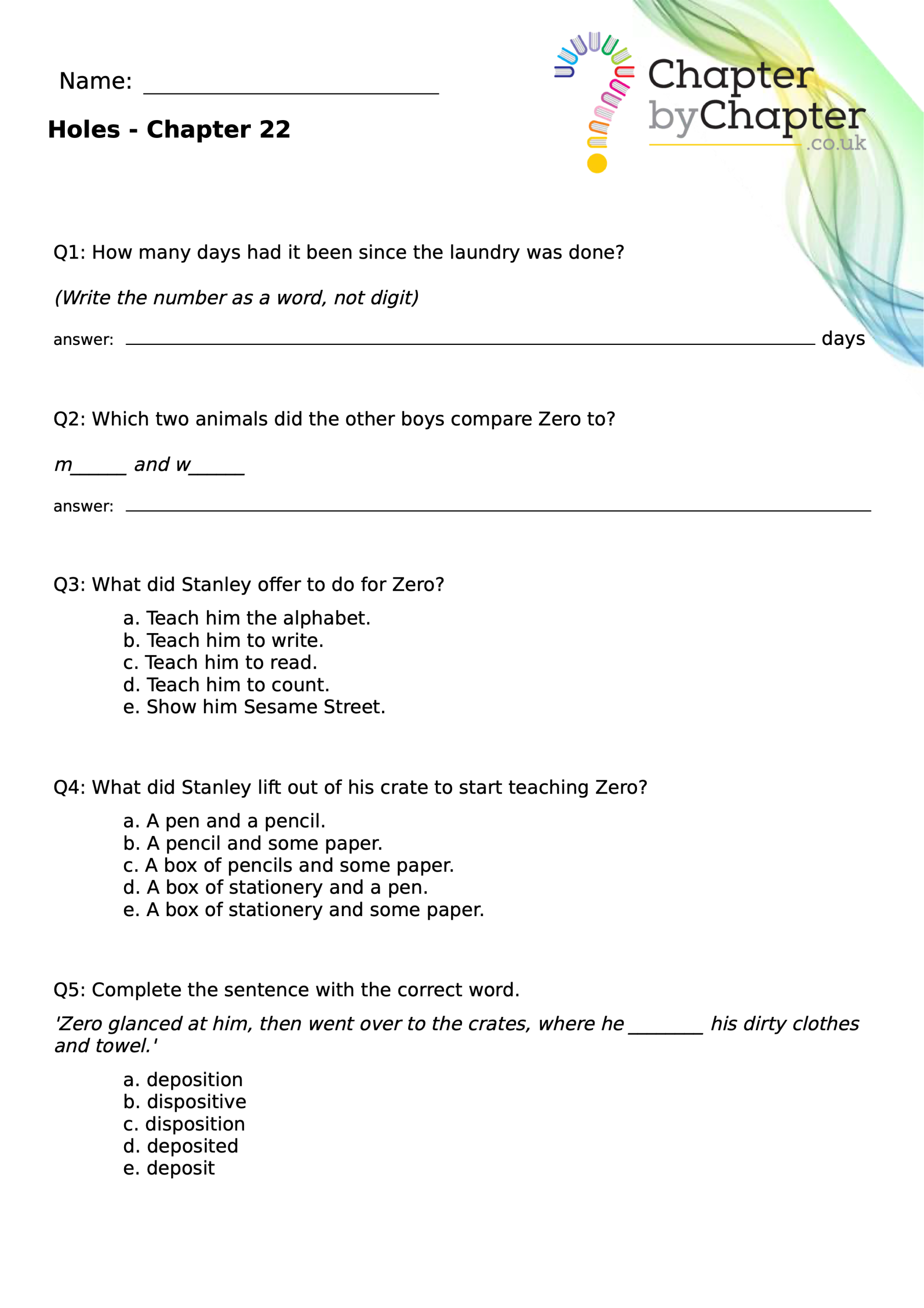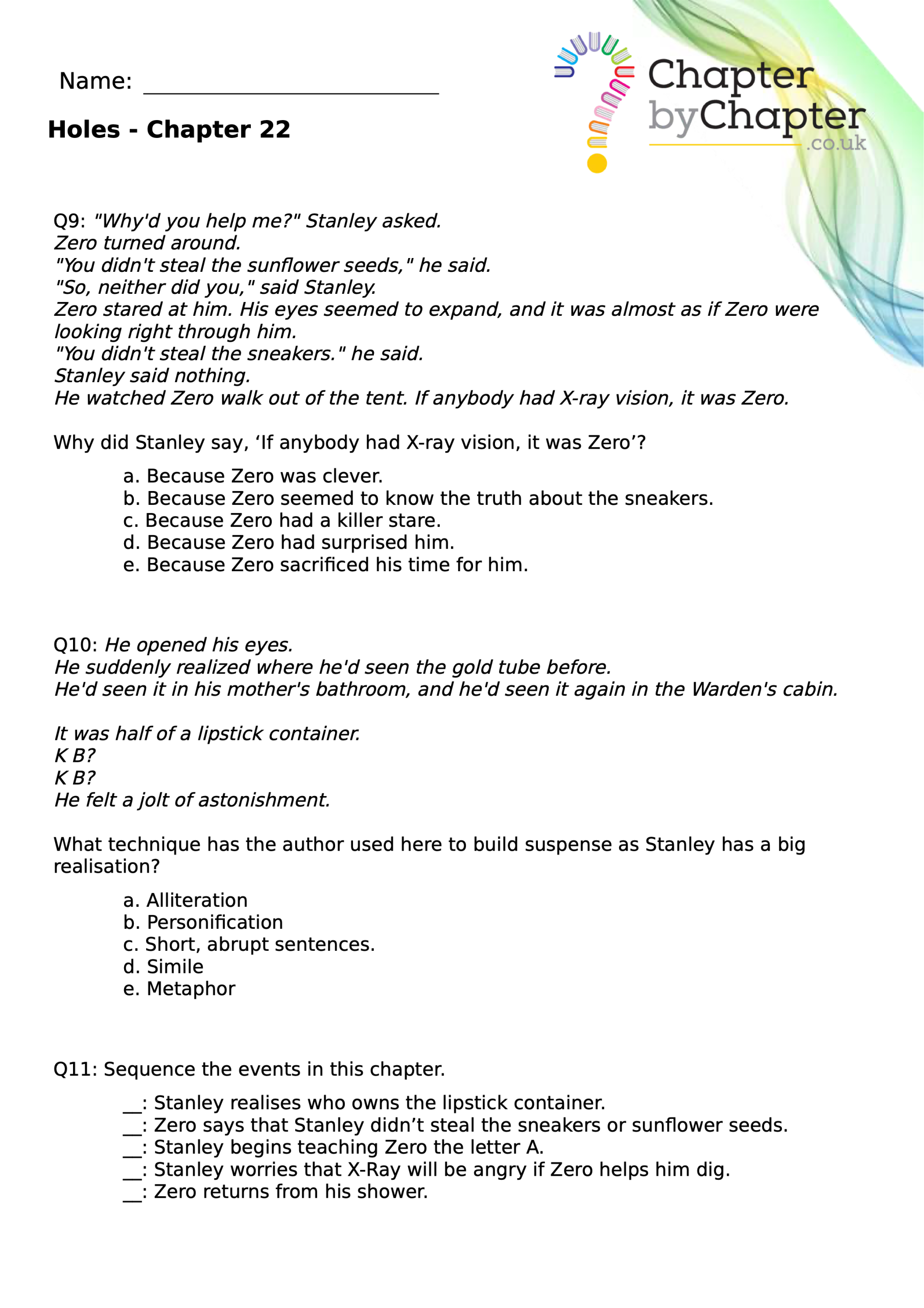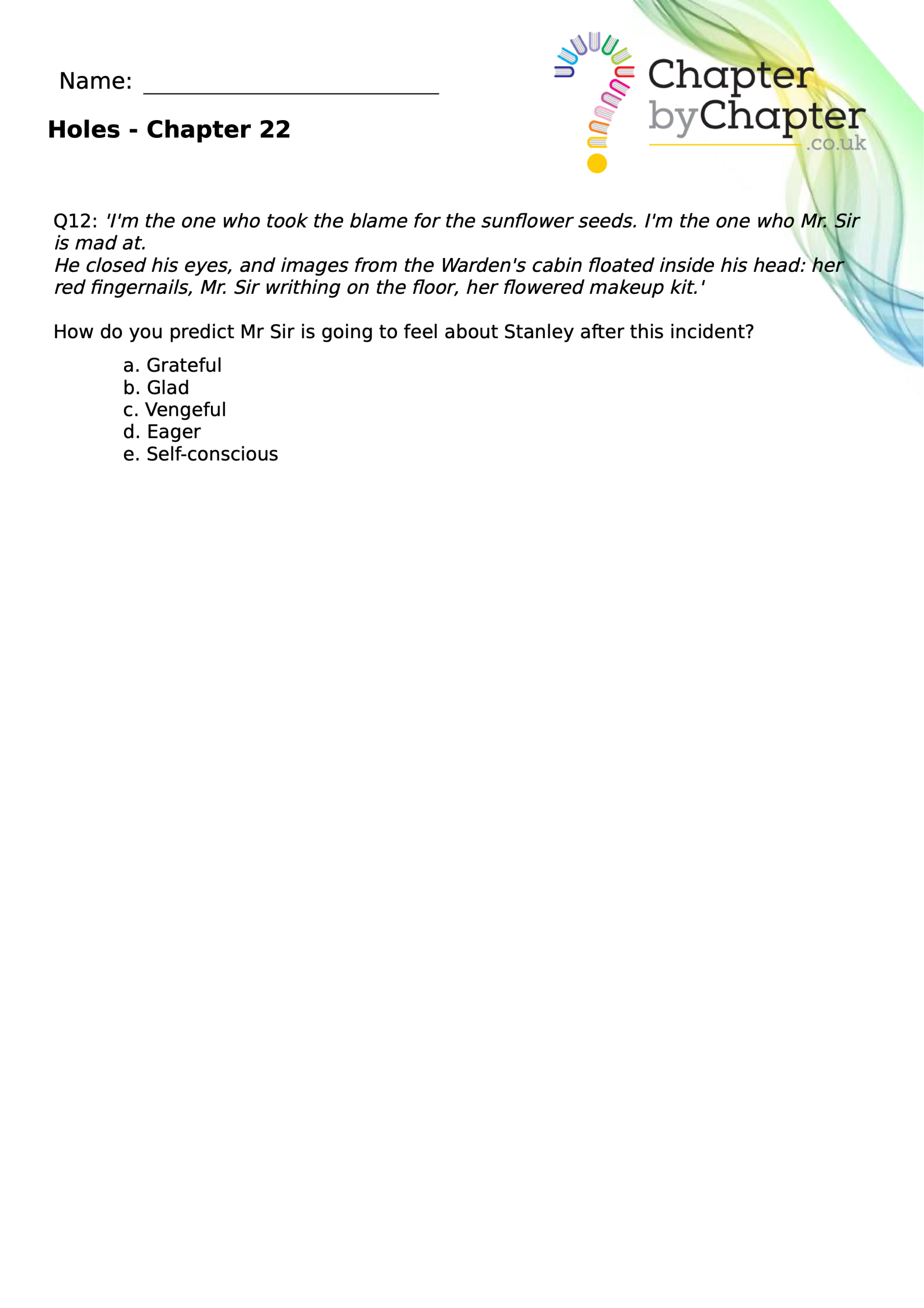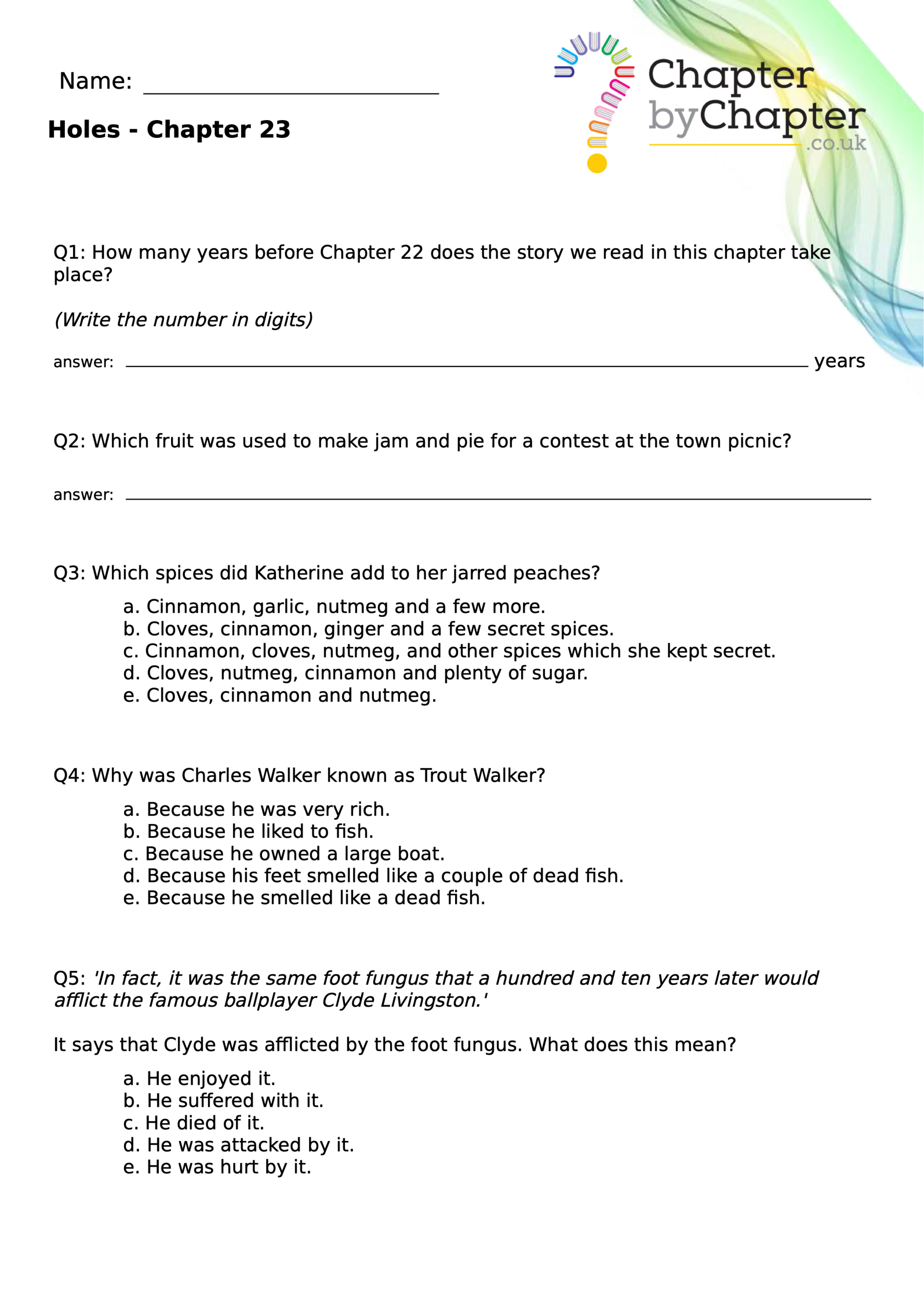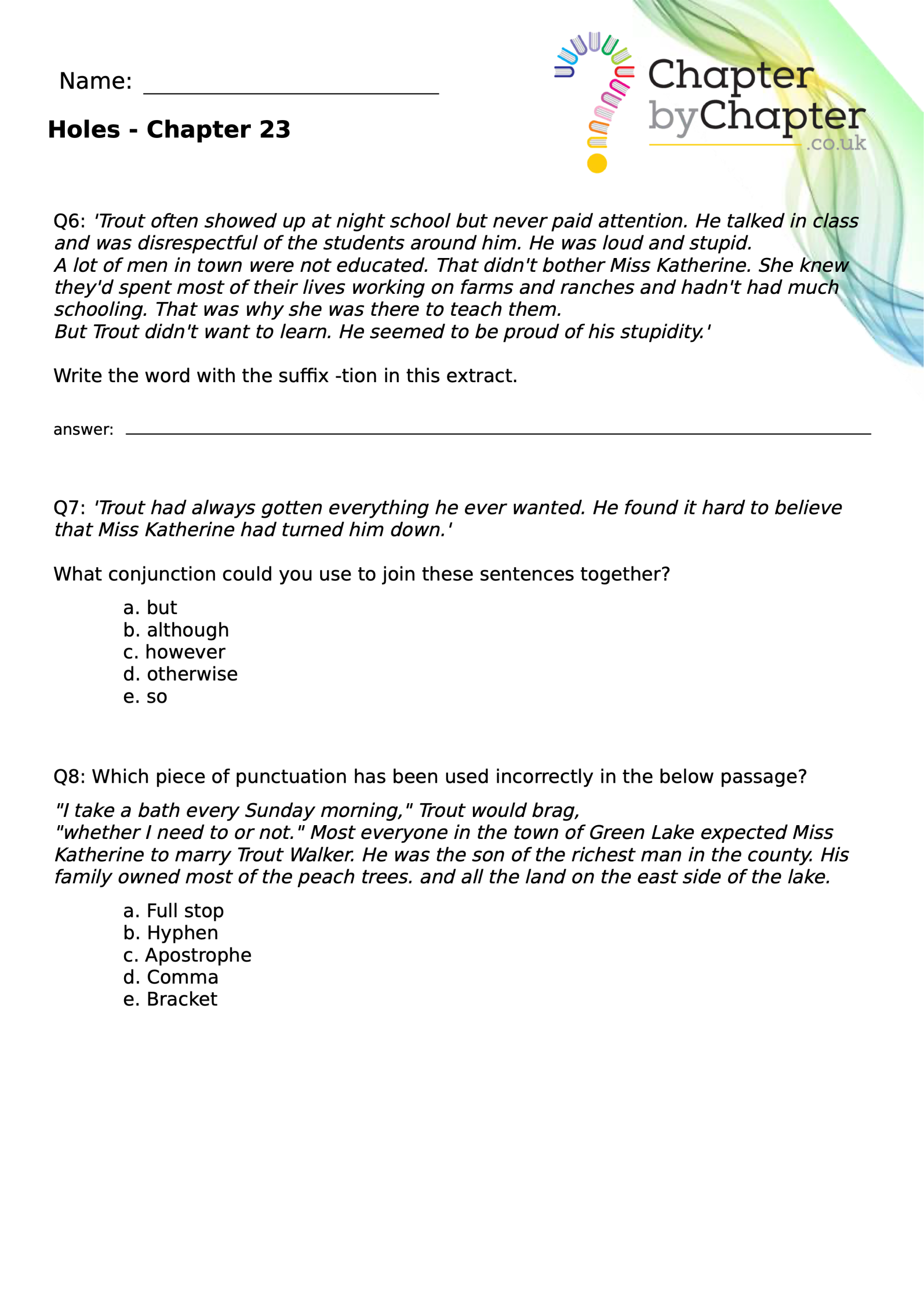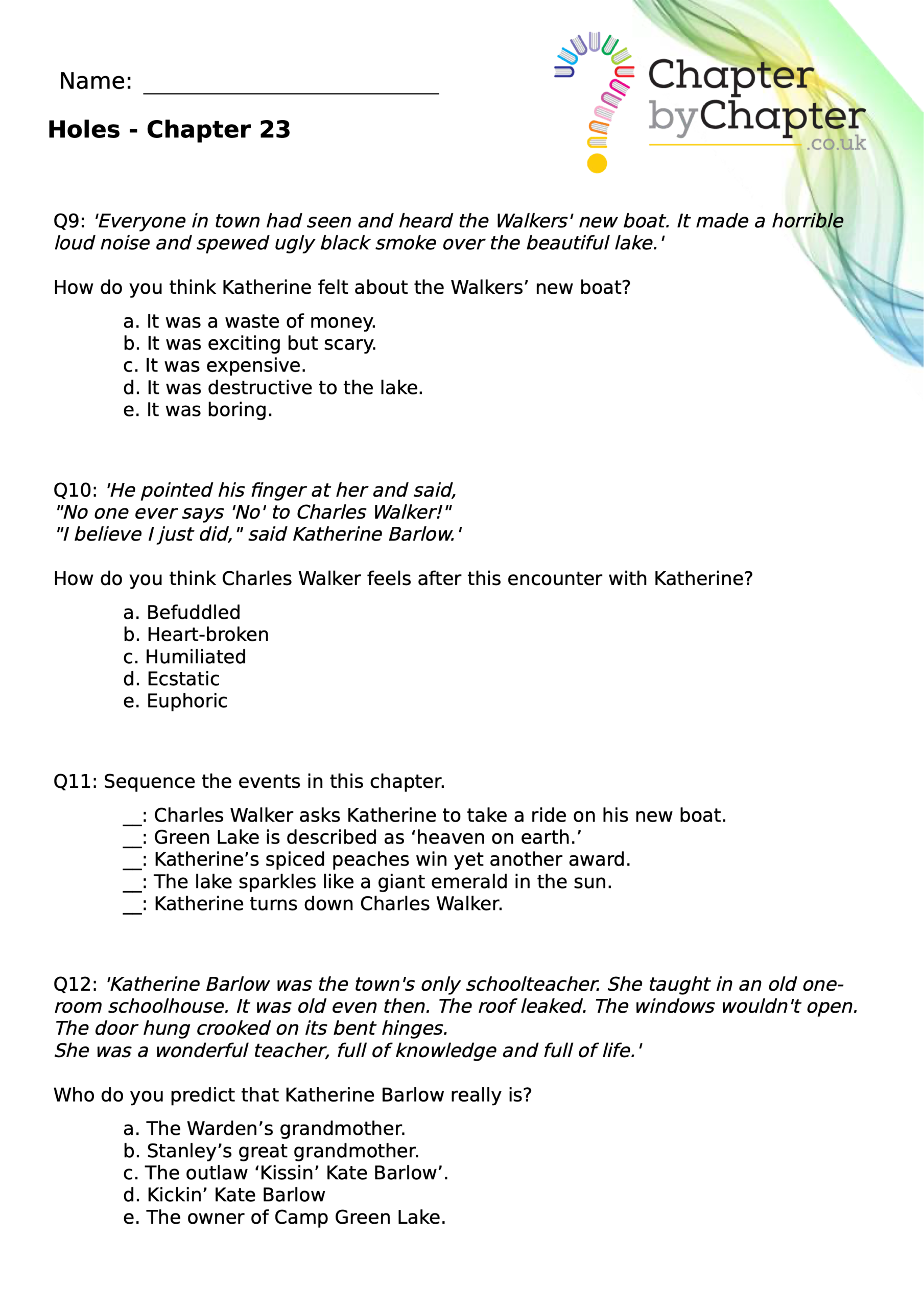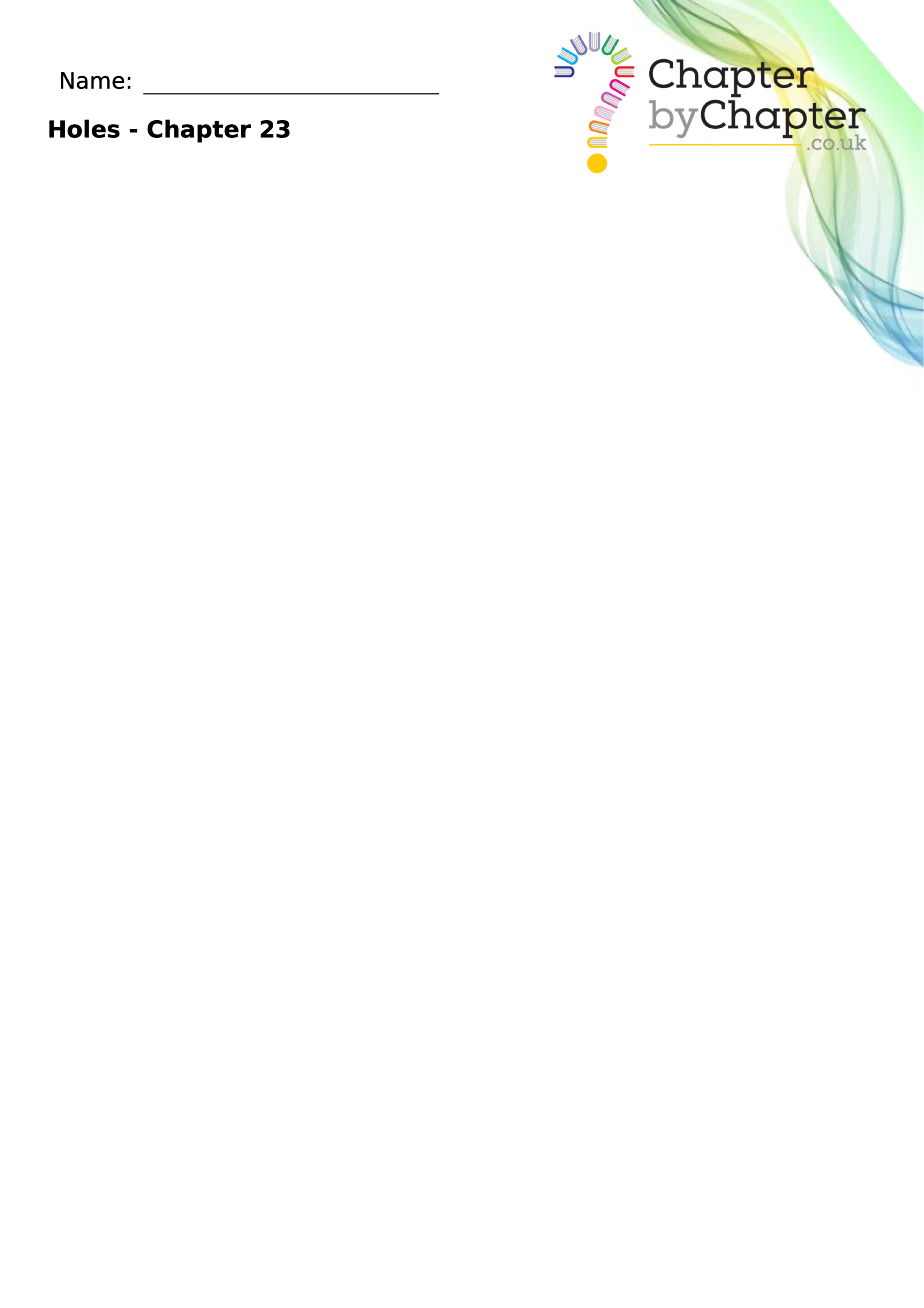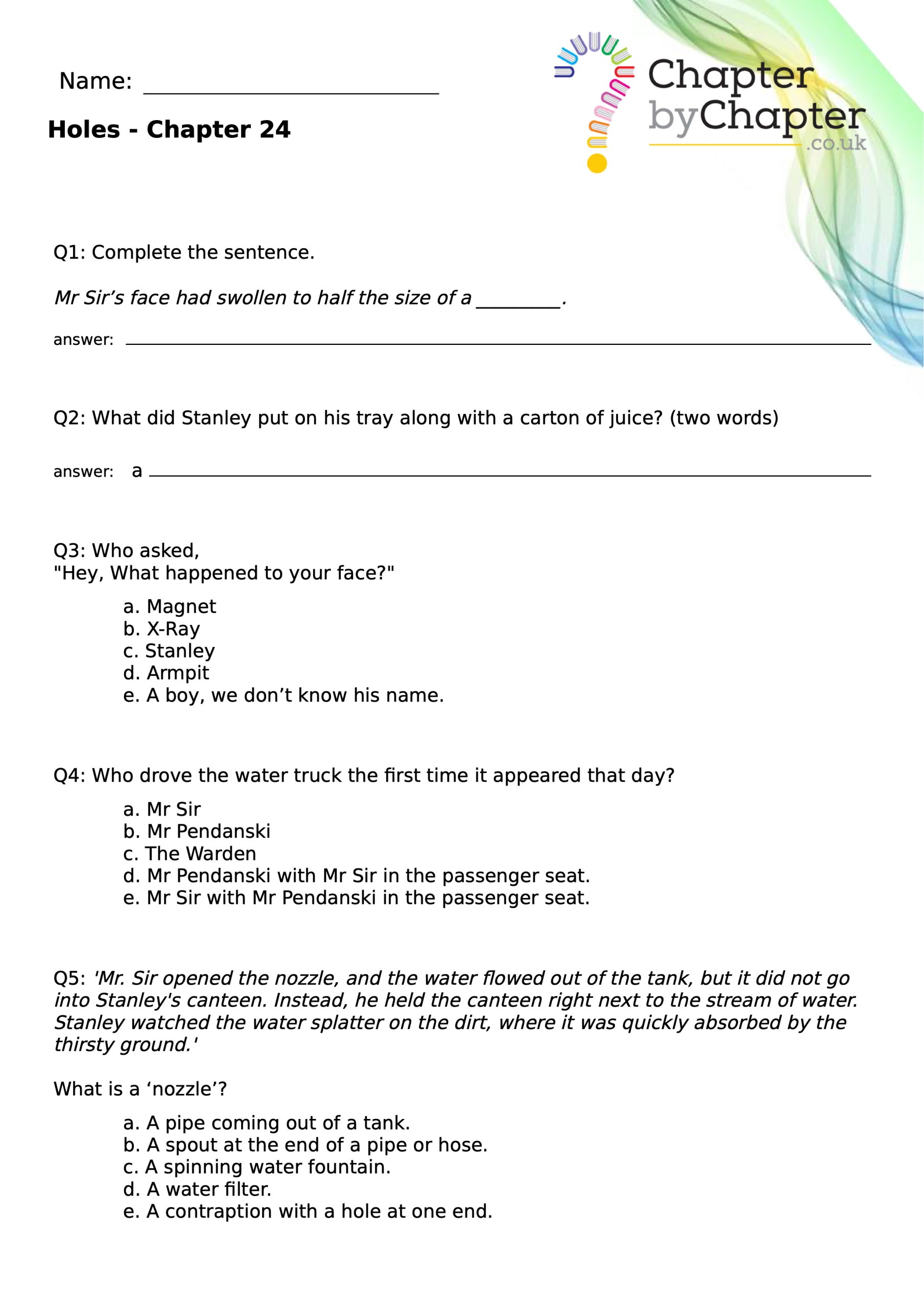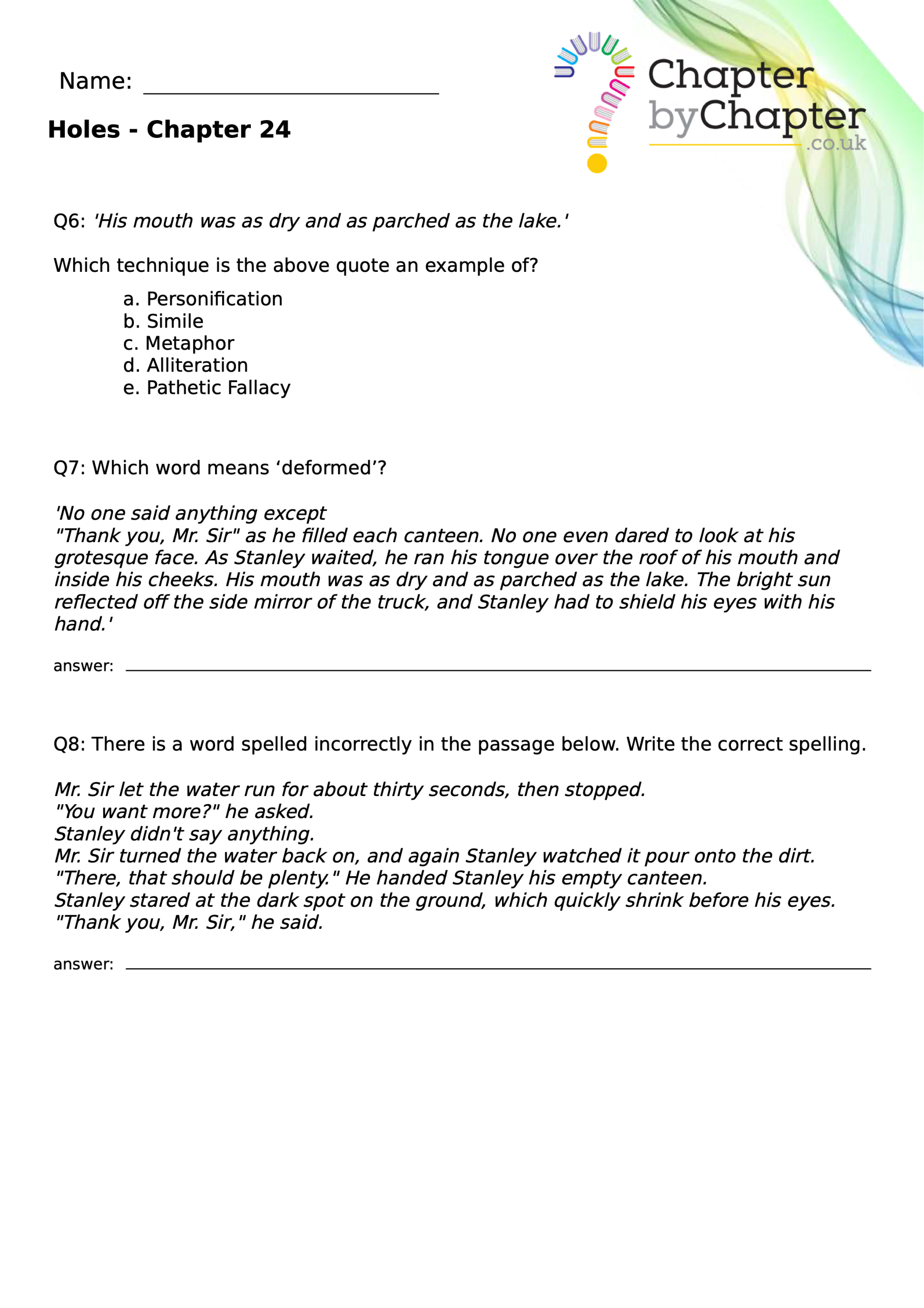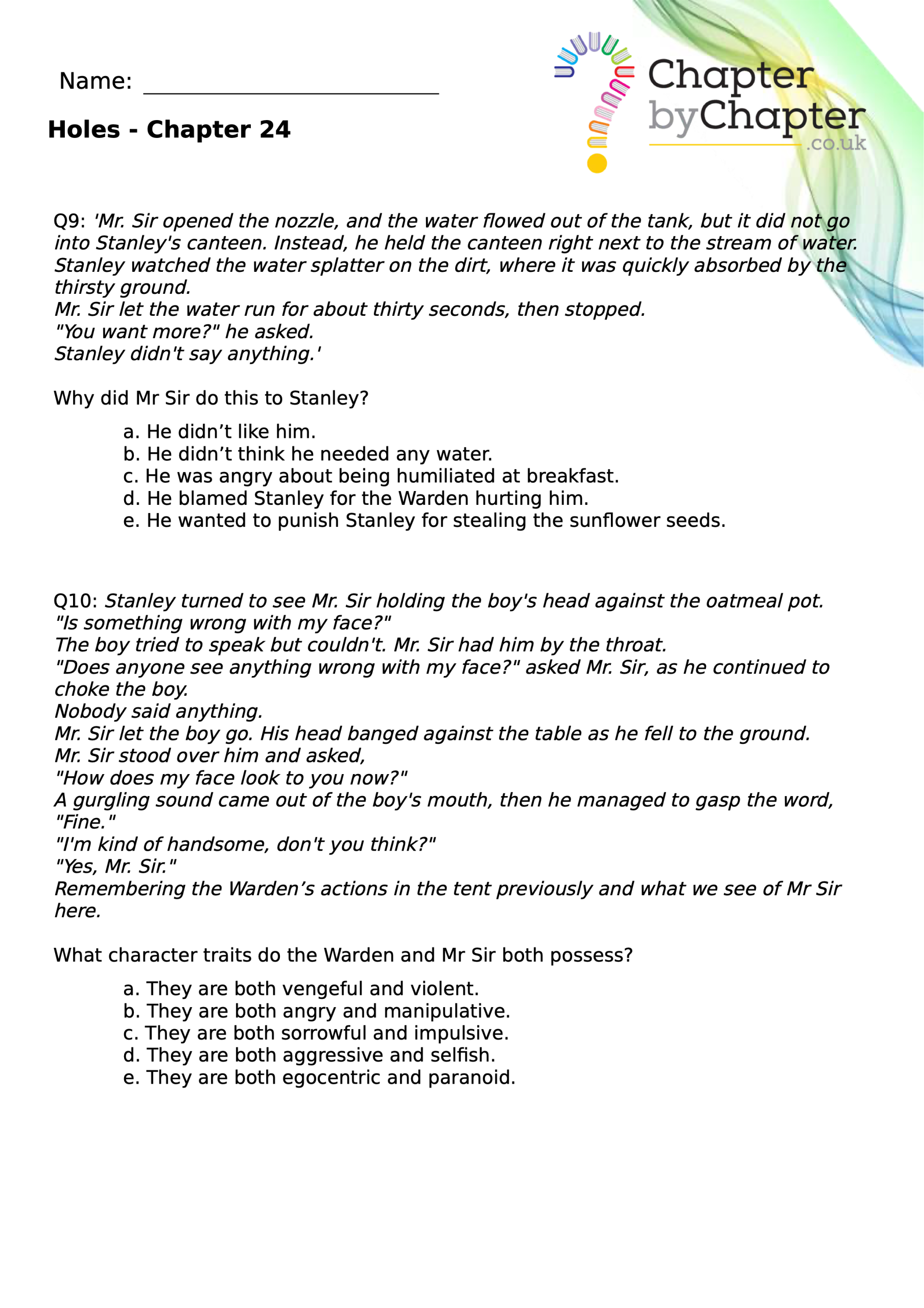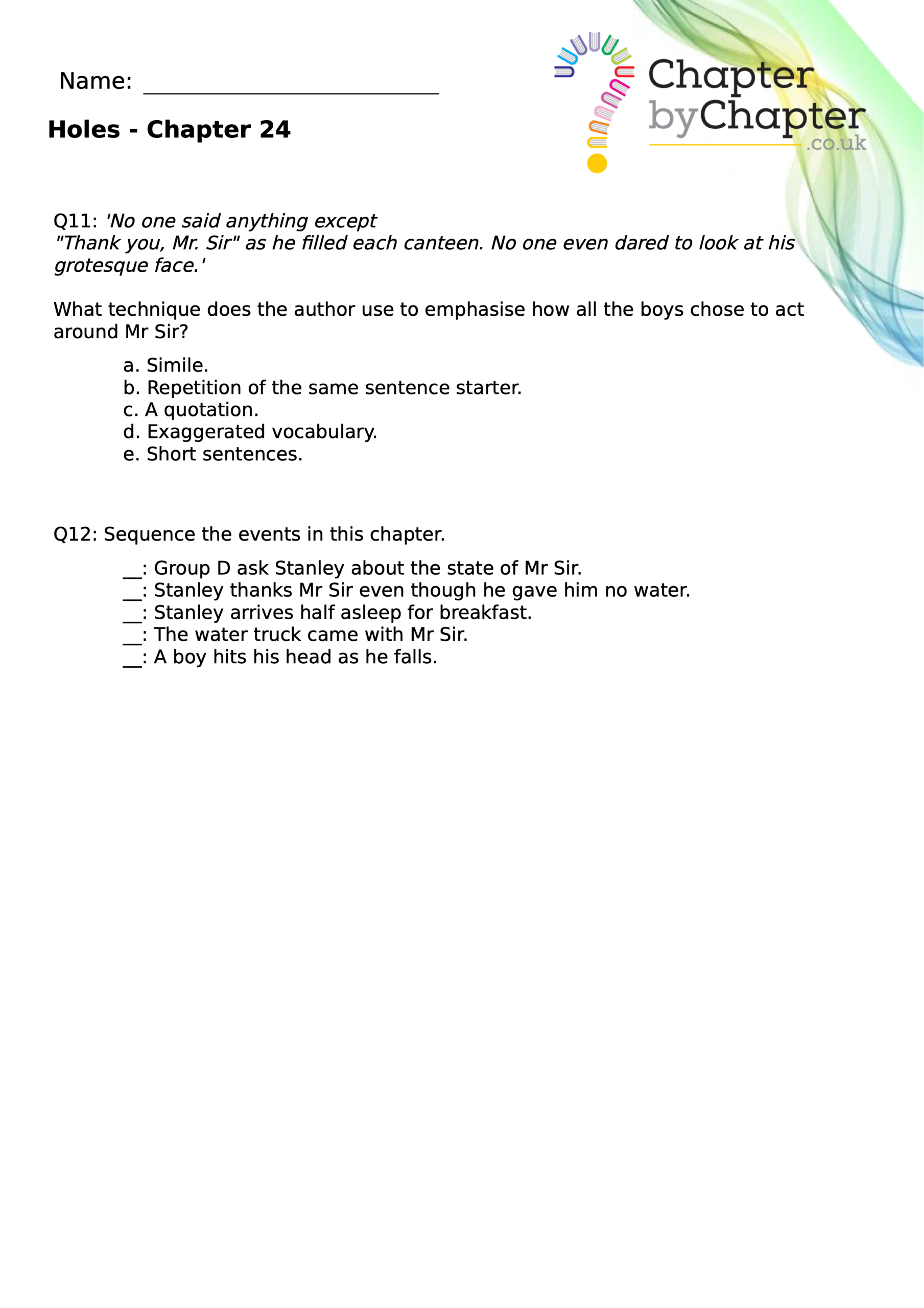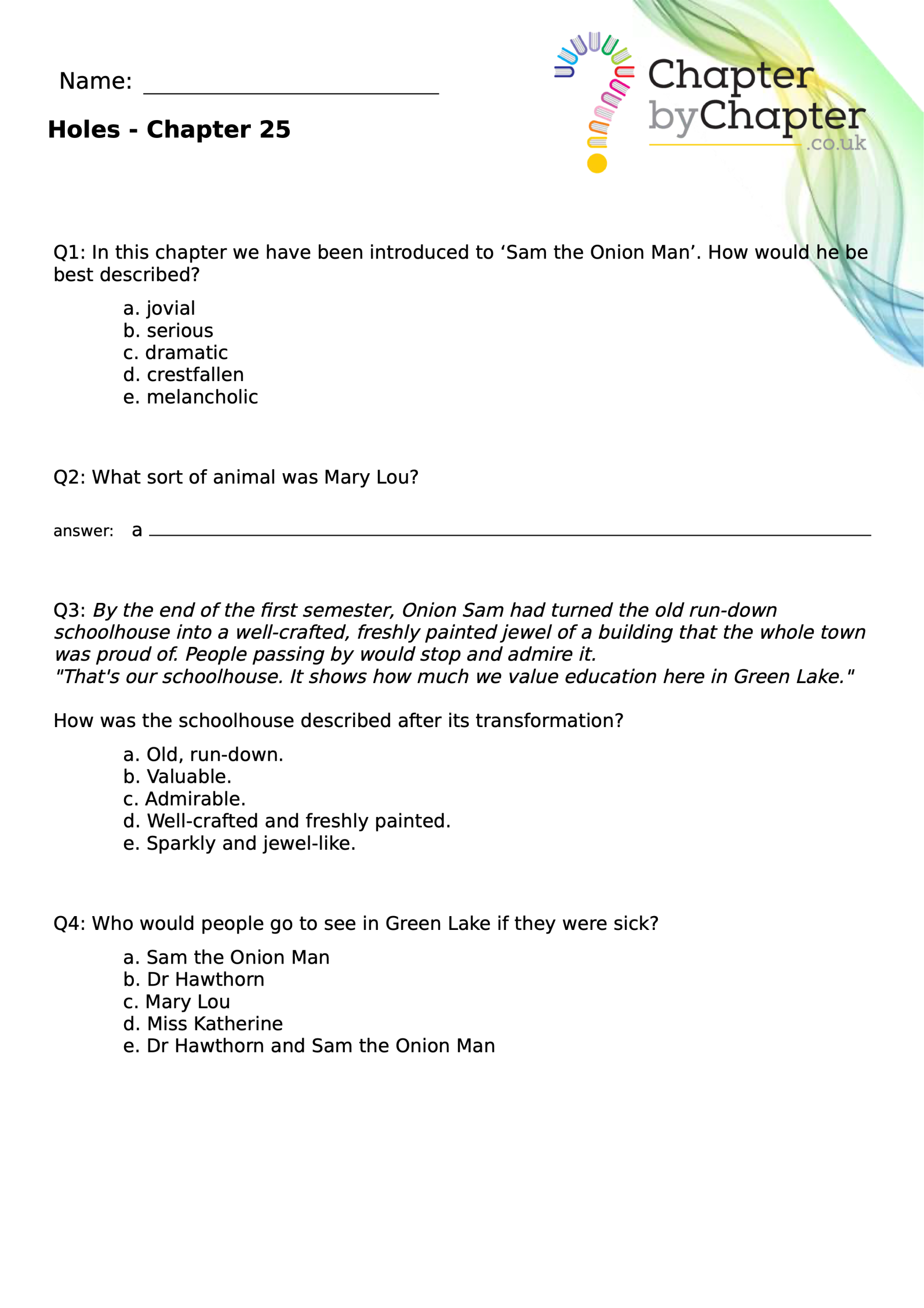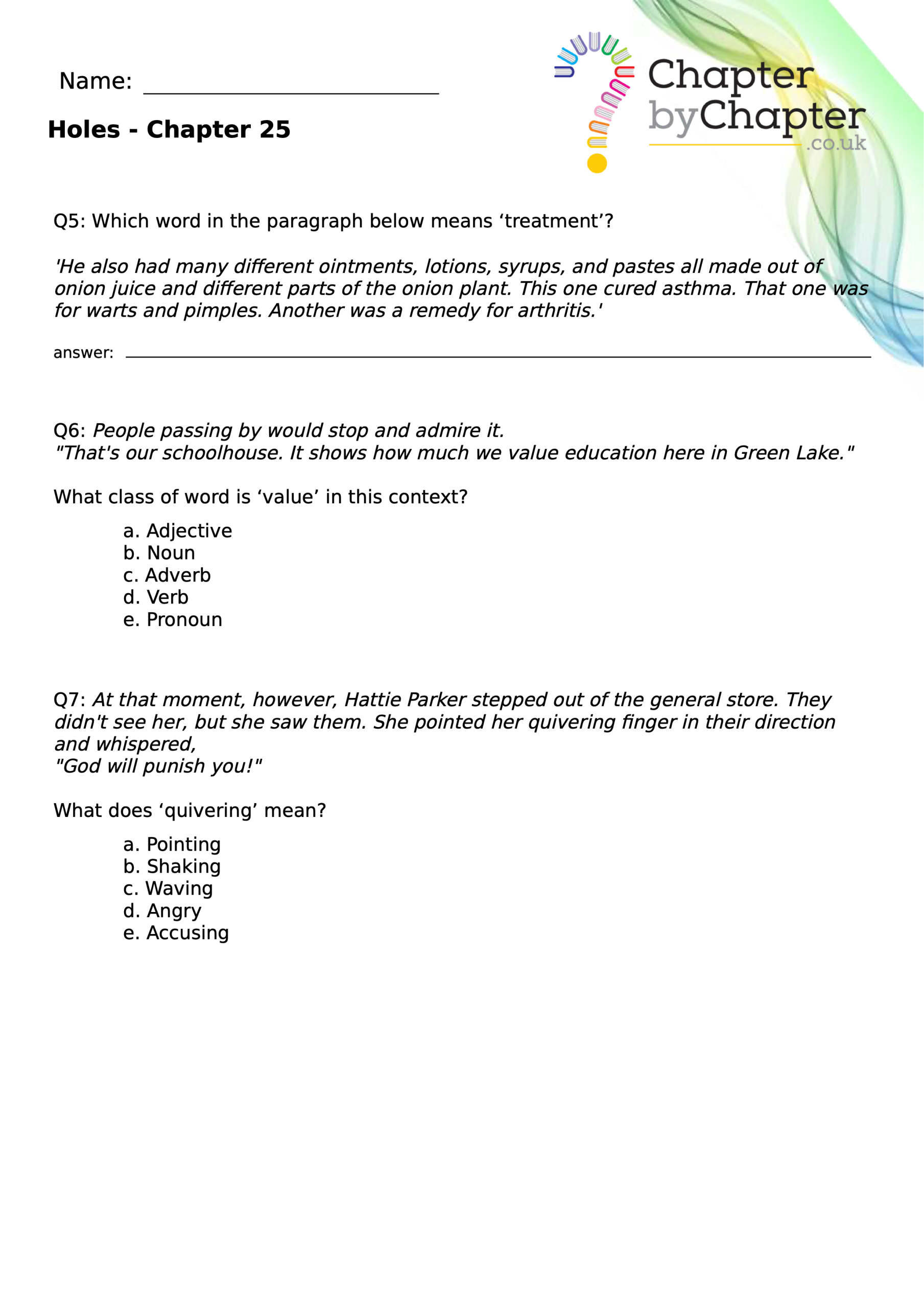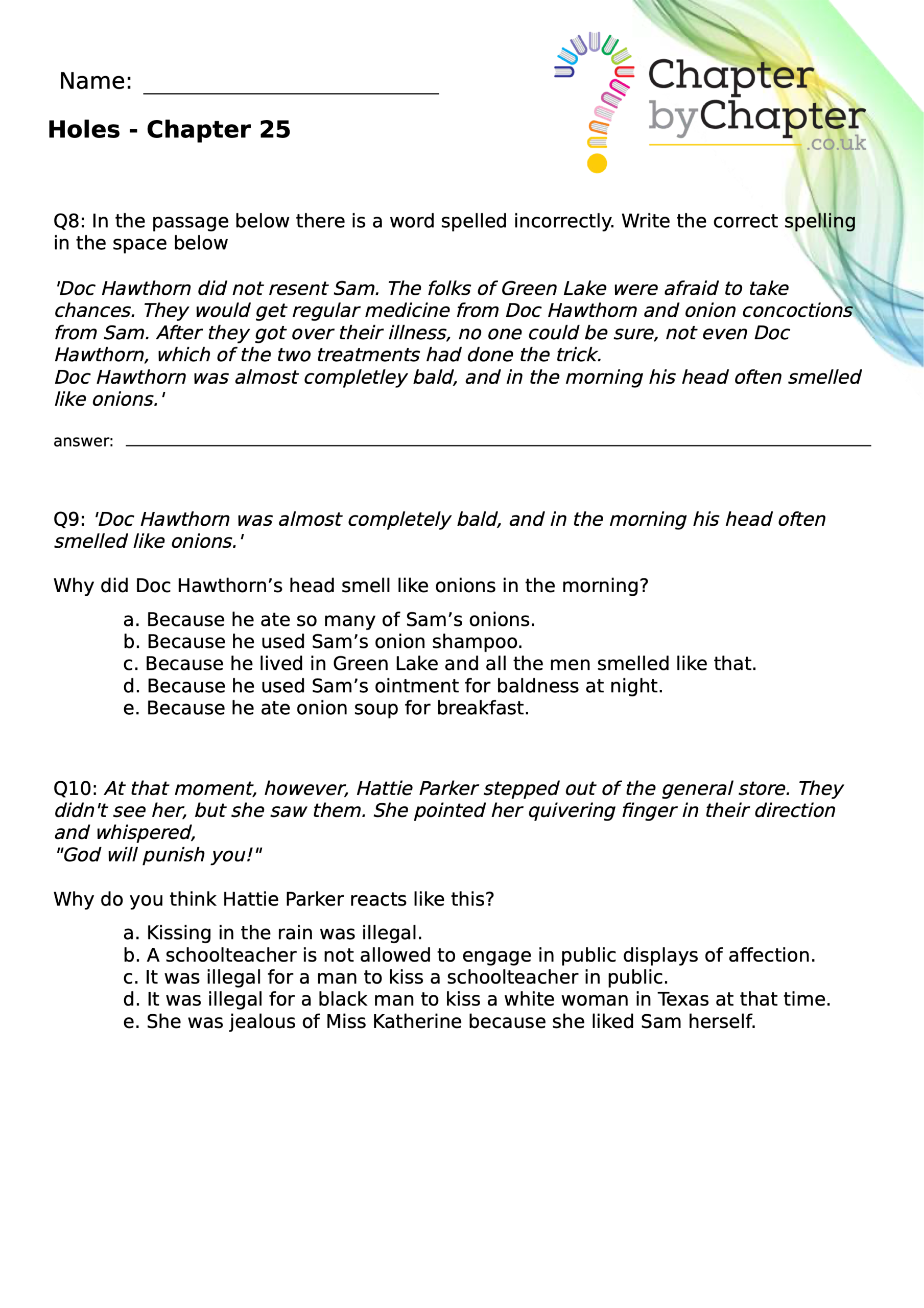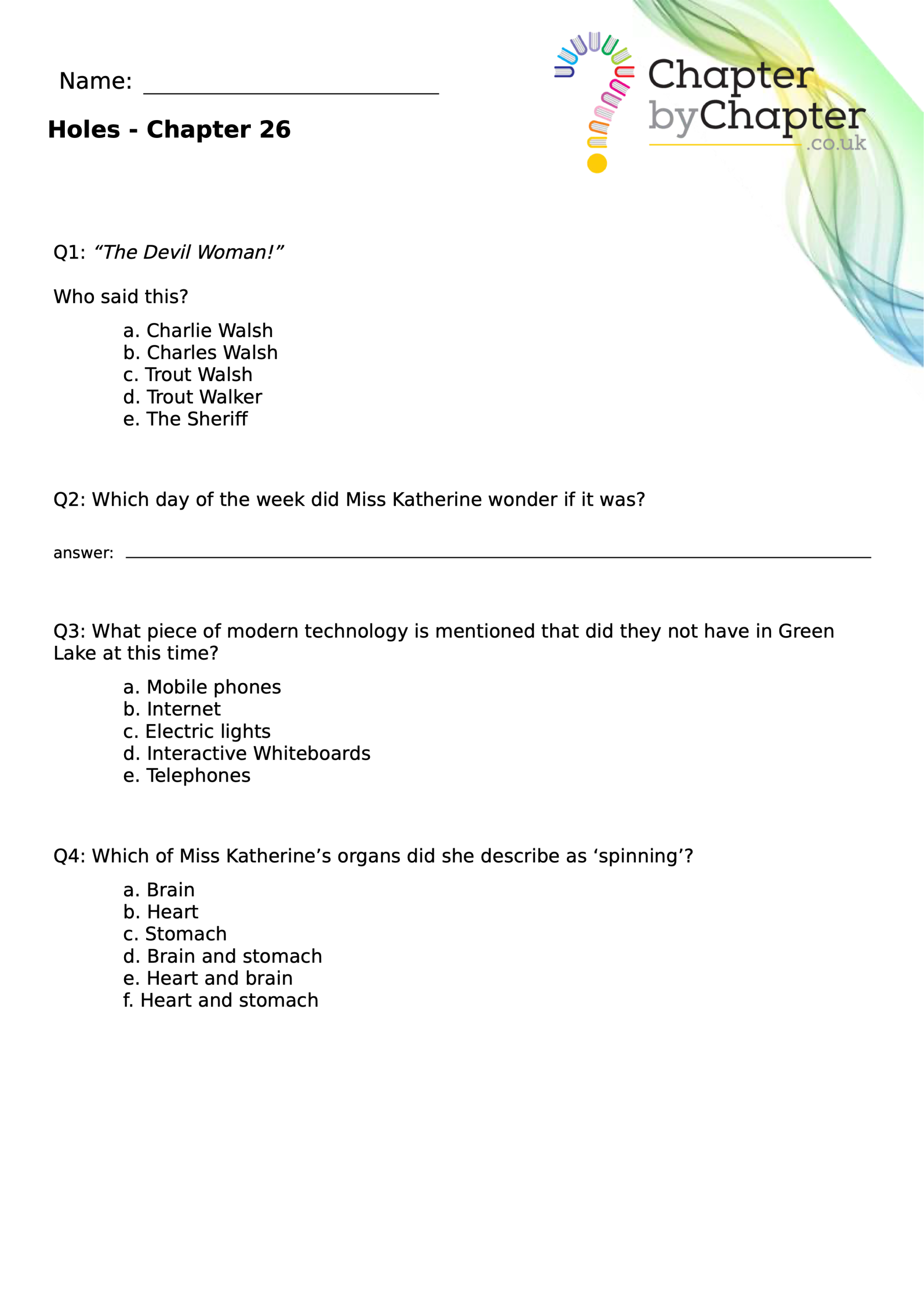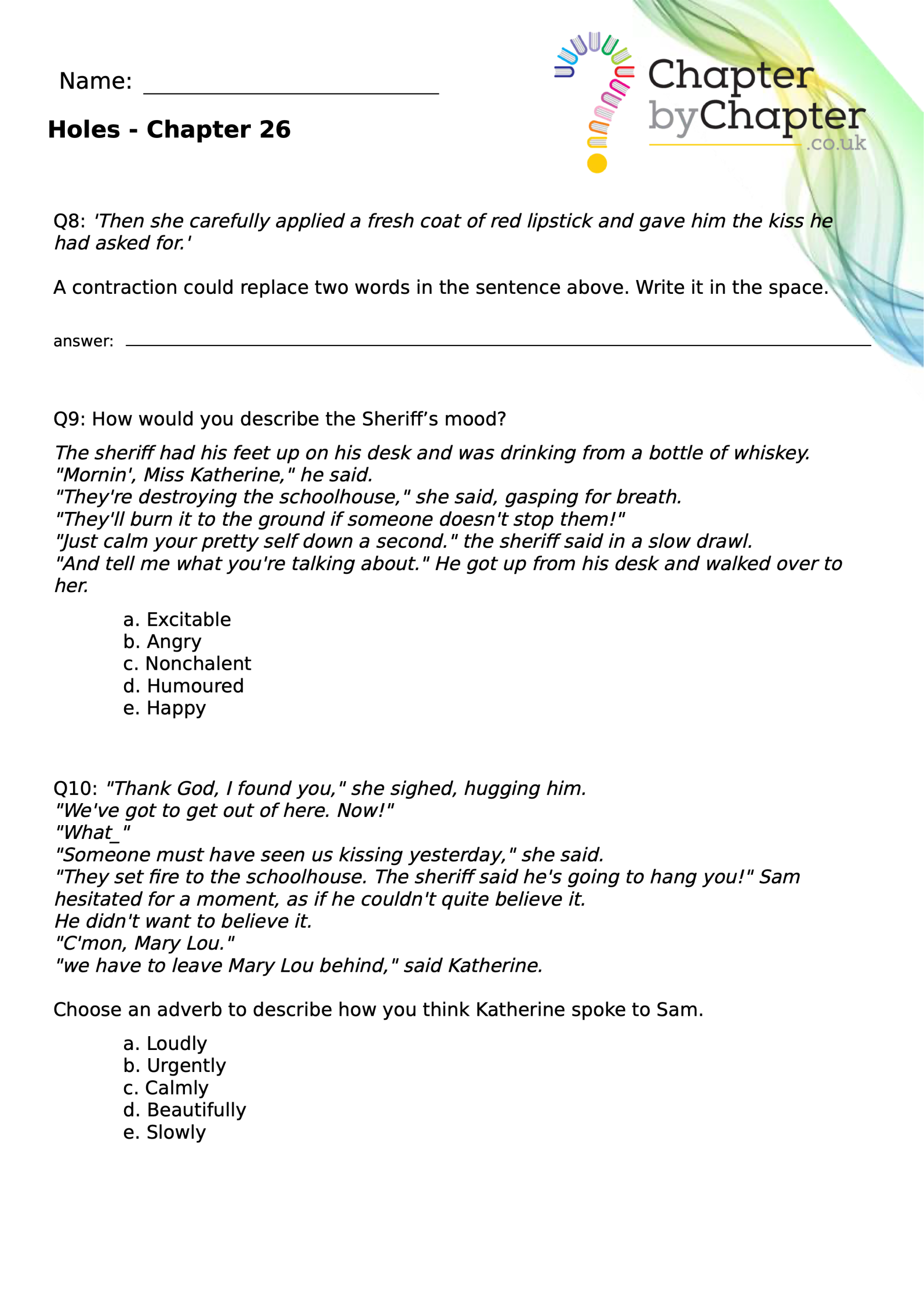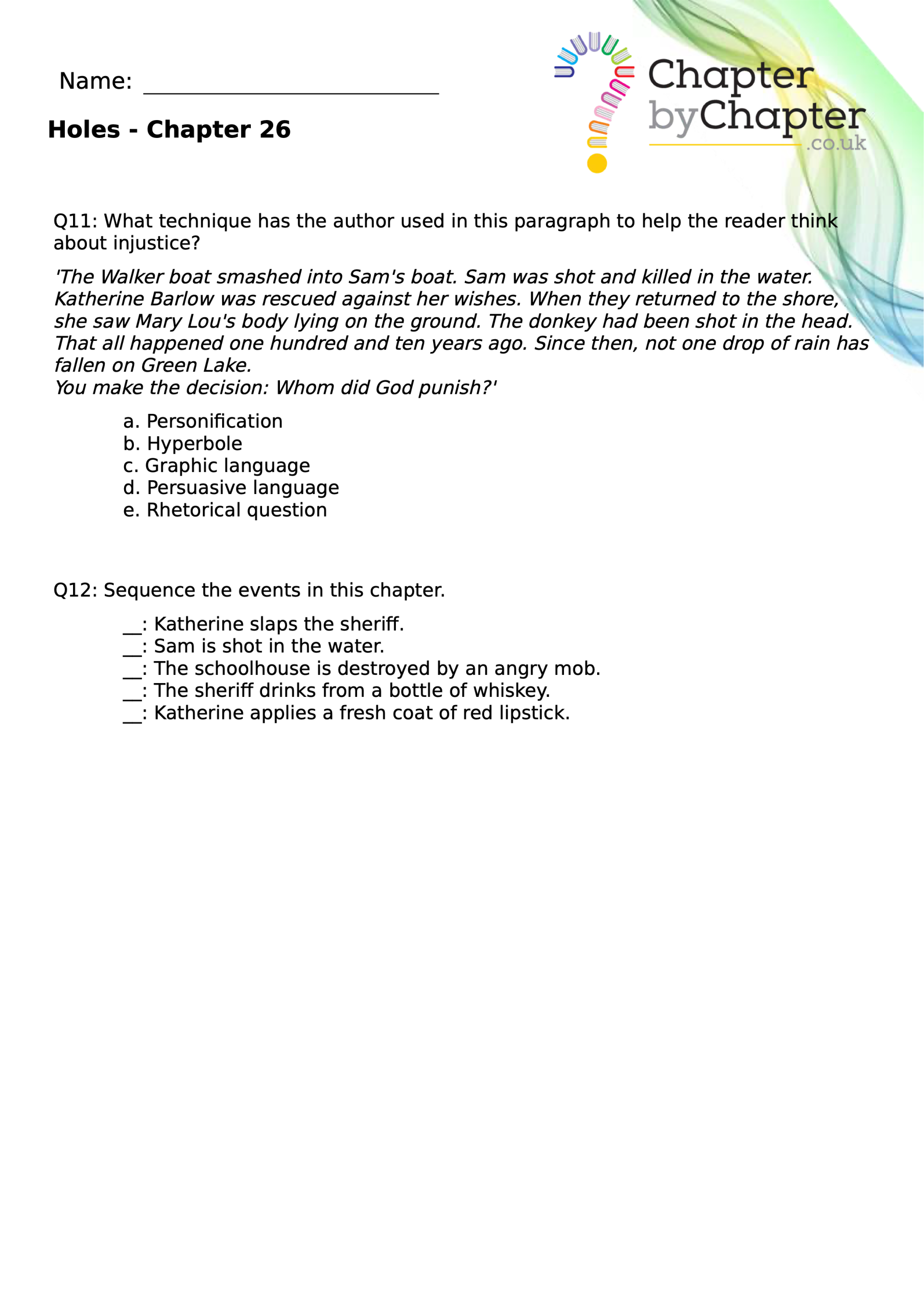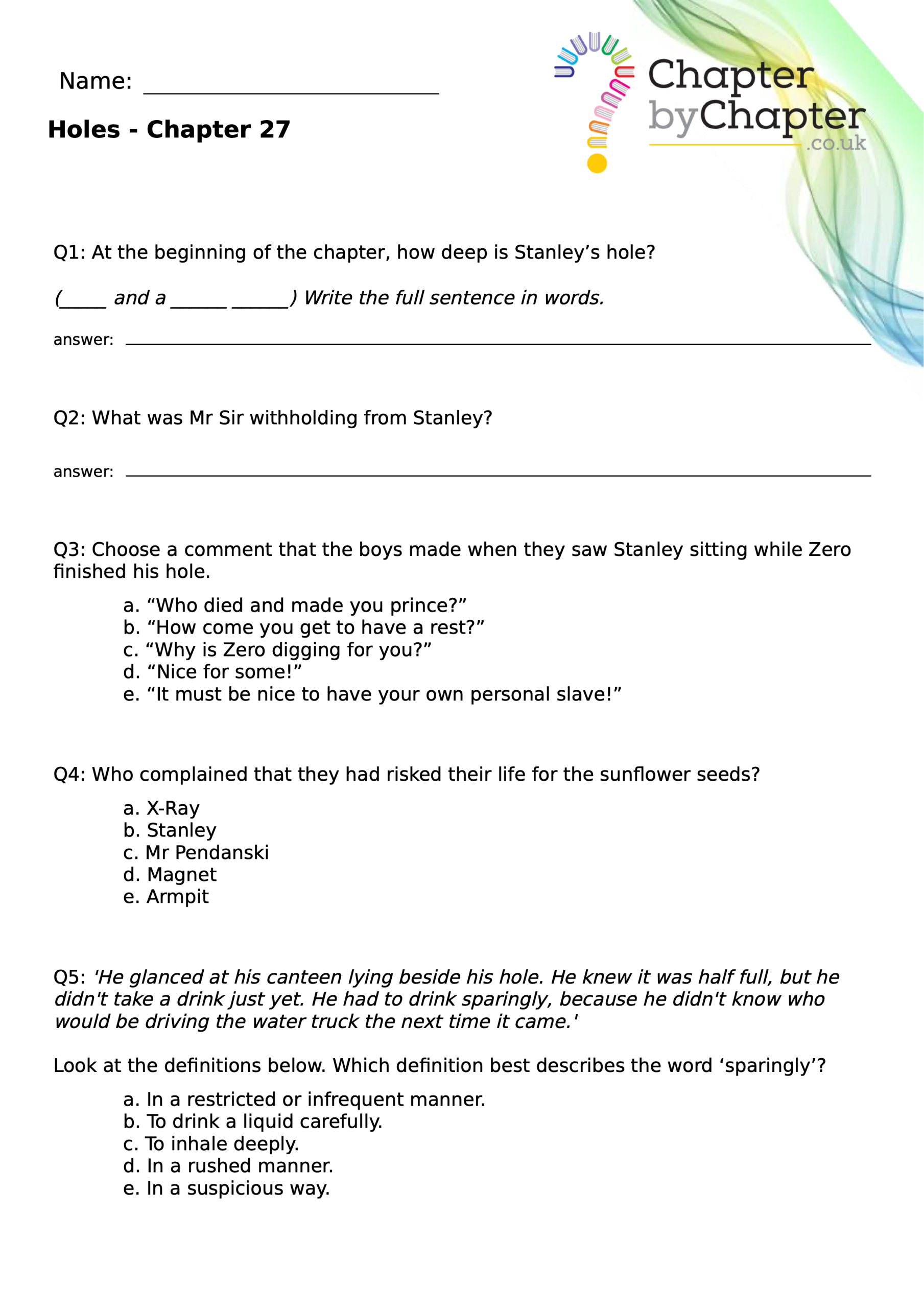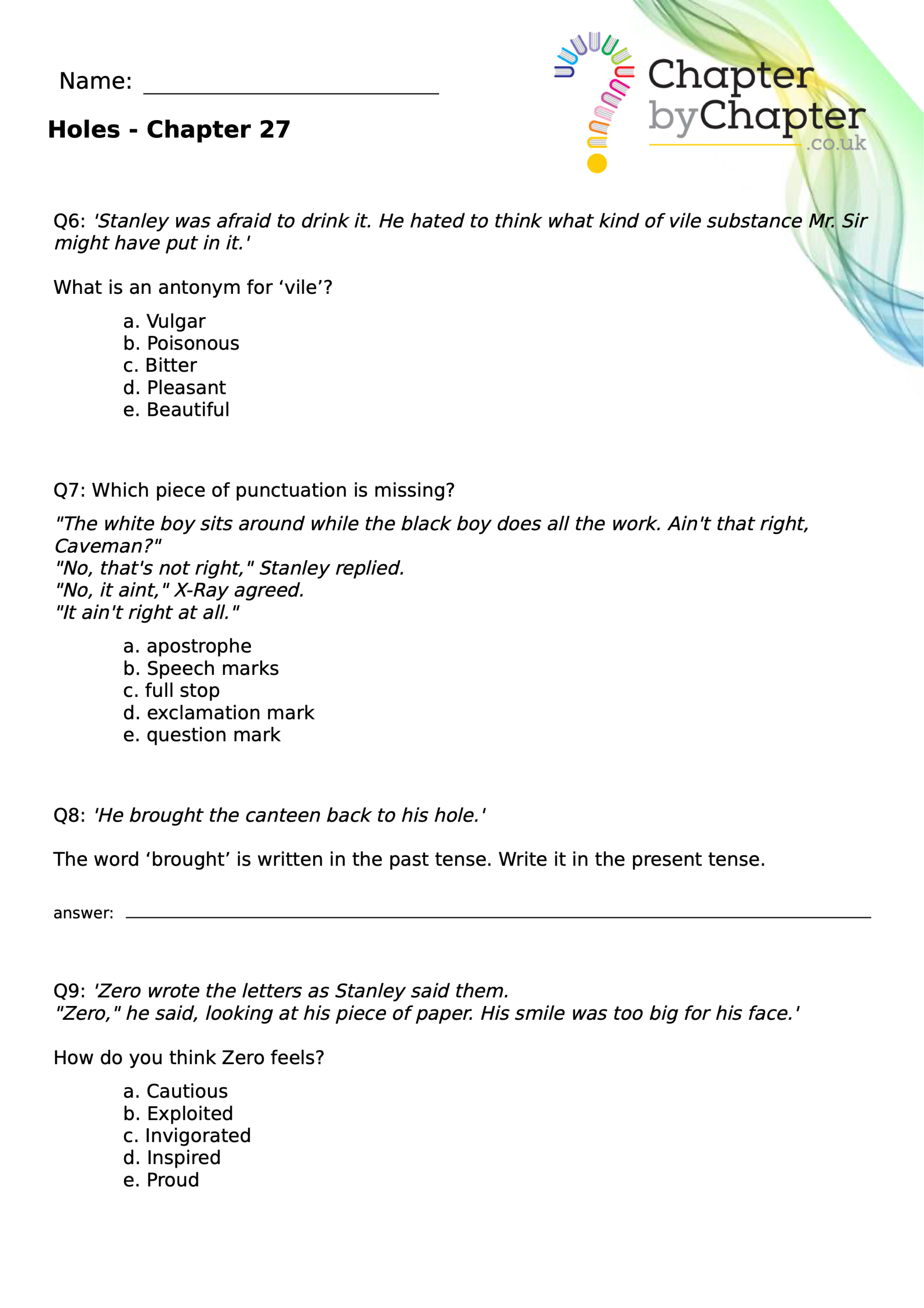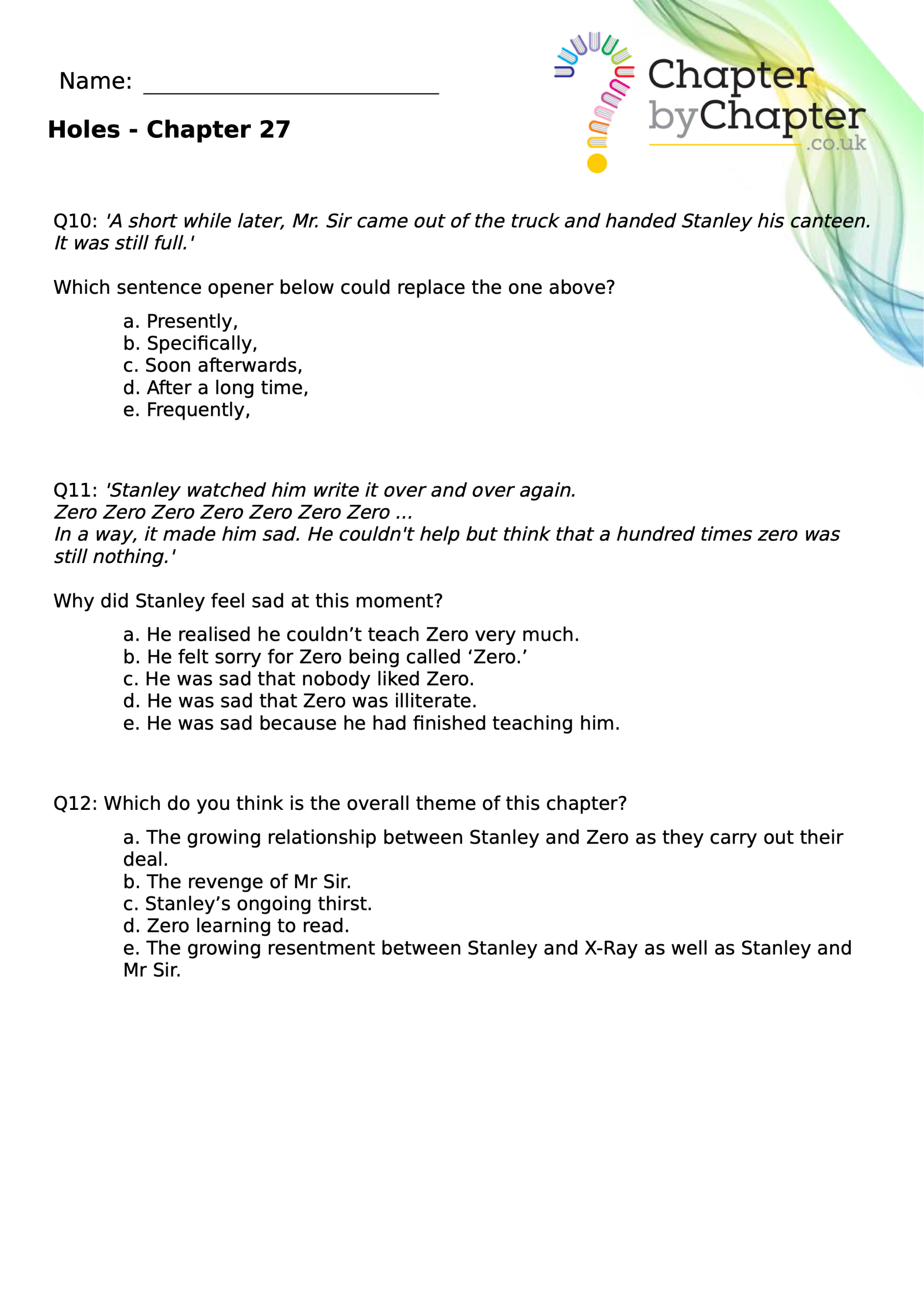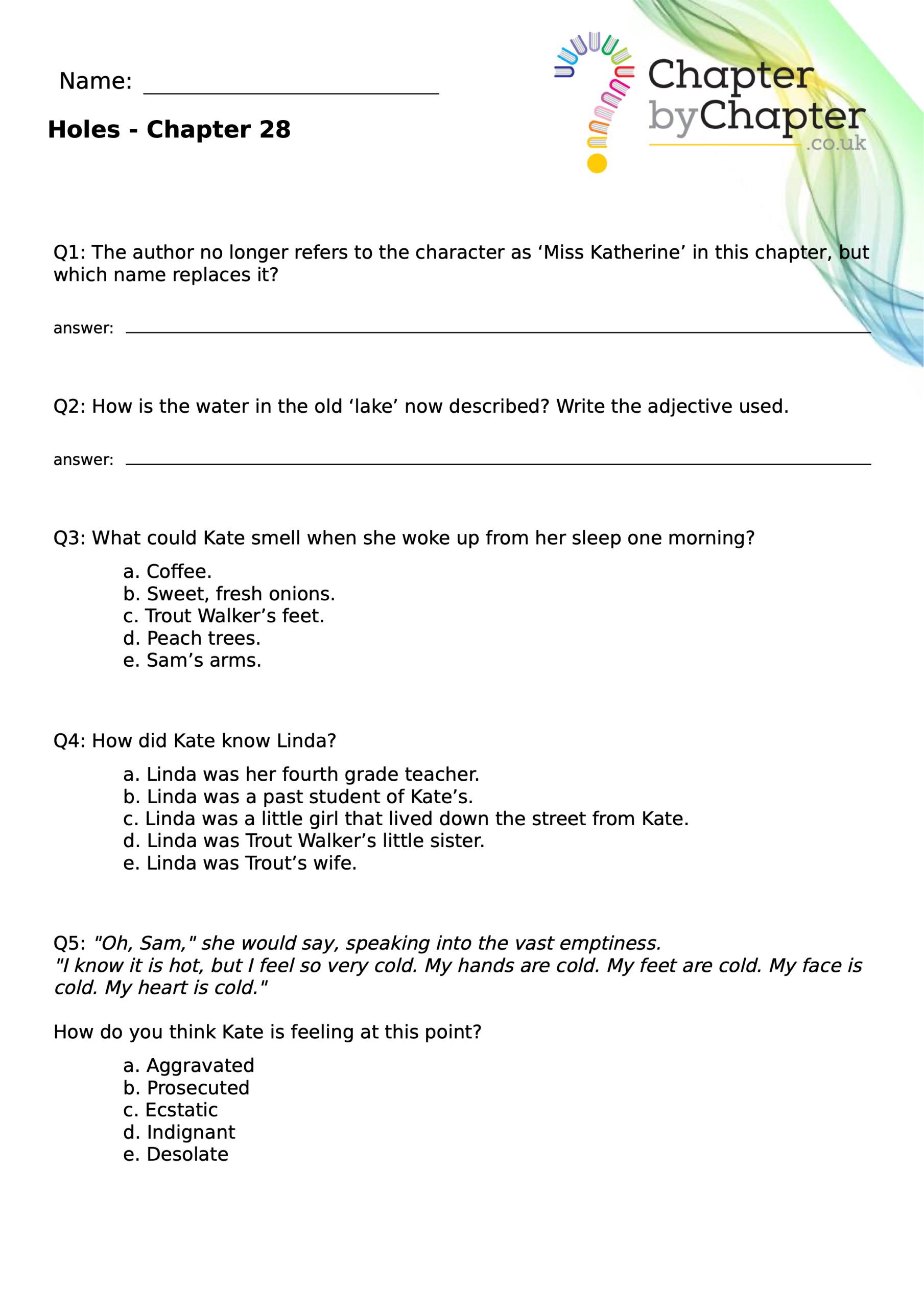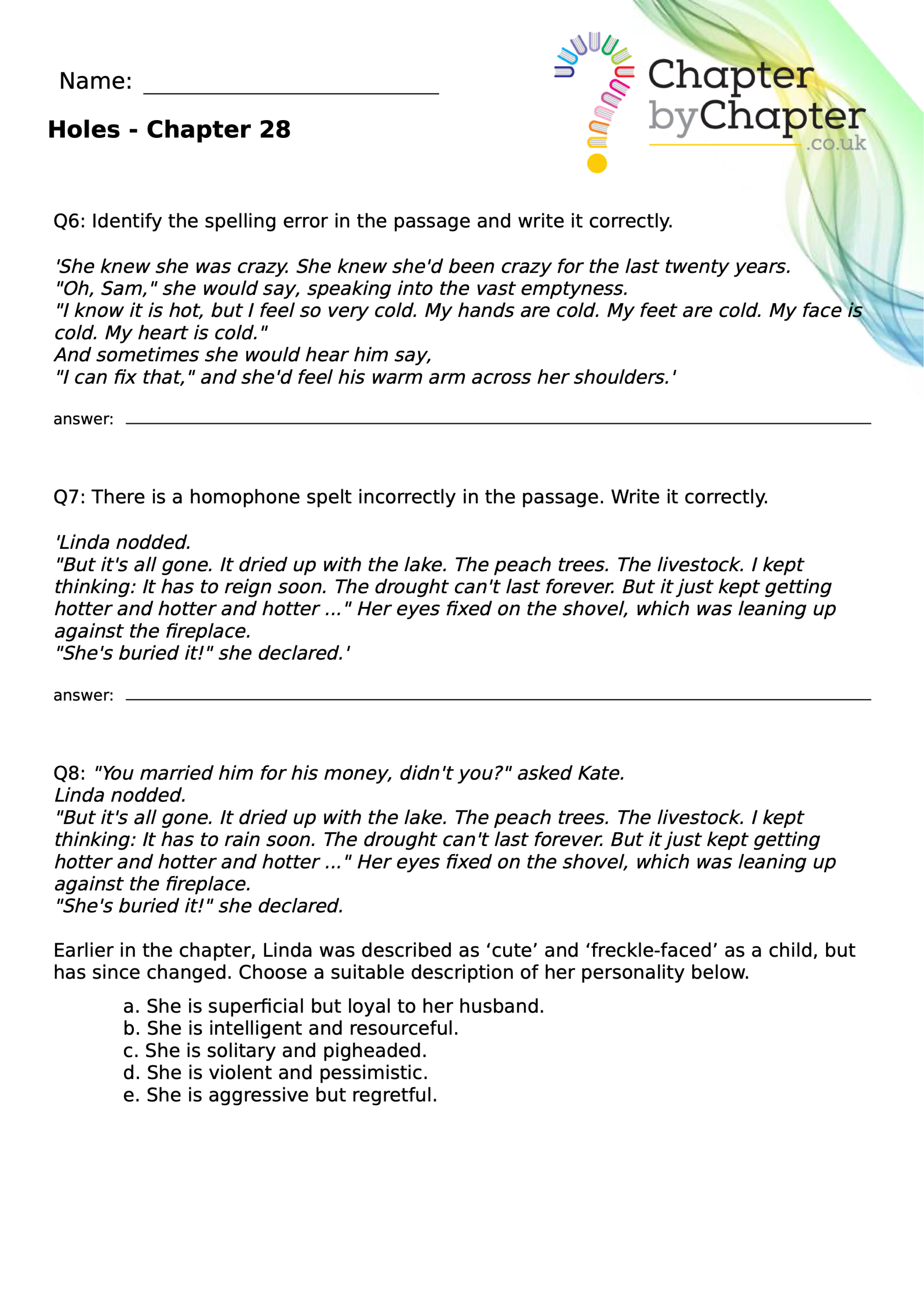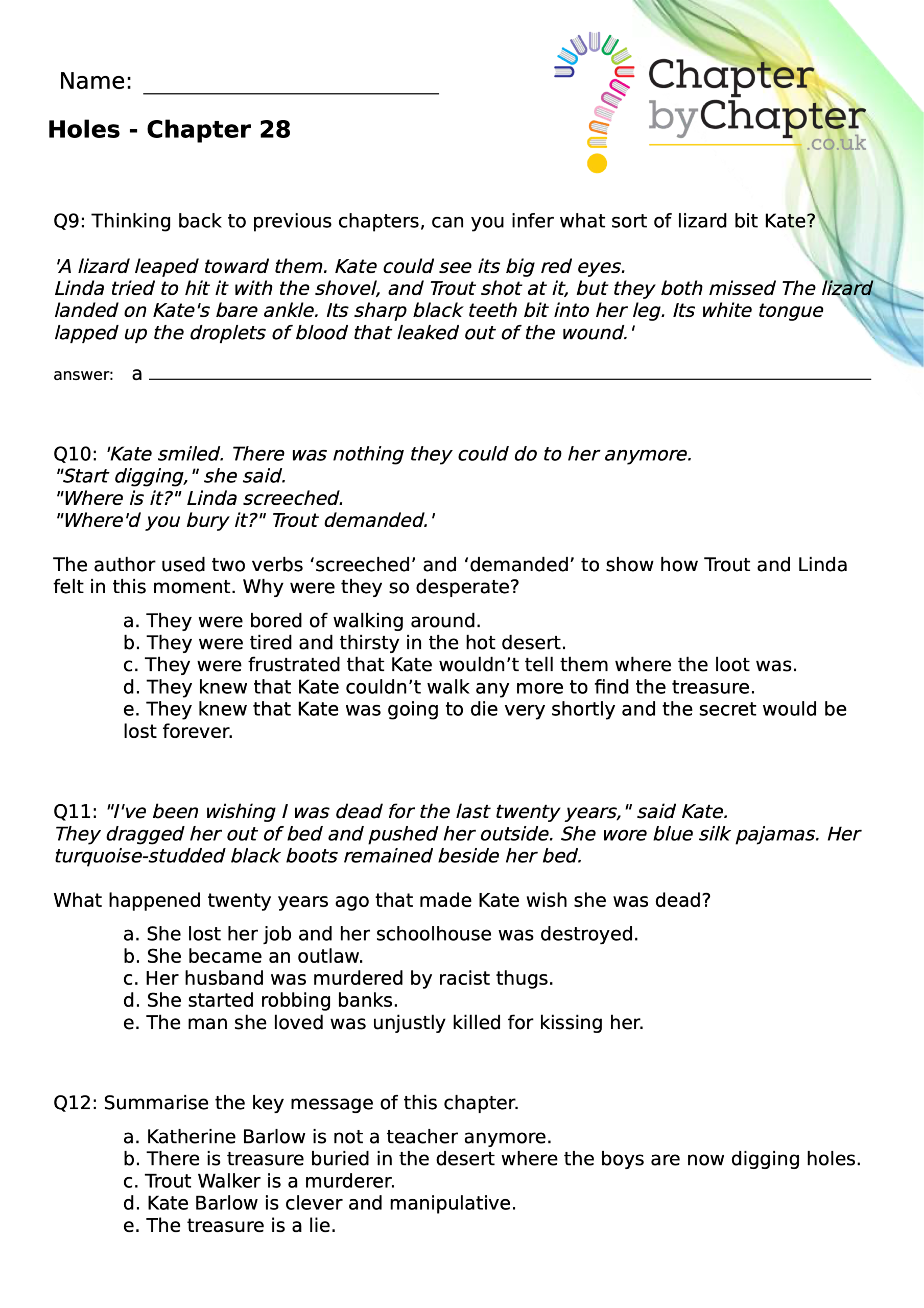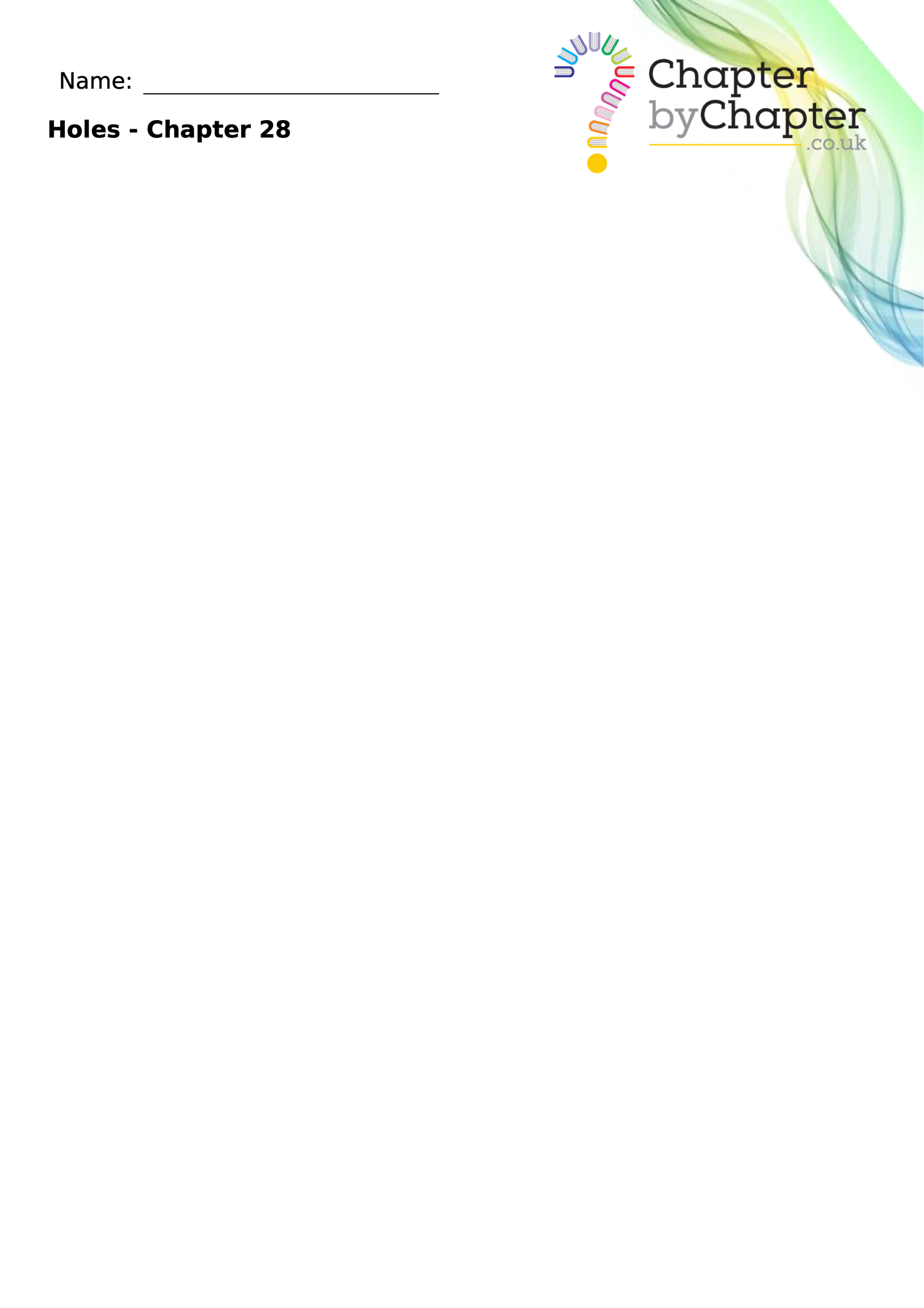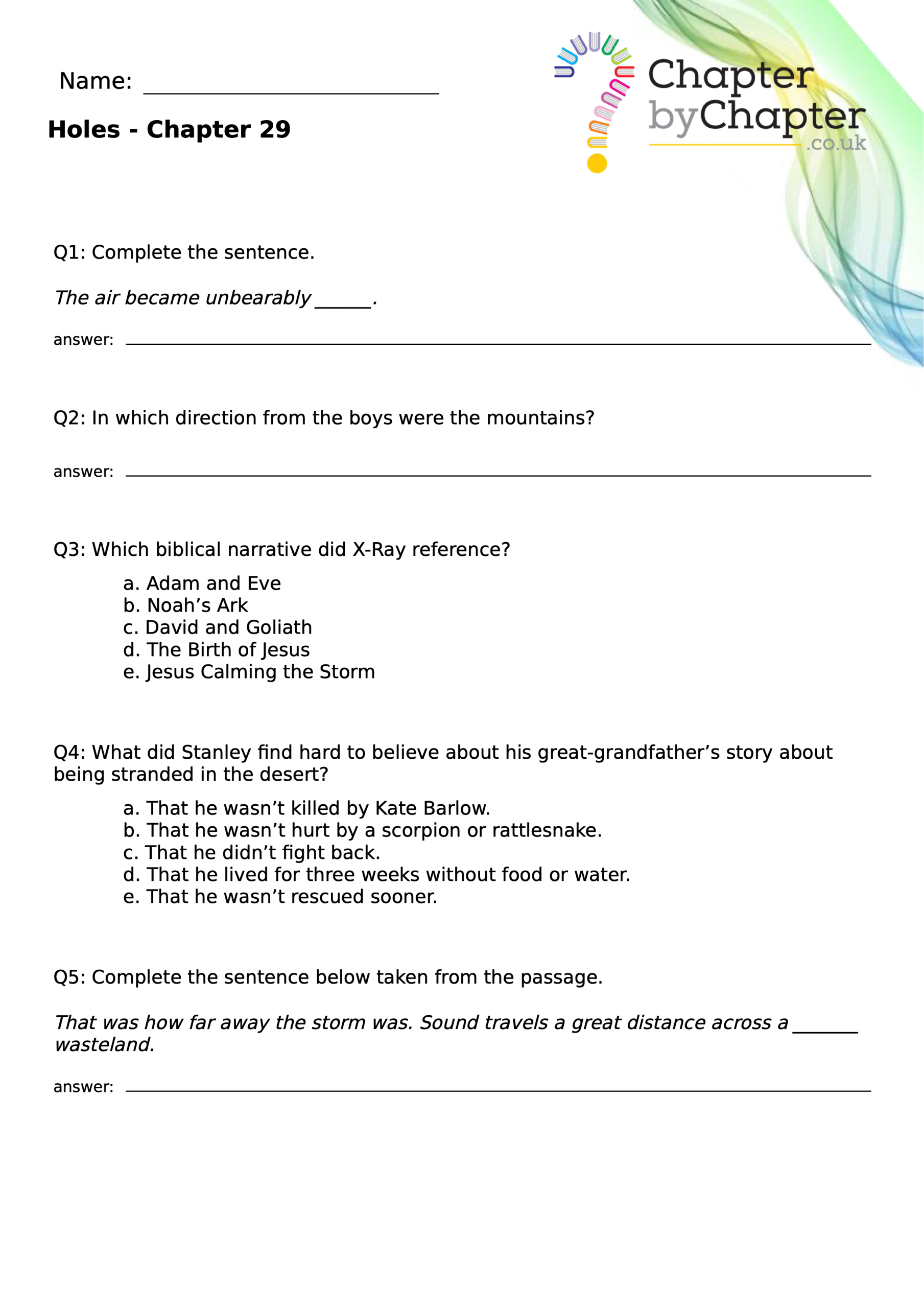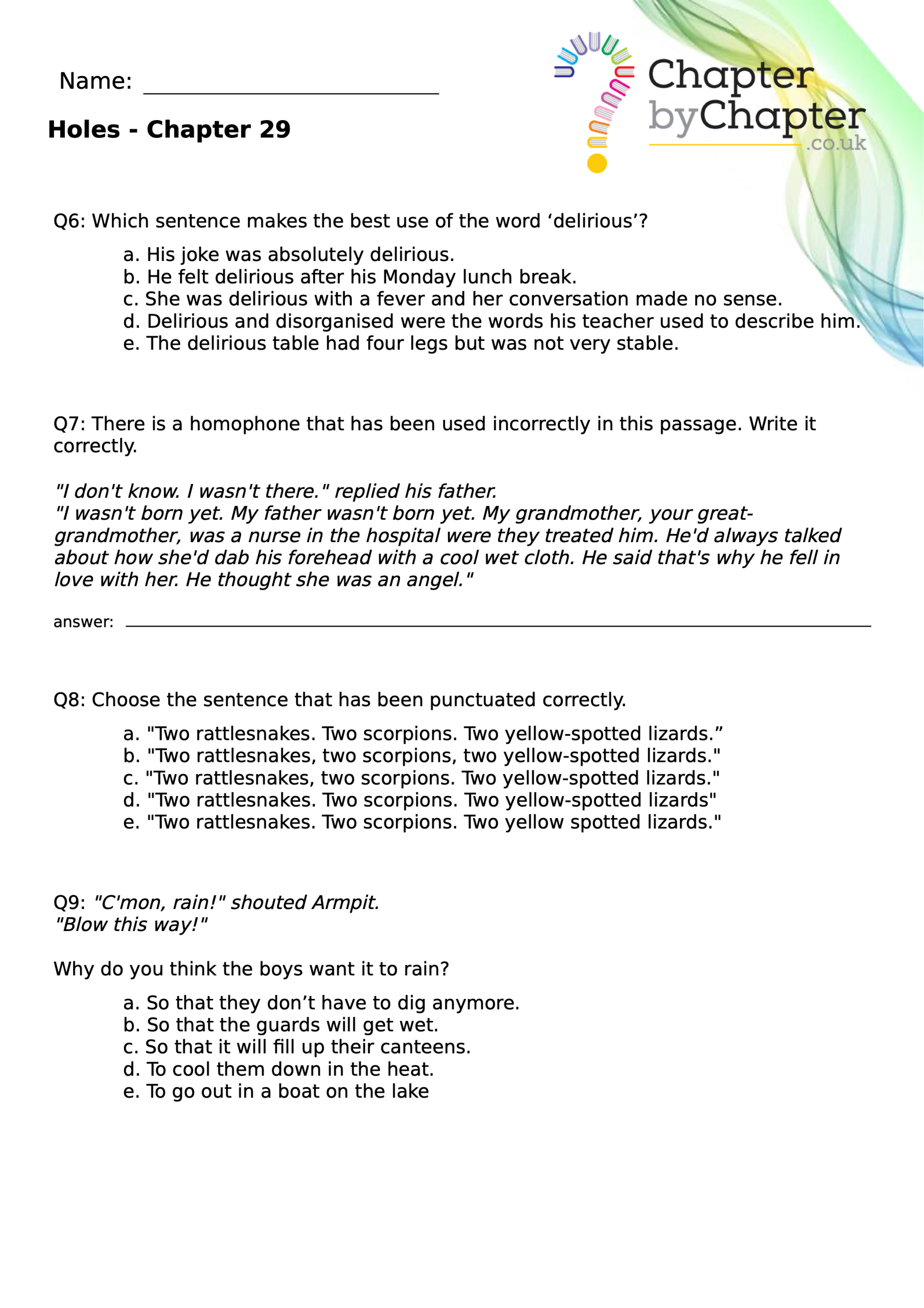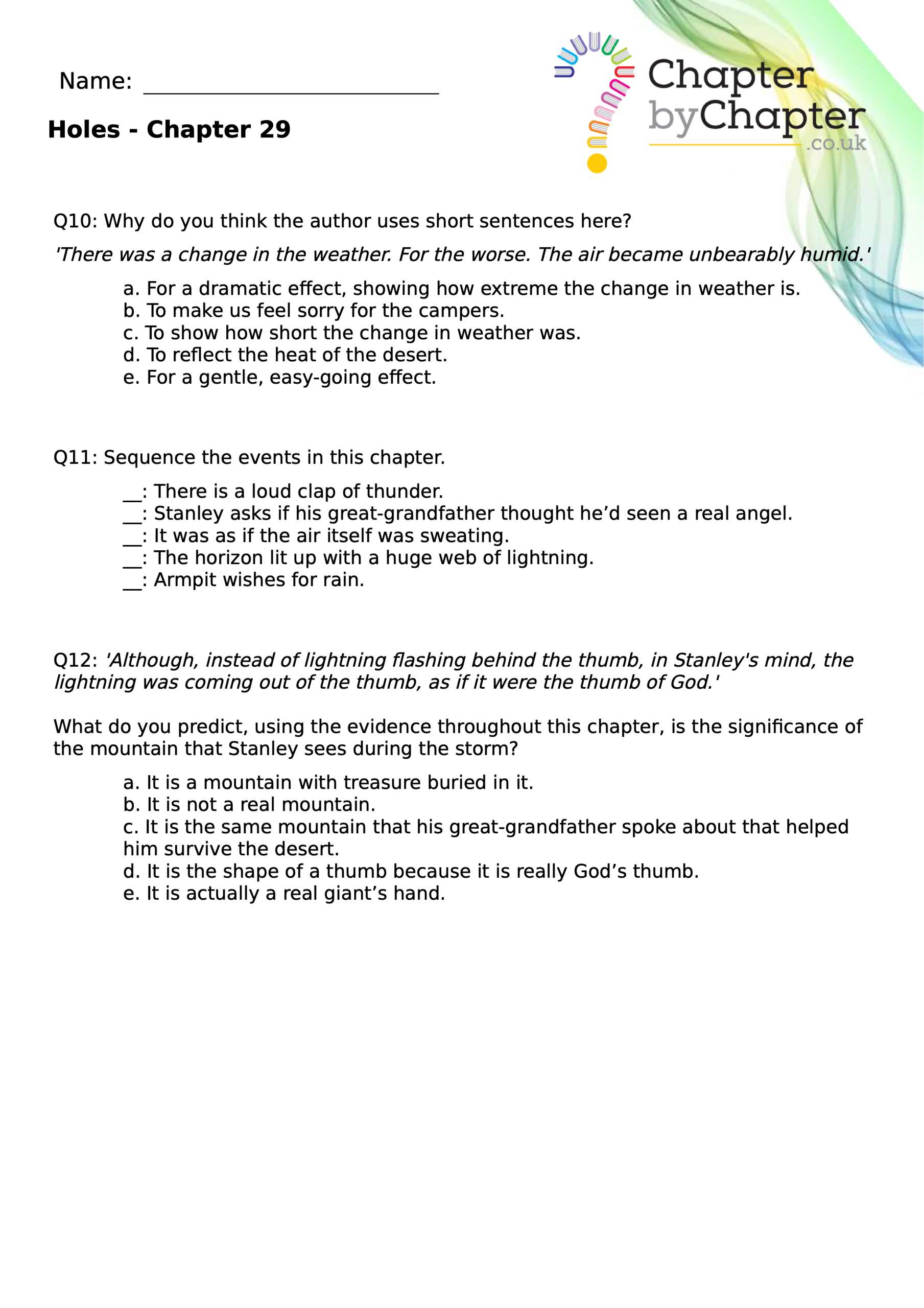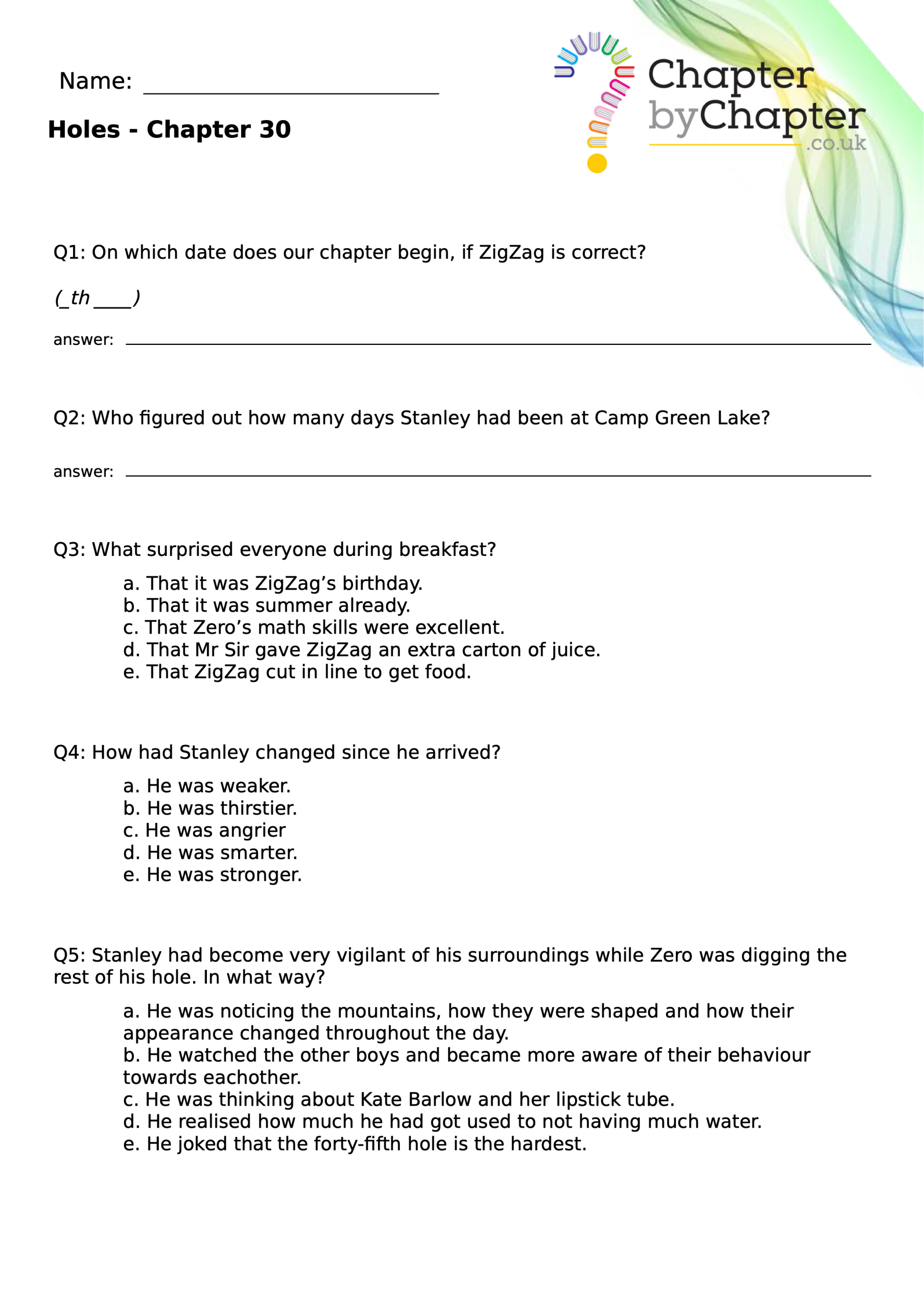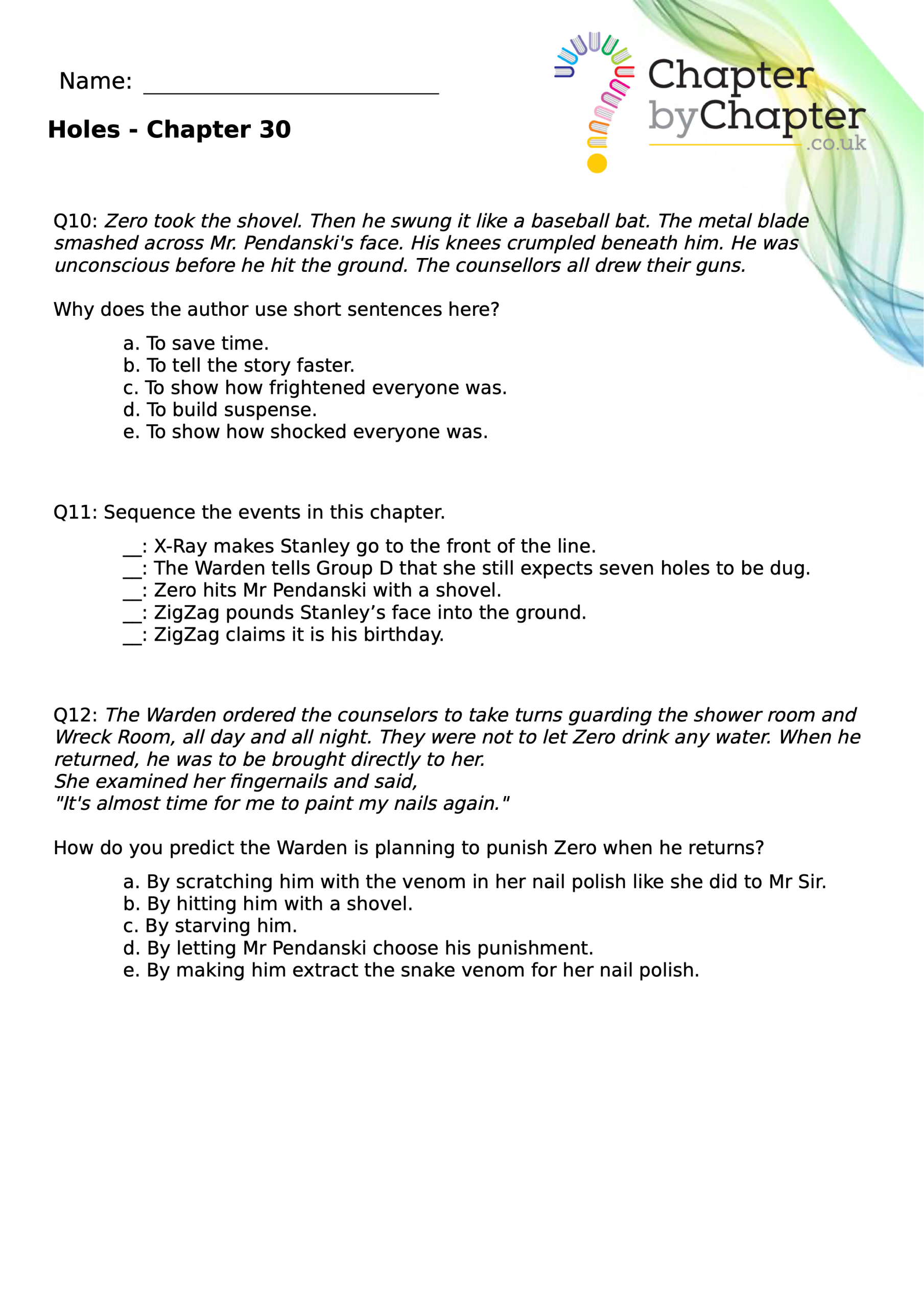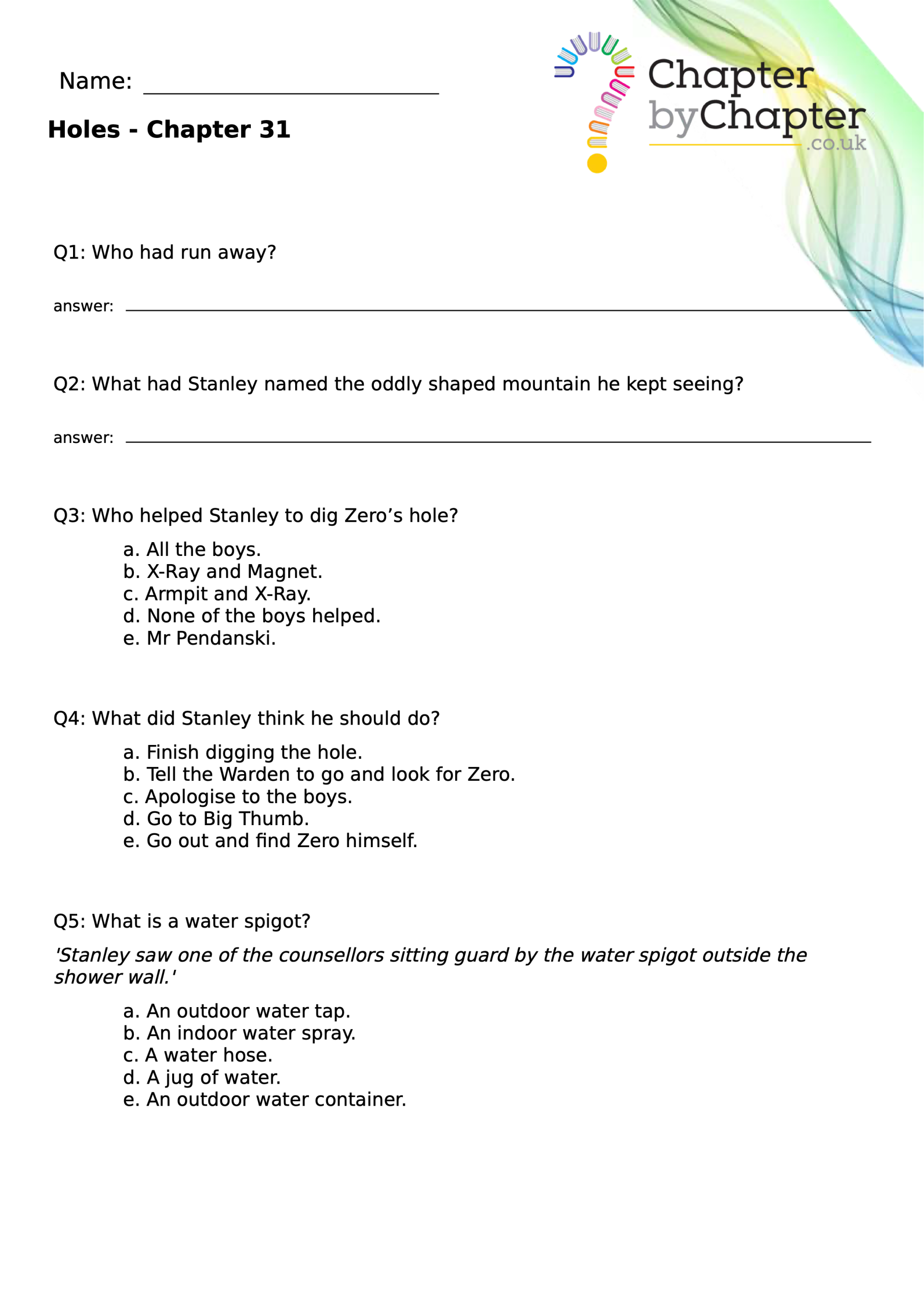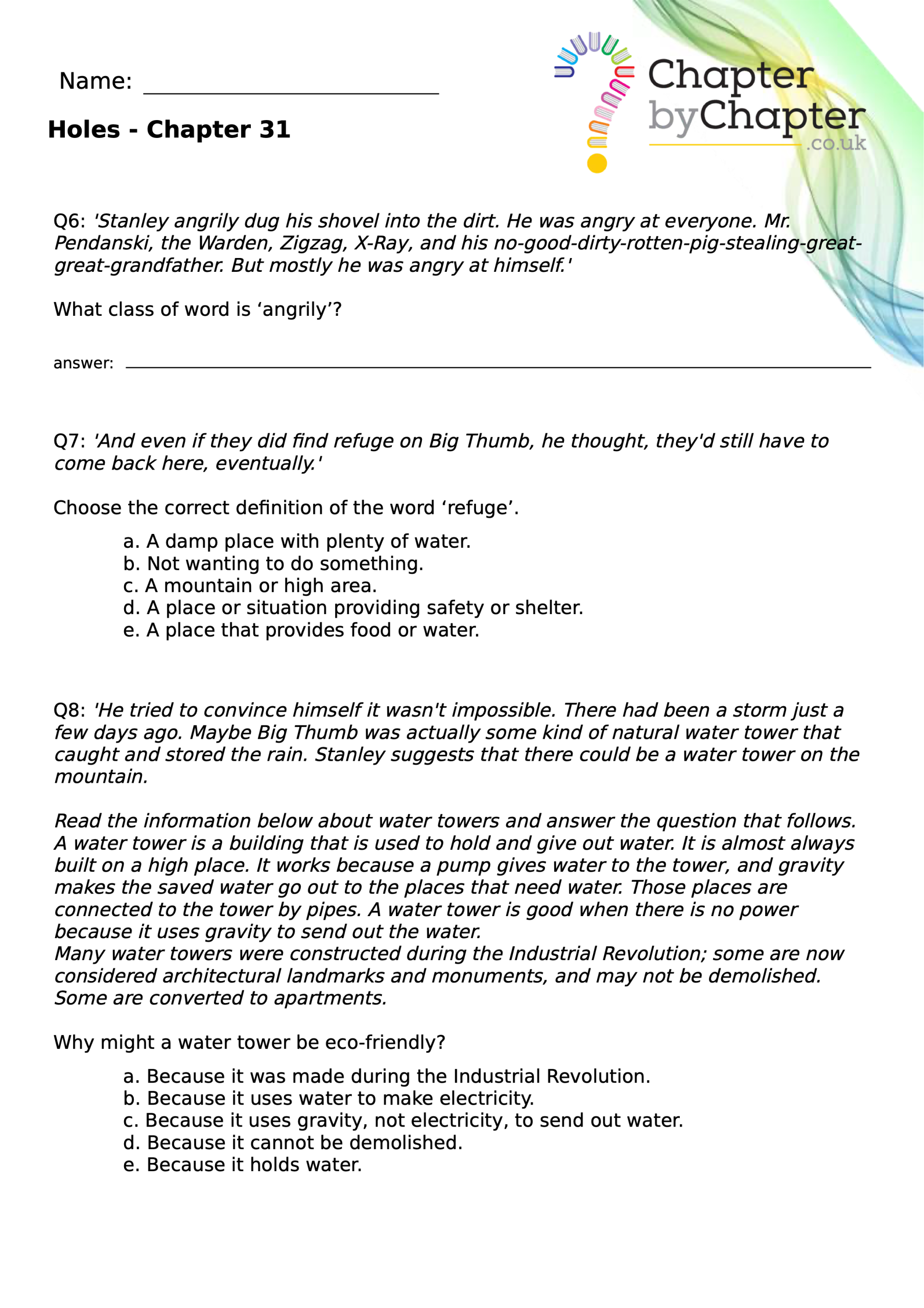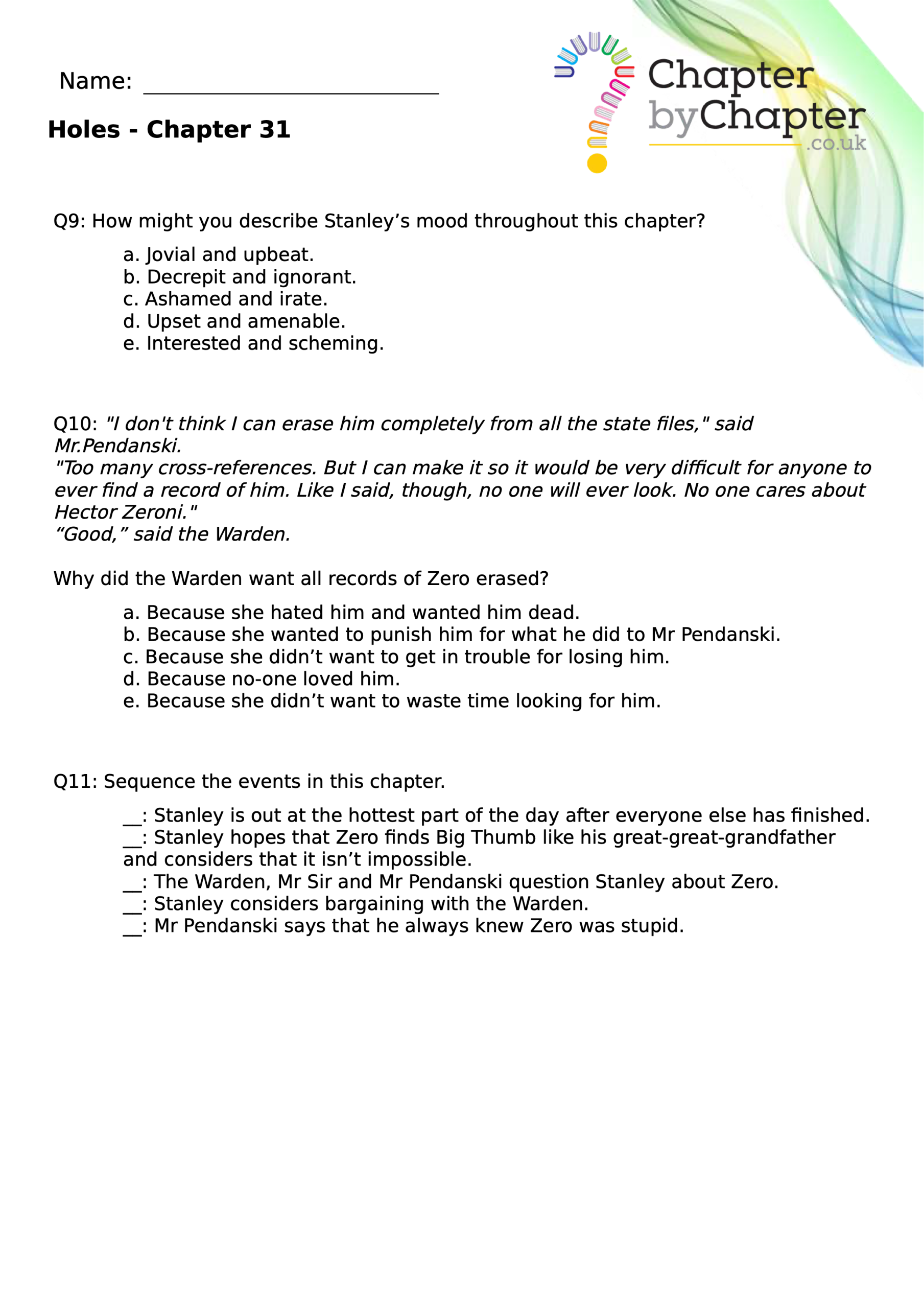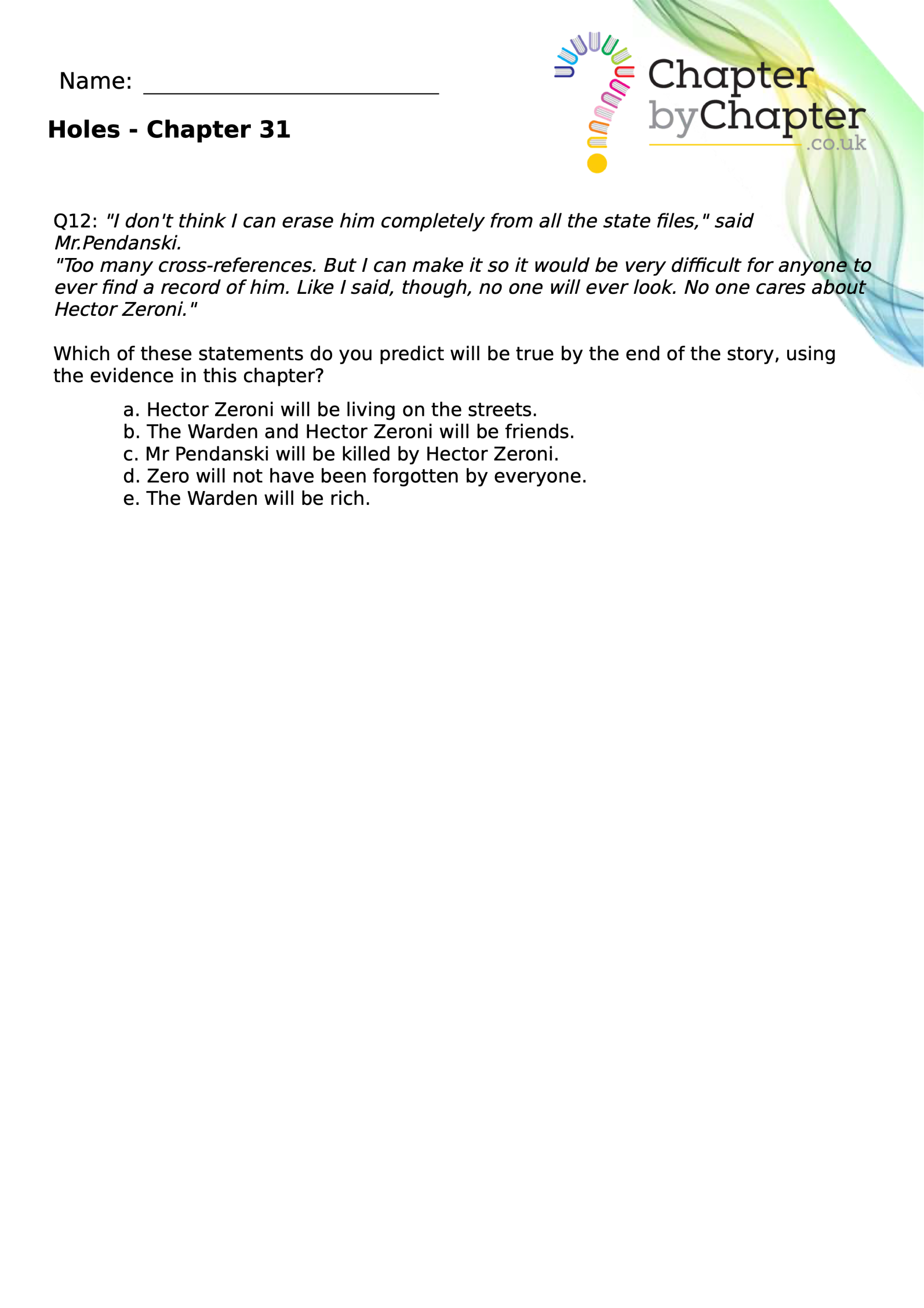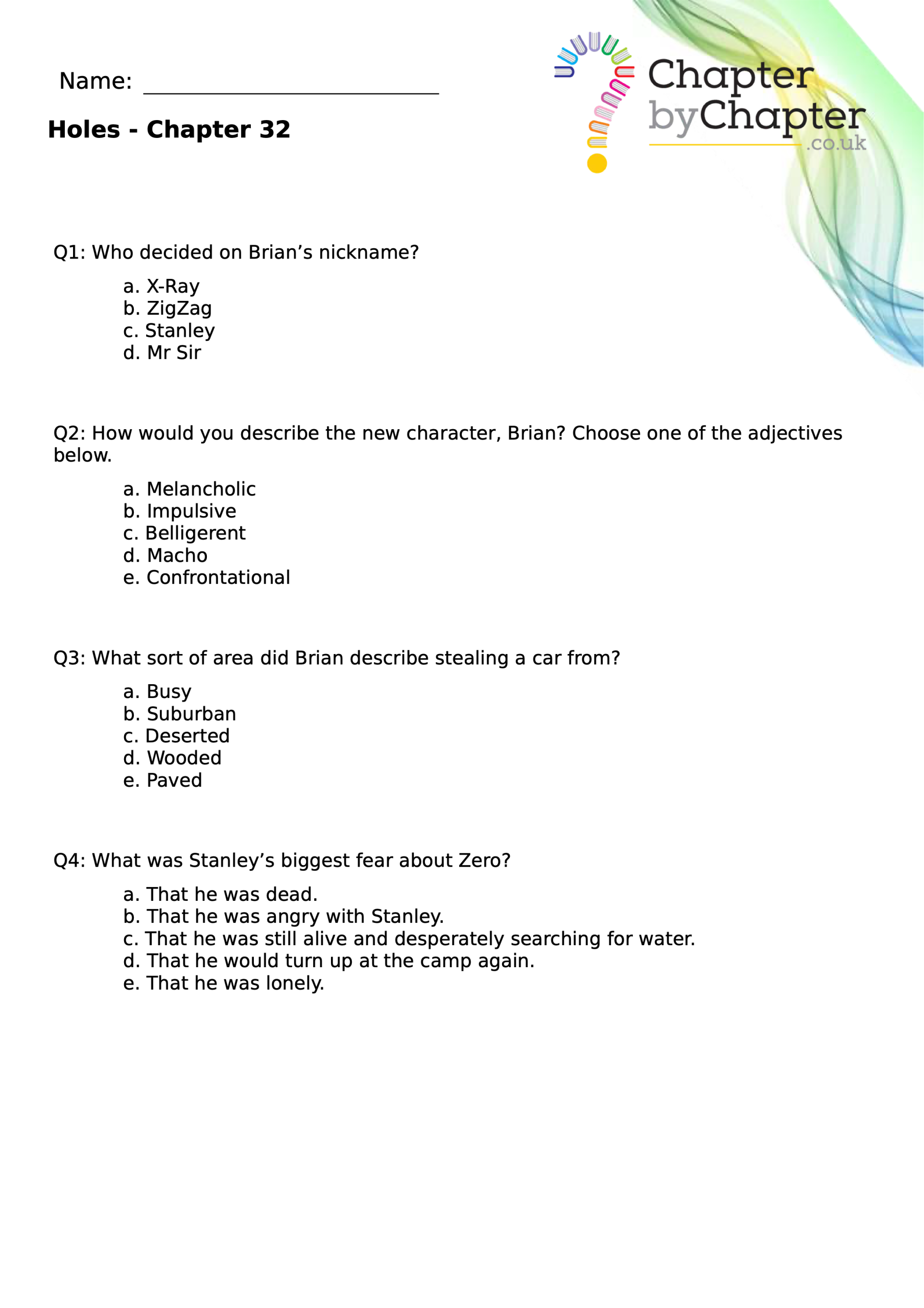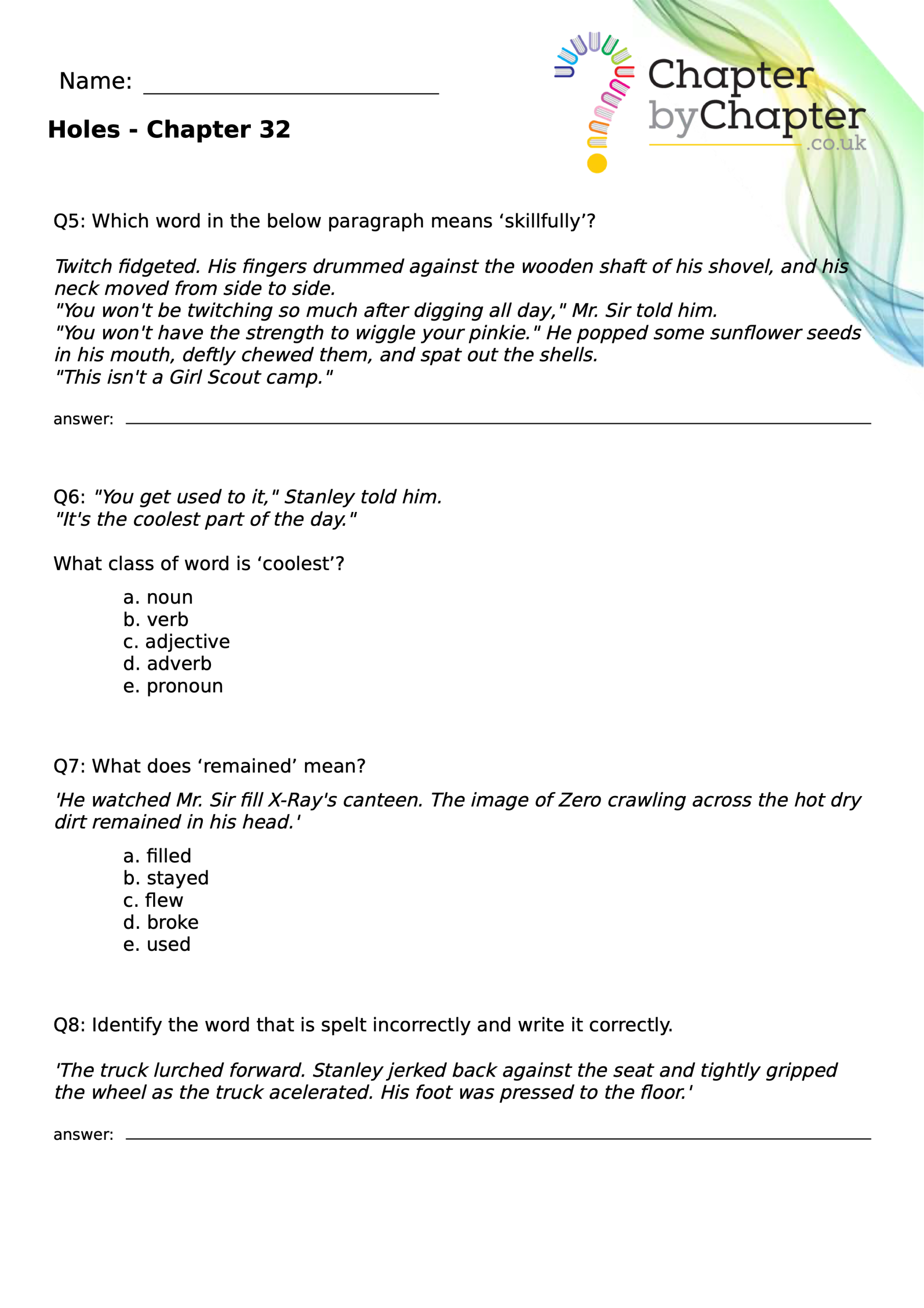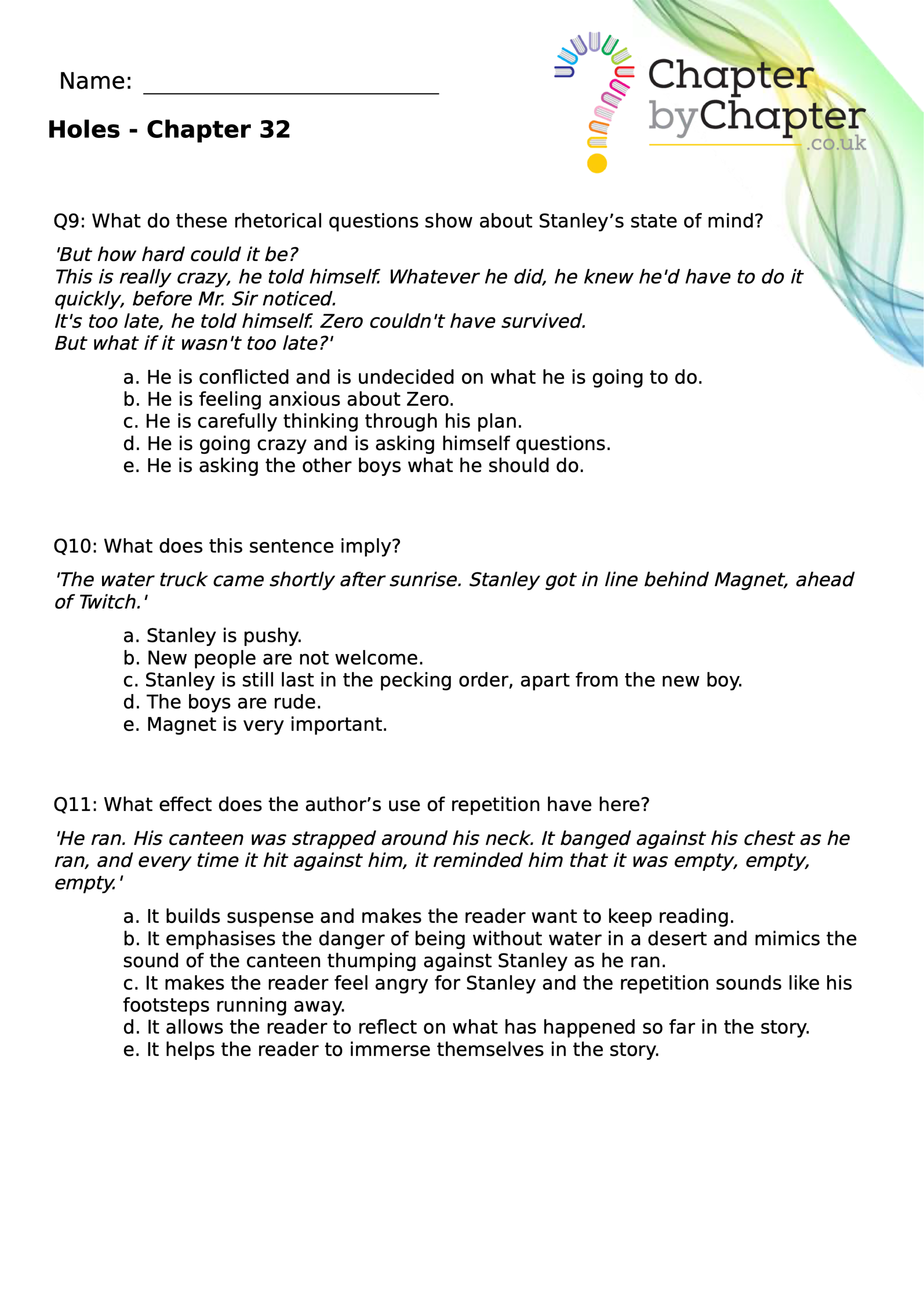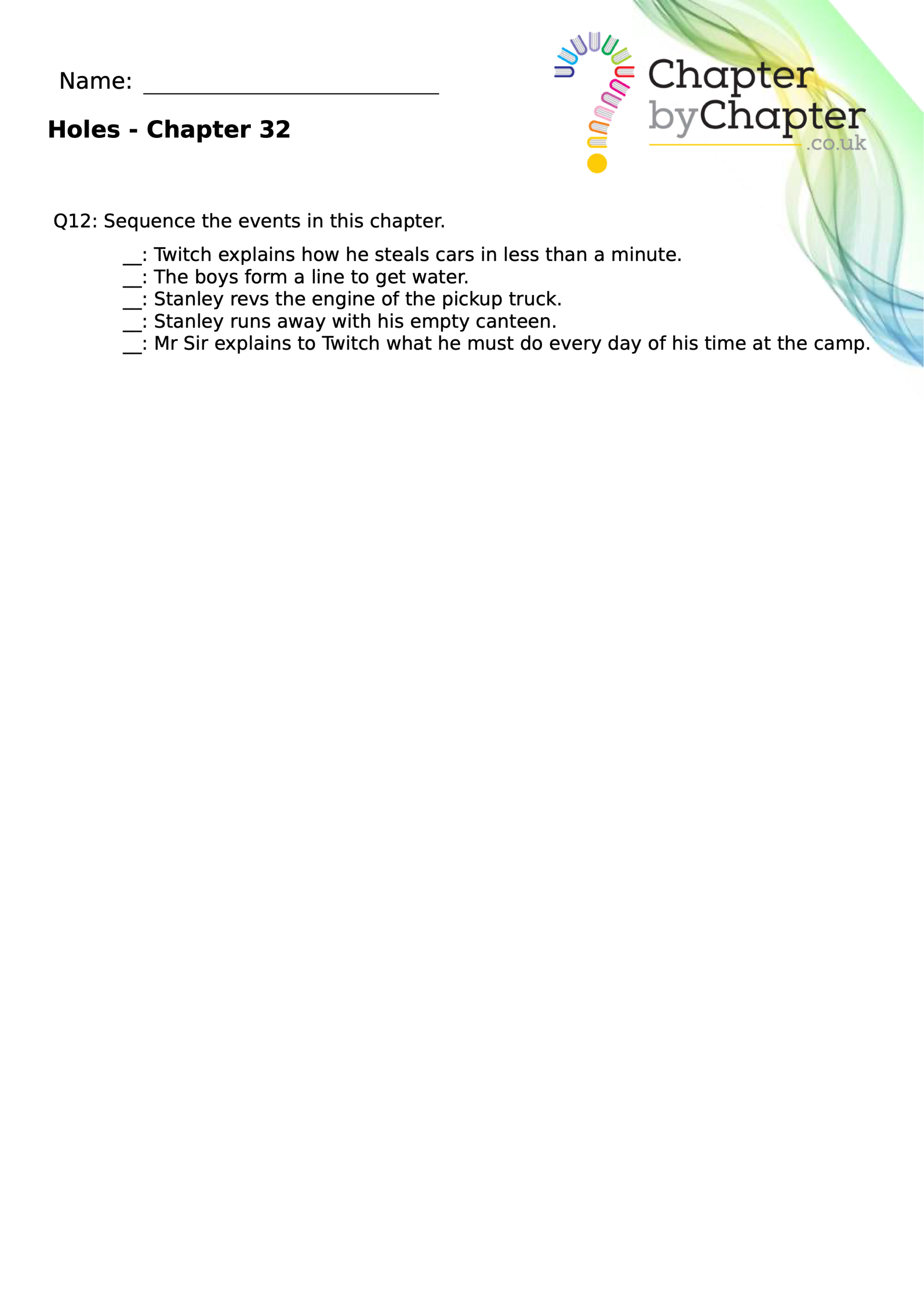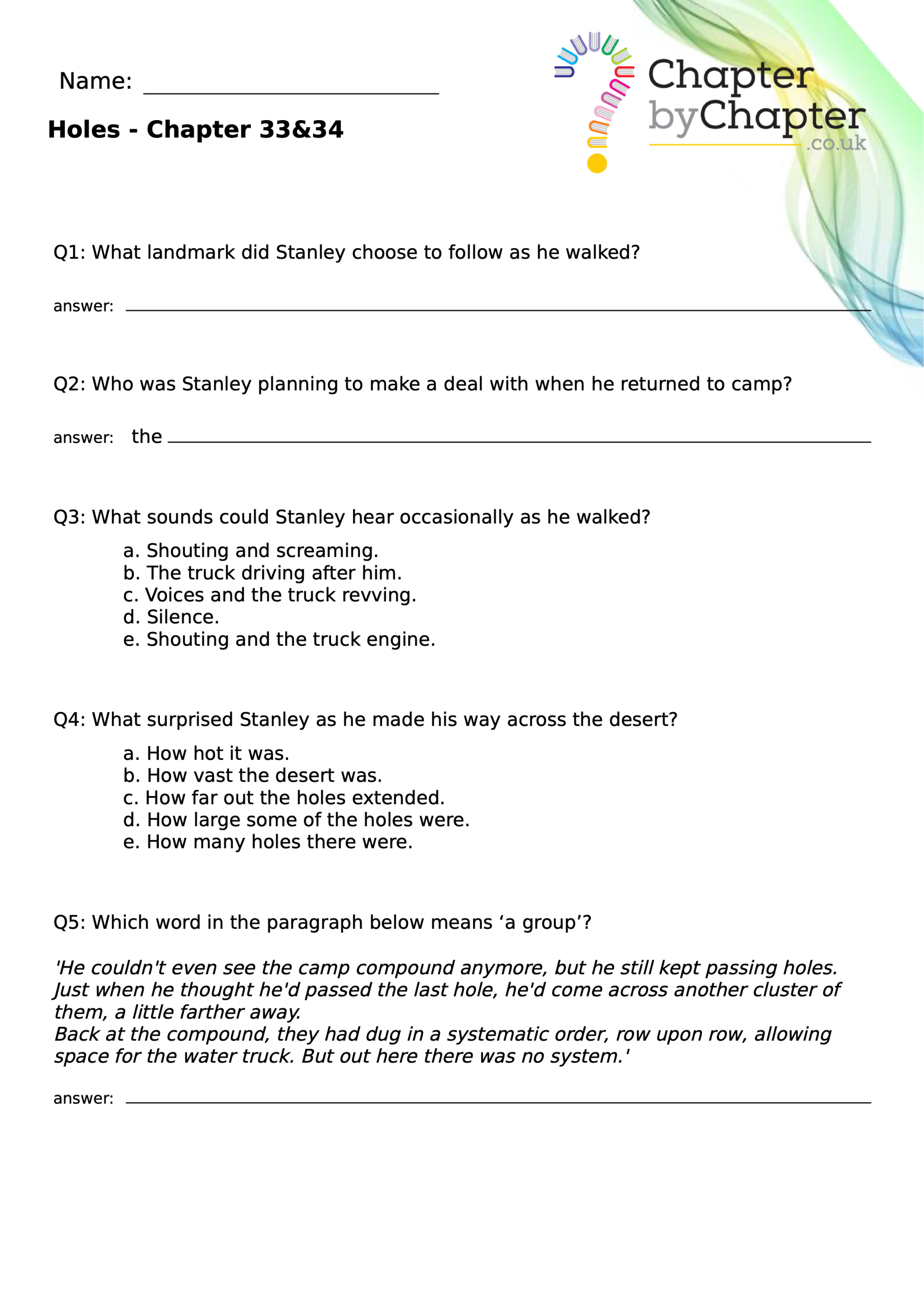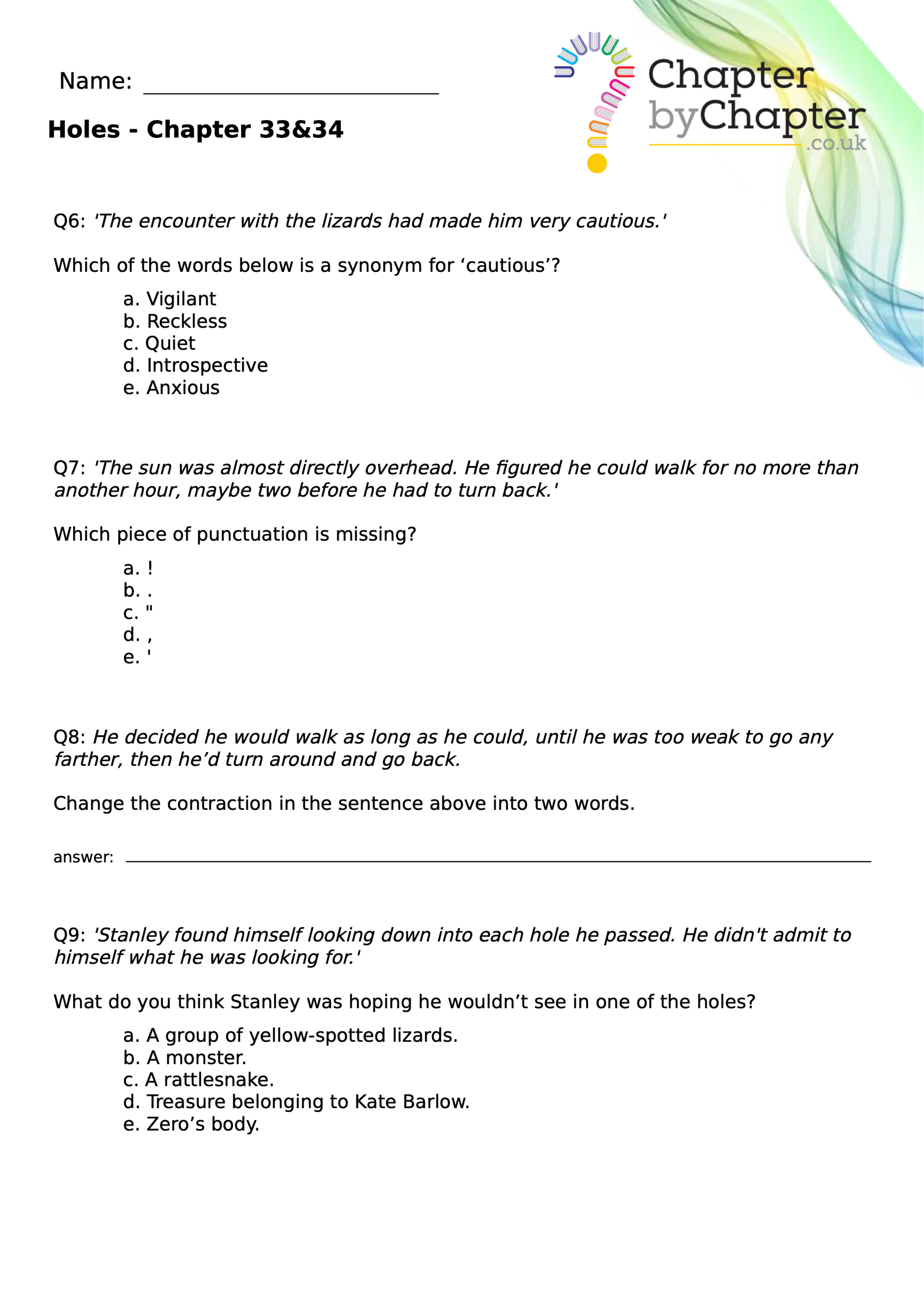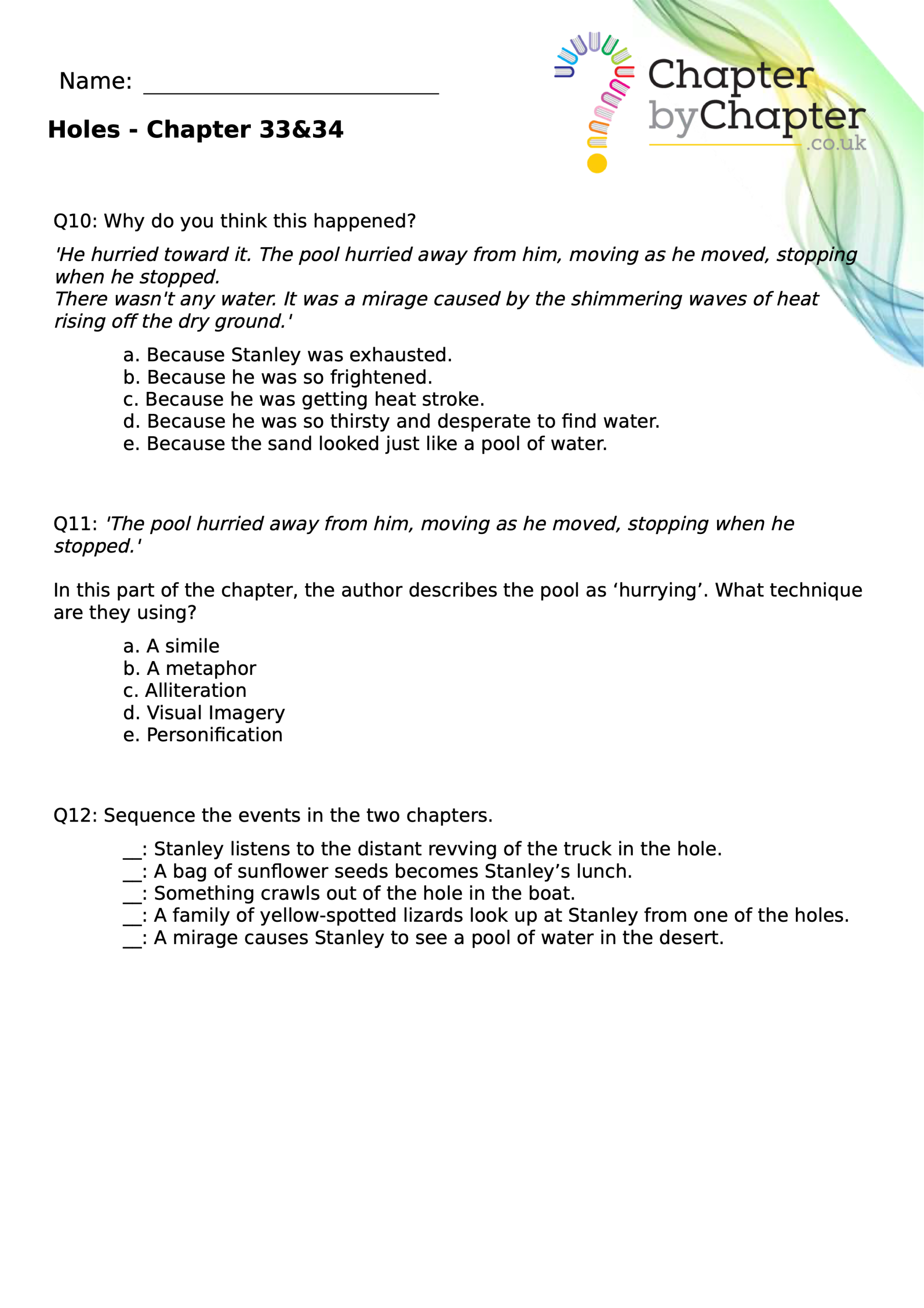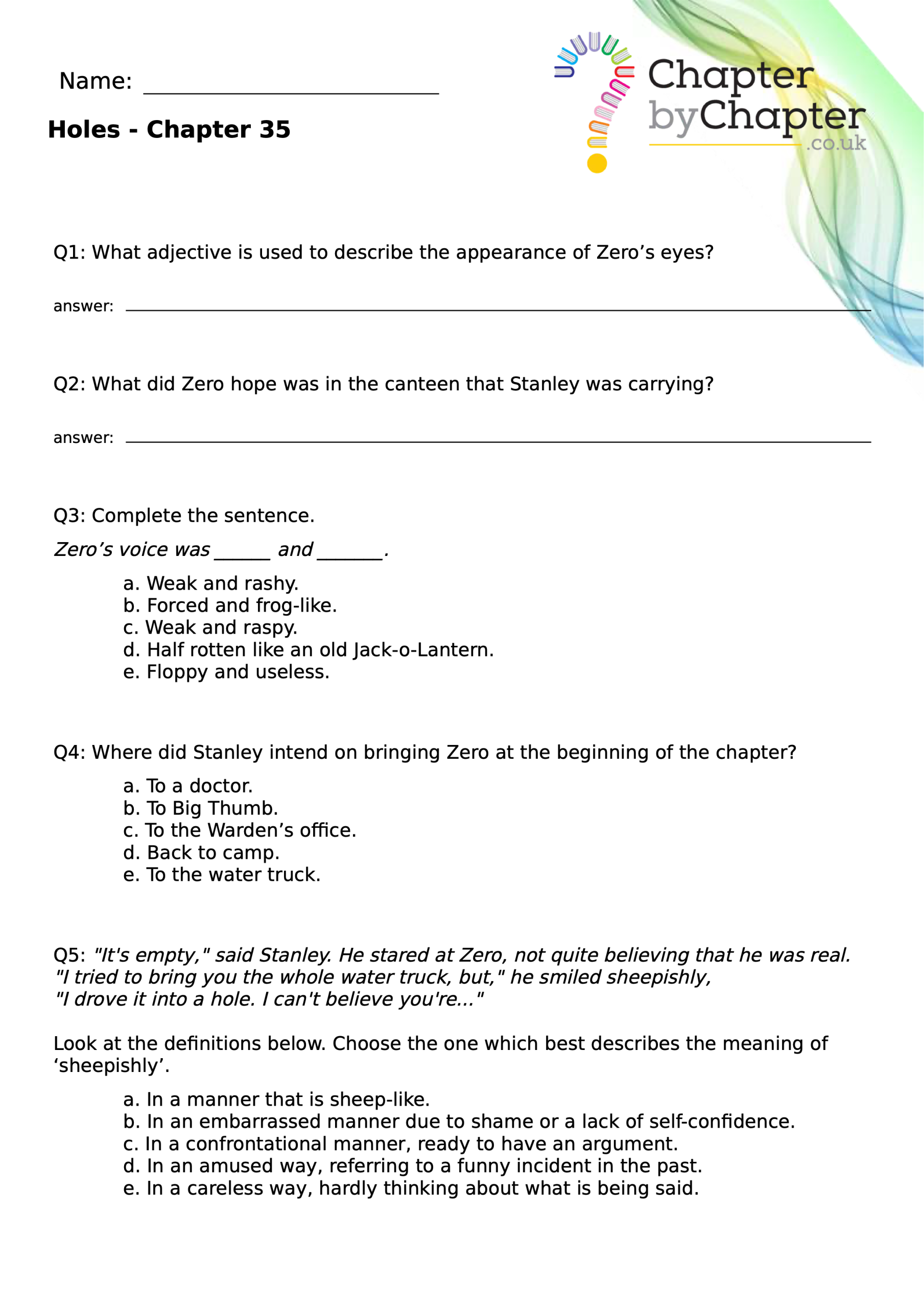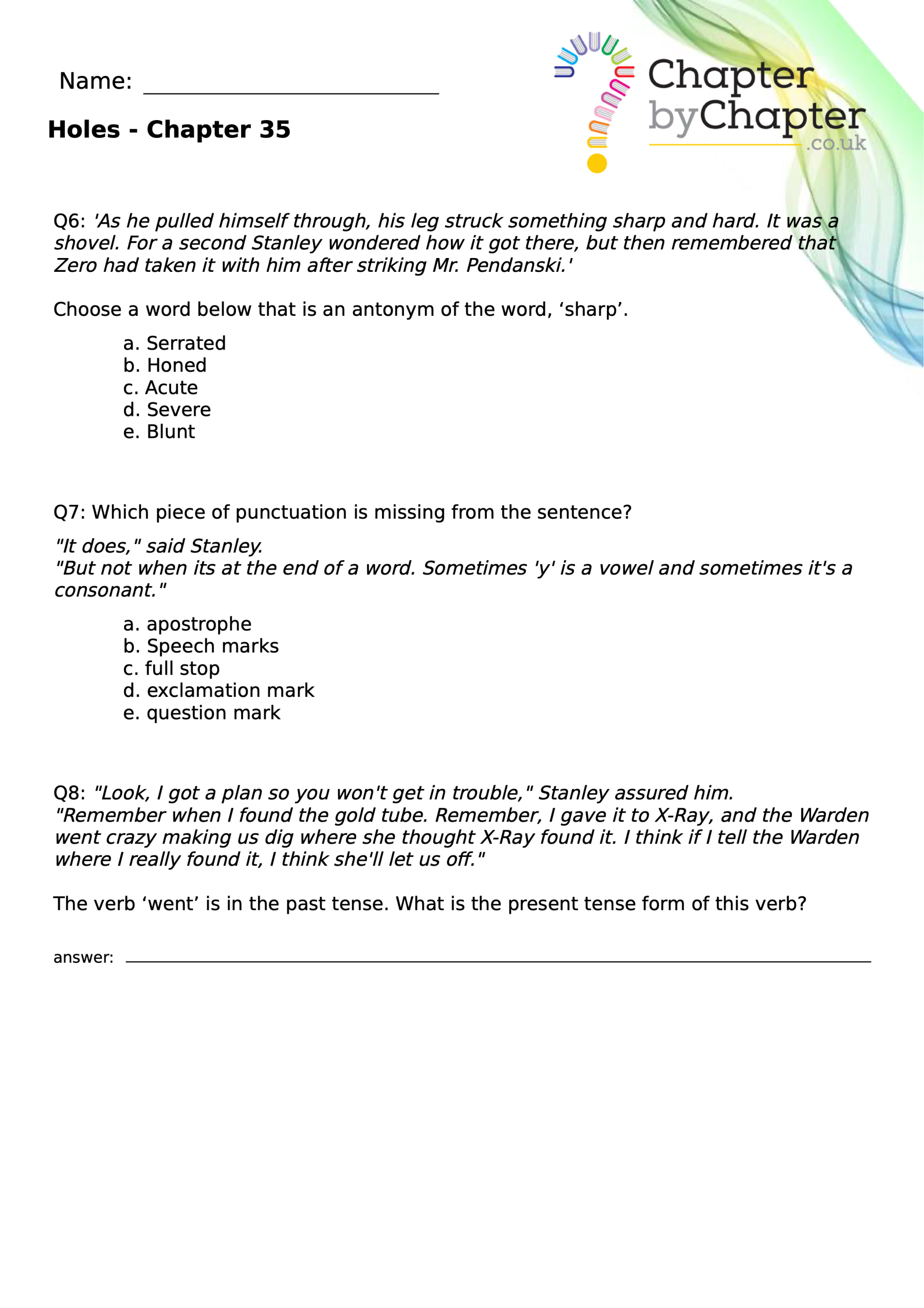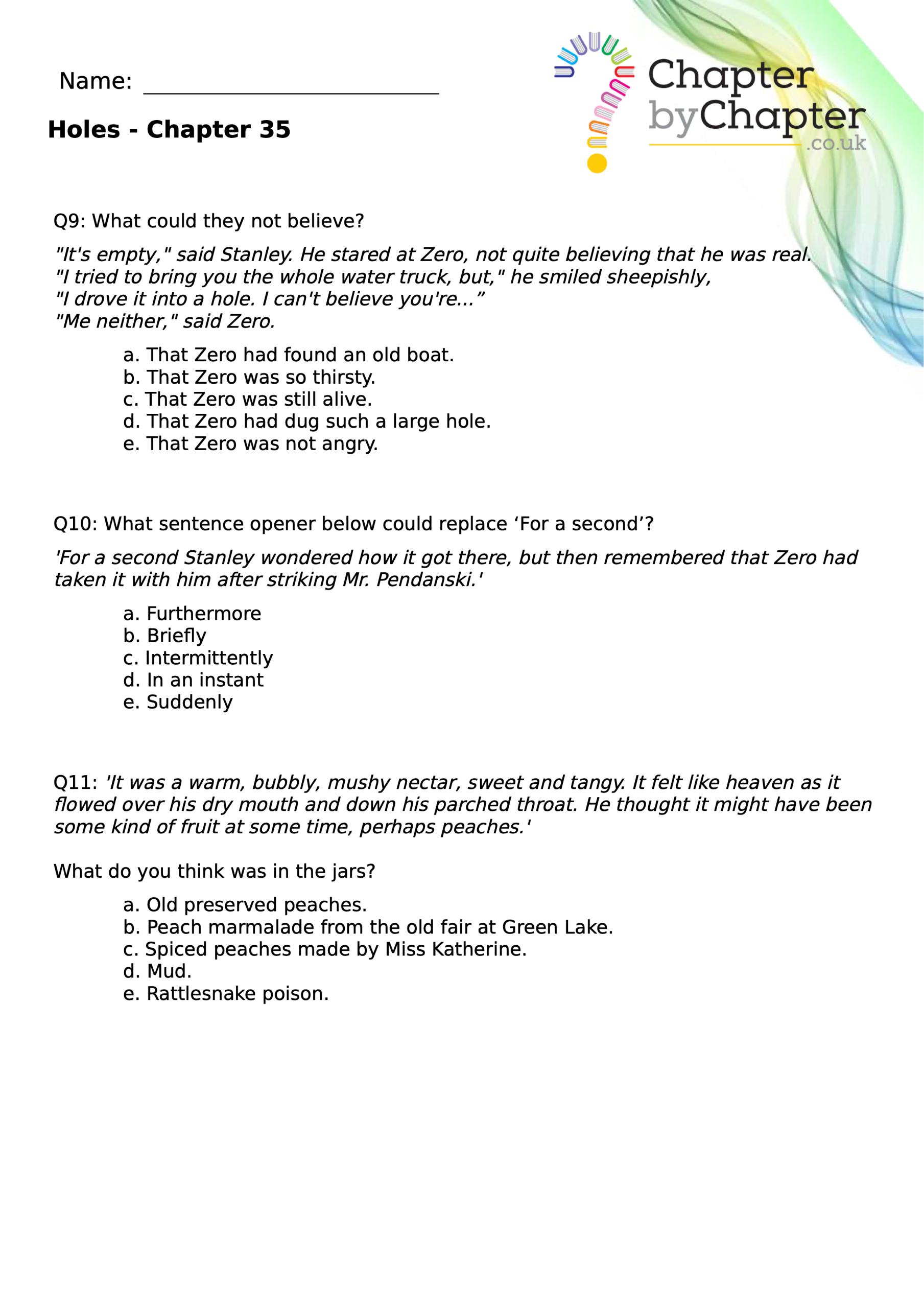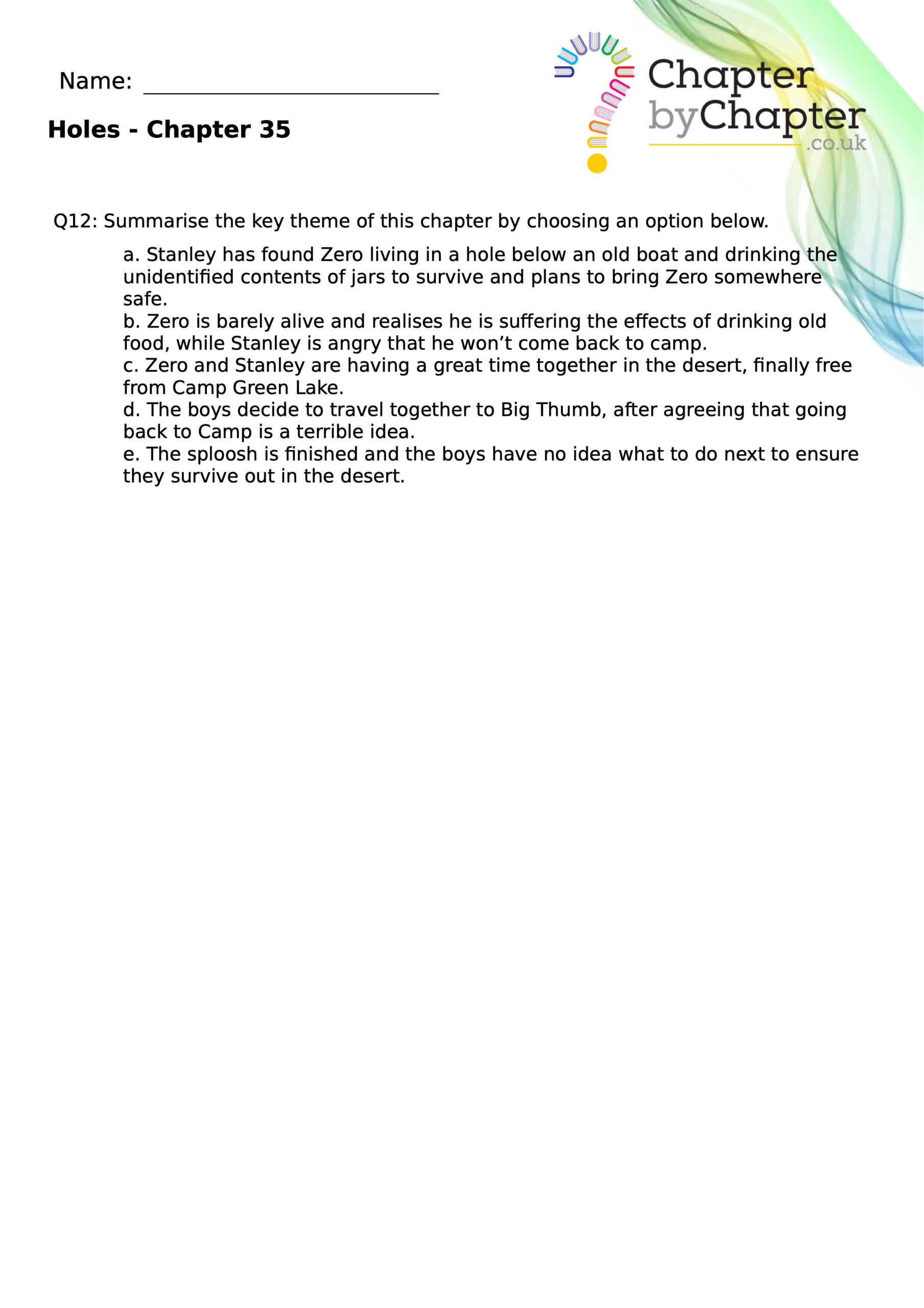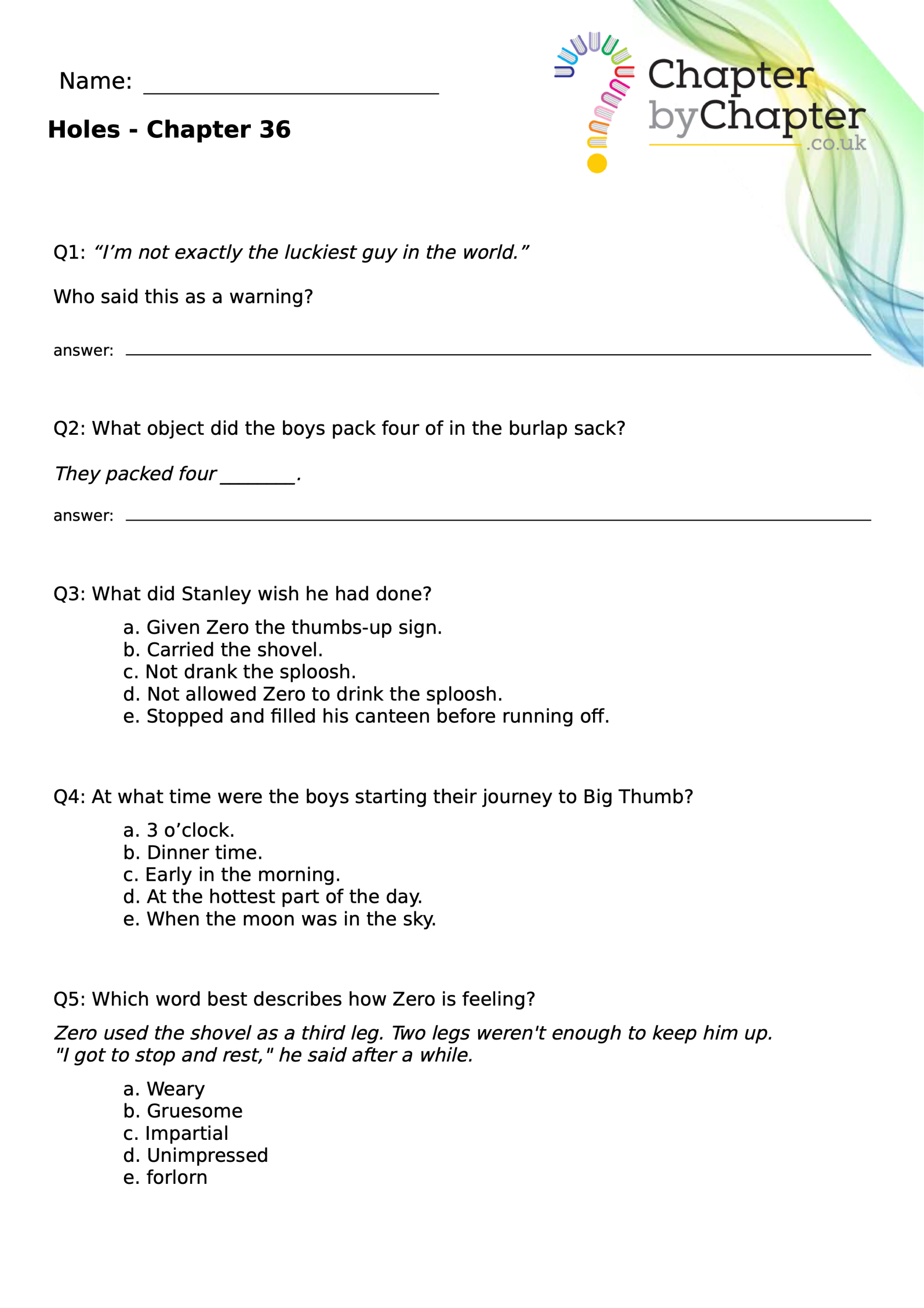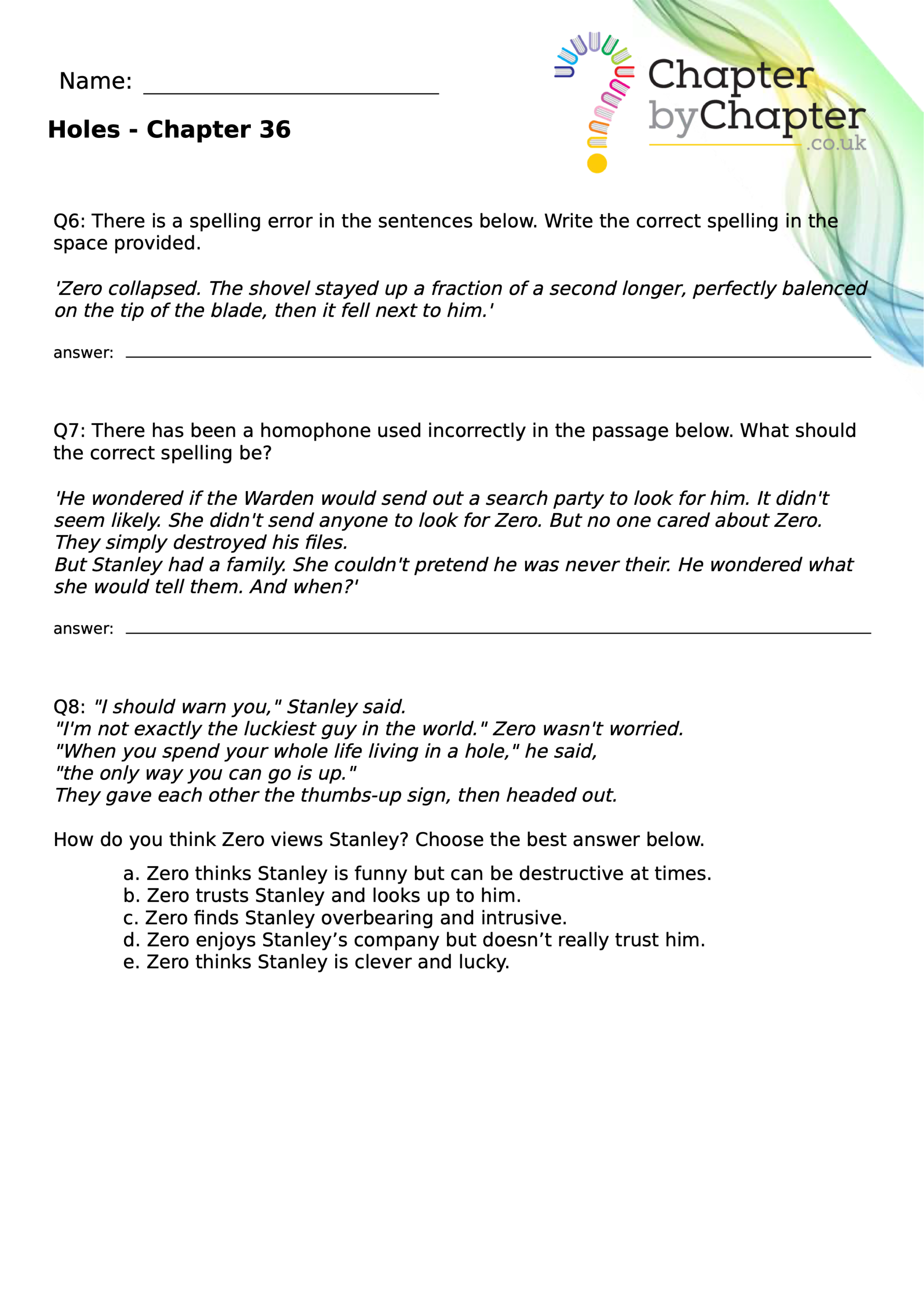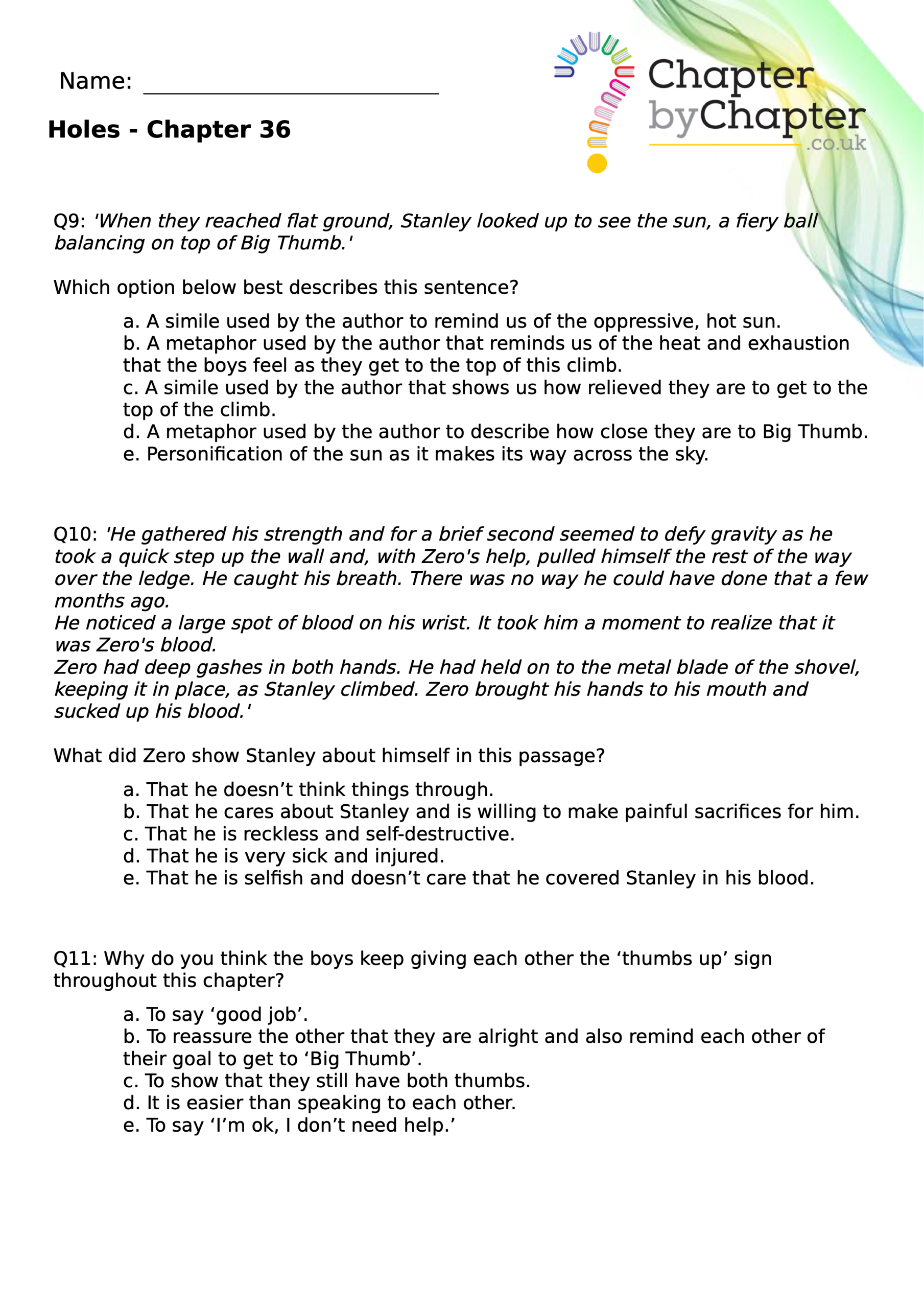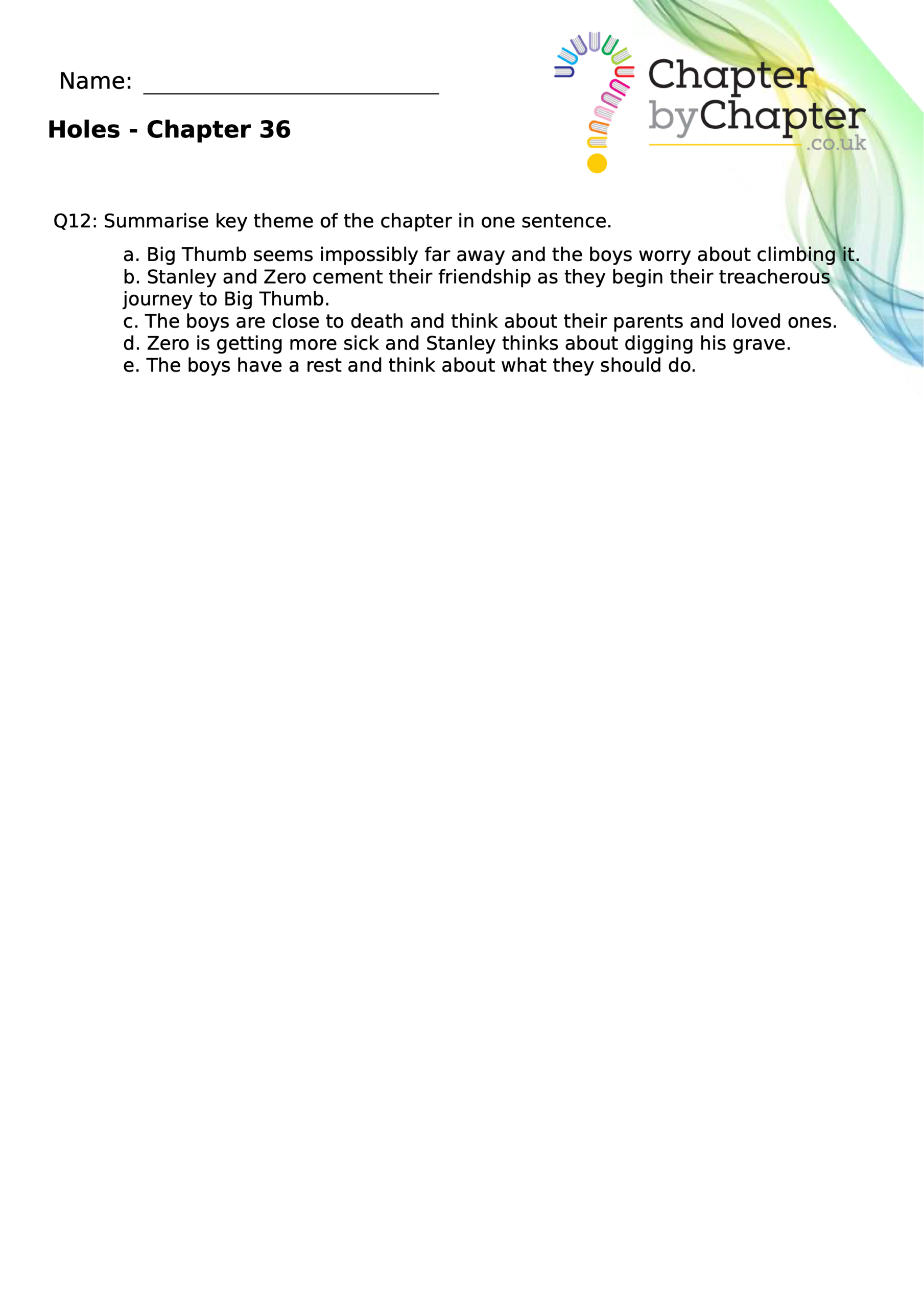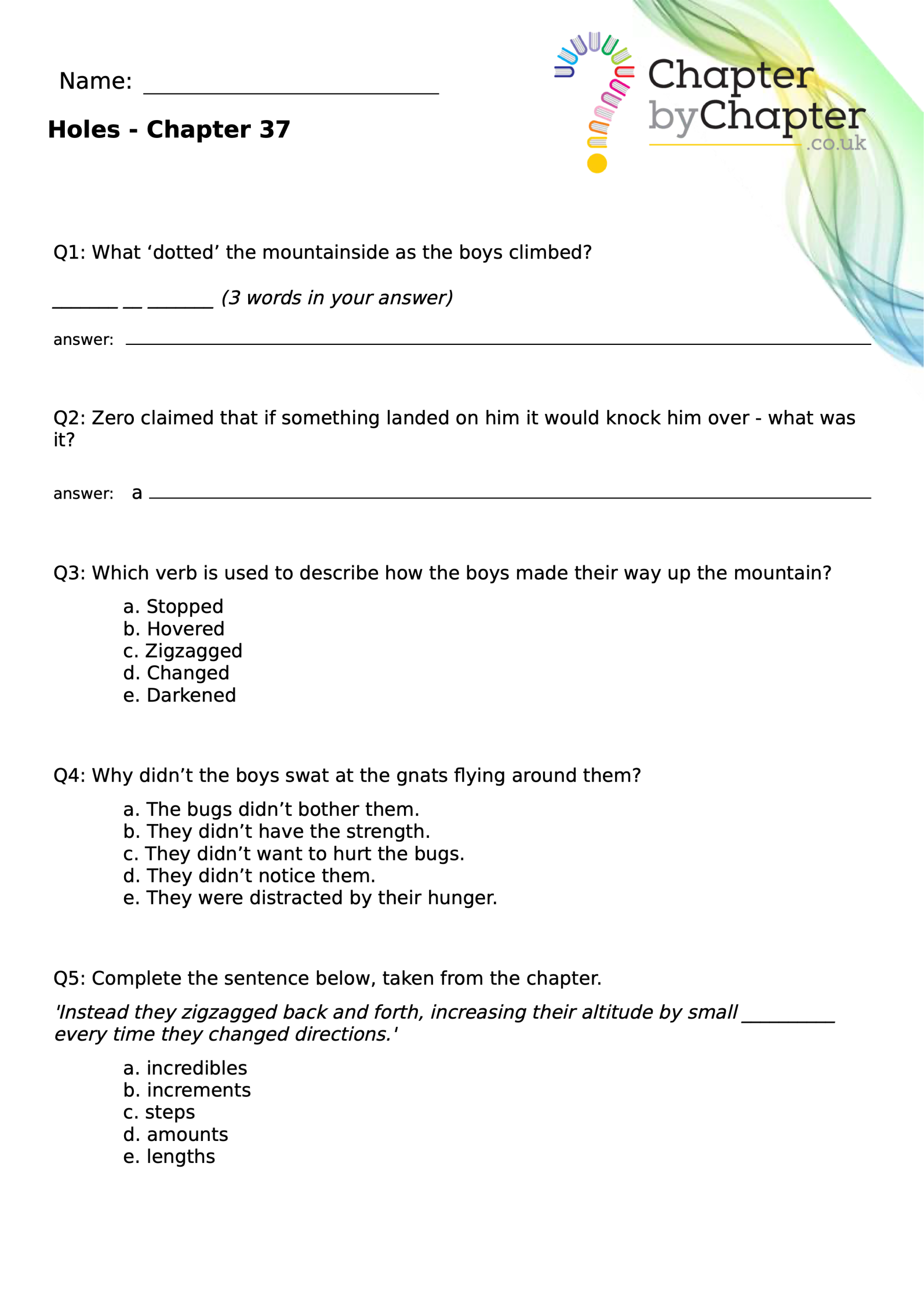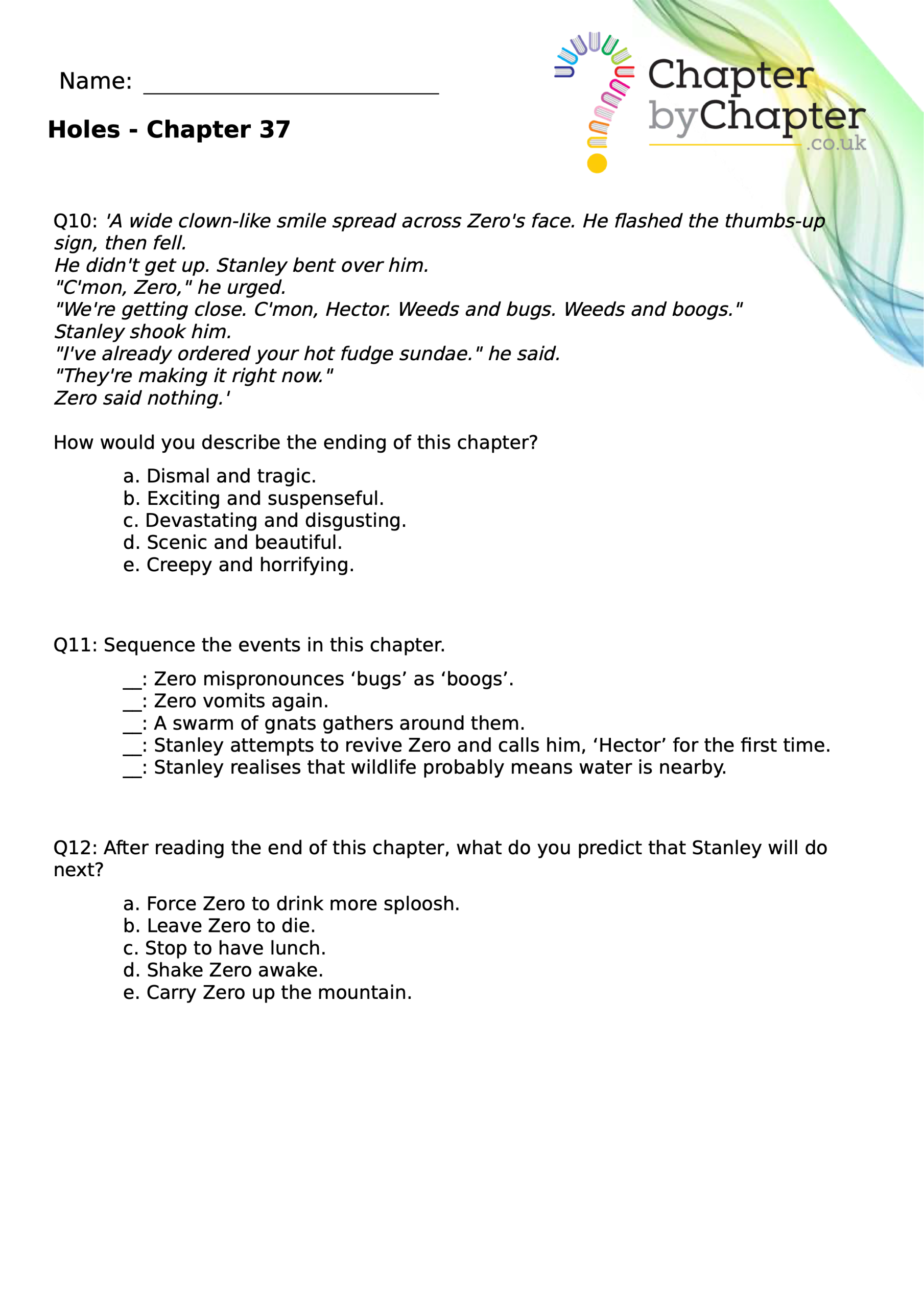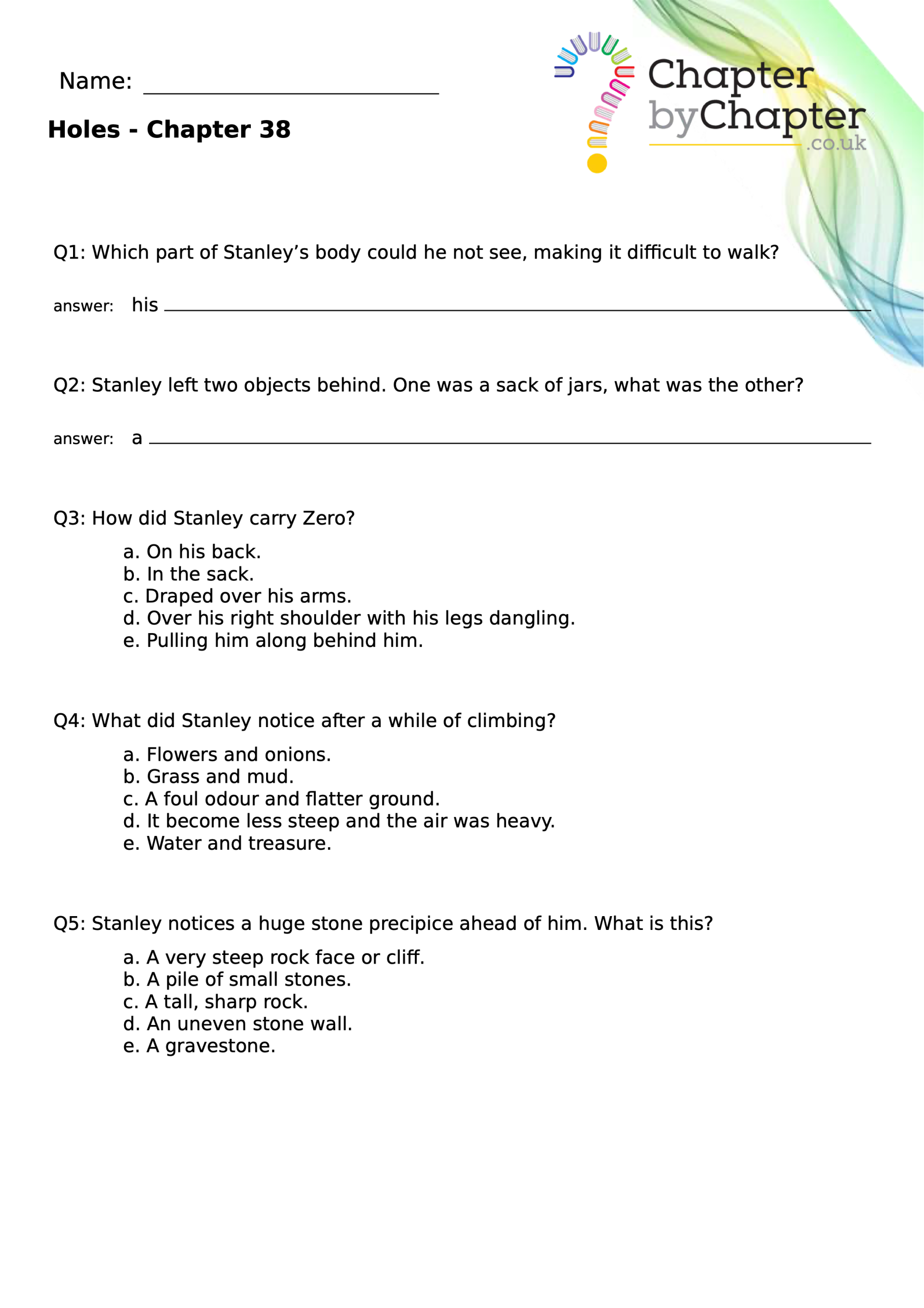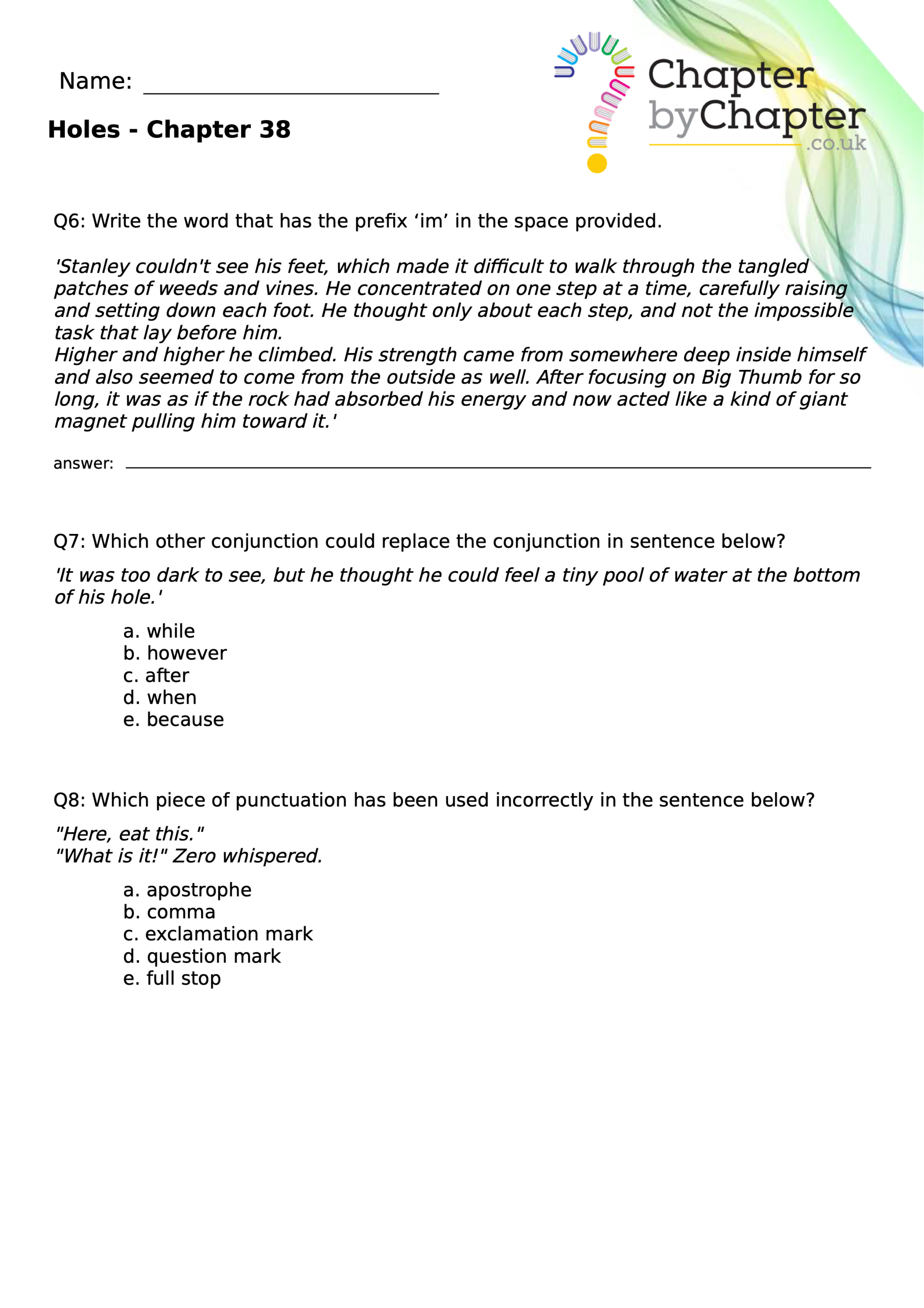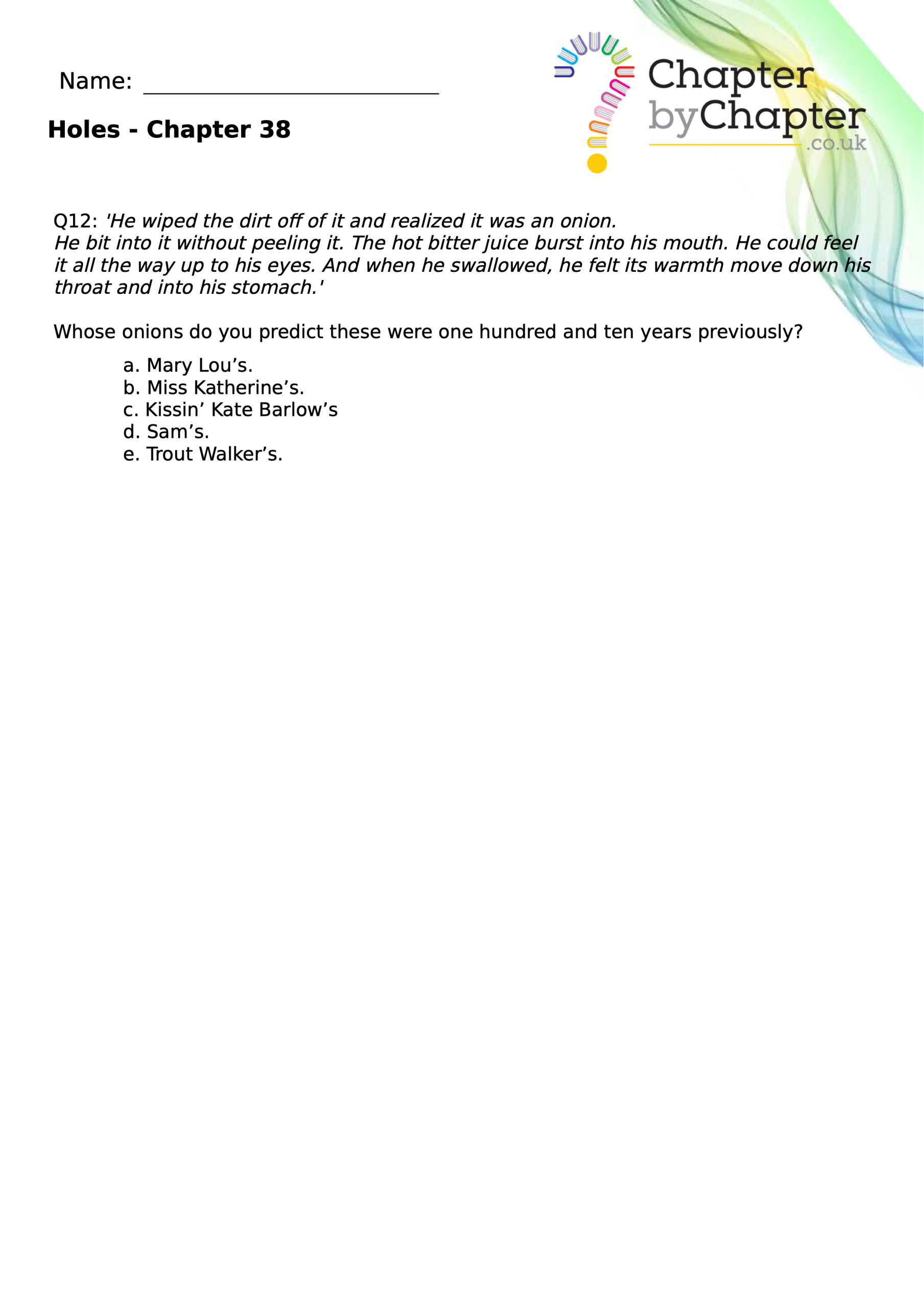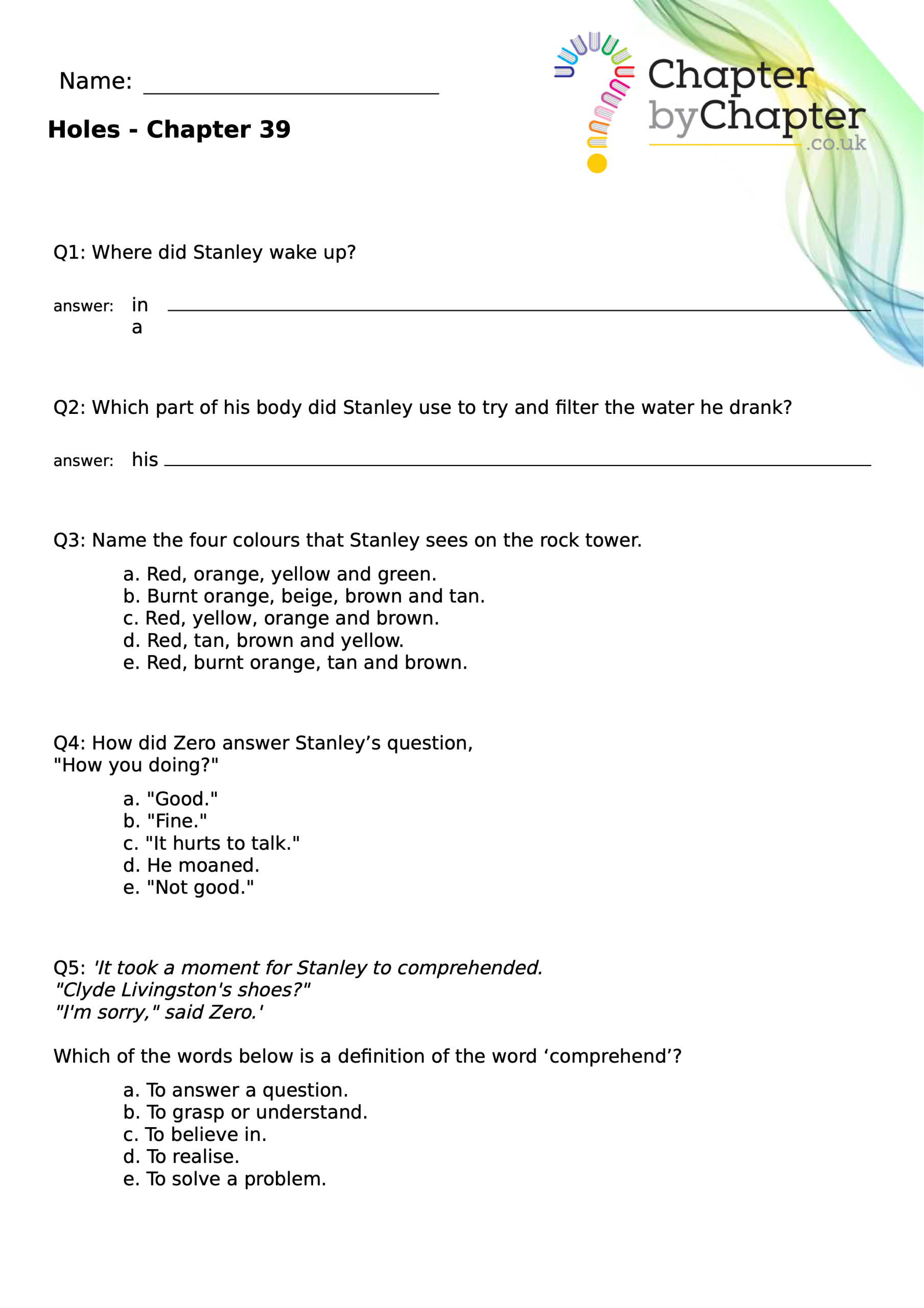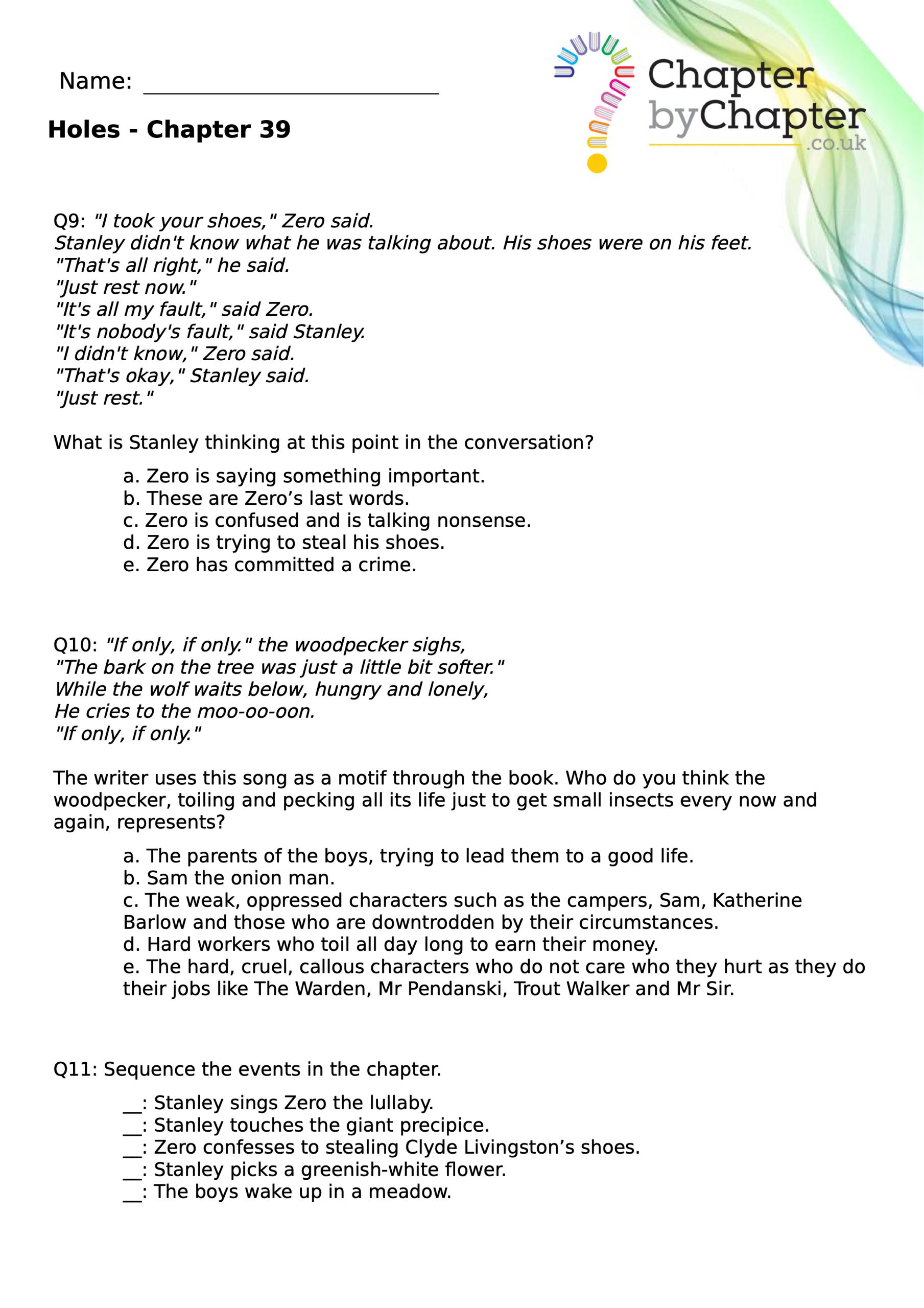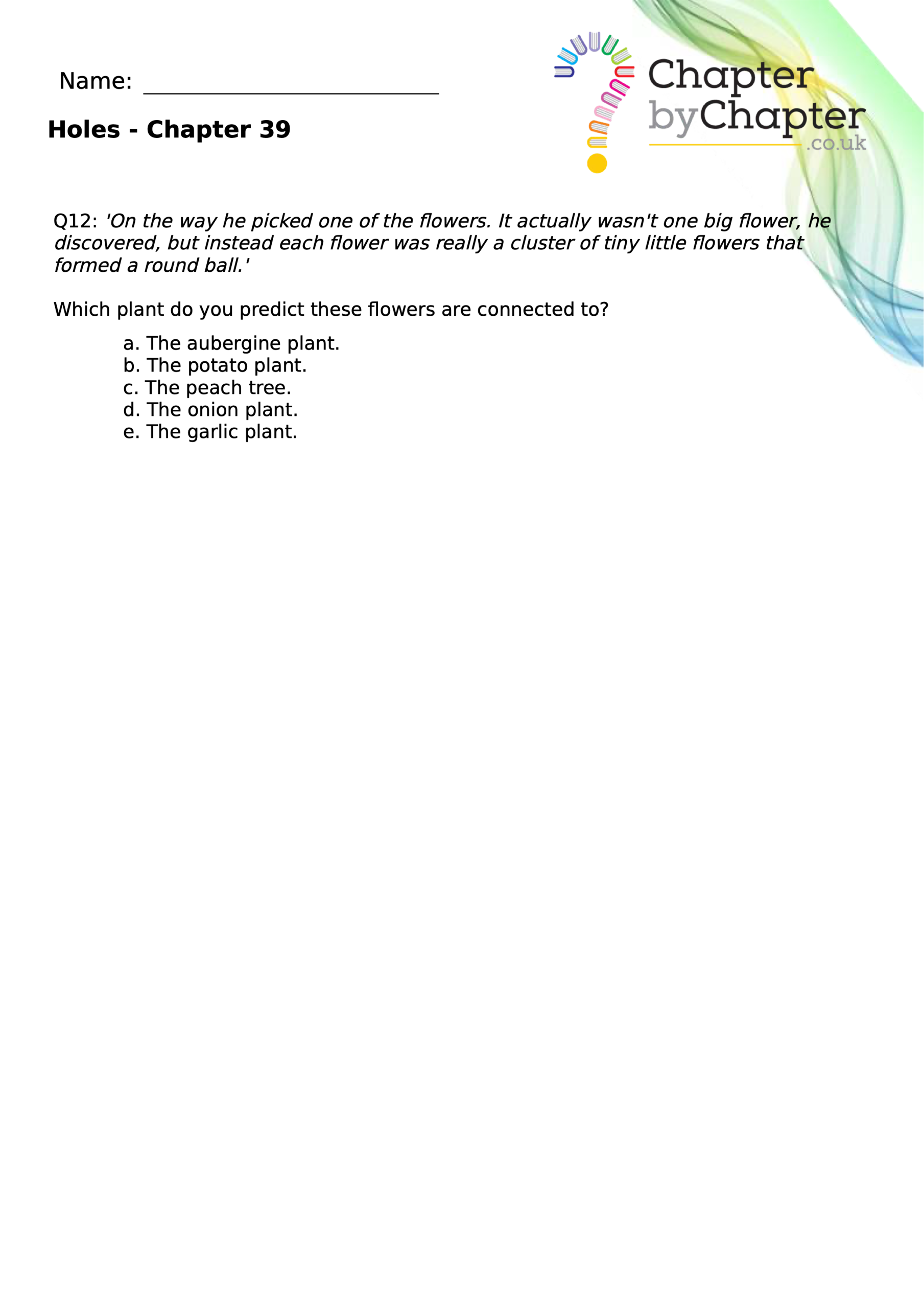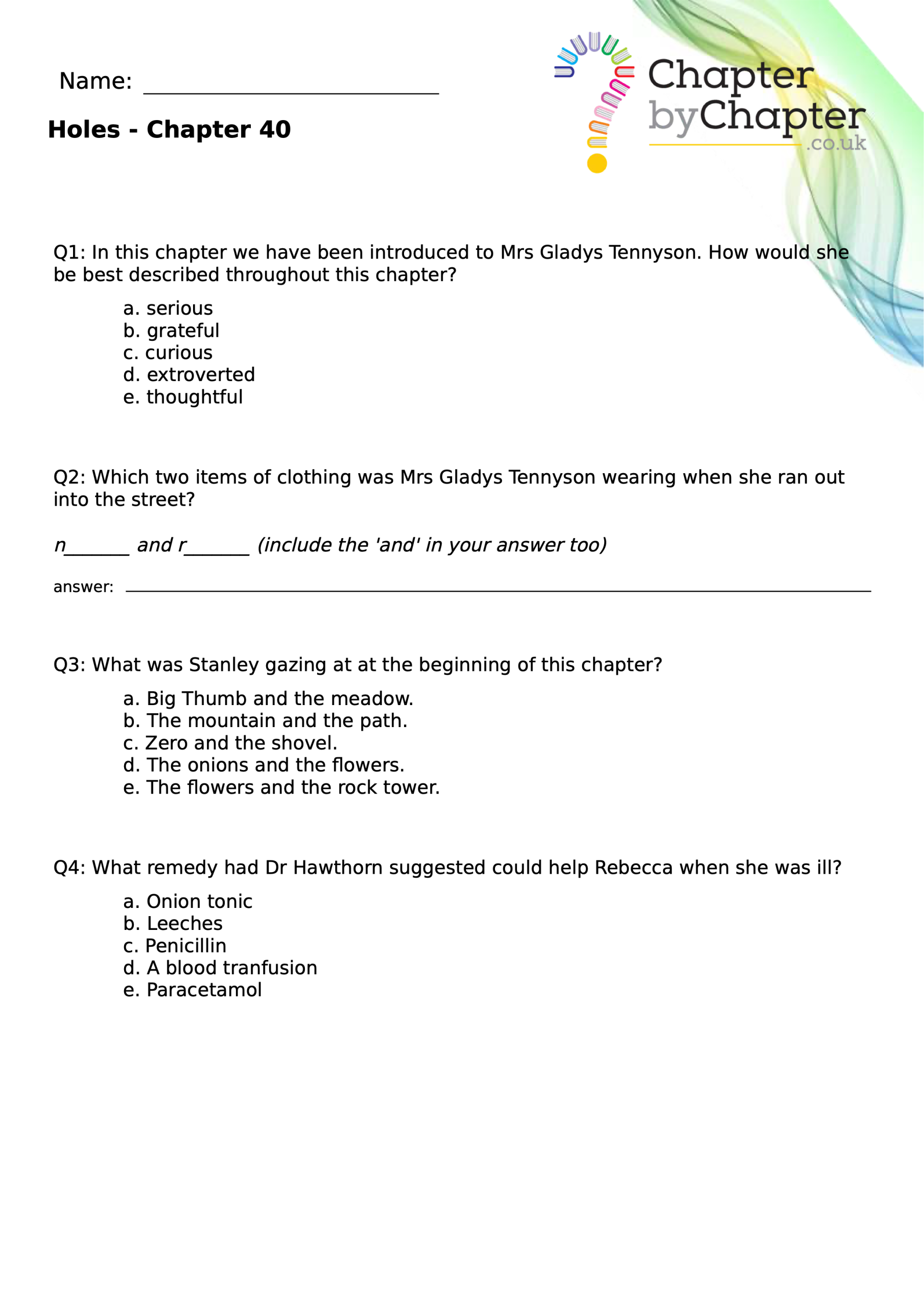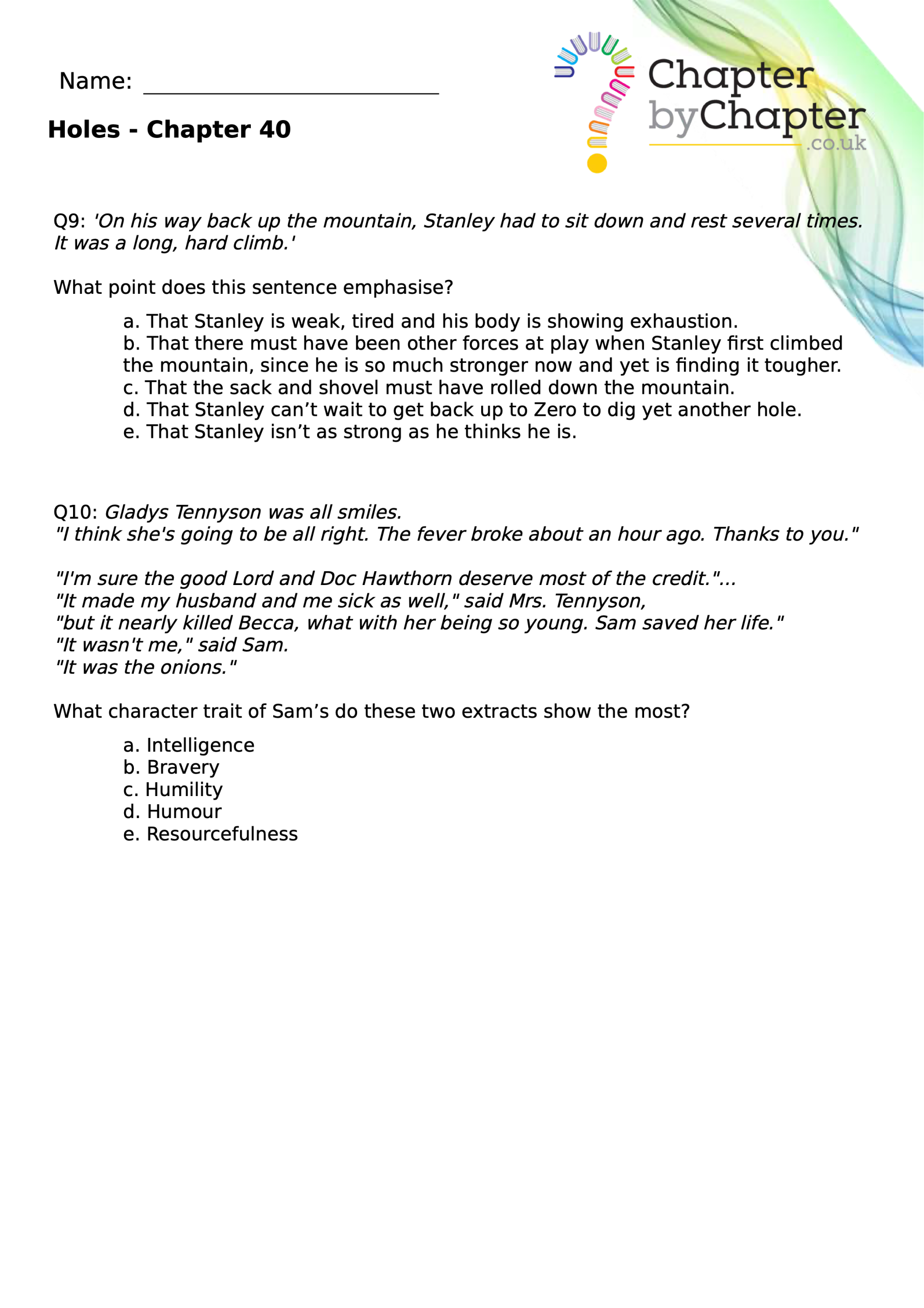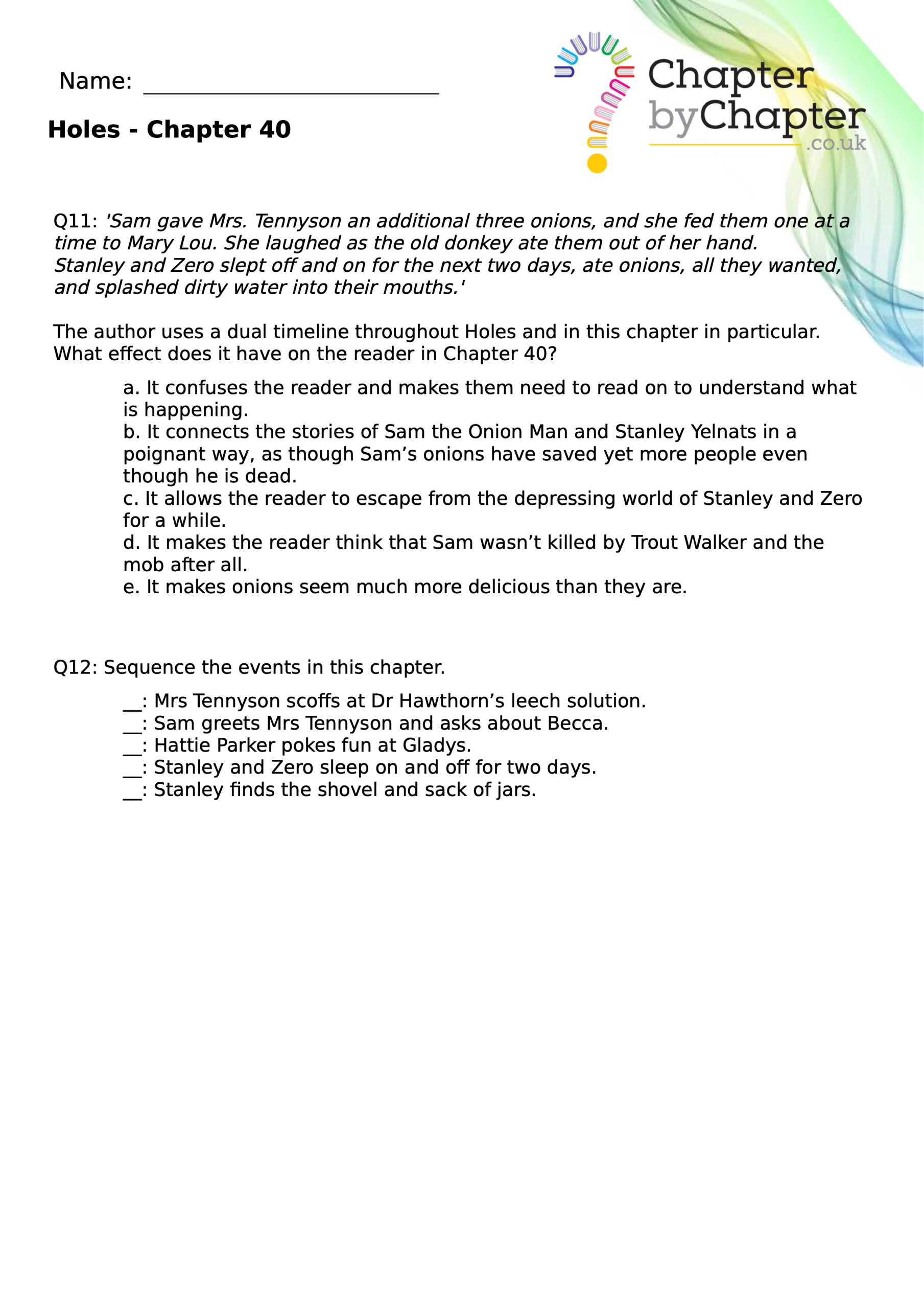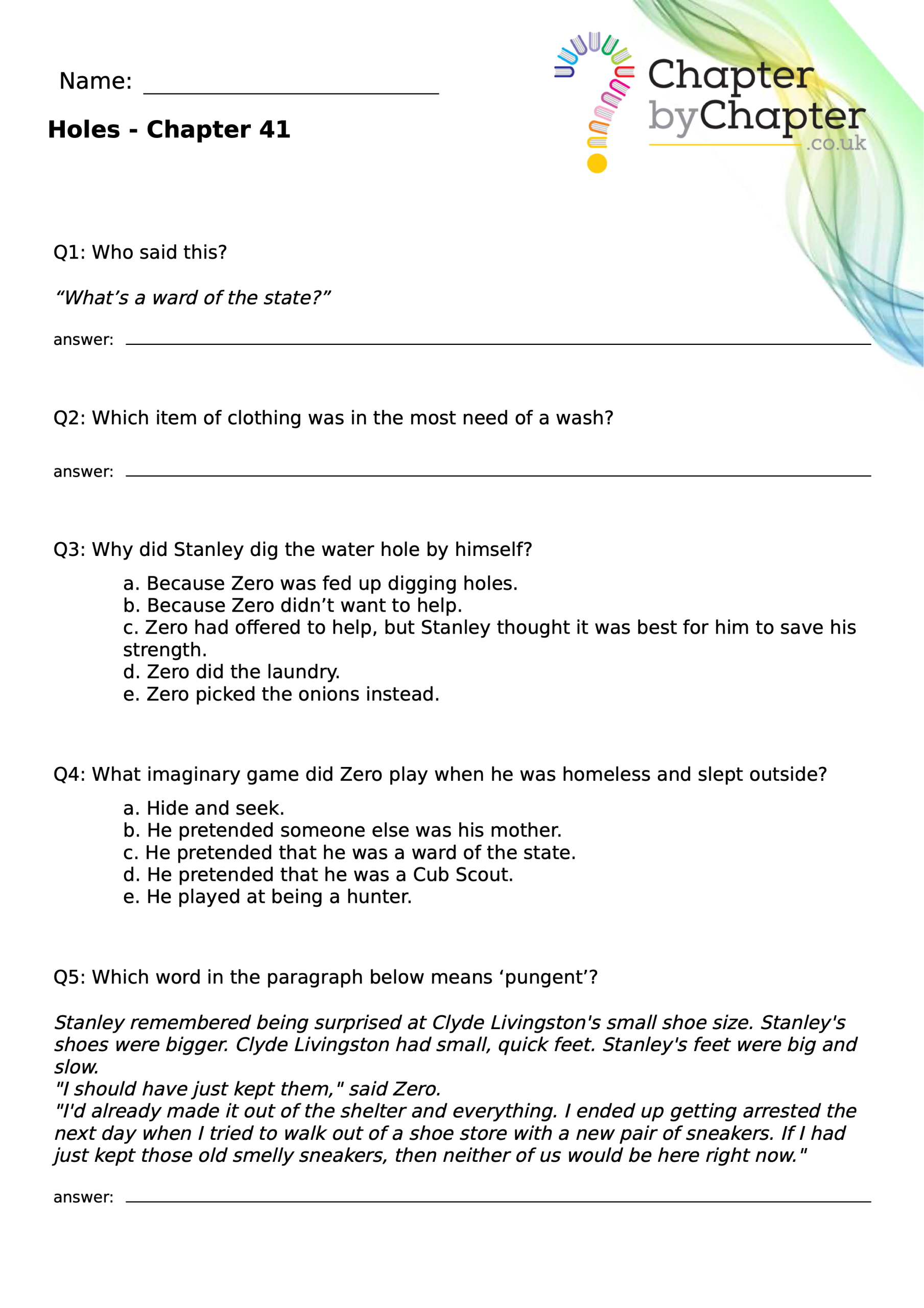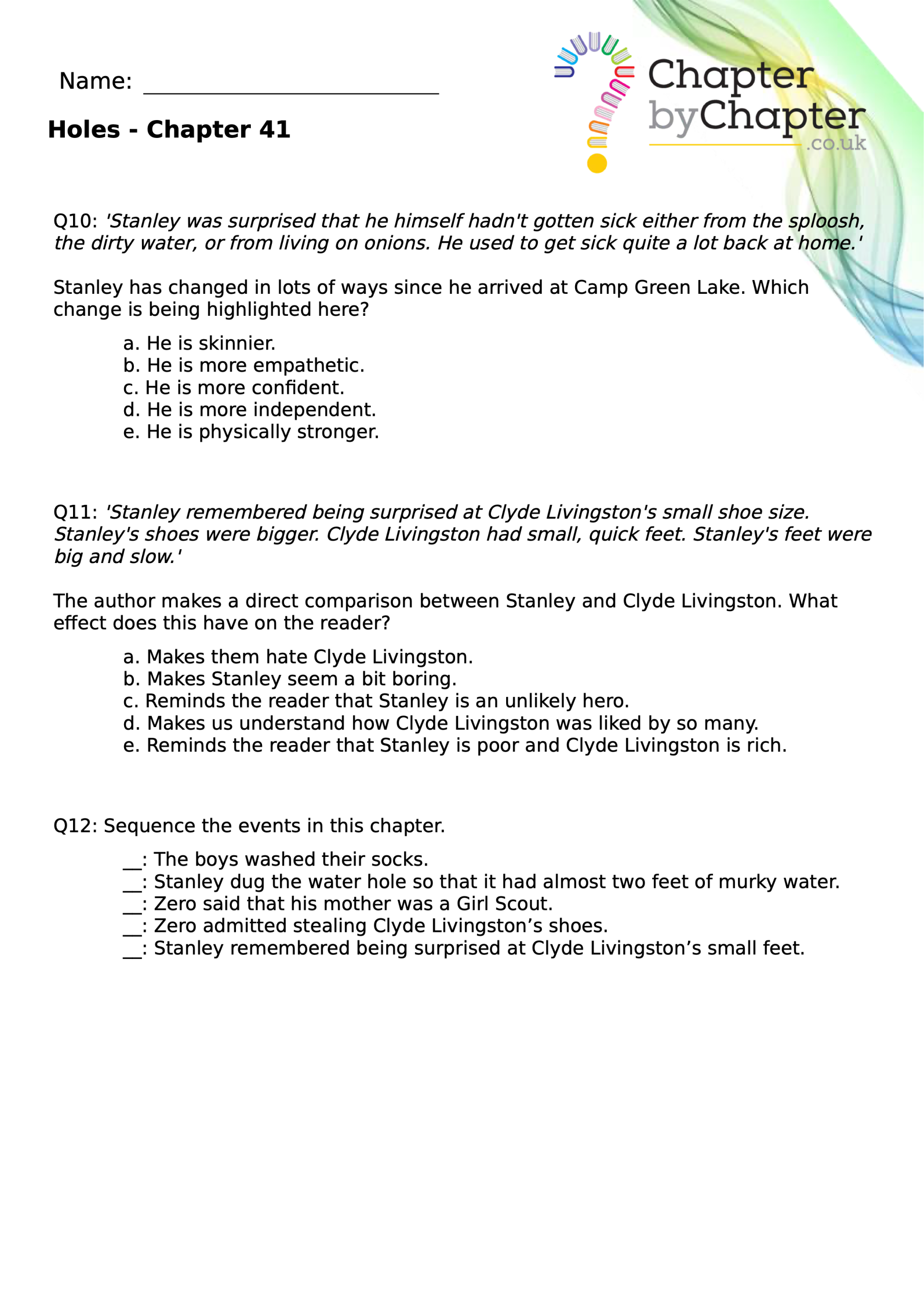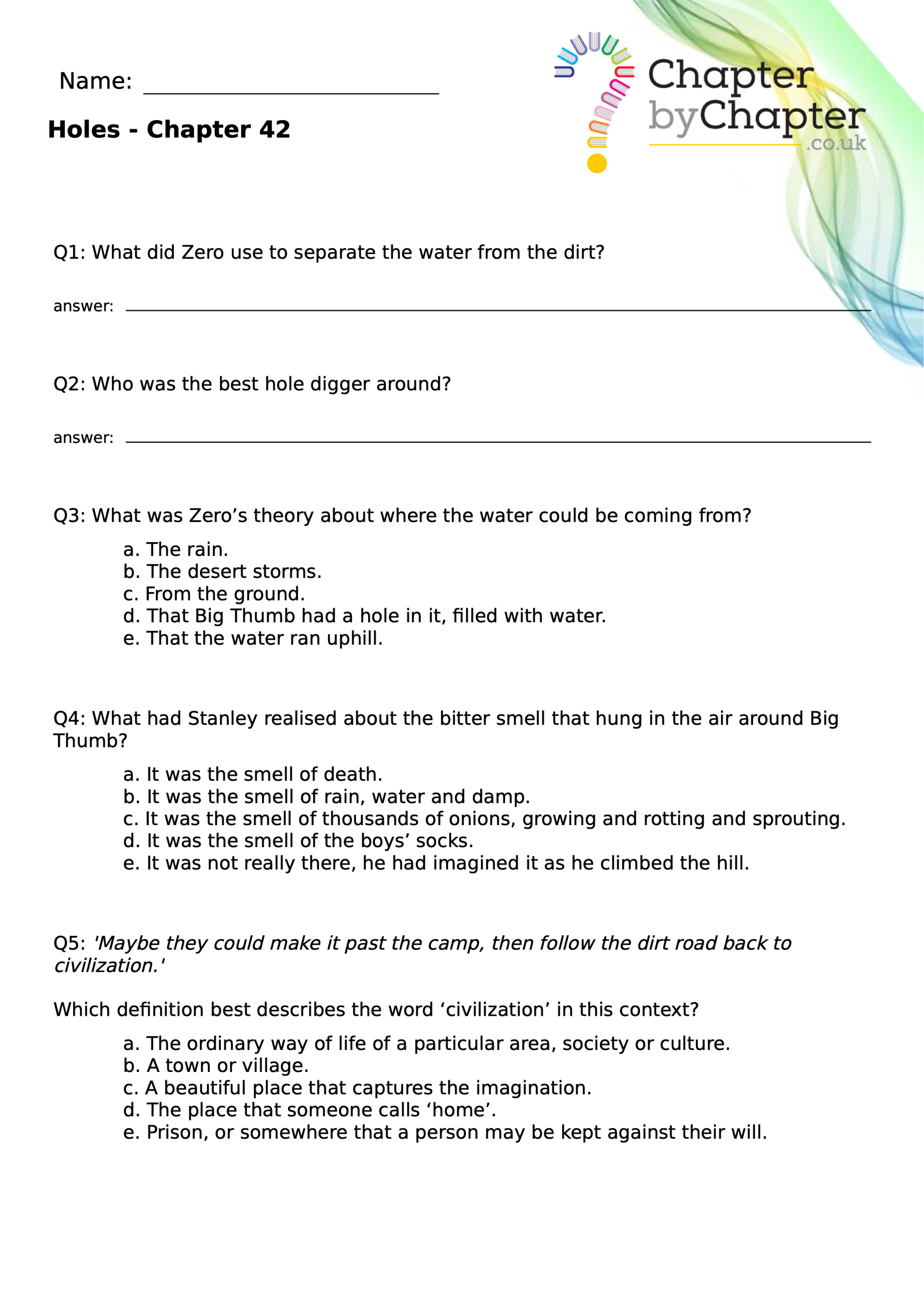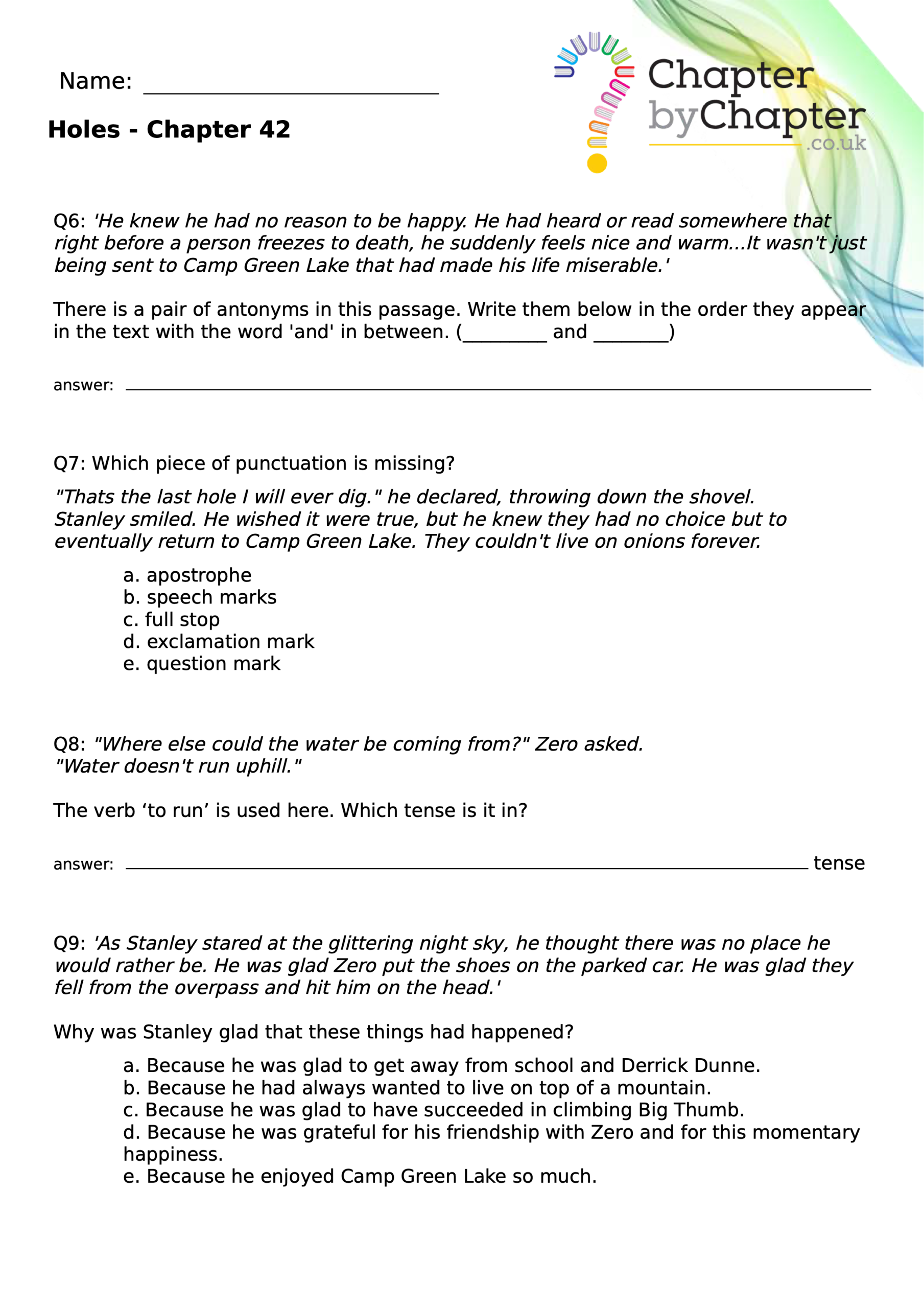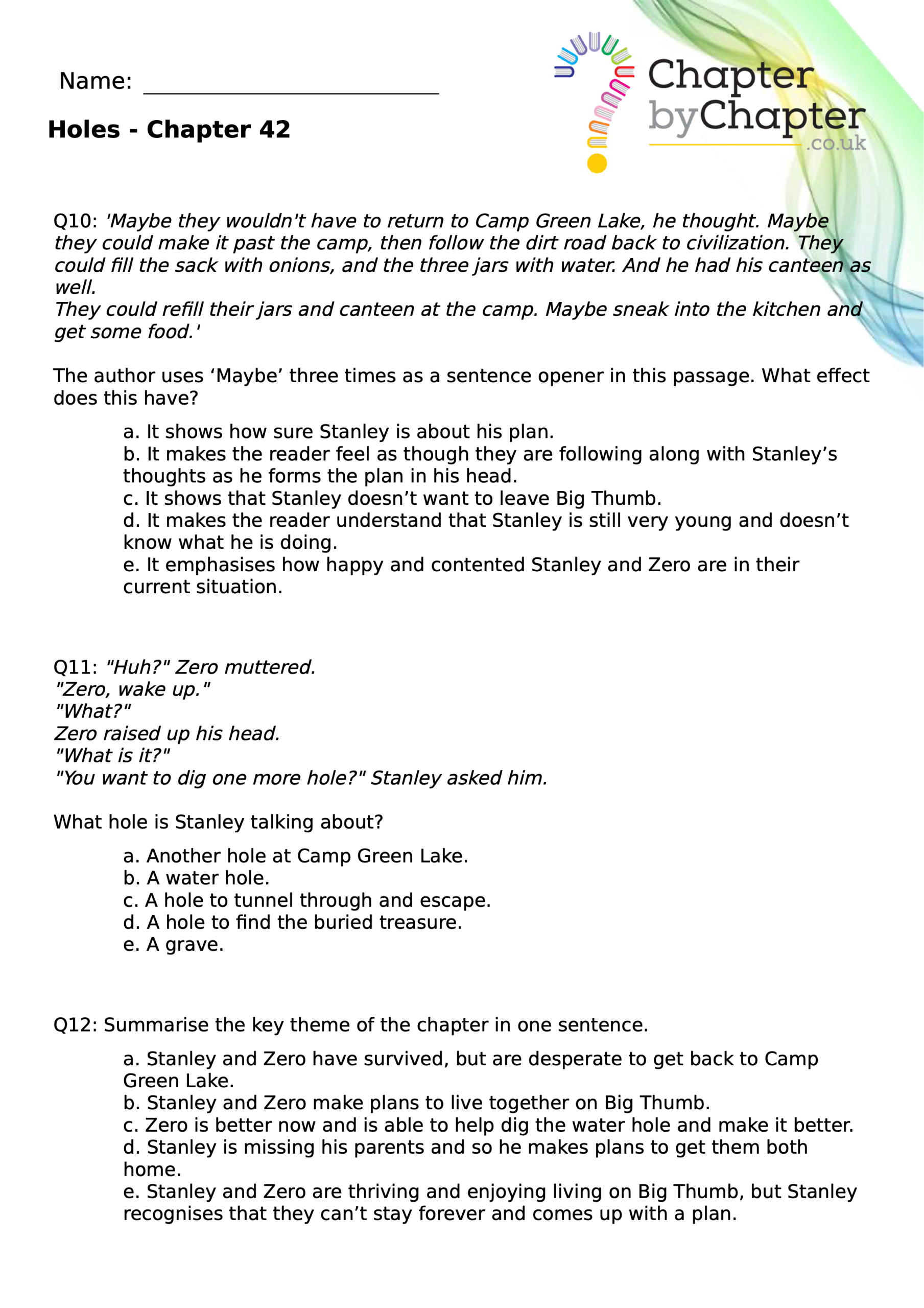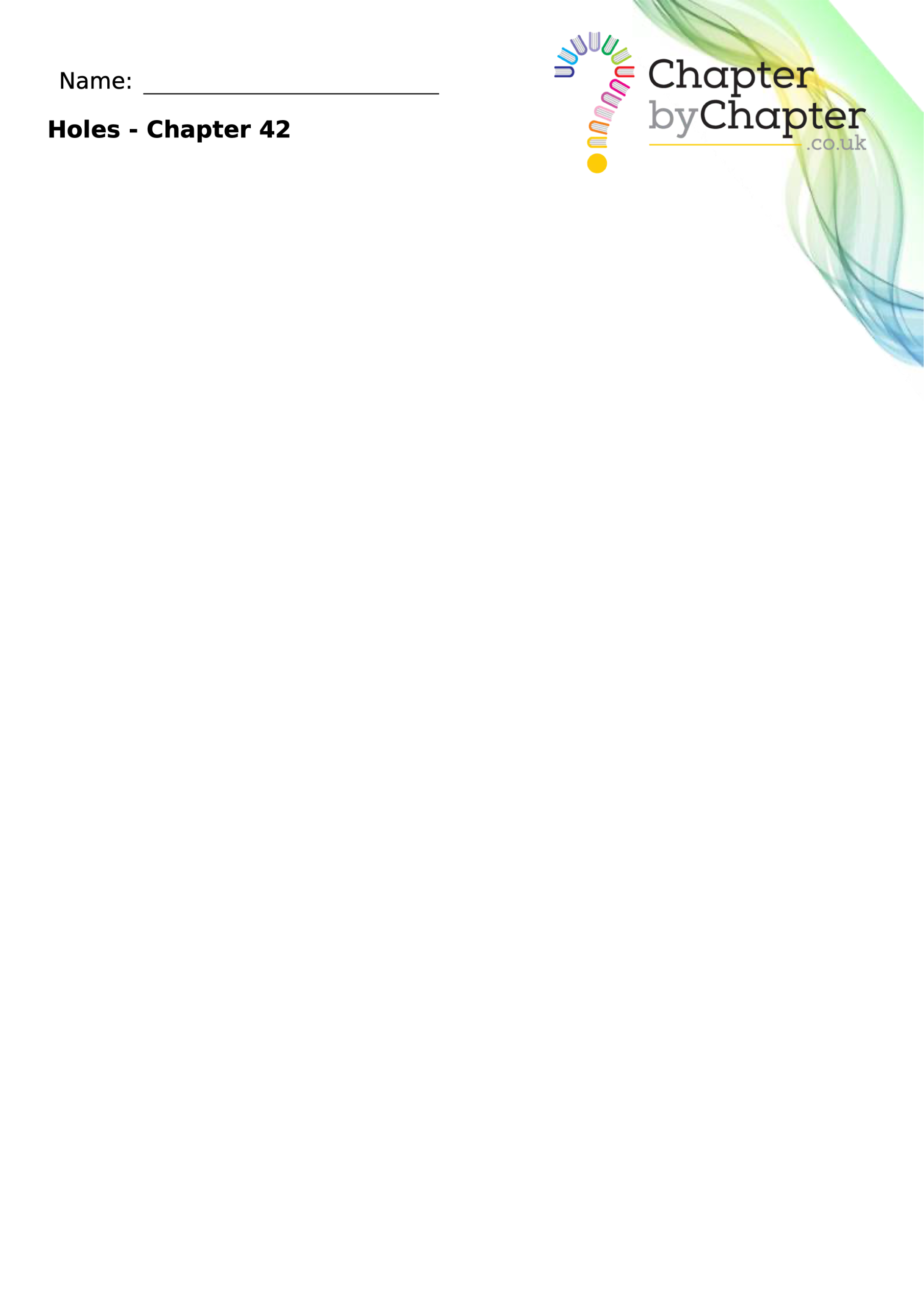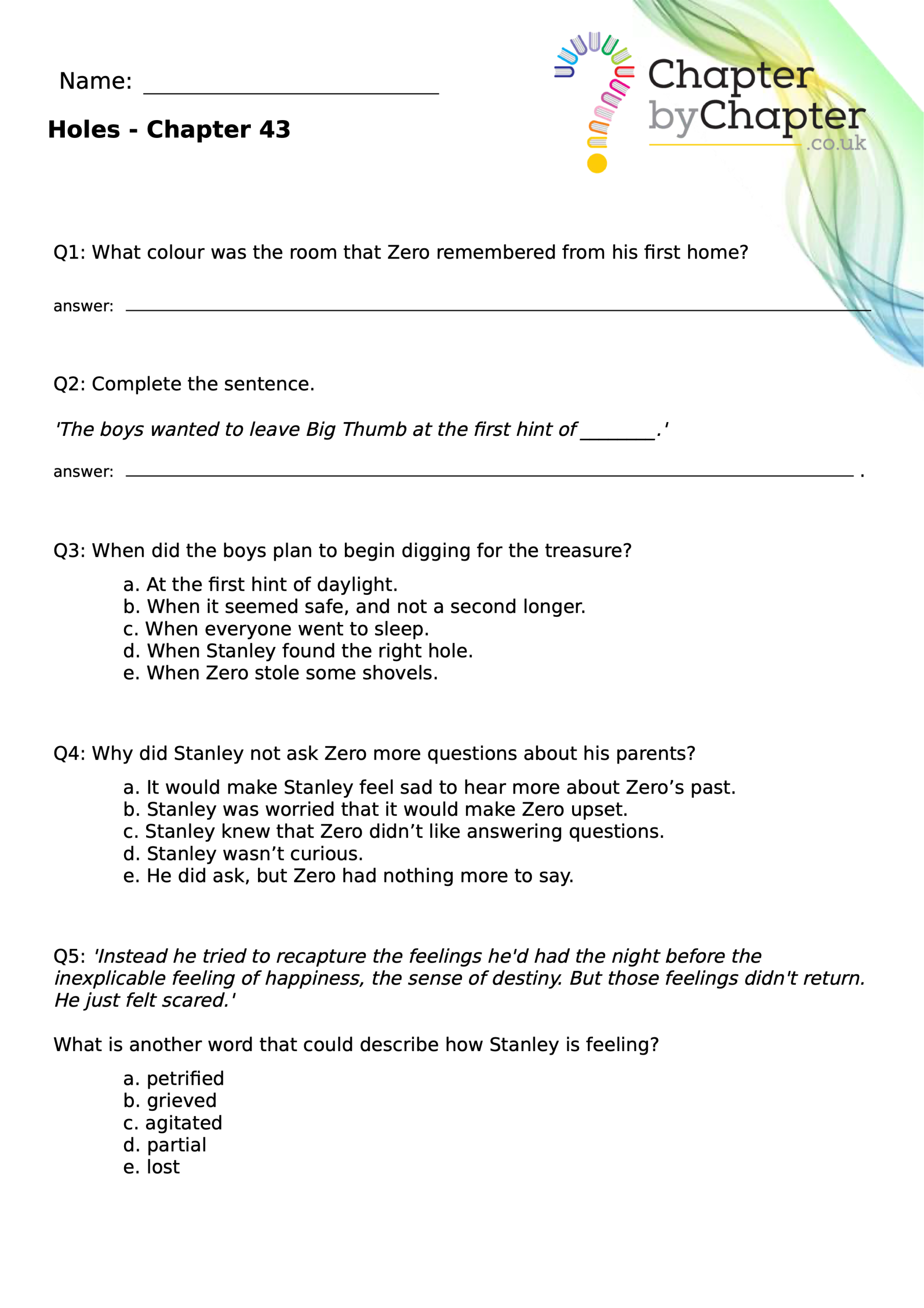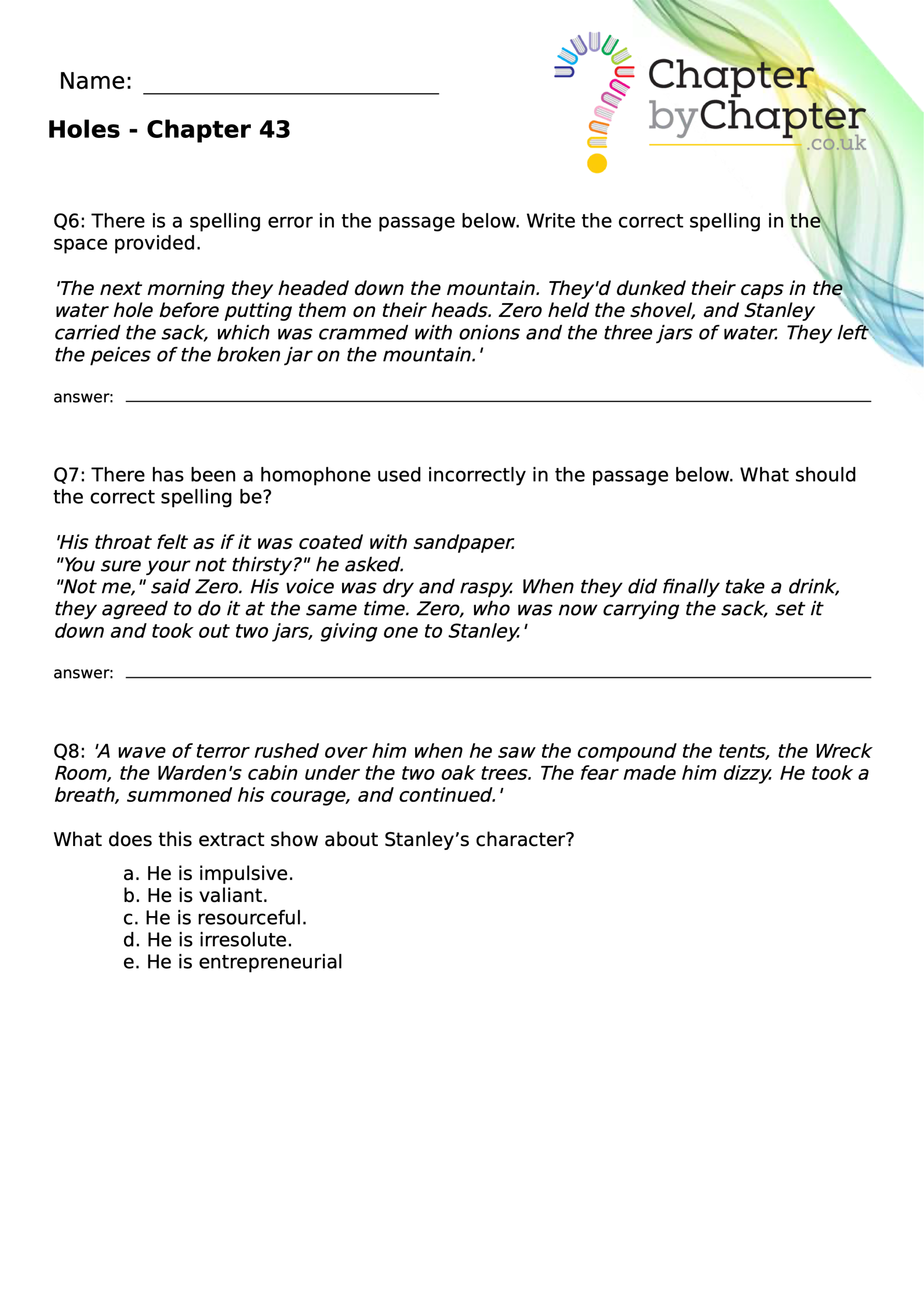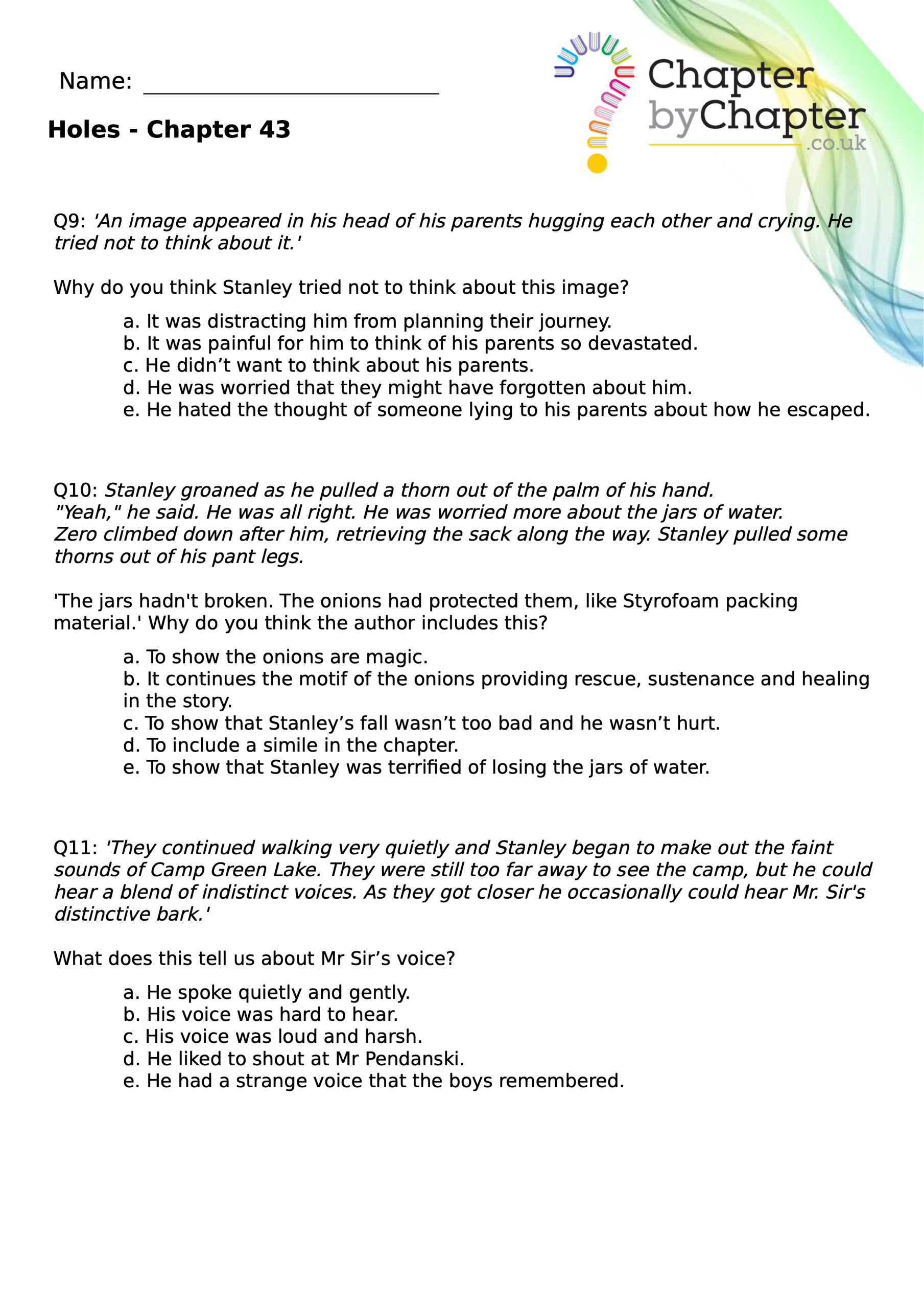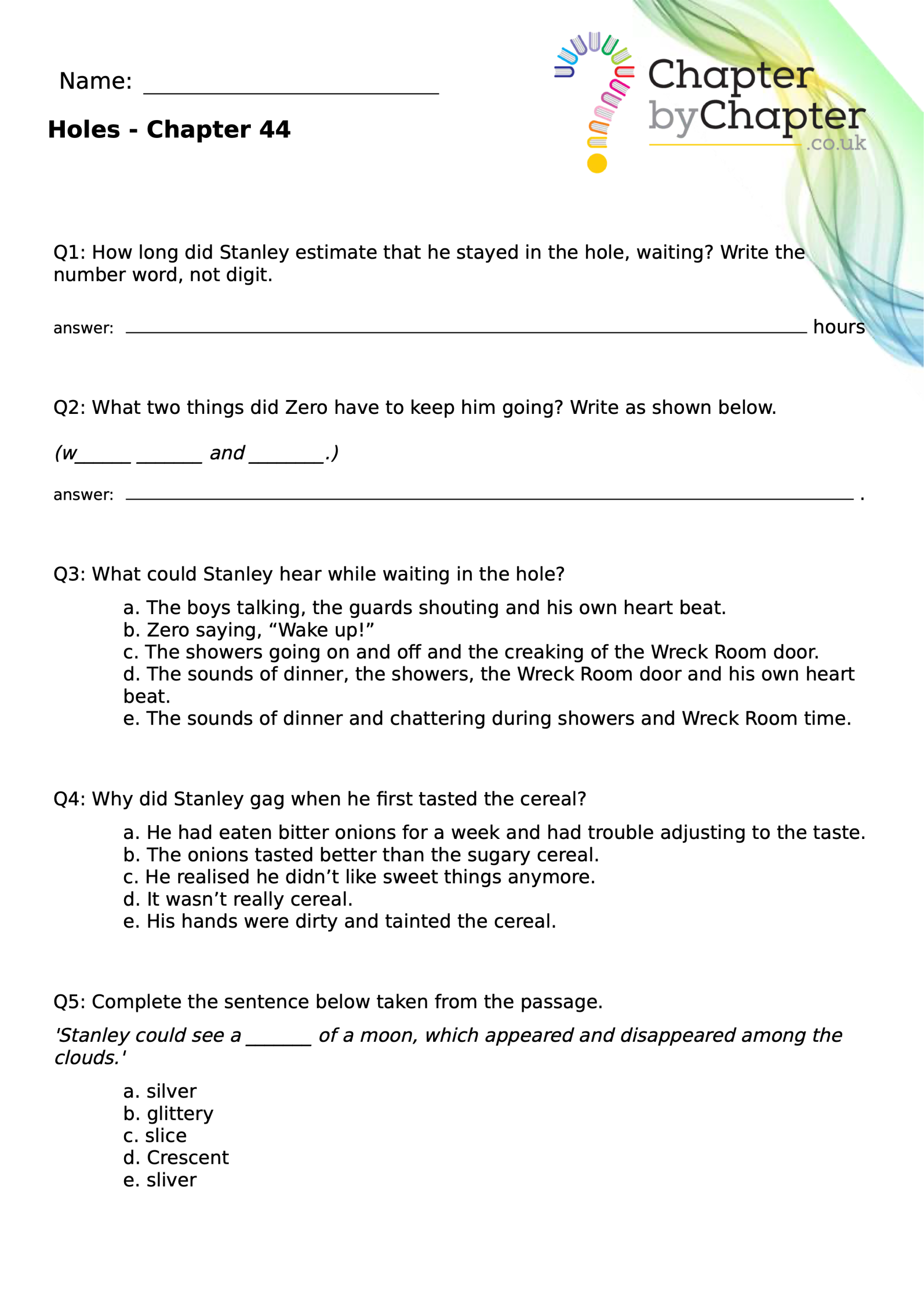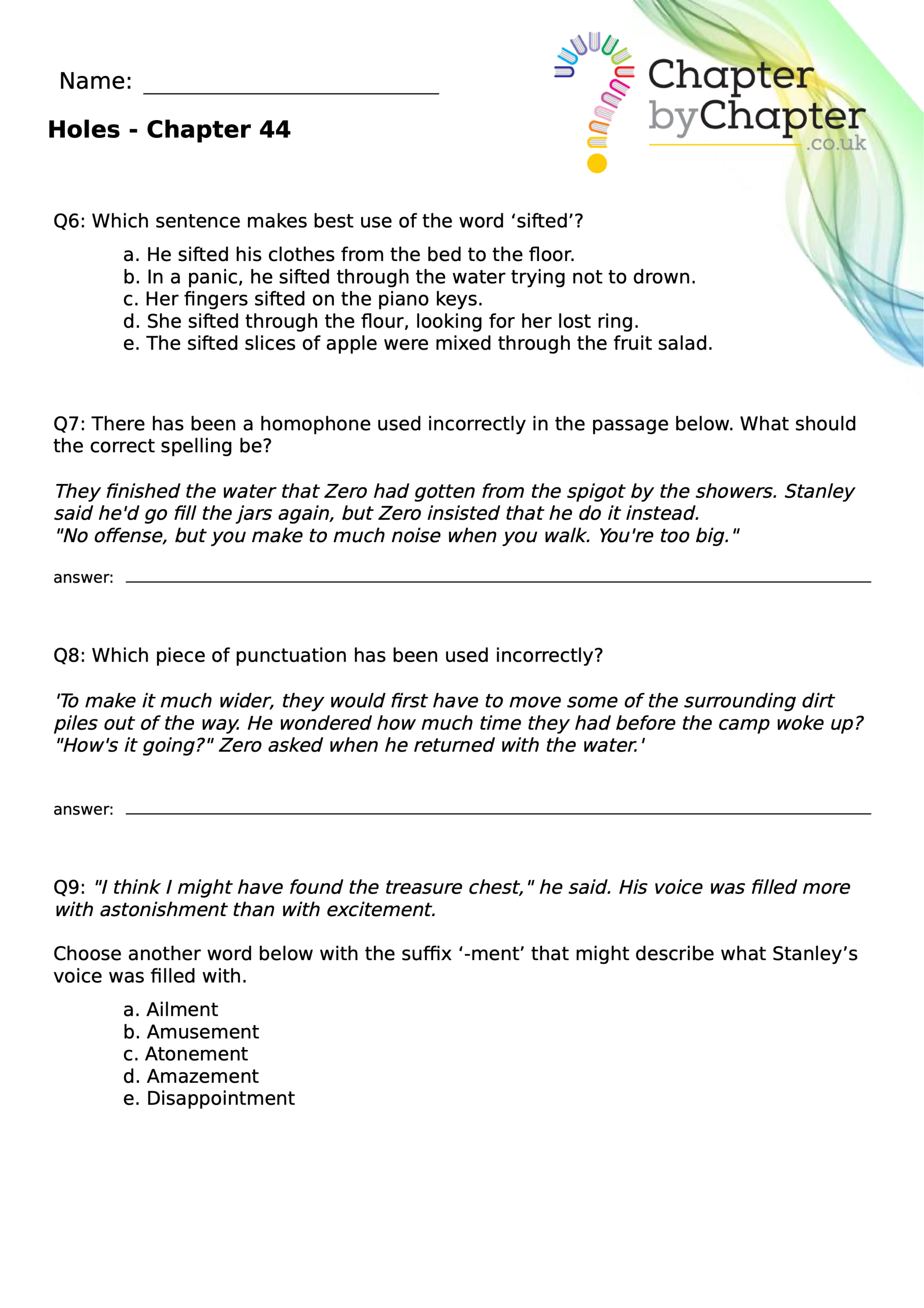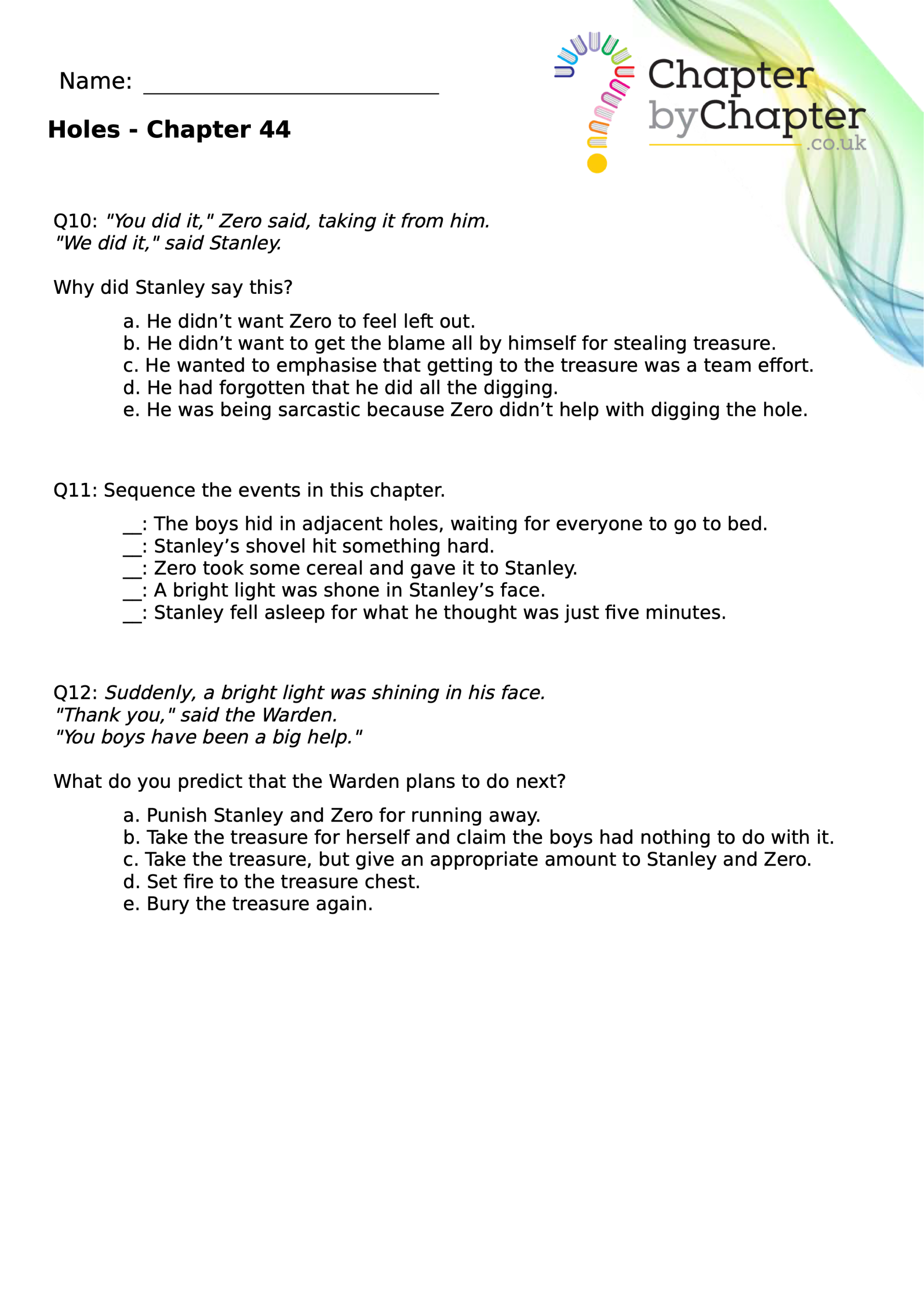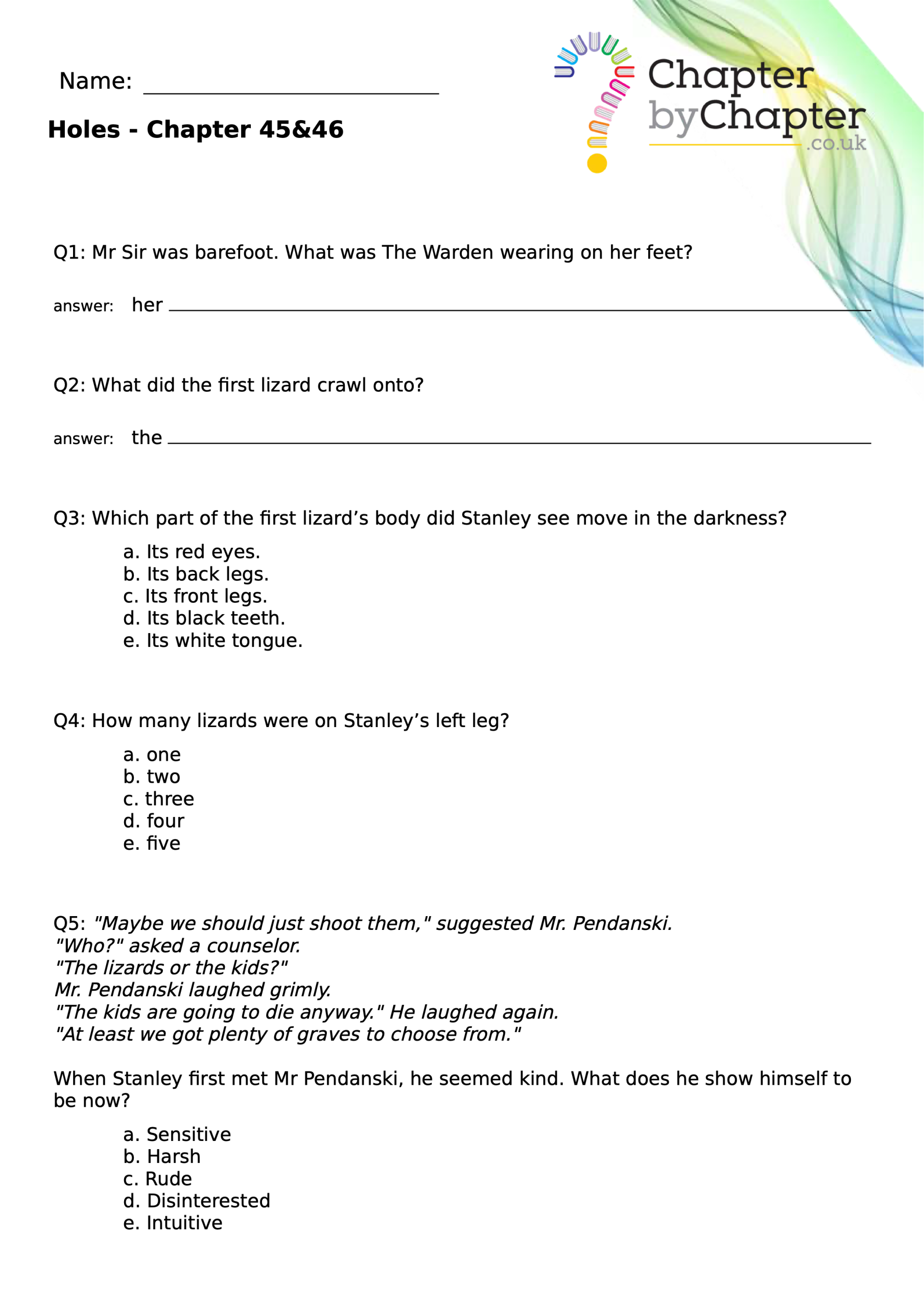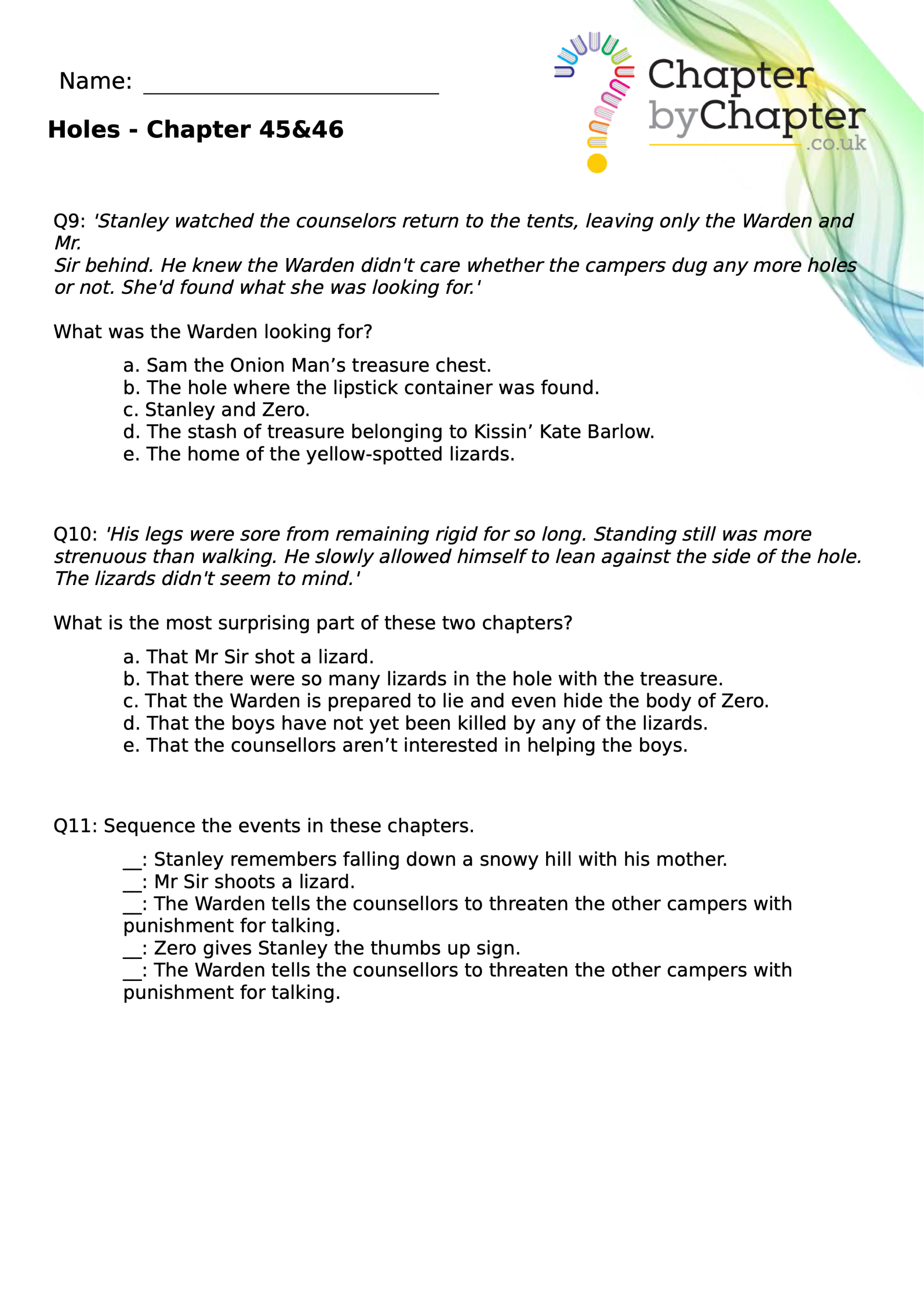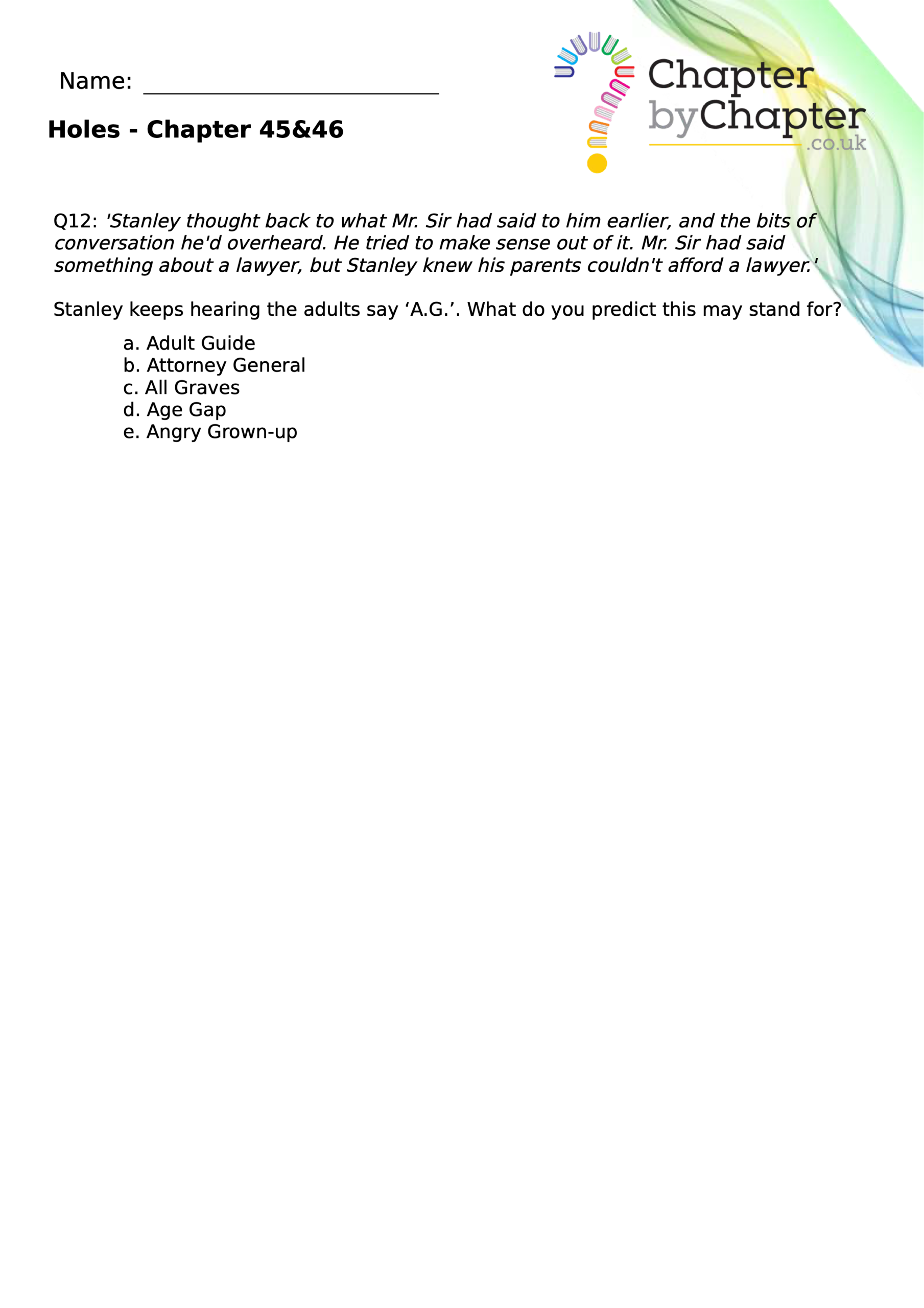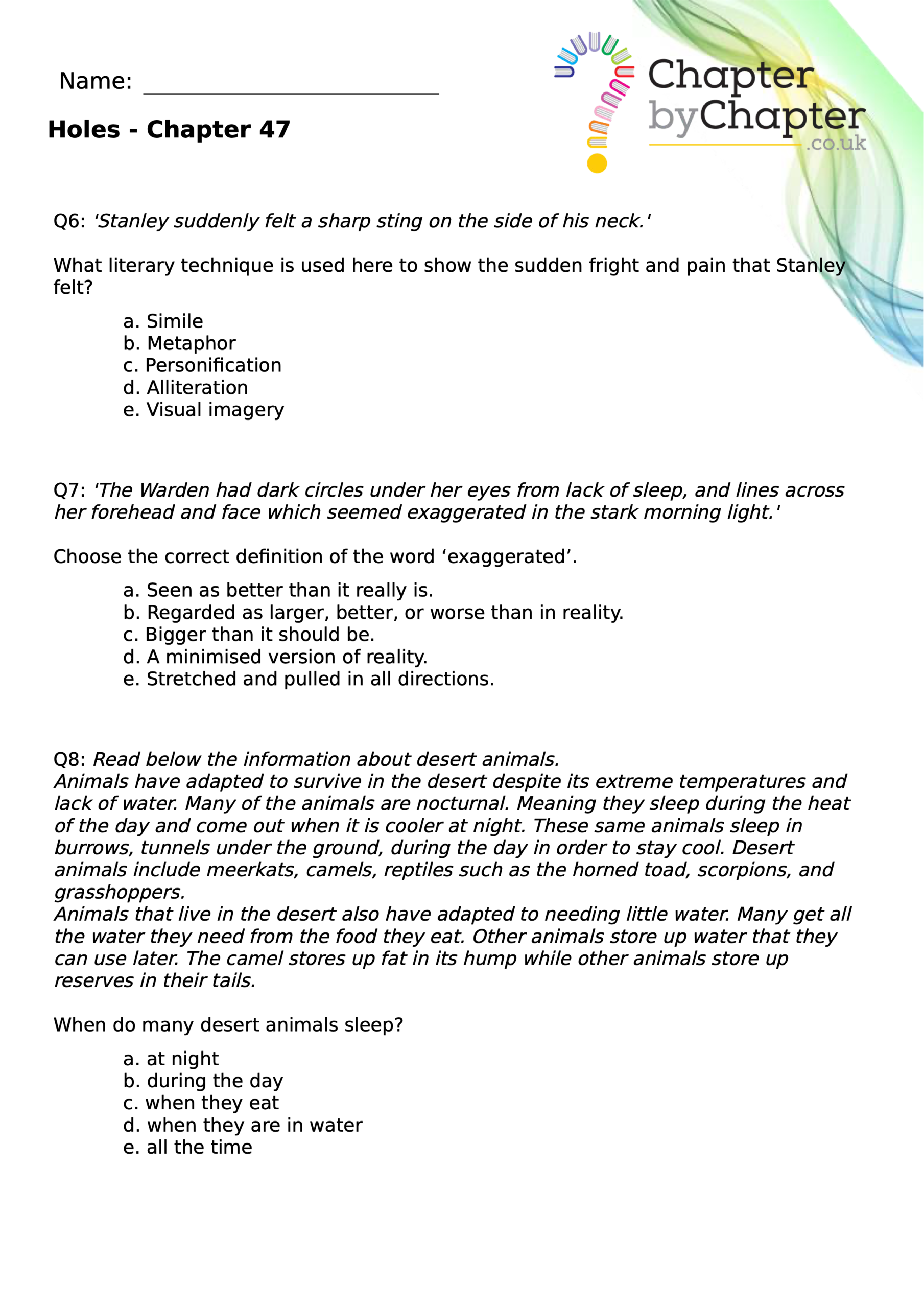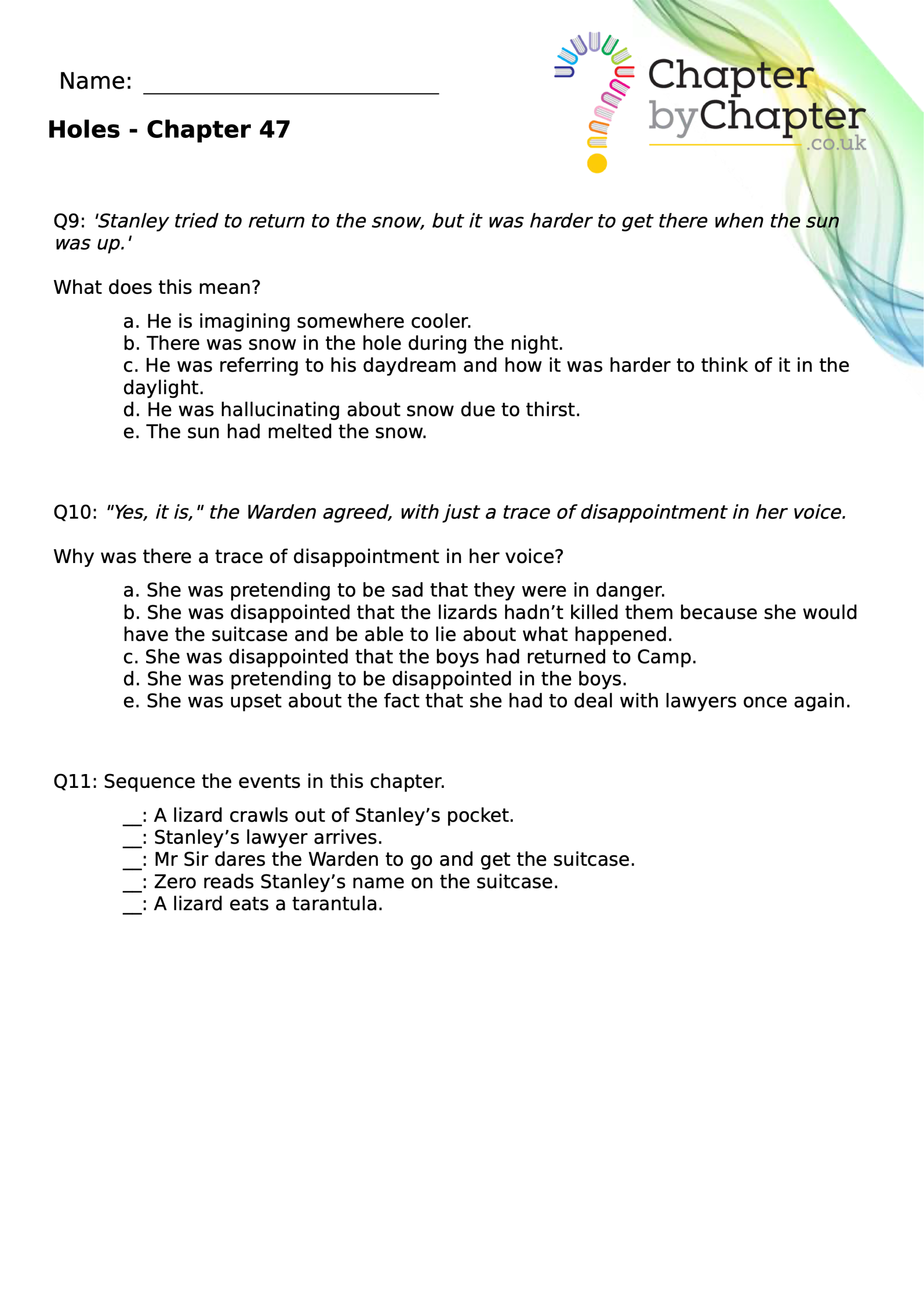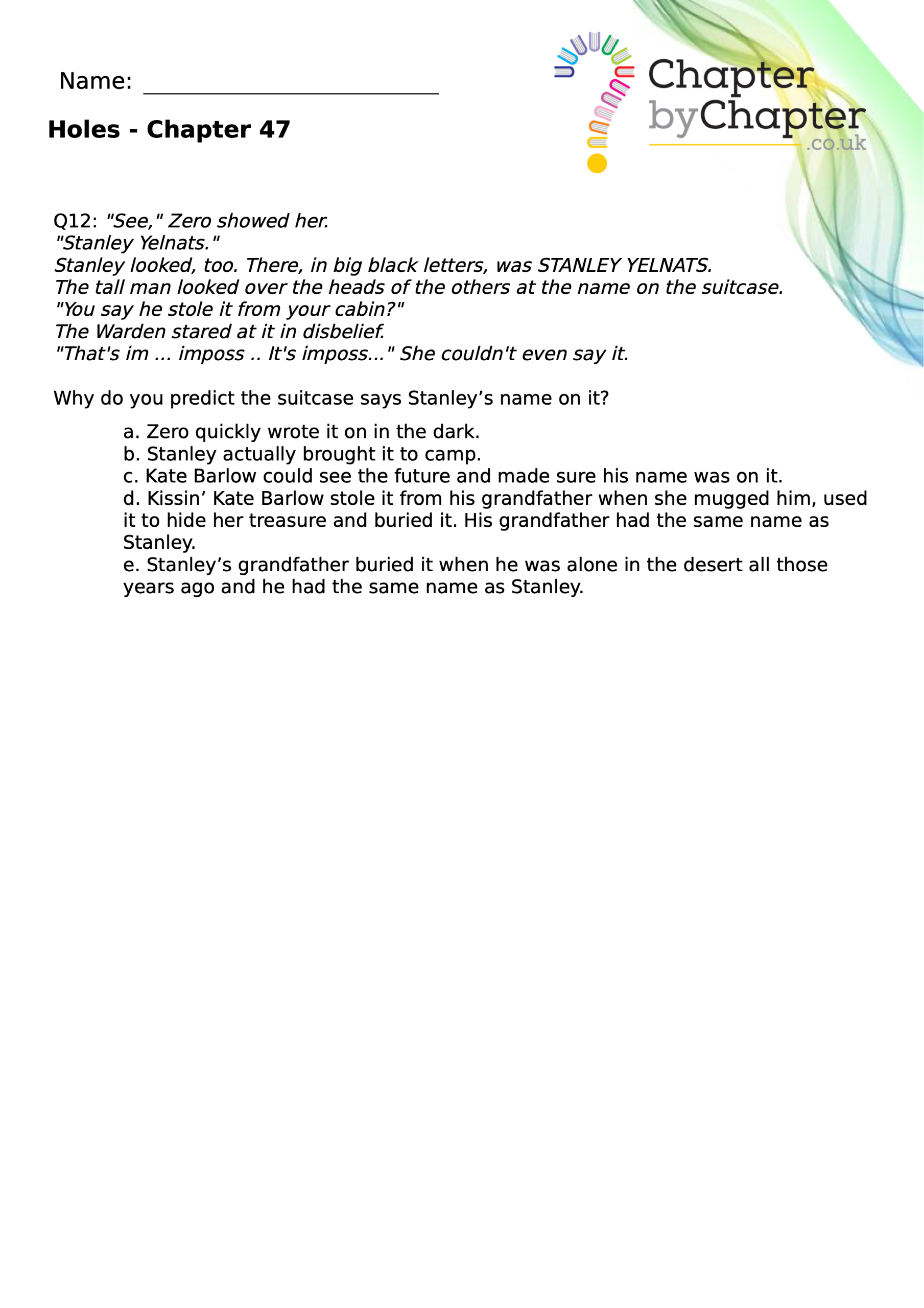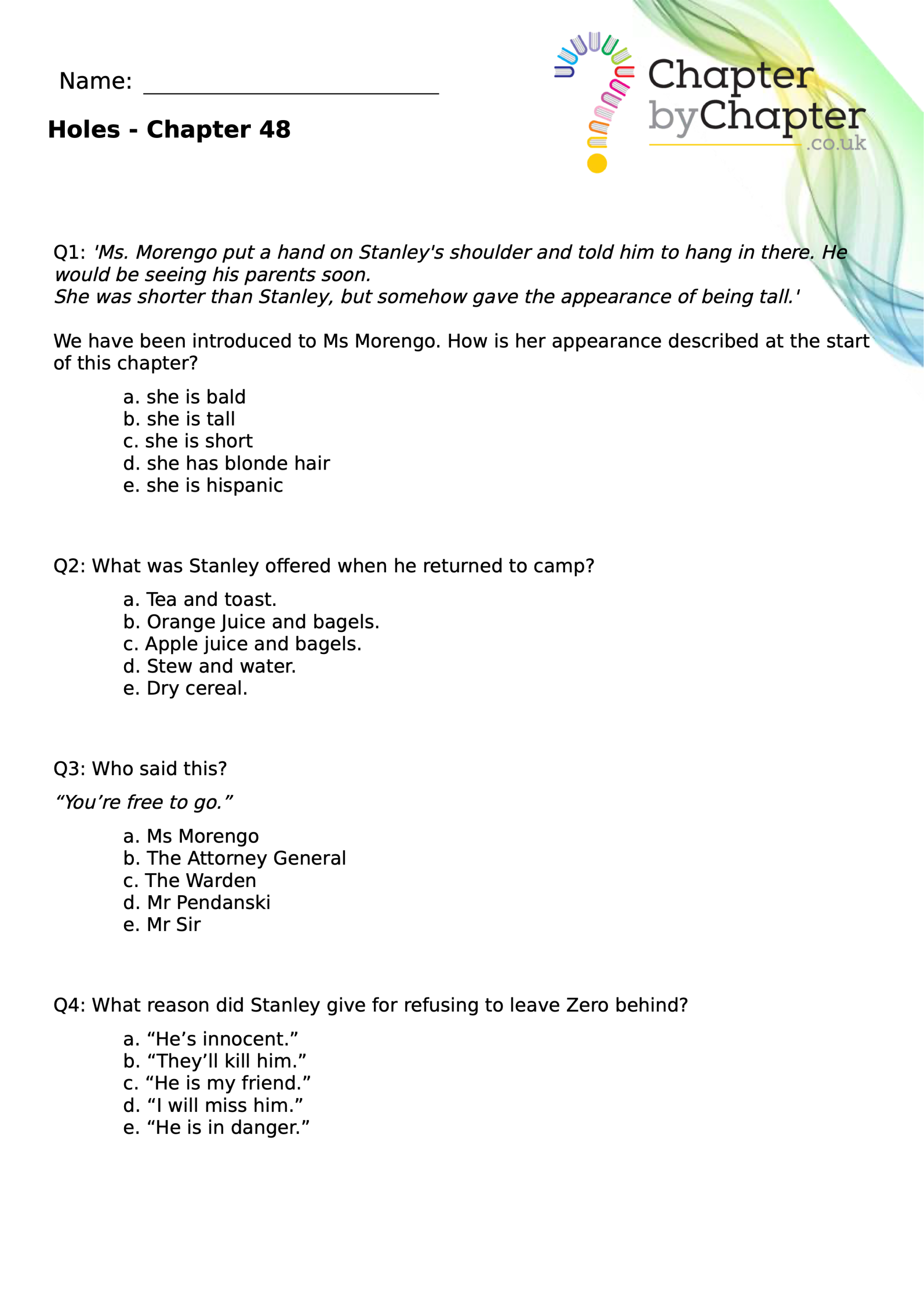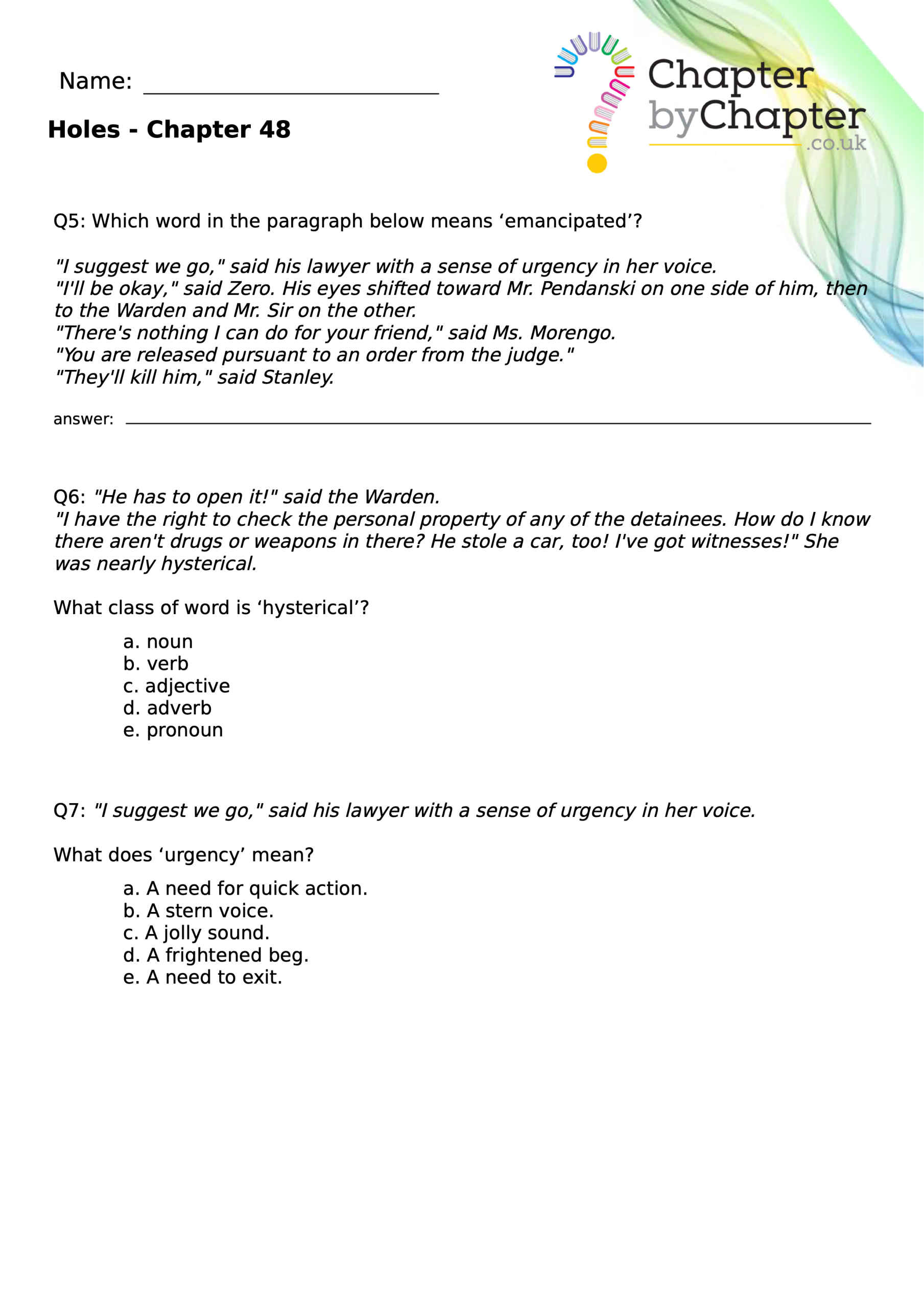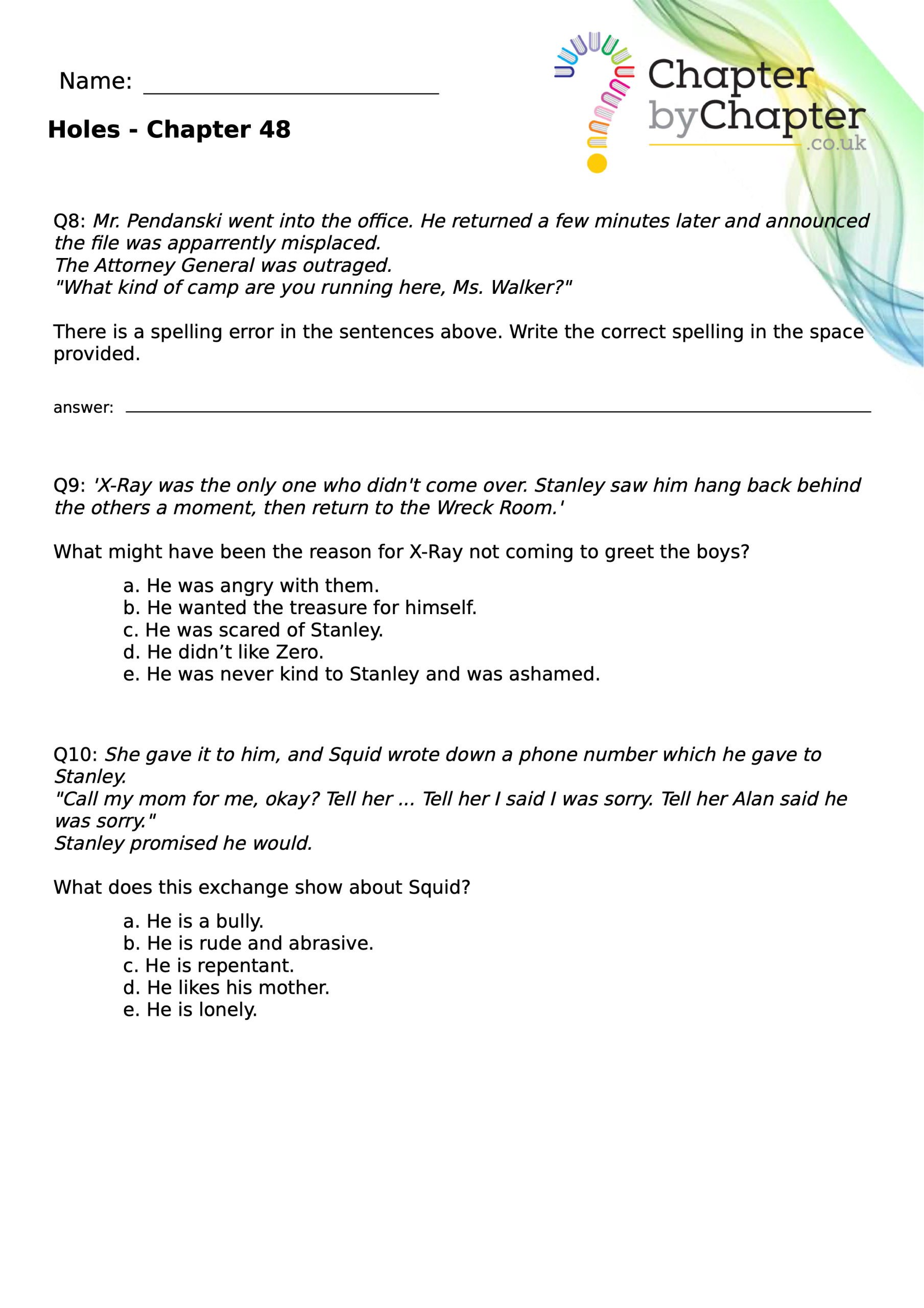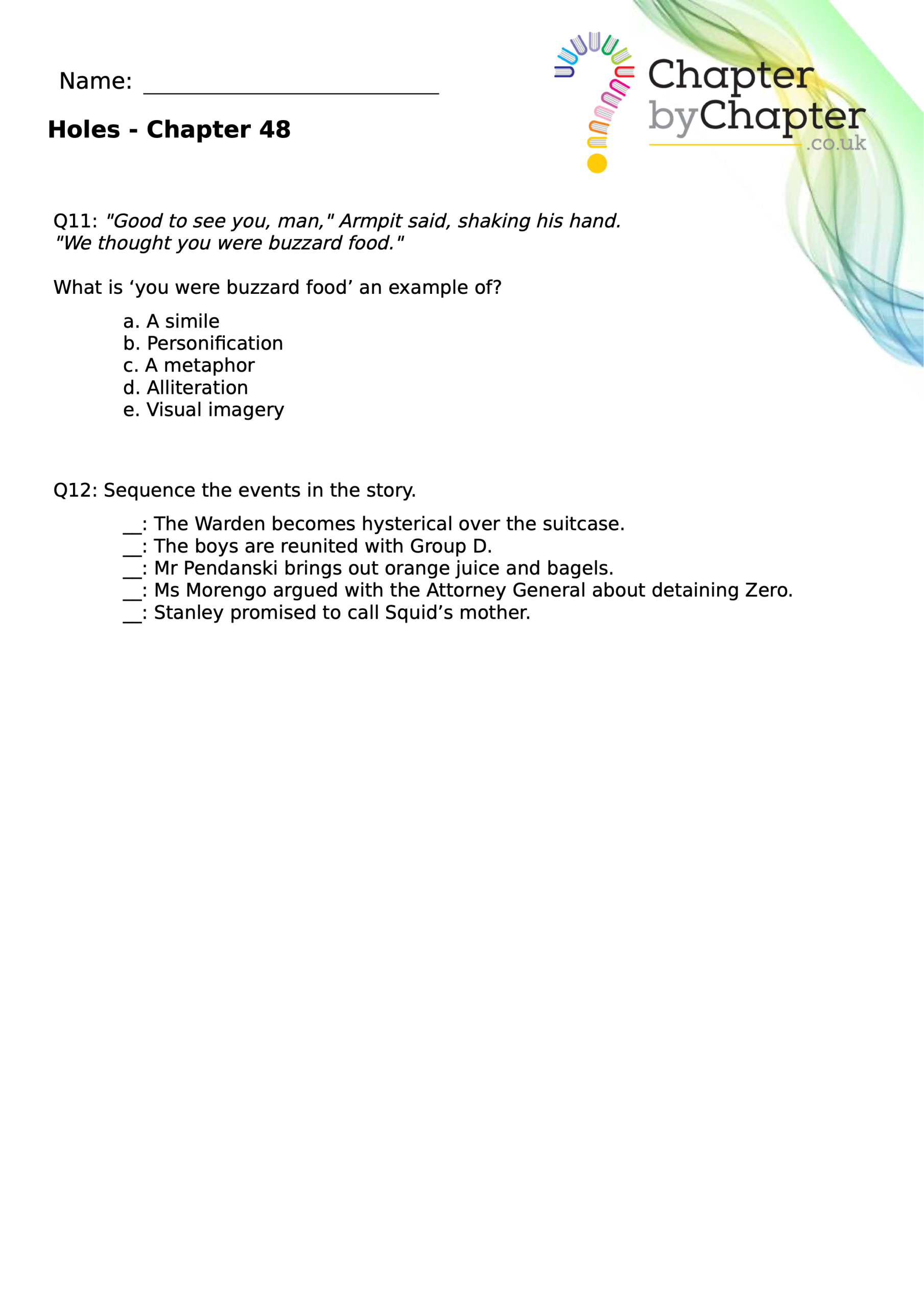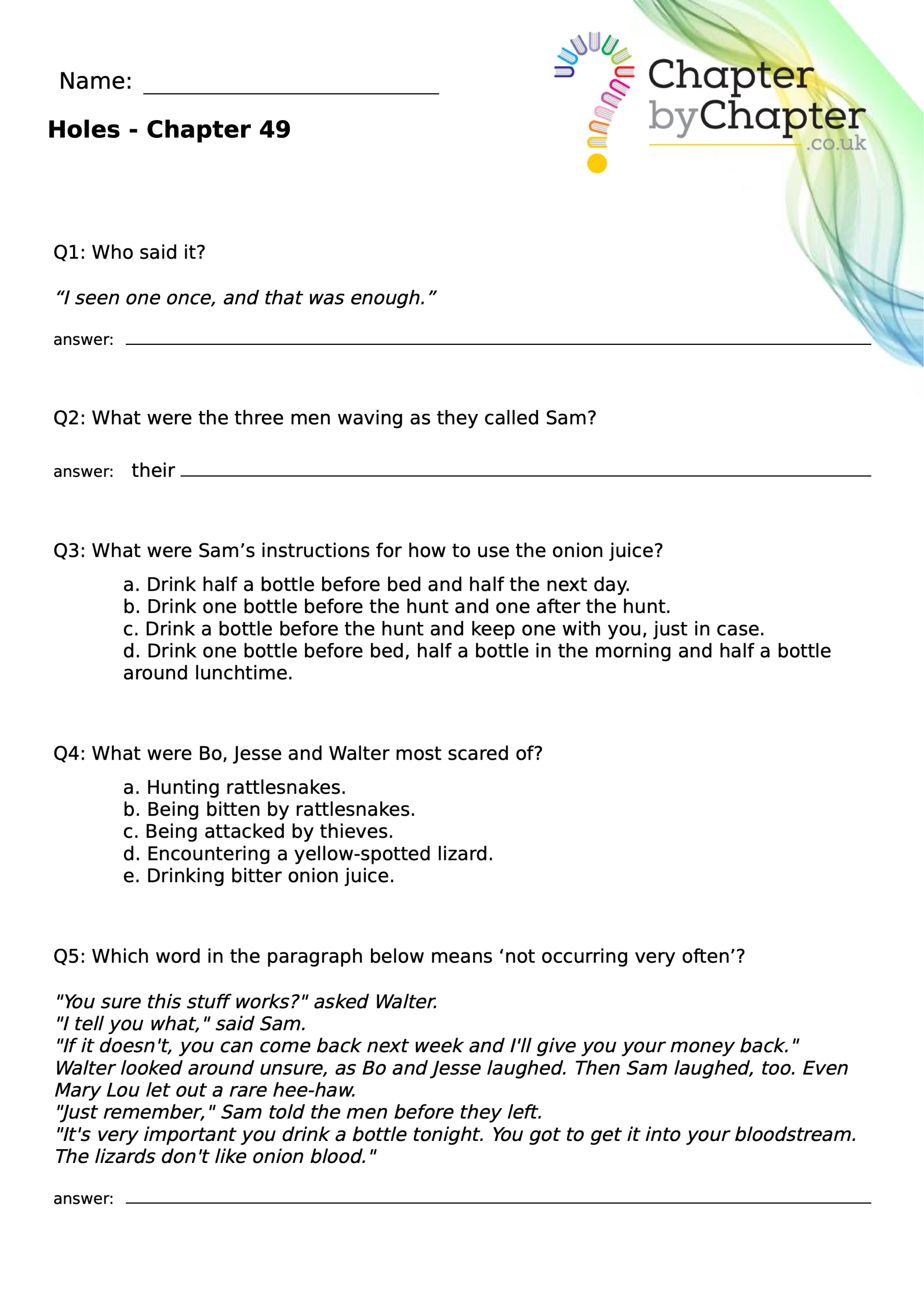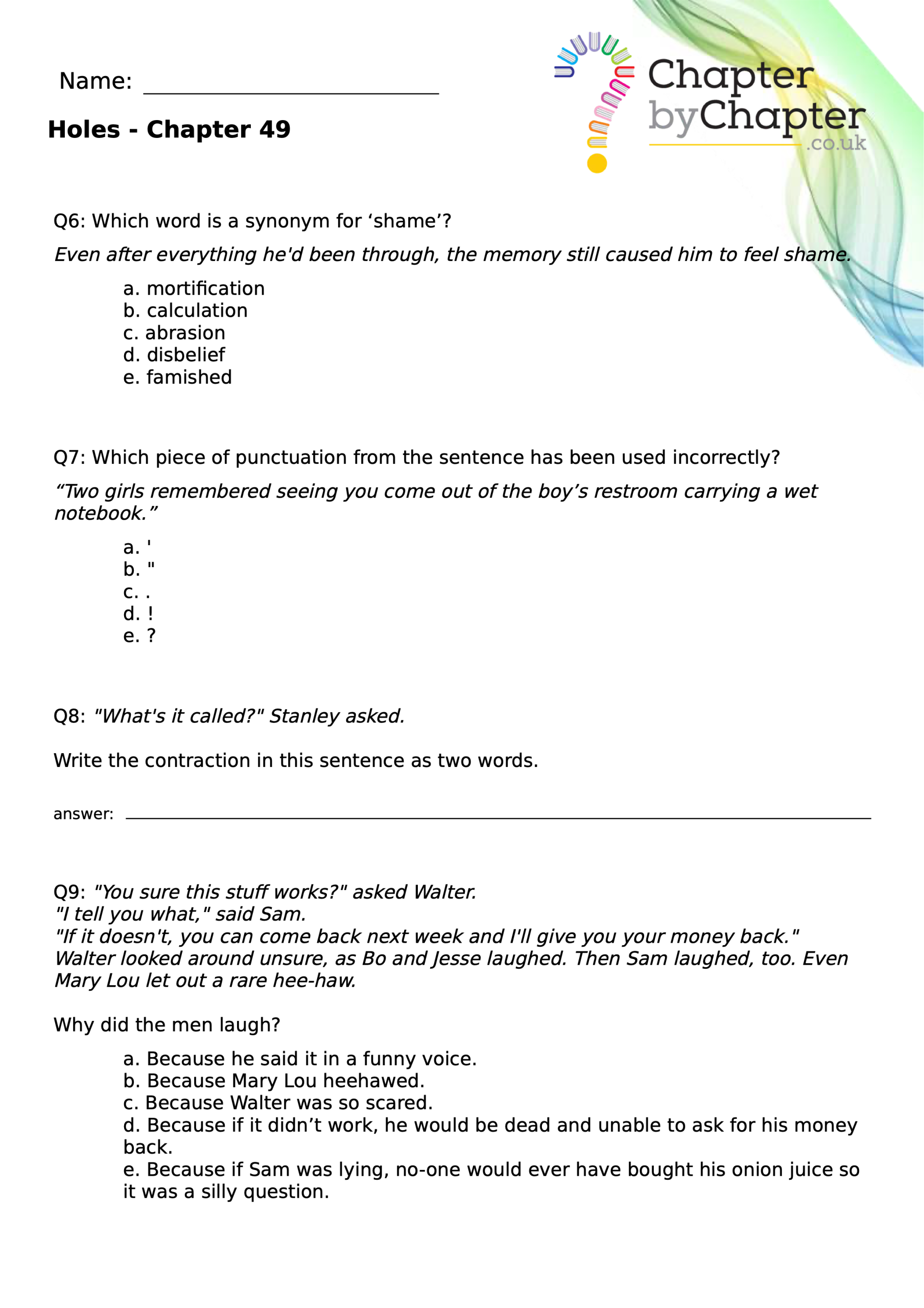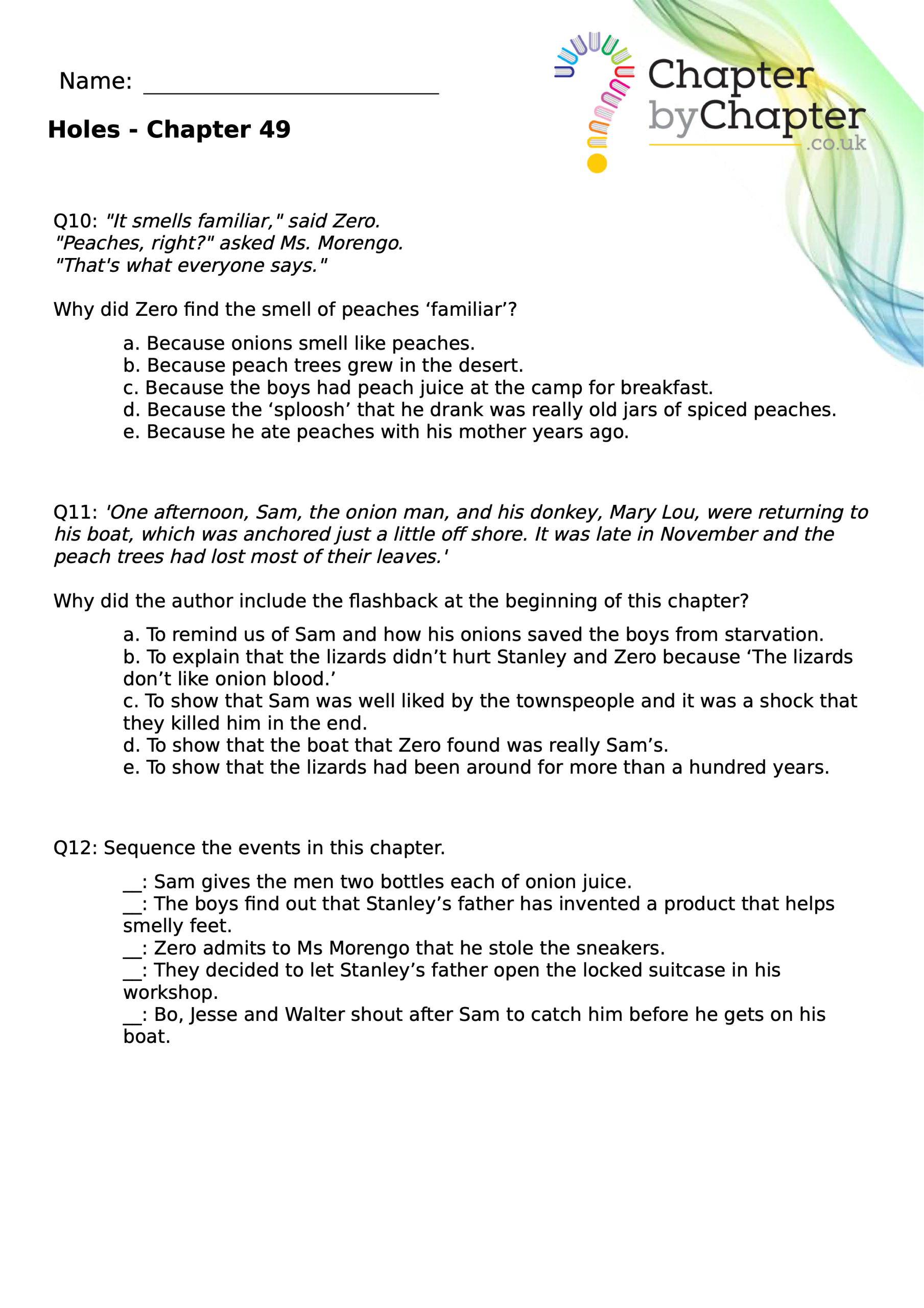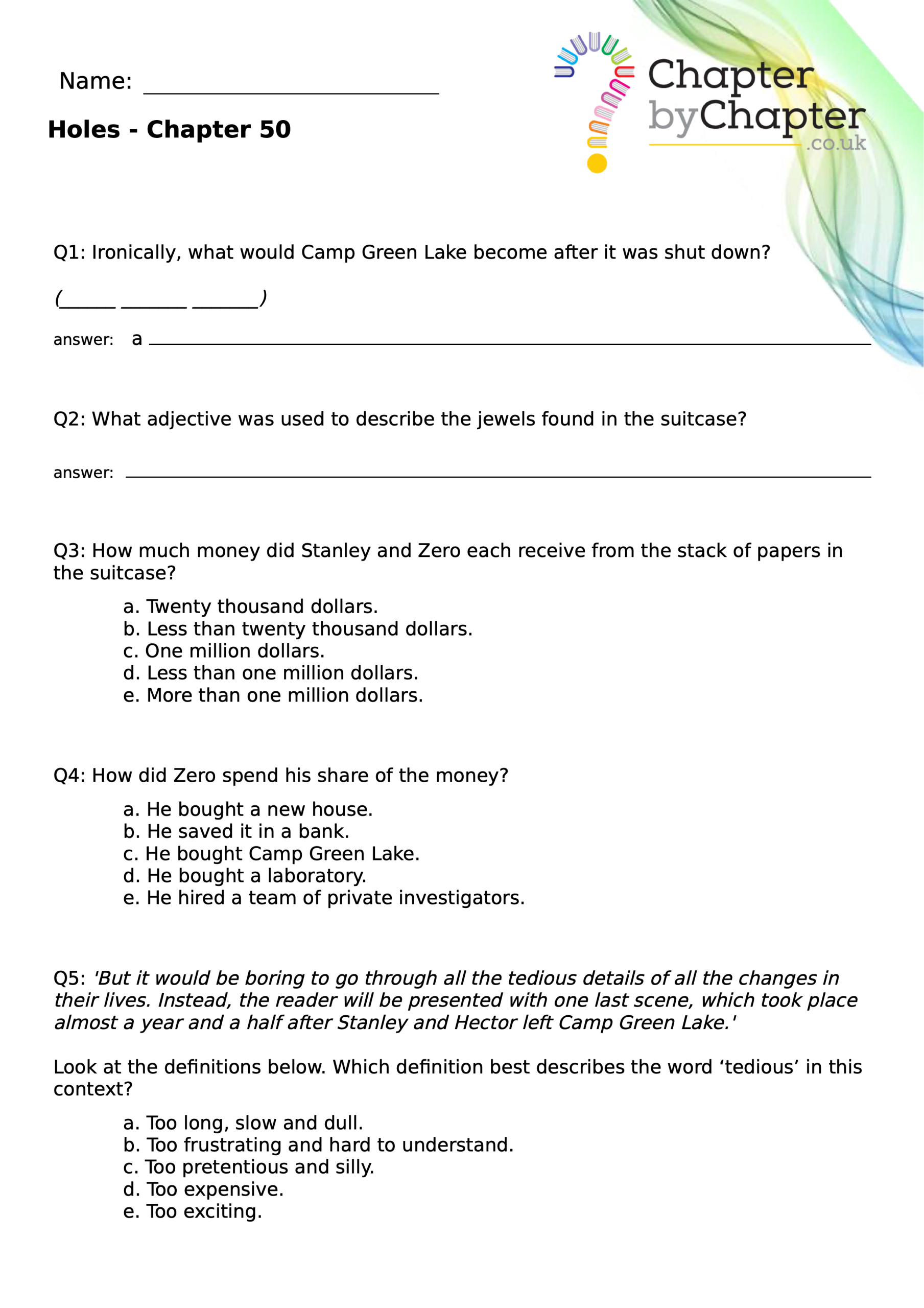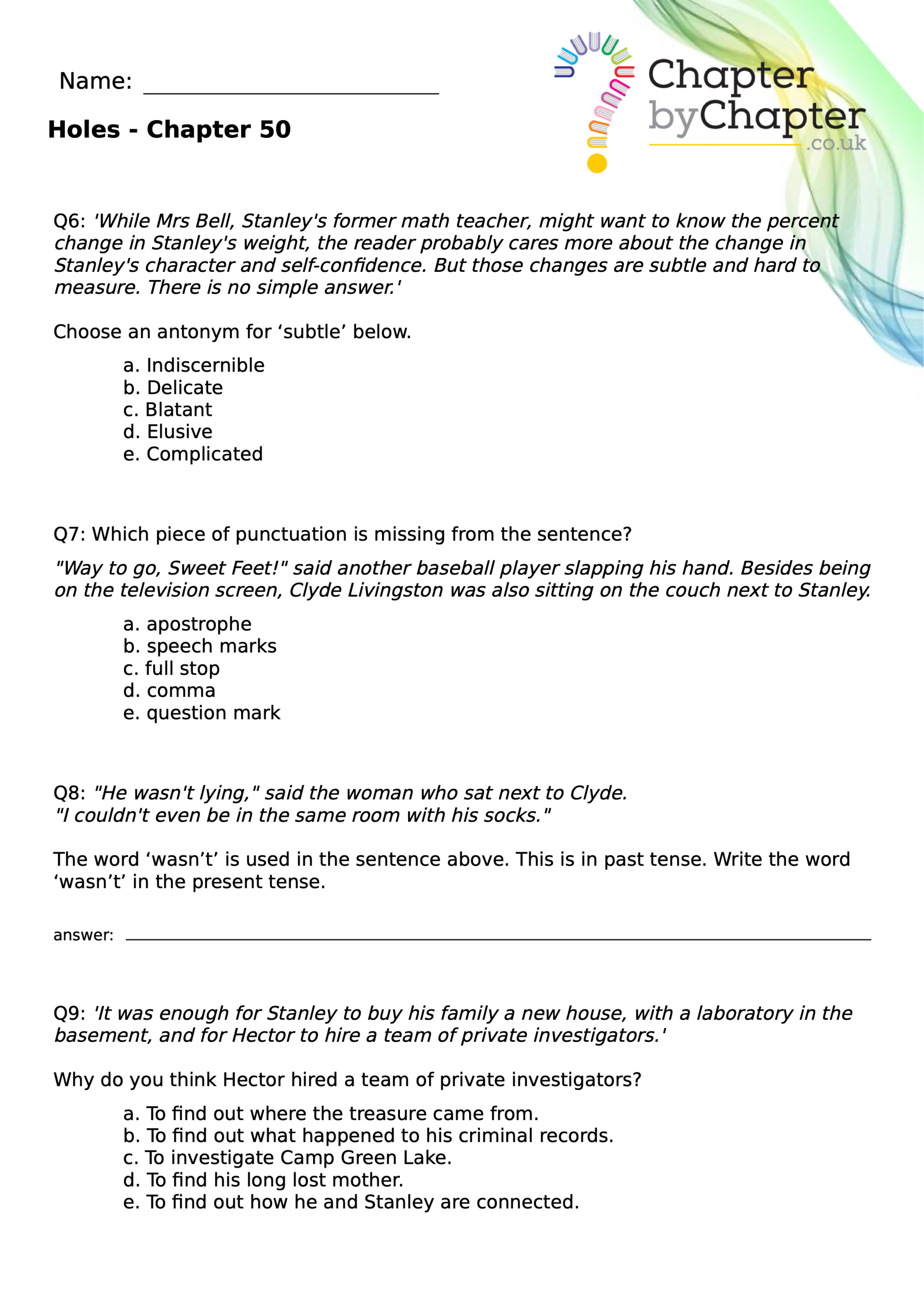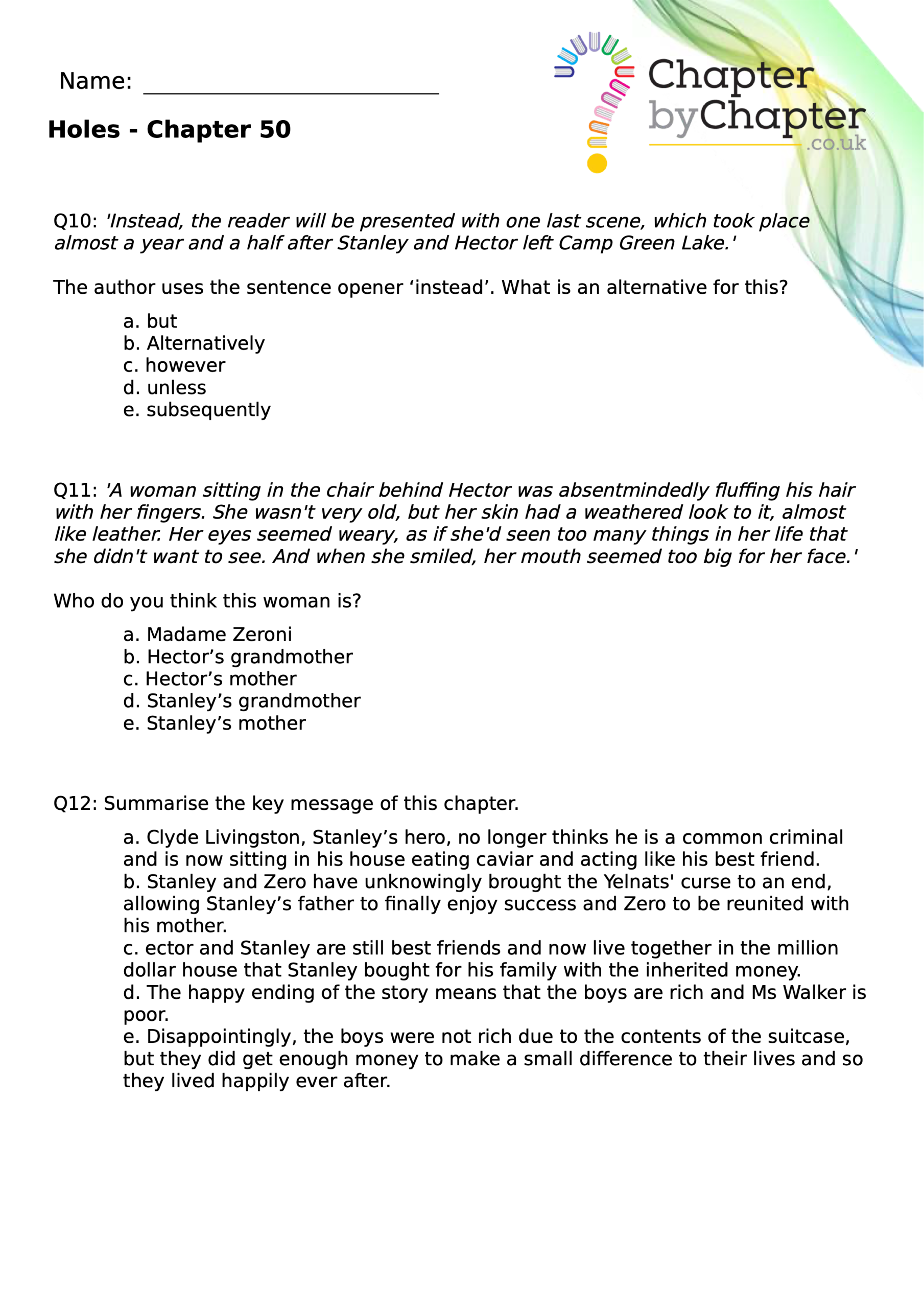Holes
Holes by Louis Sachar
“Holes” by Louis Sachar is a novel that intertwines three storylines, all connected by the mysterious curse of the Yelnats family.
The main plot revolves around Stanley Yelnats, who is unjustly sent to a juvenile detention center called Camp Green Lake after being falsely accused of stealing a pair of sneakers. At the camp, the boys are forced to dig holes in the dry lake bed under the guise of character-building, but there’s a hidden agenda.
Key themes in “Holes” include:
Fate and Destiny: The Yelnats family believes in a curse that has plagued them for generations. As the story unfolds, the characters’ destinies are revealed to be interconnected, challenging the idea of fate.
Friendship and Loyalty: Stanley forms strong bonds with his fellow campmates as they endure the hardships of Camp Green Lake together. These relationships become crucial to their survival and play a central role in the resolution of the story.
Injustice and Prejudice: Stanley’s unjust imprisonment sets the stage for exploring issues of injustice and the impact of societal prejudice. The narrative also delves into historical injustices, particularly relating to the character of Kissin’ Kate Barlow.
Family Legacy: The Yelnats family history and the curse provide a backdrop for exploring the idea of family legacy and how the actions of past generations can impact those in the present.
Survival: The harsh conditions at Camp Green Lake and the characters’ struggle to overcome adversity highlight themes of survival and resilience. The characters must navigate the challenges presented to them and find ways to persevere.
“Holes” is a well-crafted novel that weaves together these themes, providing readers with a compelling and thought-provoking story. The book has received critical acclaim for its engaging narrative, well-developed characters, and exploration of complex themes suitable for both young and adult readers.
In Holes we have created 50 question sets.
Each set consists of:
– 4 retrieval questions
– 4 SPAG questions
– 4 Deeper questions (authorial technique, inference, sequencing, summarising, similes, metaphors etc.)
How does our website work?
1. You will assign each child in your class the questions of a particular chapter.
2. They will login and complete the questions online.
3. You will view the ‘Results’ section and see how each child did.
Results
Green means that the child got the question right first time.
Orange means that the child got it right but it took a few attempts – a number will be displayed inside to show how many attempts.
Red means that the child didn’t get the question correct – a number will be inside the red box to show how many failed attempts.
Interpreting the Results
Select a range of chapter question sets in the results section and choose a child. Next you will be able to see all completed activities and look for patterns, areas of strength and areas for improvement.
Holes: Chapter 1 and 2
Sample Retrieval Question
In Chapter 1, a character called ‘the Warden’ is first mentioned. What two things are we told belong to the Warden?
A. The Camp and the hammock.
B. The Lake and the holes.
C. The two old oaks and the hammock.
D. The hammock and the shade.
E. The shade and the log cabin.
Sample Spelling Question
In the passage below, there is a word spelt incorrectly. Write the correct spelling of the word.
‘Here’s a good rule to remembar about rattlesnakes and scorpions: If you don’t bother them, they won’t bother you.’
This is our chosen list of questions for Chapter 1 and Chapter 2 of ‘Holes’. We have placed both together (something we don’t normally do) because the chapters are very small.
Your UKS2 class will:
– complete questions linked to characters such as the Warden
– think about descriptions of settings such as Camp Green Lake
– familiarise themselves with the life of a camper
– learn key vocabulary
– identify missing punctuation
– find synonyms
– find spelling errors
– make inferences
Holes: Chapter 3
Sample Retrieval Question
Who liked to say, “I learn from failure”?
A. Stanley
B. The driver
C. Stanley’s mother
D. Stanley’s father
E. The guard
Sample Sequencing Question
Sequence the events of Chapter 3.
A. Stanley remembers Mrs Bell teaching ratios.
B. Stanley smiled, remembering a family joke.
C. The bus drives past a telephone wire.
D. The bus hit a small bump and the guard sat up.
E. Stanley notices that he couldn’t see a lake and hardly anything was green.
Summary
In chapter 3, Stanley takes a bus to Camp Green Lake. There’s a guard with a gun on the bus, making Stanley feel nervous. He only has a small backpack with him, packed with basic stuff like a toothbrush and paper. He imagines the camp will be like a fancy holiday place for rich kids.
Even though Stanley tries to seem positive, he’s struggling with how people see him, especially because of his weight. Other kids and teachers make fun of him for it. He remembers a math class where he felt really embarrassed because he was much bigger than another kid. His family has a history of bad luck, starting with a story about a stolen pig from a Gypsy with one leg, which has been passed down through generations in a sad song.
The Yelnats family has faced a lot of challenges over the years, but they’ve always kept going. Each Stanley Yelnats has had their own problems. The first Stanley Yelnats was rich, but lost everything because of thieves. The most recent Stanley Yelnats, Stanley IV, struggles because his dad’s inventions don’t work, and they live in a poor area surrounded by the smell of burning rubber and stinky shoes. When Stanley arrives at Camp Green Lake, he realises it’s not what he expected. Instead of a beautiful green place, it’s just desert. This sets the stage for Stanley’s journey to figure out who he is in this tough environment.
Chapter 4
Sample Retrieval Question
What were the bus driver’s last words to Stanley?
A. “Well, duh!”
B. “Thanks for the ride.”
C. “Goodbye.”
D. “That’s a lot of sunflower seeds.”
E. “Be careful.”
Sample Antonyms Question
Replace ‘long, miserable’ with antonyms of these two words. Select from the options below.
‘Stanley thought about the long, miserable bus ride and felt a little sorry for the guard and the bus driver.’
A. quick, depressing
B. elongated, saddening
C. gruelling, sorrowful
D. short, cheerful
E. happy, fun
Summary
In Chapter 4 we learn that Stanley Yelnats arrives at Camp Green Lake, feeling dazed and dehydrated after an eight-hour bus ride. The barren and desolate camp features few run-down buildings, tents, and only two trees in sight. A guard leads Stanley to a small, air-conditioned building where he meets Mr. Sir, a man with a cowboy hat and a tattoo of a rattlesnake. Mr. Sir informs Stanley about the camp’s rules and assigns him work clothes, explaining that Stanley must dig a five-foot-deep hole each day to avoid the hottest part of the day.
Stanley is instructed to address the man as “Mr. Sir” and learns that the camp lacks guard towers or fences, making escape futile due to the vast desert and lack of water. Mr. Sir emphasizes the harsh conditions and the necessity of digging, warning Stanley that he will be thirsty for the next eighteen months. Stanley gets a glimpse of the hard life at Camp Green Lake as he sees other kids dragging themselves with shovels, and he begins to grasp the reality of his new environment.
Chapter 5
Summary
In Chapter 5 your Year 5 / Year 6 Class will find out that Stanley is assigned to D tent at Camp Green Lake, where Mr. Pendanski, his counsellor, greets him and explains the importance of respecting the Warden above all else. Mr. Pendanski reassures Stanley that despite past mistakes, he is not a bad kid and offers support to help him turn his life around. Stanley meets two boys, Rex (X-Ray) and Alan (Squid), who are weary and covered in sweat. He learns that his cot was previously used by someone named Barf Bag, now hospitalised.
Mr. Pendanski introduces Stanley to the rest of the boys in the tent: José (Magnet), Theodore (Armpit), Ricky (Zigzag), and Zero, who is often teased for his perceived lack of intelligence. Despite Mr. Pendanski’s preference for using their real names, the boys stick to their nicknames. After the introductions, Stanley learns the location of the water spigot from Theodore, who insists on being called Armpit. Stanley is puzzled by the unusual nicknames but feels a bit better about his own situation.
Chapter 6
Summary
In Chapter 6 Stanley endures his first day at Camp Green Lake, struggling with a brief, cold shower, tasteless dinner, and a smelly, uncomfortable cot. He recalls how he ended up at the camp: accused of stealing Clyde “Sweet Feet” Livingston’s sneakers, which had fallen on him while walking home. Though innocent, Stanley’s truth was dismissed, and he was sent to the camp for discipline. Reflecting on his trial, he realises he could have lied but blames his predicament on his “no-good-dirty-rotten-pig-stealing-great-great-grandfather.” As he tries to sleep, Stanley contemplates the injustice and harshness of his new reality.
Chapter 7
This is an incredibly long chapter for your KS2 class to read in one sitting, brace yourselves for the summary…
Summary
Early on in the chapter, your class will learn that Stanley struggled to dig his first hole at Camp Green Lake, battling the hard earth and painful blisters on his hands. He noticed Zero efficiently digging nearby, already making significant progress. For breakfast, they had lukewarm cereal and orange juice before being marched to the lakebed. The boys were assigned areas to dig and were told to report any interesting finds. Stanley wondered about the purpose of the digging and learned it was supposedly to build character, though any valuable discoveries could earn a day off.
He initially struggled, but Stanley eventually made headway by targeting a crack in the ground. As he dug deeper, the sun intensified, and his hands blistered painfully. Mr. Sir and Mr. Pendanski periodically checked on the boys, offering minimal encouragement. The story then transitions to a flashback about Stanley’s great-great-grandfather, Elya Yelnats, who sought help from Madame Zeroni to win Myra Menke’s hand in marriage. Despite Madame Zeroni’s advice, Elya pursued Myra, only to be disappointed by her shallow nature.
Elya emigrated to America, falling in love with Sarah Miller and having a child named Stanley. Meanwhile, Stanley at the camp continued to struggle but felt a sense of accomplishment as his hole neared completion. Despite physical exhaustion and pain, he managed to finish his first hole, feeling a small but significant pride in his achievement.
Chapter 8 and 9
After reading Chapters 8 and 9, you can print this comprehension for your KS2 class to complete.
These packs can be used as mini assessments to check understanding of the story and concepts, and also their skills in particular areas, all within story context.
Chapter 10
This comprehension is to be completed once your class have read Chapter 10 of Holes.
Chapter 11
This comprehension resource includes 12 questions as is linked to Chapter 11 of Holes.
Did you know?
Our questions sets for each chapter of the book get progressively more challenging as the children progress. For example…
Questions 1-4 are generally retrieval style questions.
Questions 5-8 focus on SPAG.
Questions 9-12 focus on all content within the chapter and also touch on areas such as summarising, authorial technique, sequencing the events, predictions and more challenging literacy concepts to challenge all children.
Chapter 12
This question set is to be completed after reading Chapter 12 of the popular KS2 book Holes by Louis Sachar.
High-quality comprehension activities should align with key objectives from the KS2 literacy curriculum.
When exploring a rich text like Holes by Louis Sachar, Year 5 and Year 6 pupils should be challenged beyond simple recall, with questions that also assess their understanding of spelling, punctuation, and grammar (SPAG) in the context of the story.
Chapter 13
This resource is linked to Chapter 13 of Holes and is aimed at UKS2 level.
Reading a chapter from Holes during guided reading encourages pupils to think independently and engage with the text on a deeper level.
After reading, they can complete comprehension question sets that focus on summarising, retrieval, and inference — all essential reading skills that contribute to Year 5 and Year 6 academic development and exam readiness.
Chapter 14
This comprehension is linked to Chapter 14 of the book.
Our KS2 reading comprehensions for Holes offer a well-balanced mix of multiple choice and single answer questions.
This approach keeps your Year 5 and Year 6 learners engaged while helping them target specific comprehension objectives.
These skills are reinforced again seven chapters later, allowing for meaningful progression and review.
Chapter 15
Our comprehension questions are printable and this set is linked to Chapters 15 of Holes.
Did you know?
Our chapter resources are easily integrated with your reading planning and can be used for classwork and homework.
Chapter 16
Our question set linked to Chapters 16 of Holes.
This novel study is linked to Year 5 and Year 6 and covers a wide range of reading skills covered in the literacy curriculum.
Chapter 17 and 18
After reading Chapters 17 and 18, you can print this worksheet for your class to complete.
These packs can be used as mini assessments to not only check understanding of the story and concepts, but also their skills in particular areas.
Chapter 19
This comprehension is linked to Chapter 19 of the book.
Adding comprehension tasks to your weekly literacy sessions is straightforward with chapter-specific resources based on Holes.
These help teachers assess pupils’ understanding clearly and identify areas where further support or extension is needed.
Chapter 20
This comprehension is linked to Chapter 20 of the book.
Did you know?
Each comprehension set for Holes contains 12 carefully structured questions. The first 4 focus on retrieval from the opening pages of the chapter. The next 4 assess SPAG skills. The final 4 include higher-level challenges involving sequencing, inference, summarising, and examining authorial techniques — all rooted in the events of Holes.
Chapter 21
This comprehension is linked to Chapter 21 of the book.
KS2 learners, especially those in Year 5 and Year 6, benefit greatly from engaging with high-quality literature like Holes, a story that naturally sparks curiosity and discussion.
Our comprehension resources help pupils explore the text through a combination of retrieval and SPAG-based questions, building strong foundations in both reading and writing.
Chapter 22
This comprehension is linked to Chapter 22 of the book.
Did you know?
Our multiple choice summarising questions draw on the key events and details from each chapter of Holes, helping pupils understand narrative structure and improve information retention.
Chapter 23
This comprehension is linked to Chapter 23 of the book.
How to use our resources
To get the most from our Holes comprehension resources, begin by giving pupils access to the chapter — via a printed copy, digital platform like Seesaw, or the physical book — followed by the comprehension questions designed to deepen their understanding.
Chapter 24
This comprehension is linked to Chapter 24 of the book.
Did you know?
Our Holes comprehension resources fit easily into your reading scheme. They are versatile — suitable for classwork or homework — and are fully aligned with national curriculum requirements.
Chapter 25
This comprehension is linked to Chapter 25 of the book.
Effective reading comprehension in KS2 is driven by well-crafted questions.
Our Holes-based resources use a mix of multiple choice and single answer questions that support the development of key skills such as retrieval, inference, summarising, and sequencing.
These question types offer meaningful challenge for Year 5 and Year 6 learners.
Chapter 26
This comprehension is linked to Chapter 26 of the book.
KS2 teachers know how vital it is to have engaging and structured reading materials. With Holes, pupils in Year 5 and Year 6 are introduced to complex themes and layered storytelling, and thus need the same quality of questions to accompany the text.
Our comprehension questions enhance this reading experience while supporting curriculum goals and deepening understanding of key literary concepts.
Chapter 27
This comprehension is linked to Chapter 27 of the book.
Using Holes in guided reading allows pupils to explore complex characters like Stanley Yelnats and Zero.
Our comprehension tasks encourage pupils to analyse character motivations, make inferences about behaviour, and consider how these actions impact the storyline — all while aligning with Year 5 and Year 6 reading objectives.
Chapter 28
This comprehension is linked to Chapter 28 of the book.
Themes of friendship, justice, and resilience run throughout Holes, providing excellent opportunities for discussion and reflection.
Our comprehension resources include targeted questions that help pupils identify these themes and link them to specific text evidence, developing both inference and summarising skills.
Chapter 29
This comprehension is linked to Chapter 29 of the book.
Vocabulary development is another key element in our Holes comprehension sets. Pupils are encouraged to explore rich language choices used by Louis Sachar, identify unfamiliar words in context, and apply these in their own writing — a valuable SPAG-linked skill for KS2 learners.
Chapter 30
This comprehension is linked to Chapter 30 of the book.
Our chapter-based questions for Holes help pupils track the story’s non-linear timeline. Through sequencing activities and authorial technique questions, pupils are challenged to understand flashbacks, foreshadowing, and dual narratives — supporting higher-order comprehension skills in Year 5 and Year 6.
Chapter 31
This comprehension is linked to Chapter 31 of the book.
With Holes, pupils are introduced to moral dilemmas and ethical decisions made by characters.
Our comprehension questions prompt pupils to think critically, evaluate character choices, and support their opinions with evidence from the text — ideal for developing inference and reasoning.
Chapter 32
This comprehension is linked to Chapter 32 of the book.
Our comprehension packs are ideal for mixed-ability classes.
With a blend of retrieval and deeper-thinking questions, you can scaffold or extend learning based on individual pupil needs, all while staying aligned with the KS2 literacy curriculum.
Chapter 33 and 34
This comprehension is linked to Chapter 33 and 34 of the book.
Efficient comprehension in KS2 is driven by well-designed questions. Our Holes-based resources use a mix of multiple choice and single answer questions that assist the improvement of key skills such as retrieval, inference, summarising, and sequencing.
These question types offer meaningful challenge for Year 5 and Year 6 learners.
Chapter 35
This comprehension is linked to Chapter 35 of the book.
KS2 learners, especially those in Year 5 and Year 6, benefit from engaging with high-quality literature like Holes, a story that naturally kindles interest and conversation.
Our comprehension resources help pupils explore the text through a combination of retrieval and SPAG-based questions, building resilient bases in both reading and writing.
Chapter 36
This comprehension is linked to Chapter 36 of the book.
The structure of our Holes comprehension questions helps pupils build confidence over time.
By revisiting key skills like retrieval and SPAG every chapter, and reintroducing more challenging inference or sequencing tasks as the question sets progress, learners in Year 5 and Year 6 grow in both accuracy, understanding and independence when reading.
Chapter 37
This comprehension is linked to Chapter 37 of the book.
High-quality comprehension questions based on Holes encourage pupils to explore not just what happens in the story, but how Louis Sachar uses language to build atmosphere and mood.
Year 5 and Year 6 learners can practice identifying descriptive techniques alongside SPAG skills.
Chapter 38
This comprehension is linked to Chapter 38 of the book.
Reading chapters of Holes during guided sessions promotes active thinking, as pupils consider why characters make certain decisions.
Following reading, our comprehension sets prompt summarising, retrieval, and inference, helping pupils prepare confidently for Year 5 and Year 6 assessments.
Chapter 39
This question set is linked to Chapter 39.
Our carefully designed Holes comprehension questions mix multiple choice and single answer formats, allowing Year 5 and Year 6 pupils to engage deeply with the text while practising key curriculum skills, with opportunities to revisit and reinforce understanding.
Chapter 40
This comprehension is linked to Chapter 40 of Holes.
Embedding Holes comprehension questions into weekly literacy lessons is simple and effective. Our chapter-based resources help teachers monitor pupil progress clearly, making it easy to identify strengths and areas needing improvement.
Did you know?
Each Holes chapter comprehension set features 12 questions — the first 4 test retrieval skills, the next 4 assess SPAG in context, and the last 4 challenge pupils with inference, sequencing, and authorial technique questions.
Chapter 41
This resource is affiliated with Chapter 41 of the book.
How to use our Holes resources
Provide pupils with a printed or digital copy of the chapter from Holes, then have them complete the associated comprehension questions to reinforce understanding and support literacy development.
Did you know?
Our multiple choice summarising questions in the Holes comprehension packs highlight key plot points and events, helping pupils solidify their grasp of narrative structure and sequence.
Chapter 42
This next question set is linked to Chapter 42 of Holes.
Did you know?
Our Holes comprehension questions are structured to complement your reading scheme, following a 7-chapter rotation. They’re flexible, suitable for homework or classroom use, and mapped closely to national curriculum standards.
Save time marking!
Try our online Holes question sets for automatic grading and real-time pupil feedback, reducing teacher workload while keeping students engaged.
Chapter 43
This printable resource is correlated with Chapter 43 of the book Holes.
Effective KS2 comprehension depends on asking diverse question types.
Our Holes comprehension sets combine multiple choice and single answer questions to give Year 5 and Year 6 pupils practice with retrieval, inference, summarising, and sequencing — all vital for curriculum success.
Chapter 44
This comprehension is linked to Chapter 44 of the book.
KS2 teachers recognise the value of well-designed reading materials like Holes that engage pupils and build core comprehension skills.
Our comprehension questions support both guided and independent reading, reinforcing curriculum objectives while deepening pupils’ understanding of Sachar’s novel.
Chapter 45 & 46
This next question set is affiliated with Chapter 45 and Chapter 46 of the book Holes.
When using Holes for comprehension, it’s important to include questions that meet KS2 literacy objectives.
For Year 5 and Year 6 pupils, this means questions that not only check understanding but also assess spelling, punctuation, and grammar within the context of the novel.
Chapter 47
This resource is linked to Chapter 47 of the book.
Encouraging pupils to read chapters of Holes during guided reading fosters independent thinking and deeper analysis.
Following the reading, students can answer comprehension questions focused on summarising, retrieval, and inference, which are essential skills for Year 5 and Year 6.
Chapter 48
This next comprehension is linked to Chapter 48 of the book.
Our Holes-based KS2 reading comprehensions combine multiple choice and single answer questions, engaging Year 5 and Year 6 pupils in a variety of question types.
These are designed to focus on specific skills and revisit key ideas seven chapters later to reinforce learning.
Chapter 49
This next question set is linked to Chapter 49 of the book Holes.
Adding comprehension tasks linked to Holes into weekly literacy lessons is straightforward. With clear, chapter-based resources, teachers can easily identify pupils’ comprehension levels and target areas that need development.
Did you know?
Each Holes comprehension set contains 12 questions: the first 4 focus on retrieving information from the chapter, the next 4 assess spelling, punctuation, and grammar, and the last 4 explore deeper thinking skills like inference and summarising.
Chapter 50
The final question set is affiliated with Chapter 50 of the book Holes.
Strong reading comprehension at KS2 depends on asking varied and purposeful questions. Our Holes comprehension resources use both multiple choice and single answer formats to help Year 5 and Year 6 pupils practise retrieval, inference, sequencing, and summarising.
Did you know?
Our summarising questions in the Holes comprehension packs are multiple choice and focus on identifying main events or key details, which helps pupils better understand story structure and retain information.

